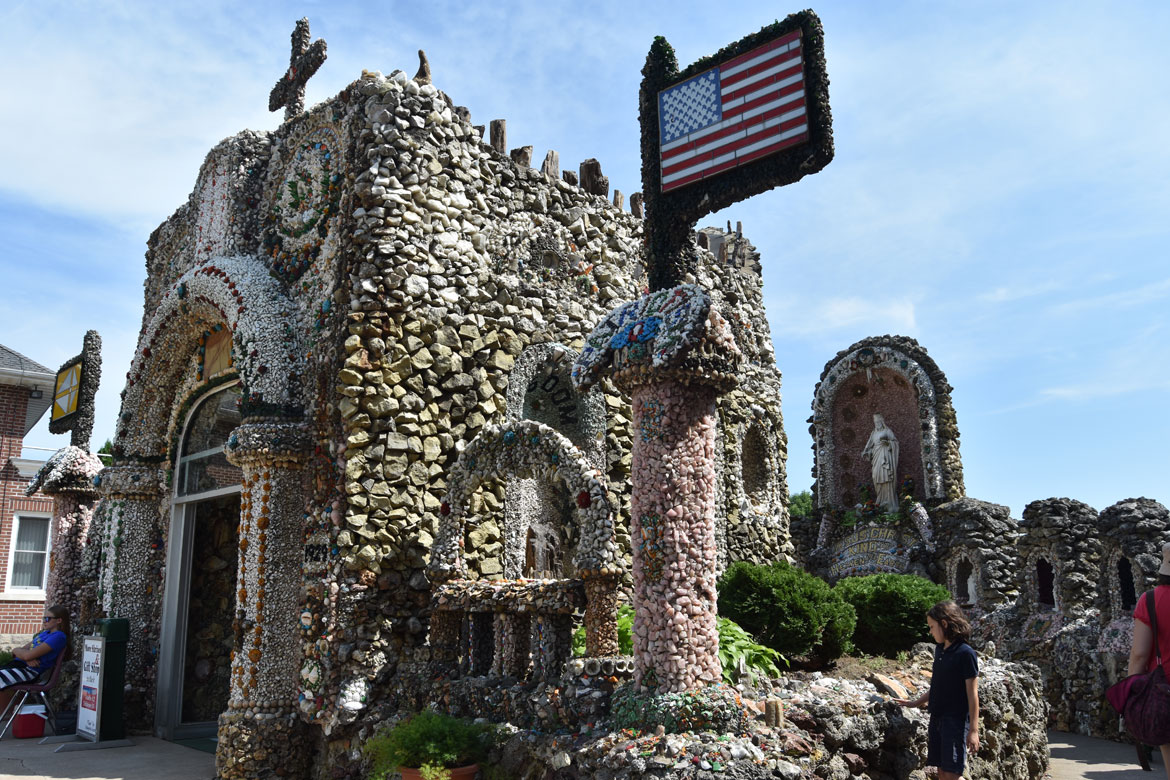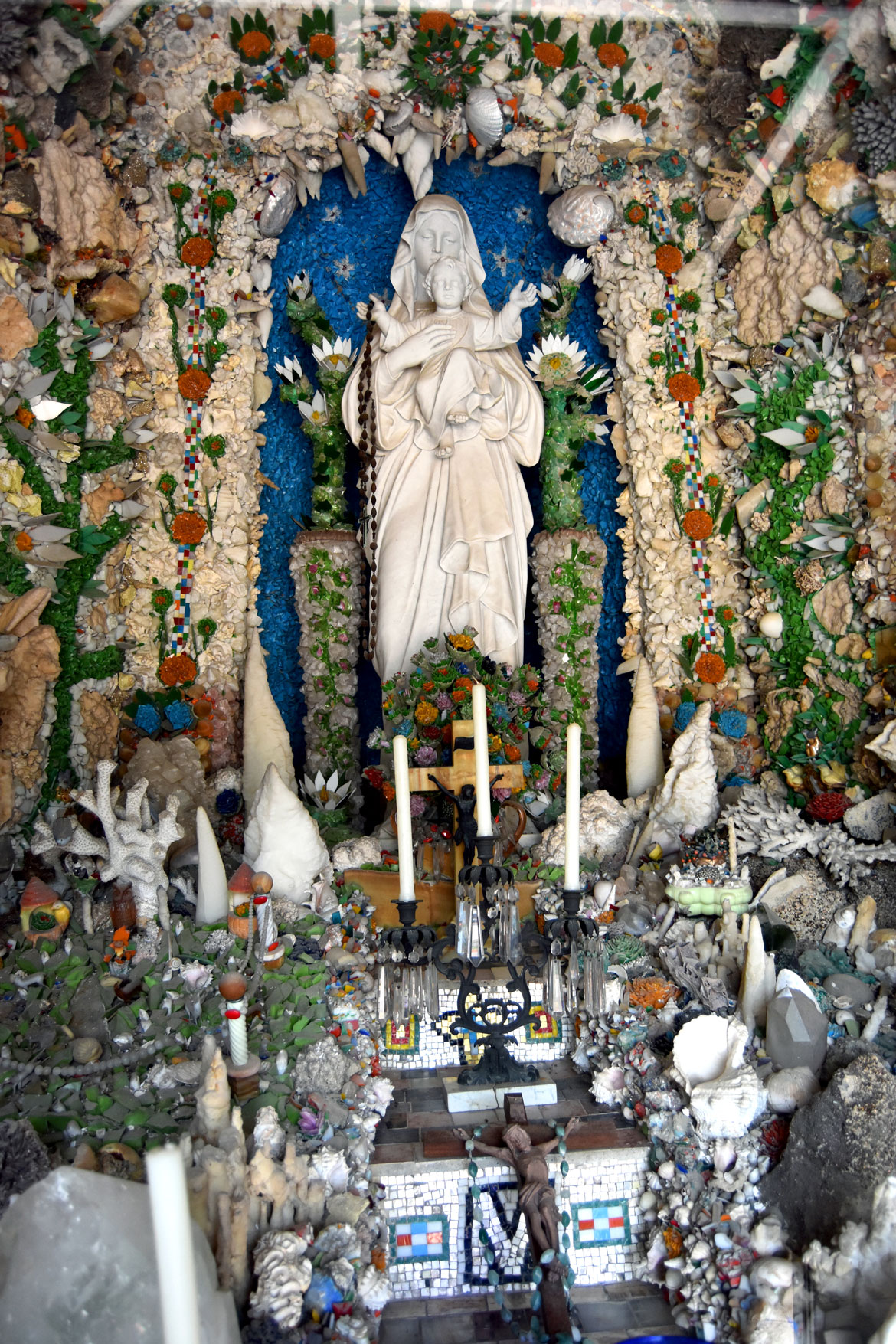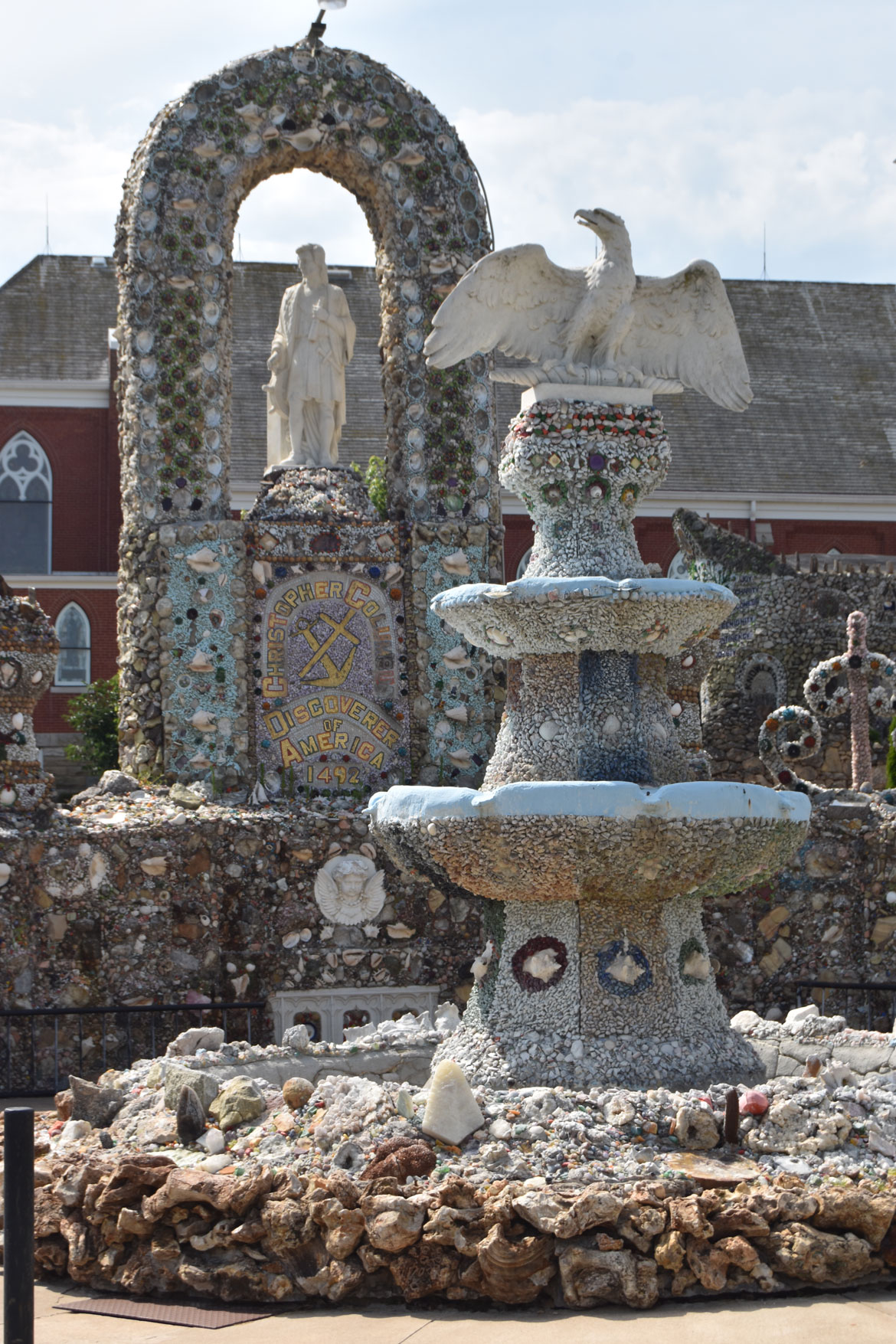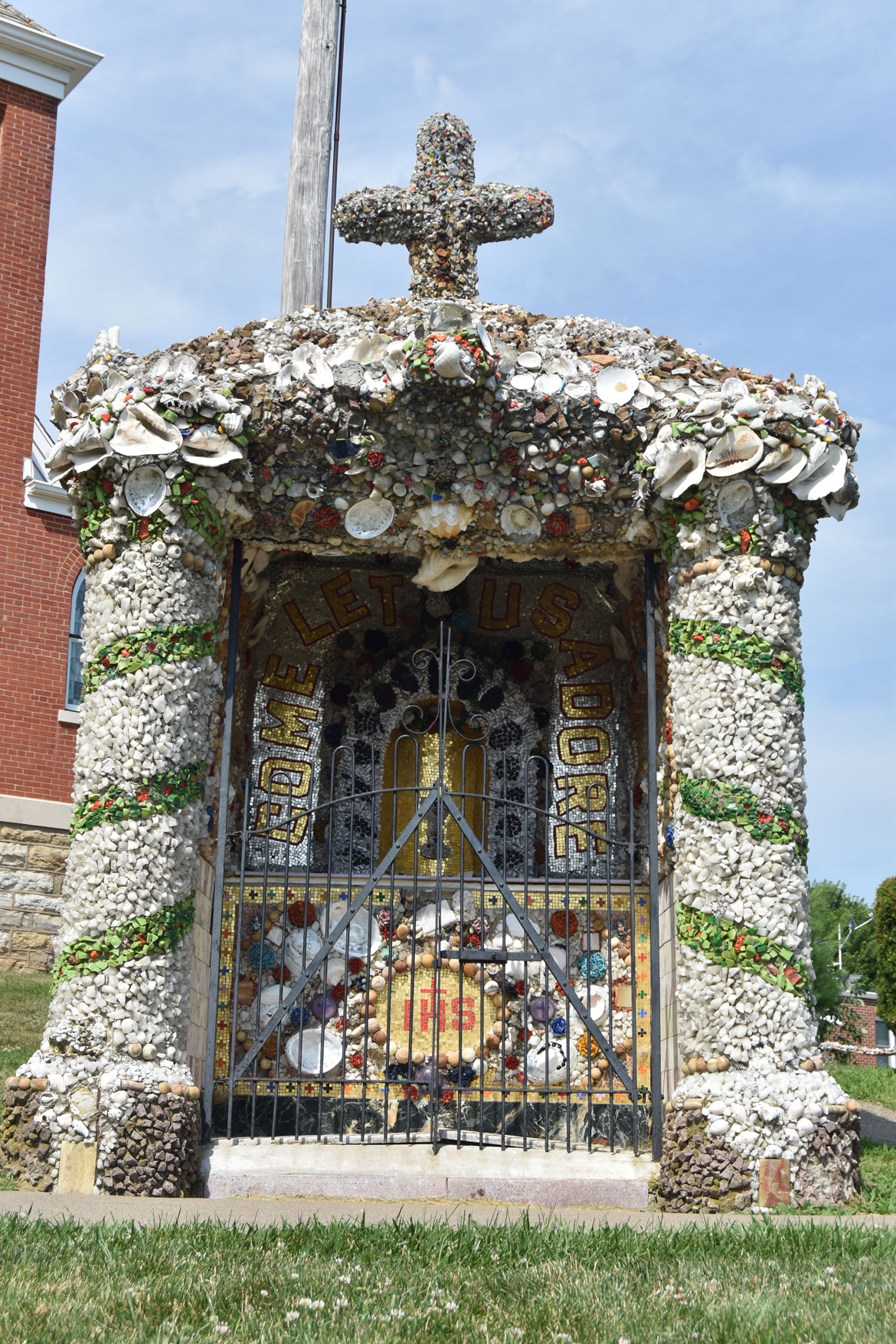For several years now, I’ve been making pilgrimages to visionary sites across the United States. Below are a selection of photos from those trips. I’ll add more as I go.
If this is the kind of coverage of arts, cultures and activisms you appreciate, please support Wonderland by contributing to Wonderland on Patreon. And sign up for our free, occasional newsletter so that you don’t miss any of our reporting. (All content ©Greg Cook 2023 or the respective creators.)
Alabama
Joe Minter’s African Village In America on Nassau Avenue, Birmingham, Alabama.
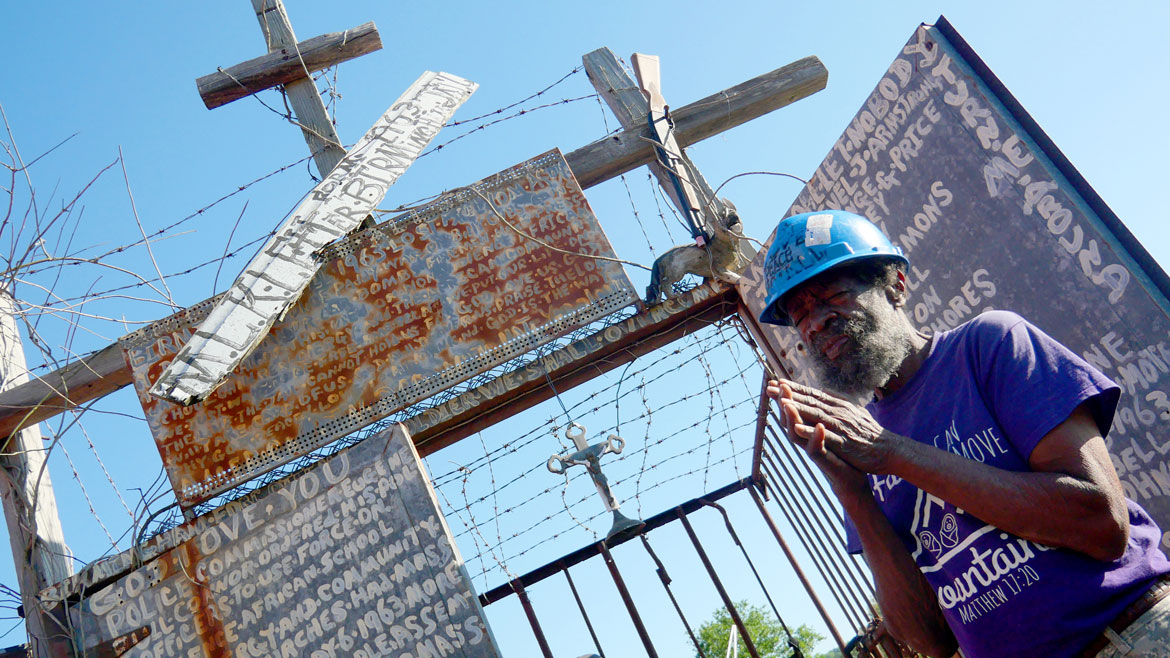
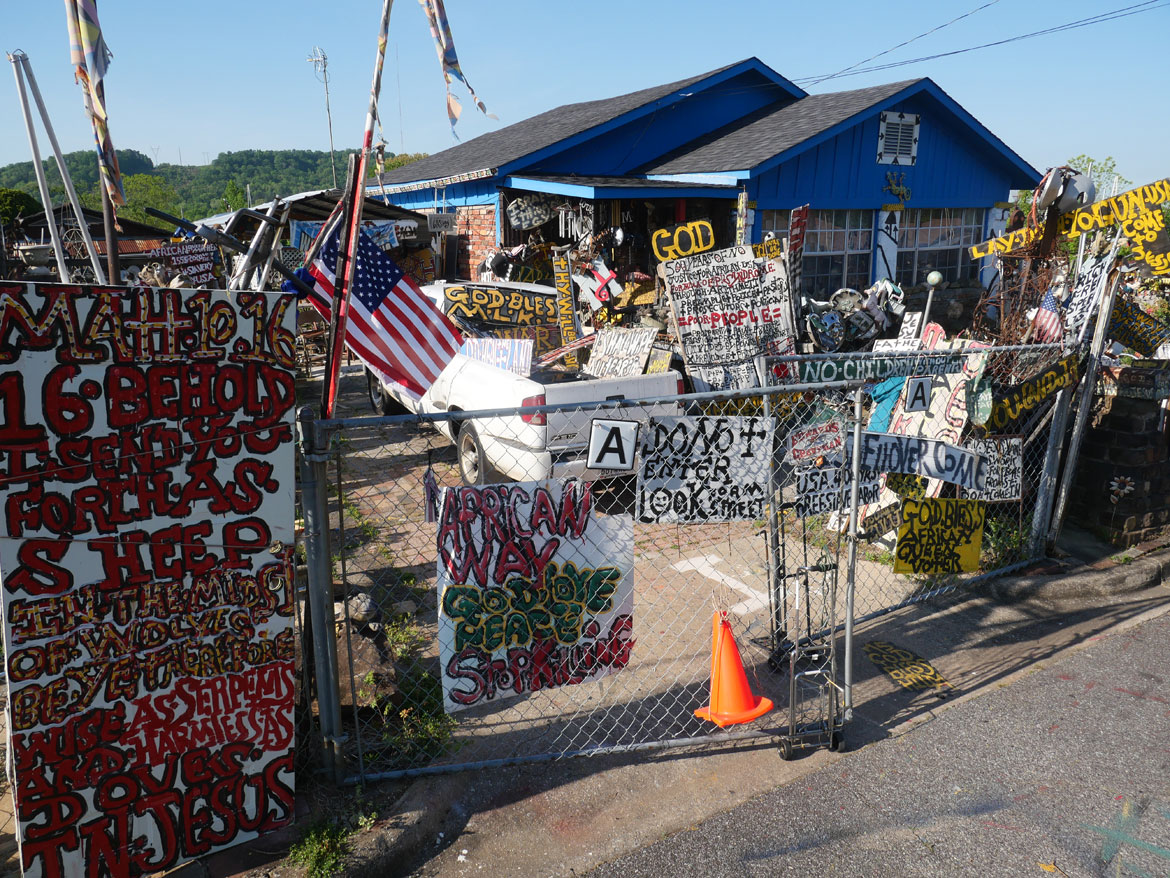
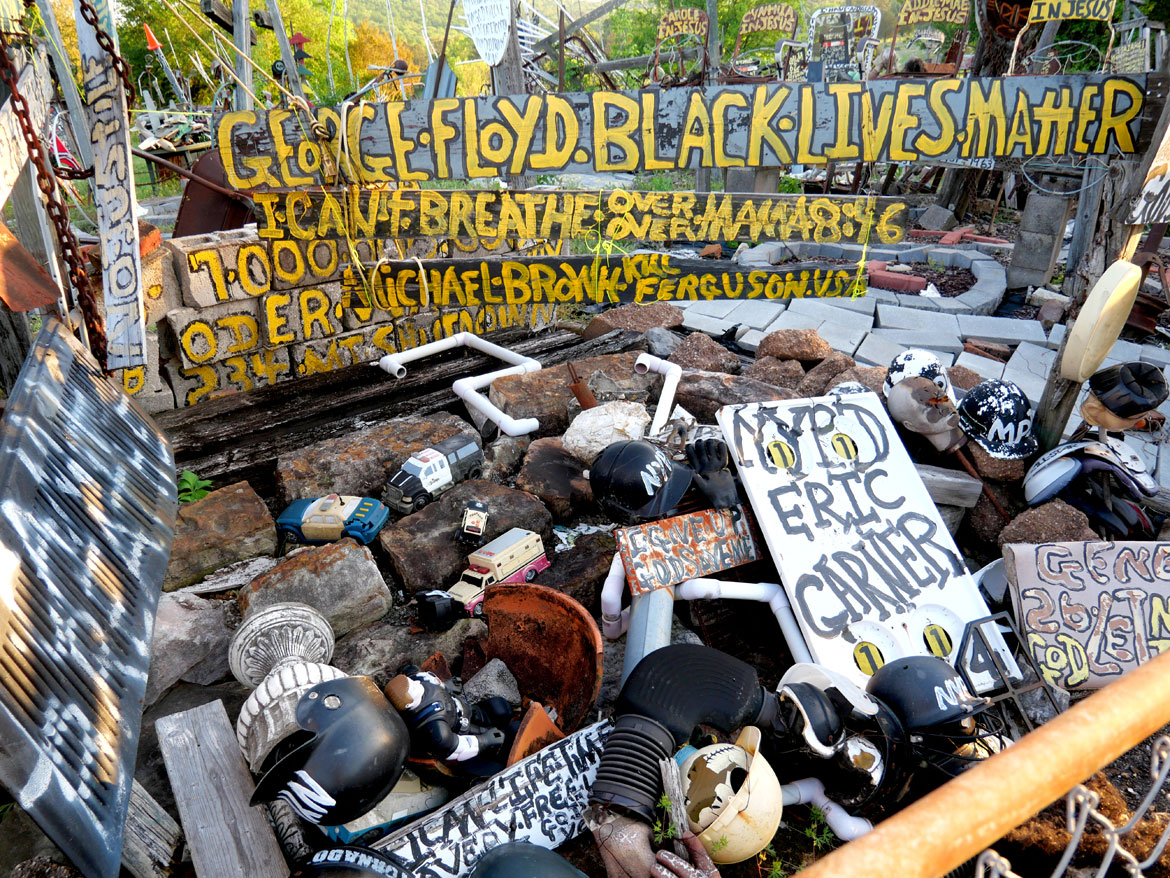
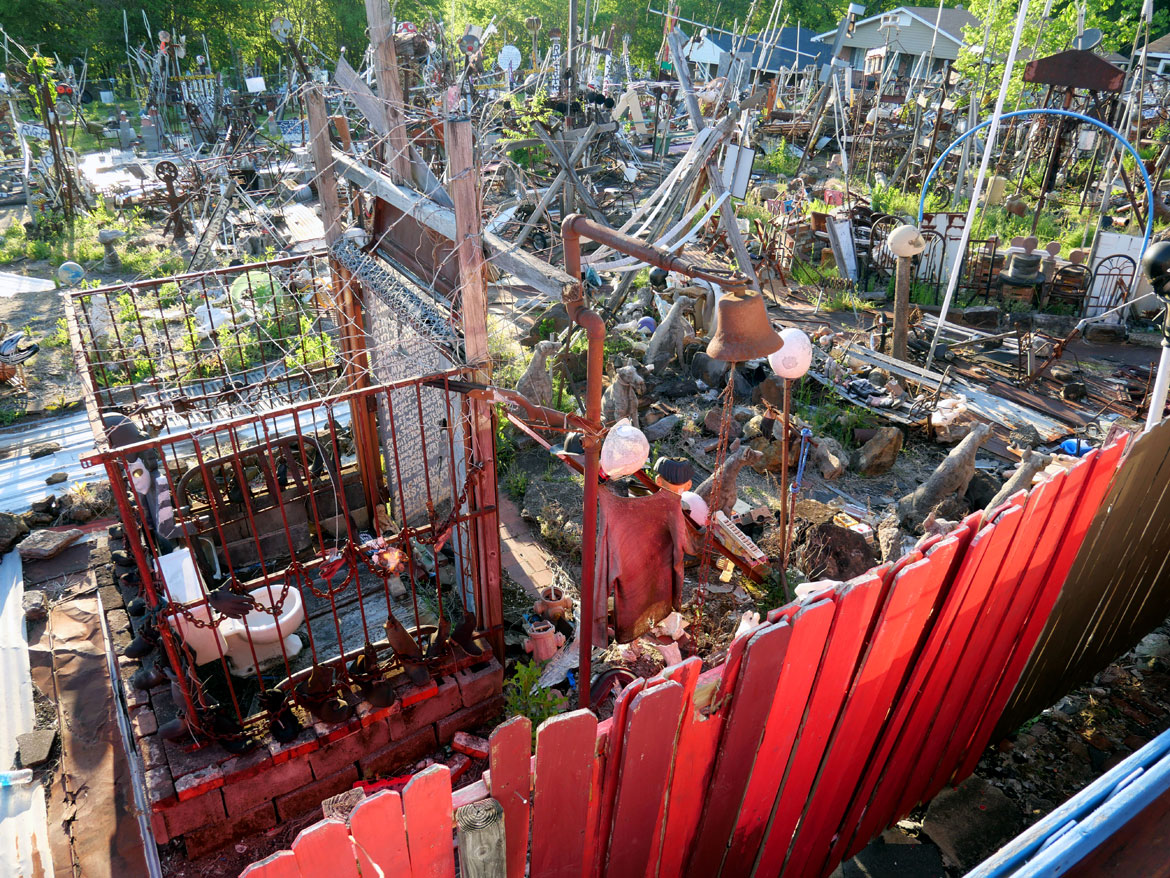
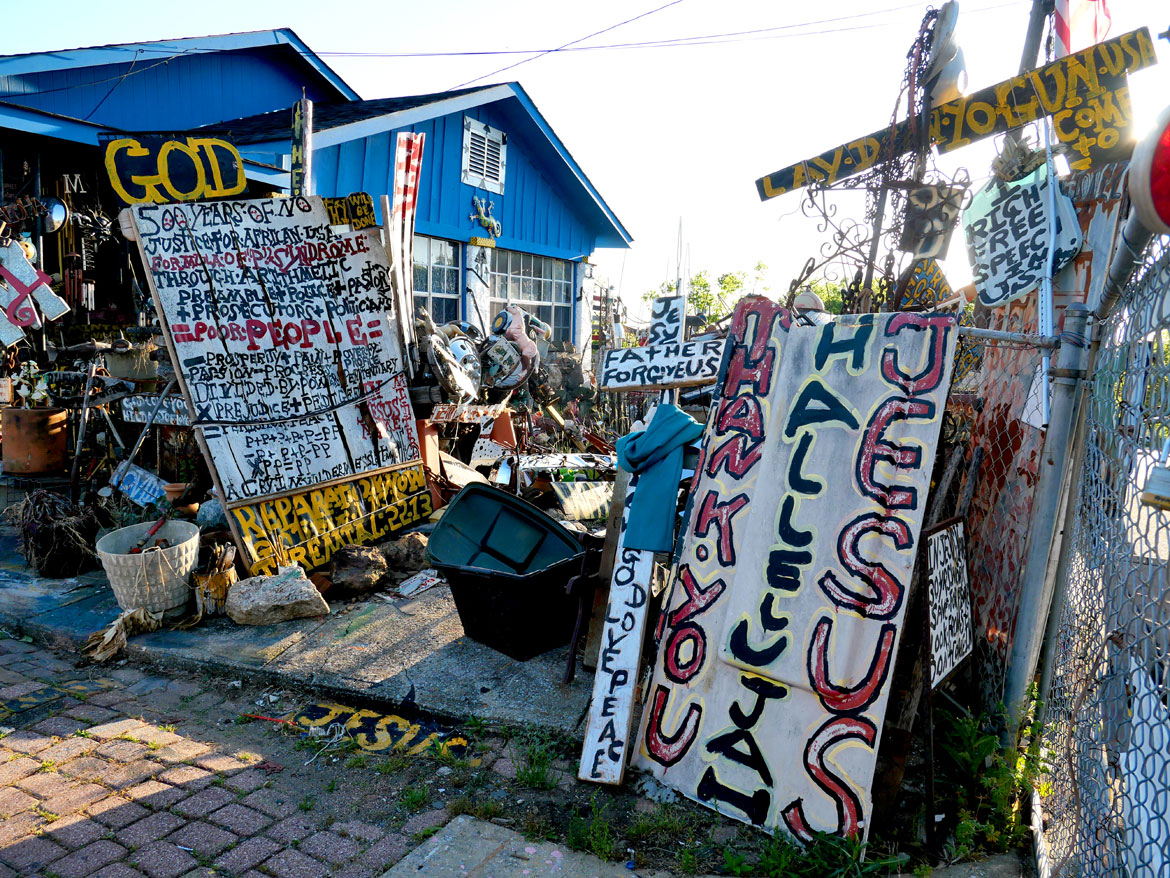
Brother Joseph Zoettl’s Ave Maria Grotto at Cullman, Alabama.
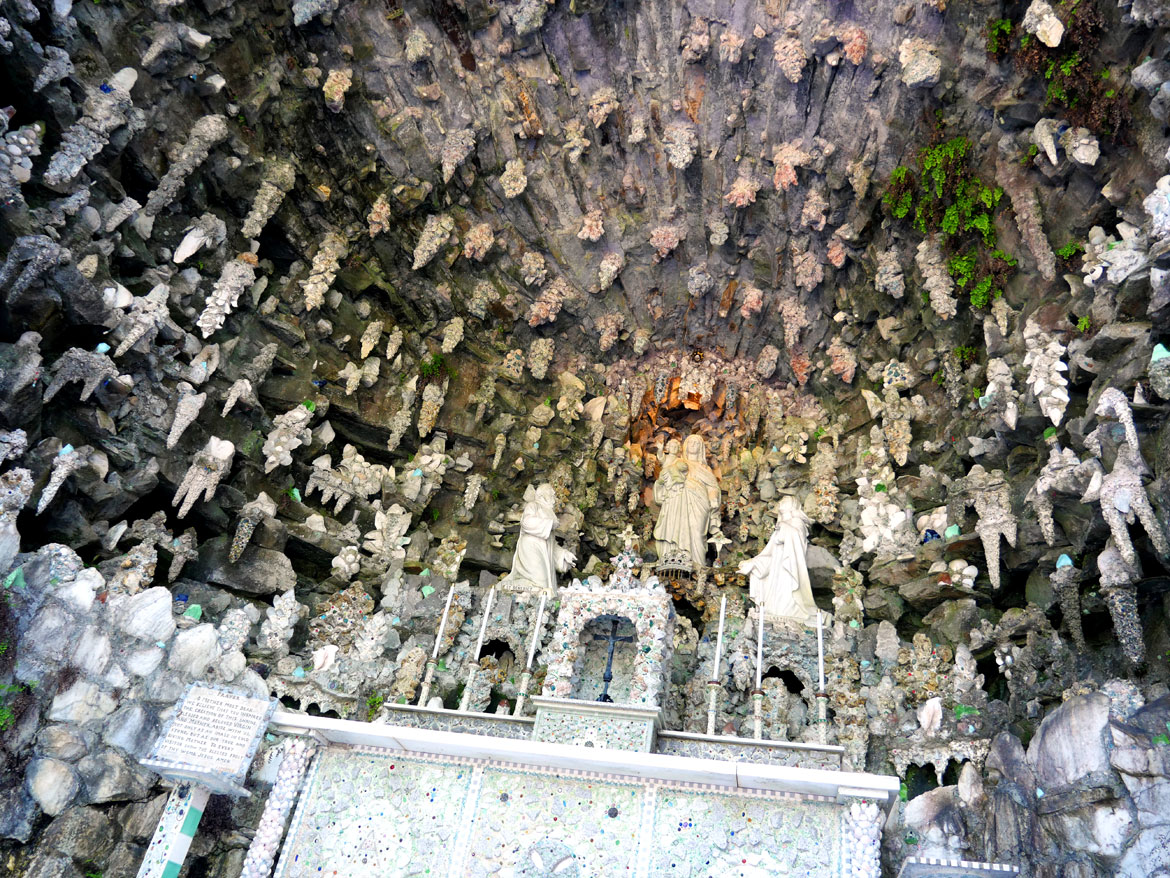
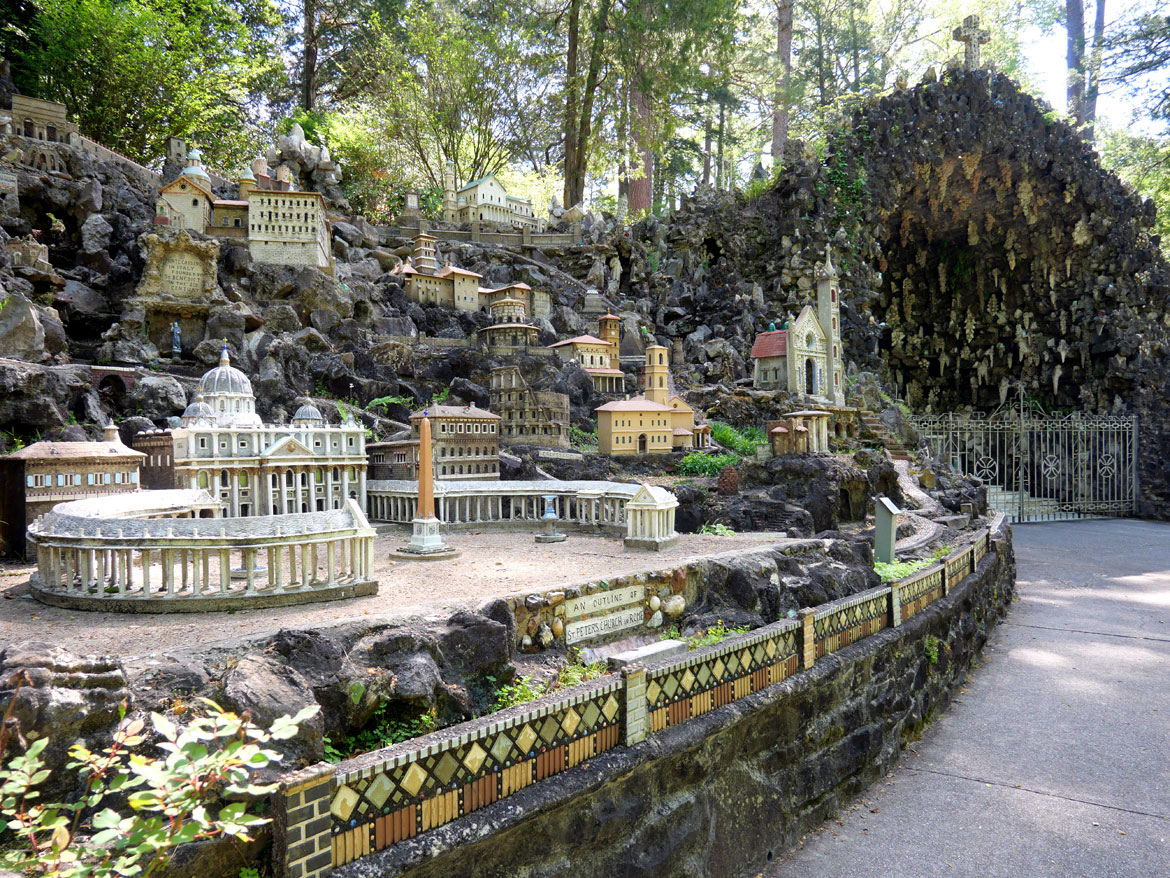
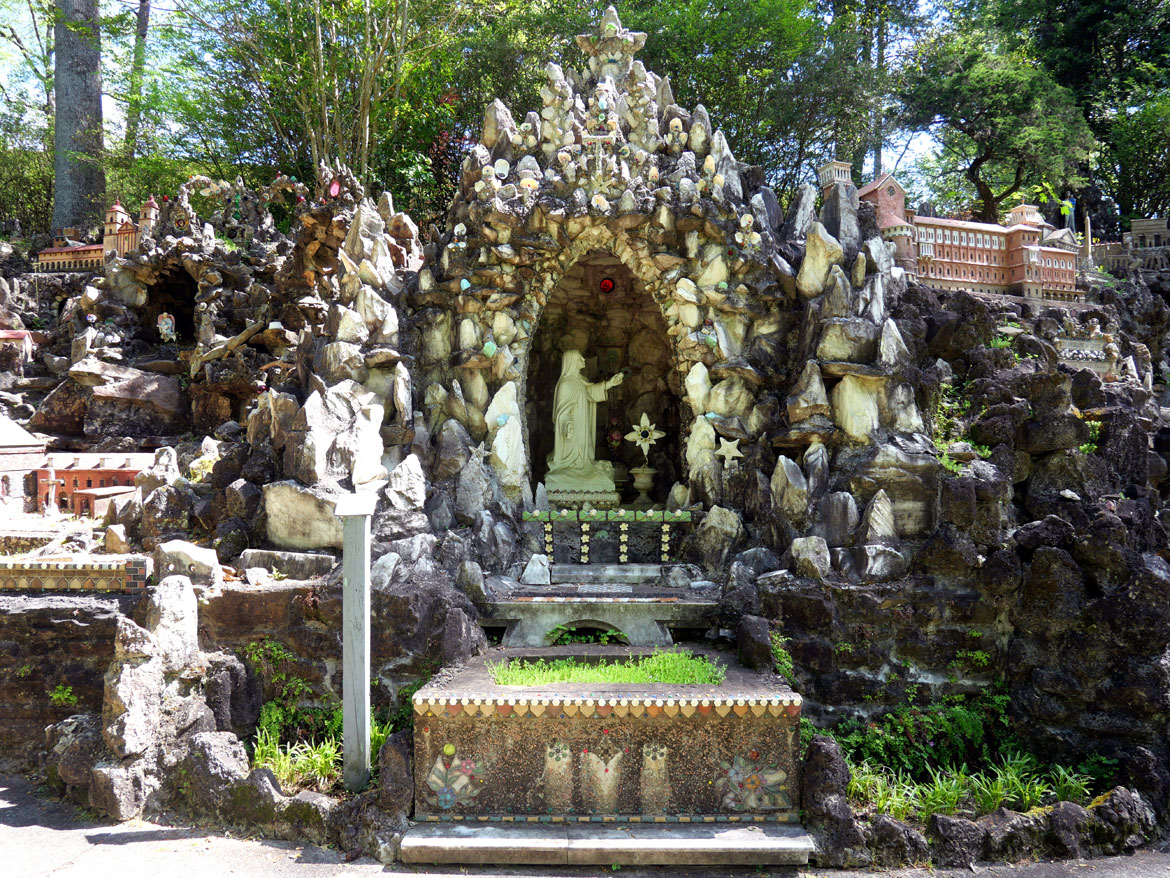
Connecticut
John Greco’s Holy Land USA in Waterbury, Connecticut. The Waterbury attorney was a son an immigrant shoemaker. He grew up to be “a devout Catholic who spent much of his life working with the poor and spreading the Gospel,” the Hartford Courant newspaper has said. He “sermonized on street corners before buying this hill,” The Boston Globe reported in October 1986. He bought the 18-acre site in 1956 (according to the Hartford Courant). With help from volunteers, he constructed a miniature Bethlehem and Jerusalem and catacombs of Rome. They “recycled cinder blocks, chicken wire, old bathtubs, mannequins, even an old freezer to create a diorama of Biblical scenes that people viewed by walking the site,” the Courant has reported. Holy Land USA opened to the public in 1958. Near the entrance, a sign explained that Holy Land USA told the story of Jesus Christ “from cradle to the Cross” in hopes of bringing visitors “closer to Him.” Holy Land USA closed in 1984 and Greco died at age 90 in 1986. He gave the property to the neighboring Filippini Sisters and it began to fall into disrepair.
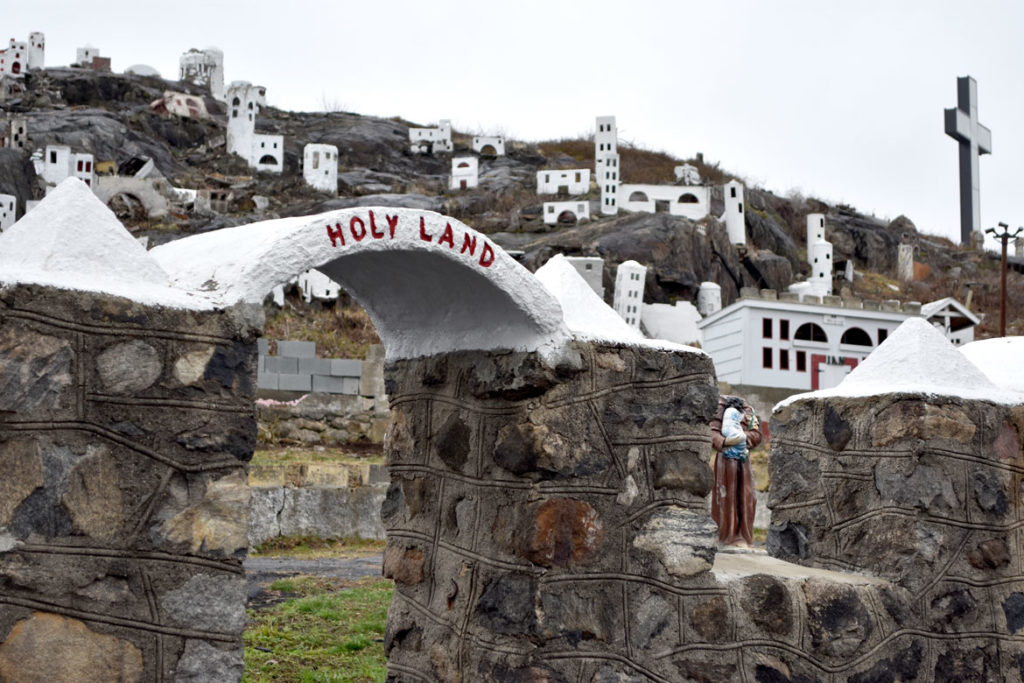
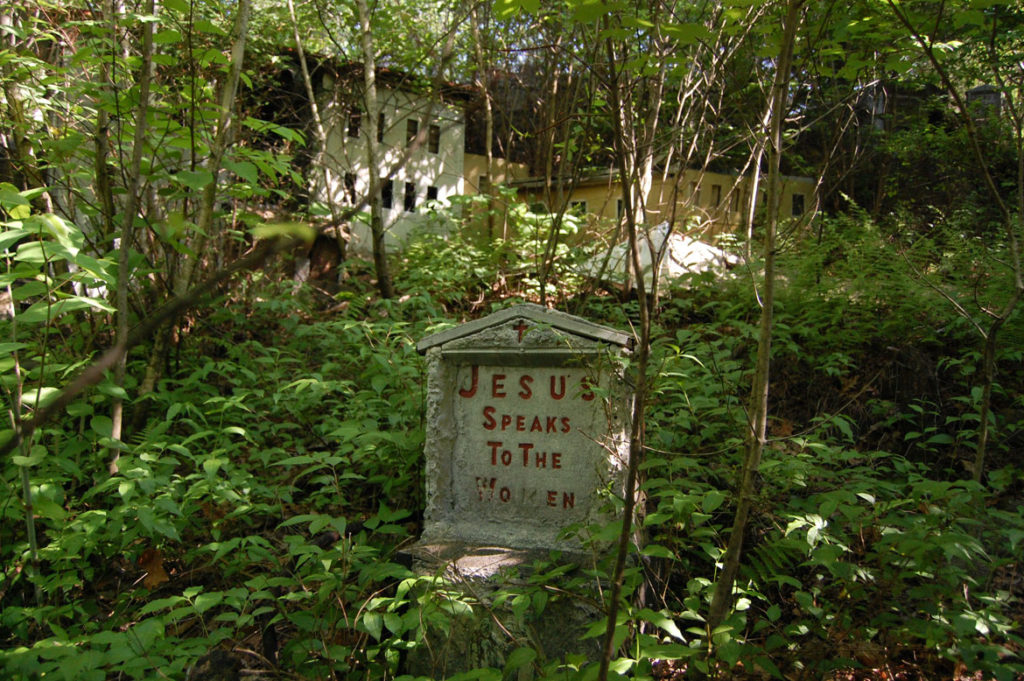
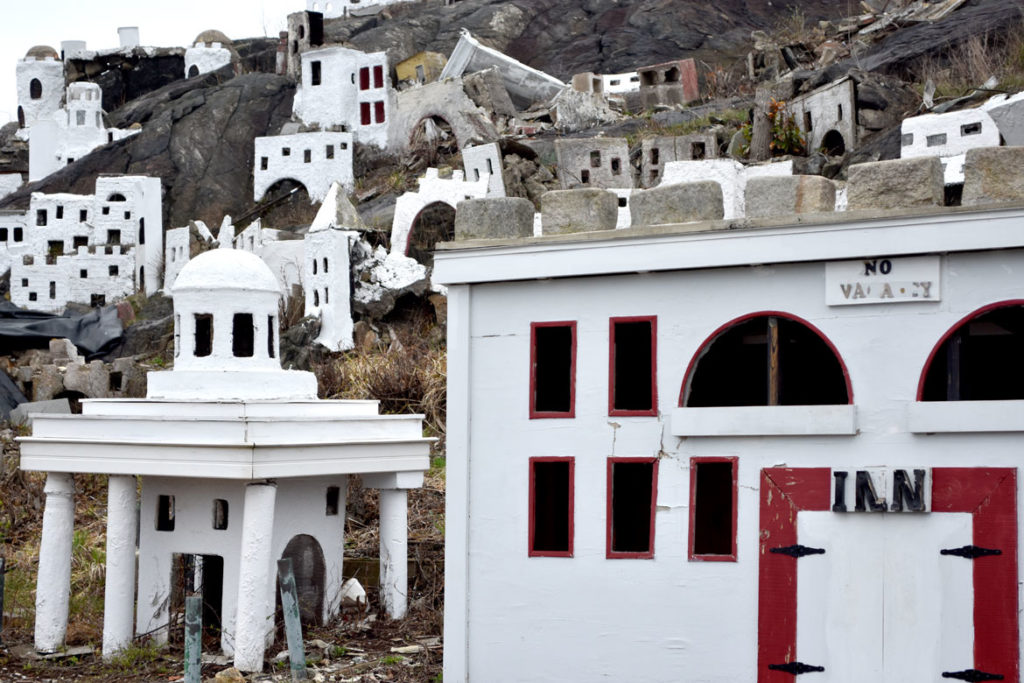
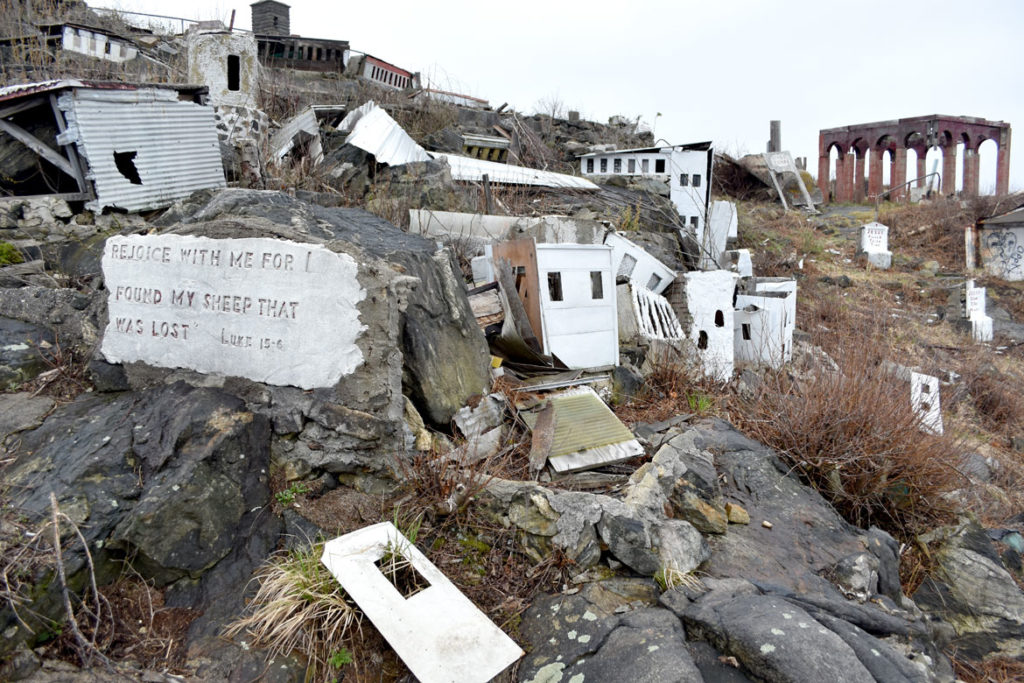
Jeff Wells’s Dinosaur Haven at Uncasville, Connecticut.
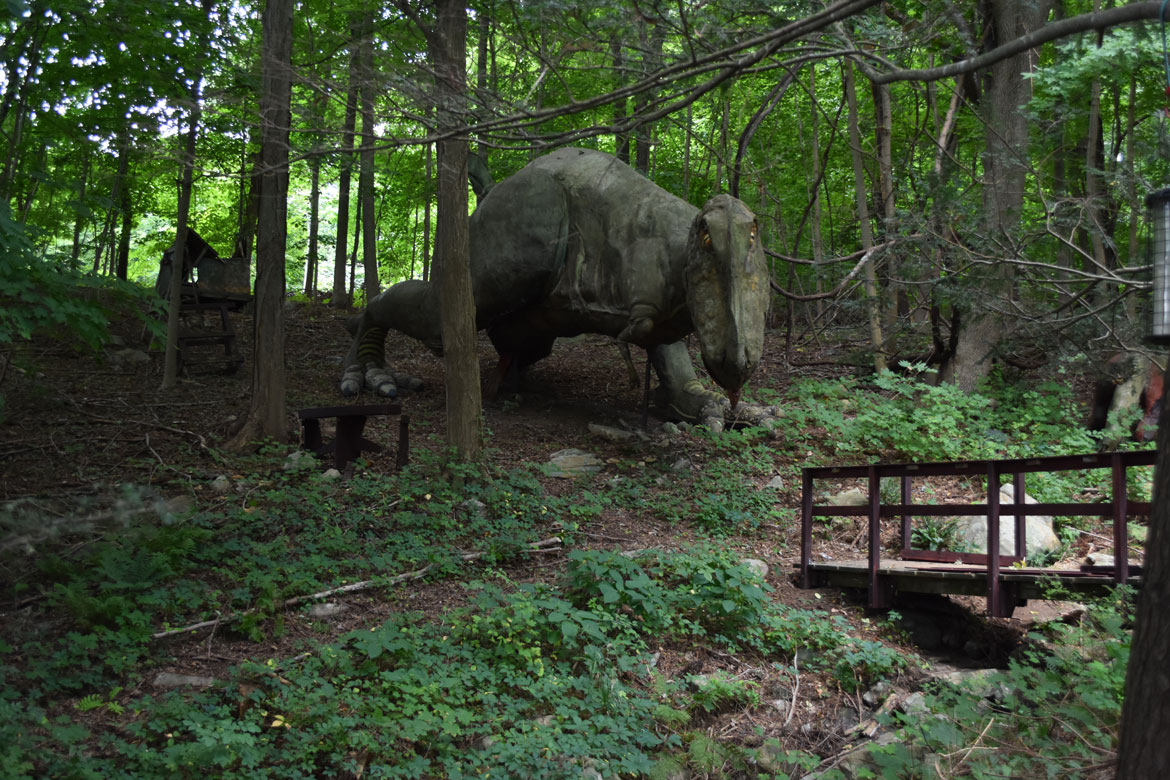
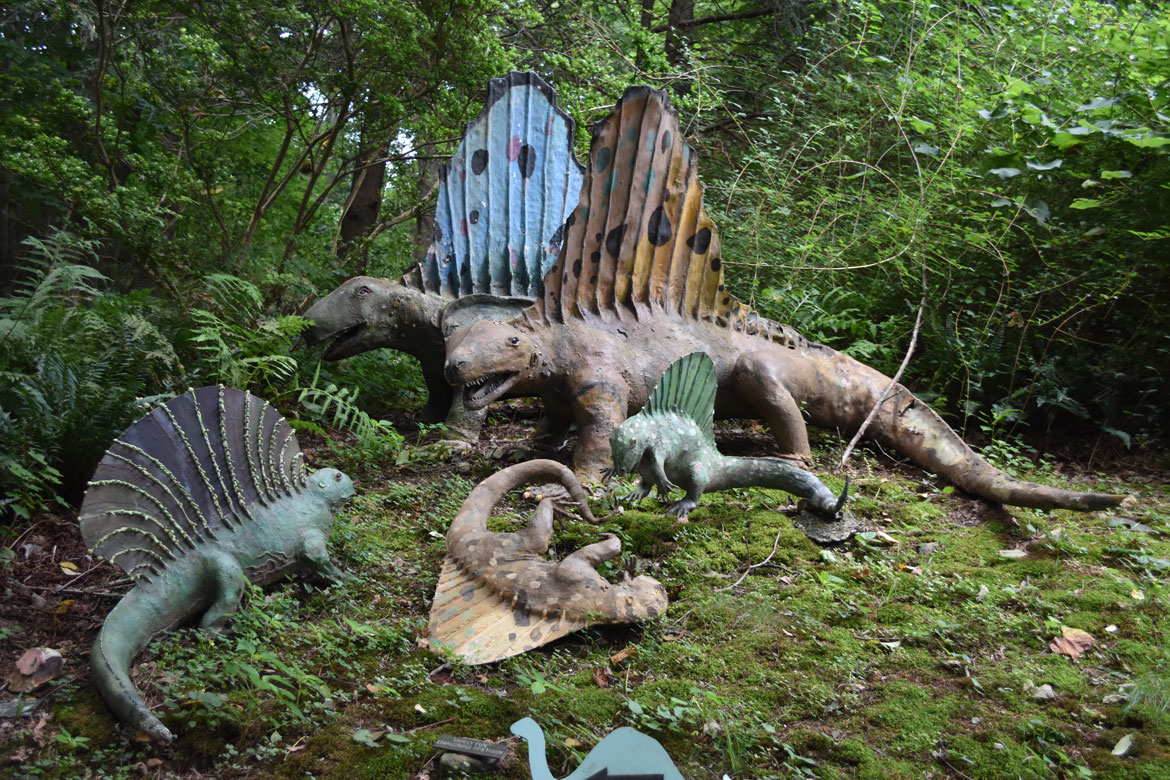
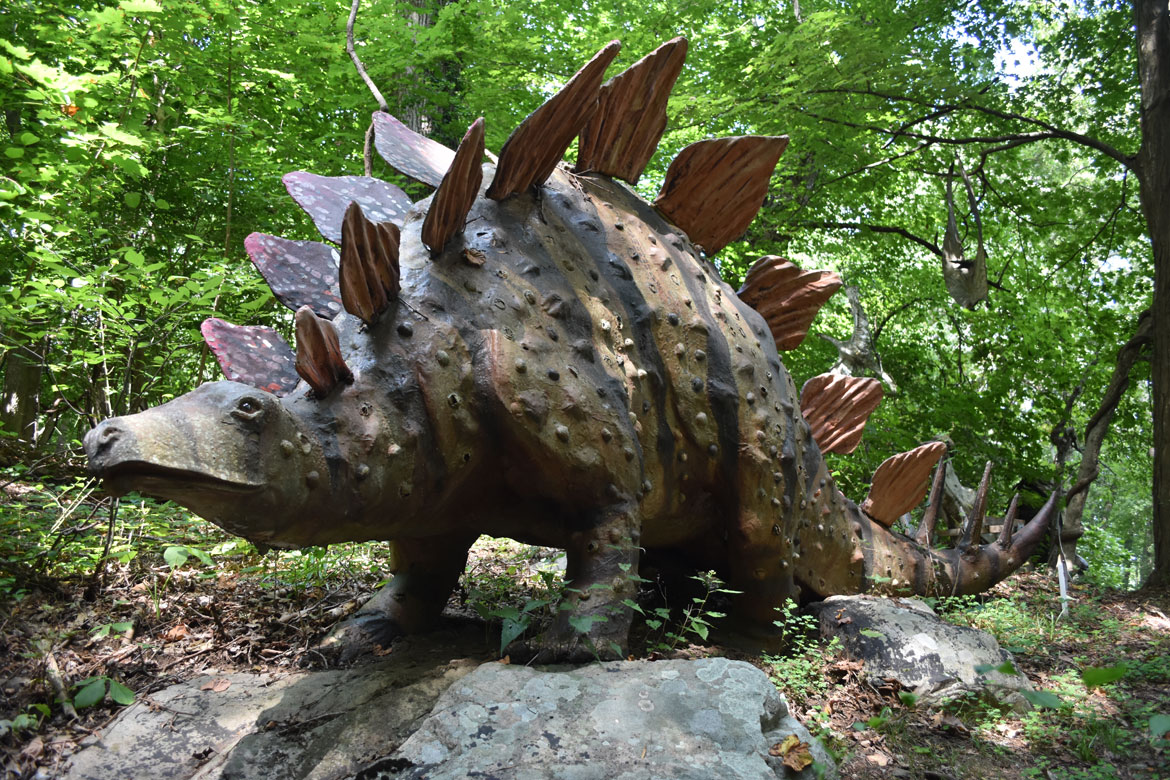
Georgia
Frieda and Garnet Carter’s Rock City at Lookout Mountain, Georgia. In 1924, Garnet Carter and his wife Frieda constructed a residential neighborhood on the top of Lookout Mountain, Georgia, the site of the Civil War battle. They called their development Fairyland, inspired by Frieda’s love of European folklore. Mr. Carter planned a golf course for the place, but as construction was delayed, he built what’s billed as the “nation’s first miniature golf course.” Garnet franchised the mini golf concept across the United States, while Frieda dreamed up a path winding through rock formations atop Lookout Mountain, ending at an overlook dubbed “Lover’s Leap.” She transplanted wildflowers along the boulders and canyons and punctuated the journey with statues of gnomes and fairytale characters. Rock City, as they called it, opened to the public on May 21, 1932. Today, it’s a soothing stroll though narrow canyons, over stone bridges and past splashing brooks. Atmospheric music is piped in along the way. Finally, you arrive at that monumental outcropping with a waterfall crashing down the side and, they say, a view of seven states. To attract visitors to this out-of-the-way location, Mr. Carter hired a sign painter by name of Clark Byers to paint barns from Michigan to Texas for free—in exchange for letting him paint the words “See Rock City” across the structures. The slogan became a classic of roadside advertising. The tour of Rock City ends with you descending into Fairyland Caverns and Mother Goose Village, black-light fairytale dioramas added in the 1960s. Some feel they clash with the calming natural surroundings, but the eye-popping displays have a dazzle all their own.
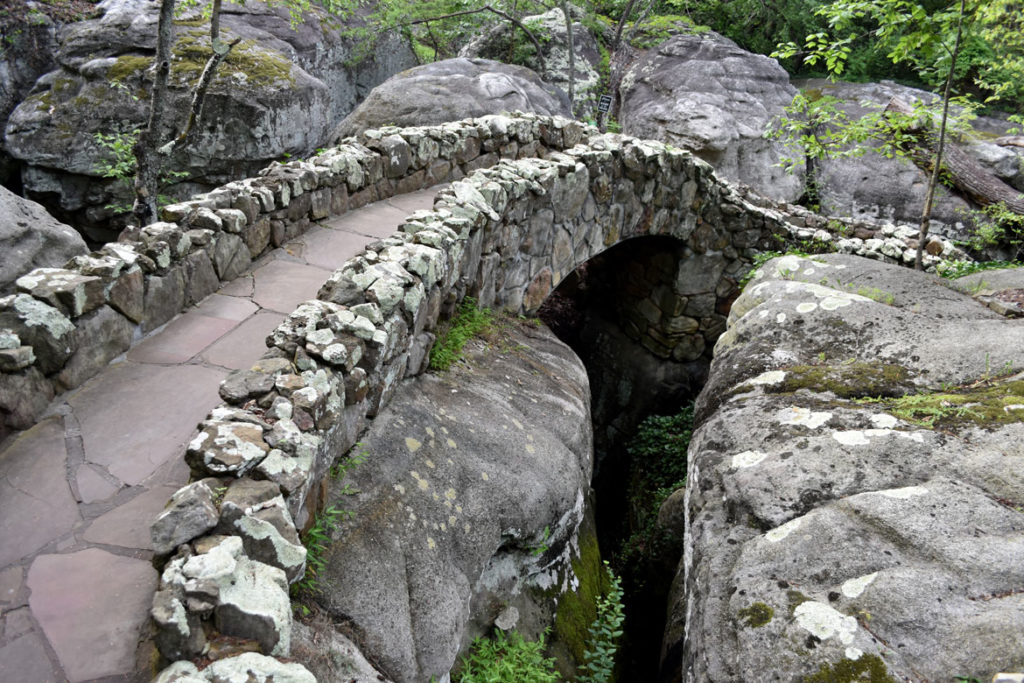
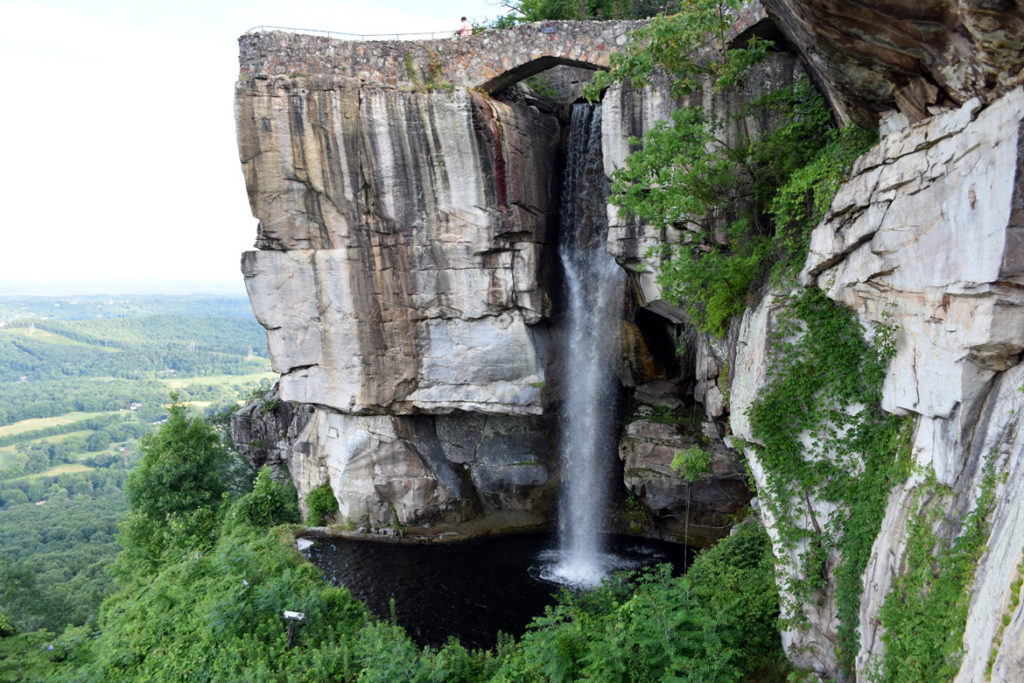
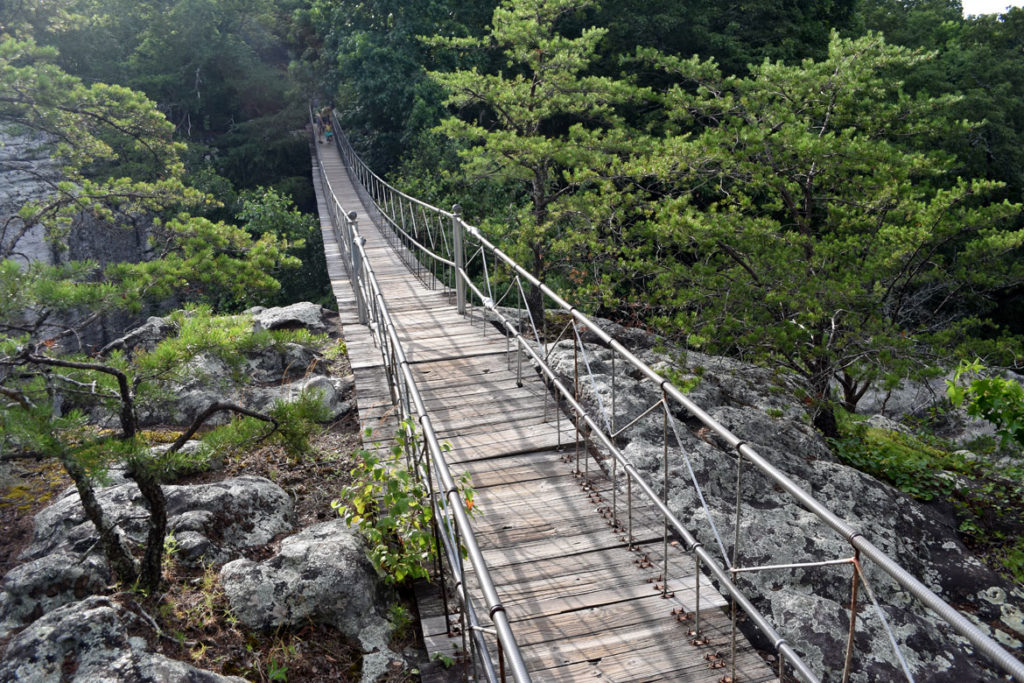
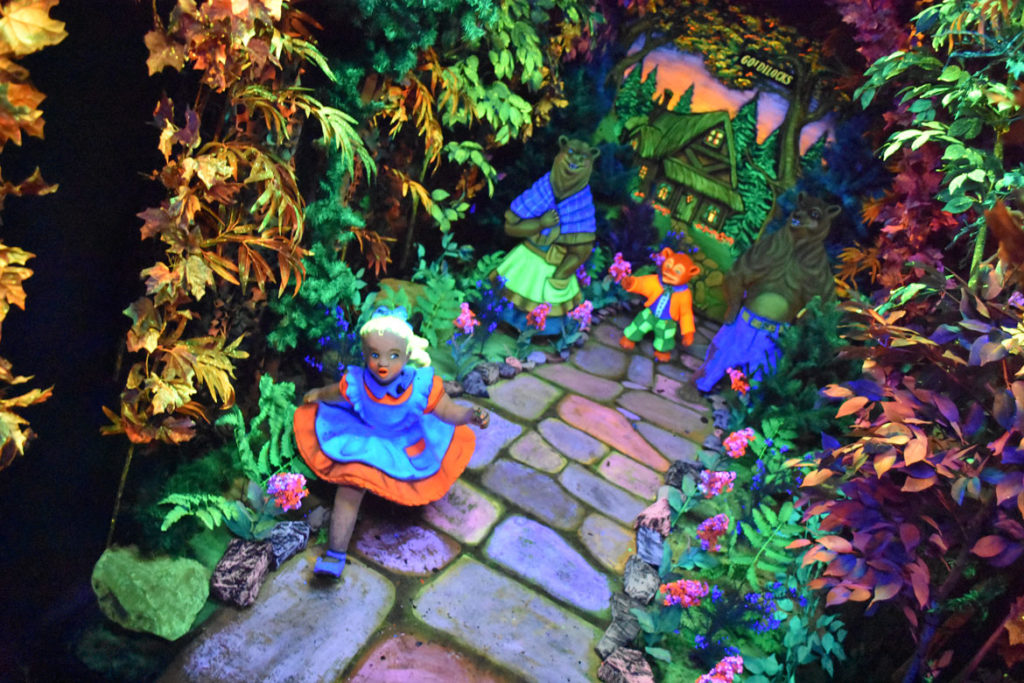
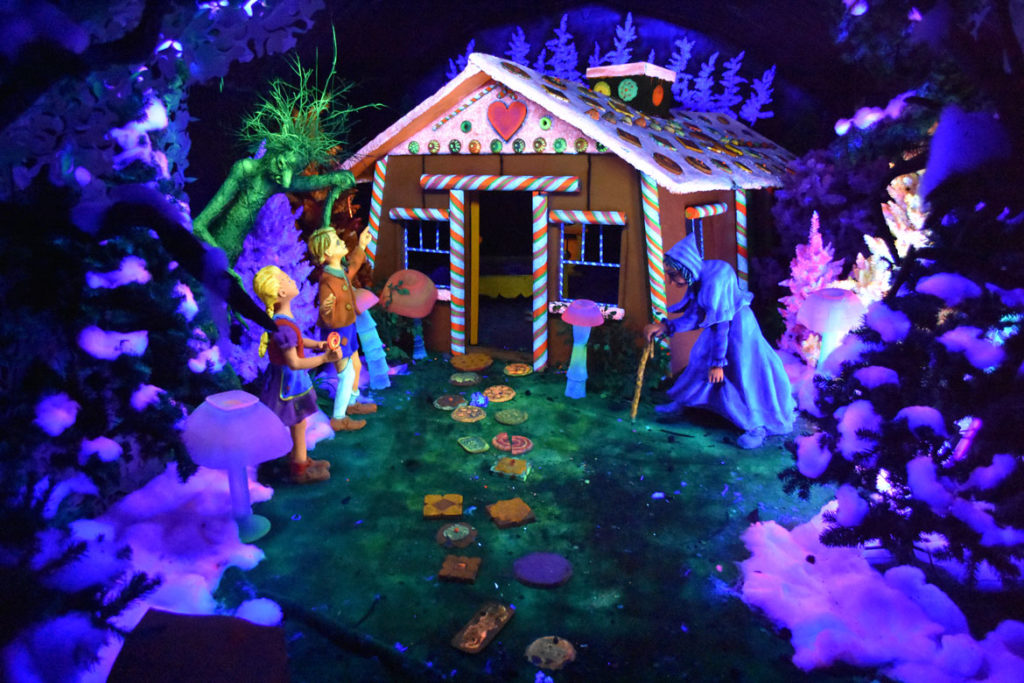
“Chesapeake Salt Life” and “Oyster Shell Landscaping” at 7246 Skidaway Road, Savannah, Georgia.
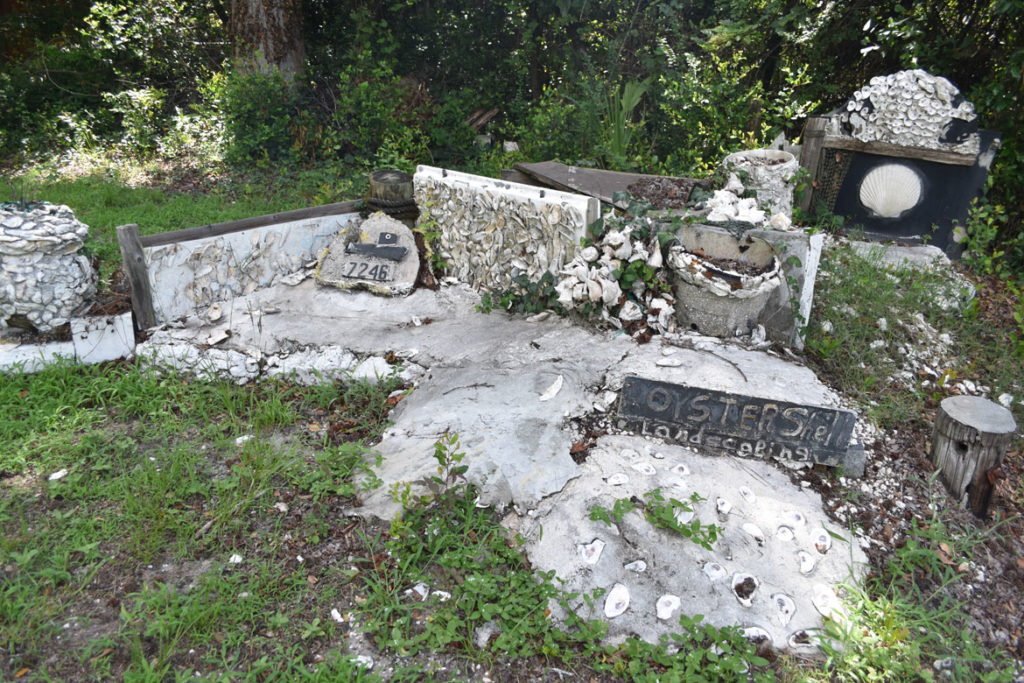
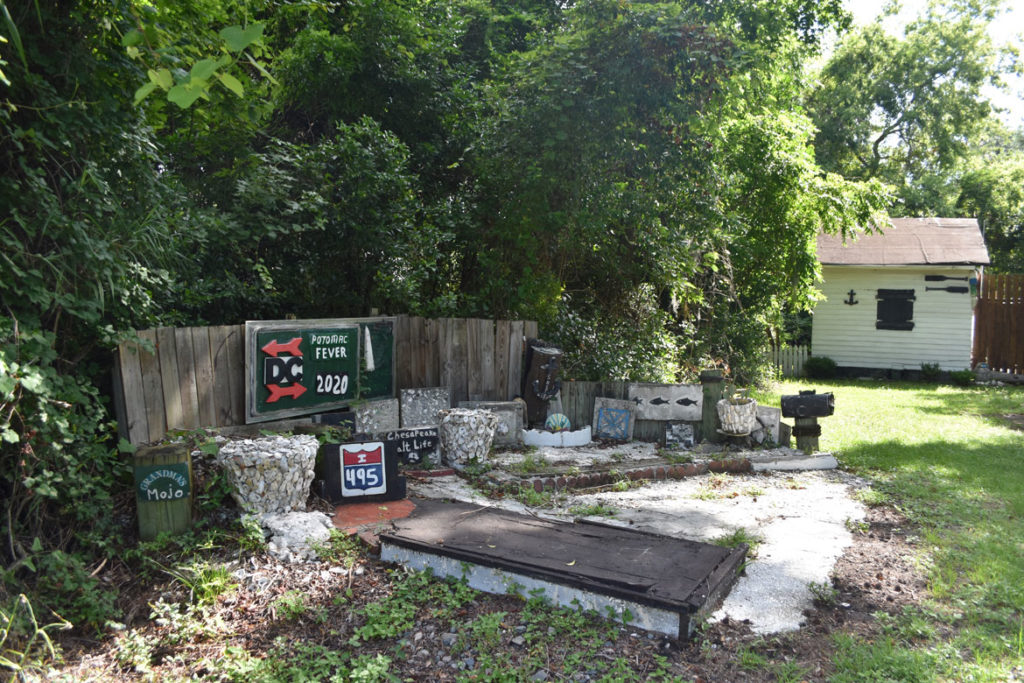
Howard Finster’s Paradise Garden at Summerville, Georgia. In 1961, minister and repairman Howard Finster (1916-2001) bought four acres of waterlogged land at Pennville, Georgia. People had used the place as a dump. Finster channeled the water and cleaned up the trash—some of which he used to create art. “I took the pieces, you threw away, and put them together by night, and day, washed by rain, dried by sun, a million pieces all in one,” he proclaimed. Beginning in 1945, he had constructed a garden museum at his home in Trion, Georgia, featuring models of houses and churches and celebrating human invention. Some of these constructions served as the foundation for his Plant Farm Museum, now known as Paradise Garden. “It is a place to meet with God,” Finster said. “The Rock Garden is a place of joy, wonder and discovery. It is a place to be with those you love.”
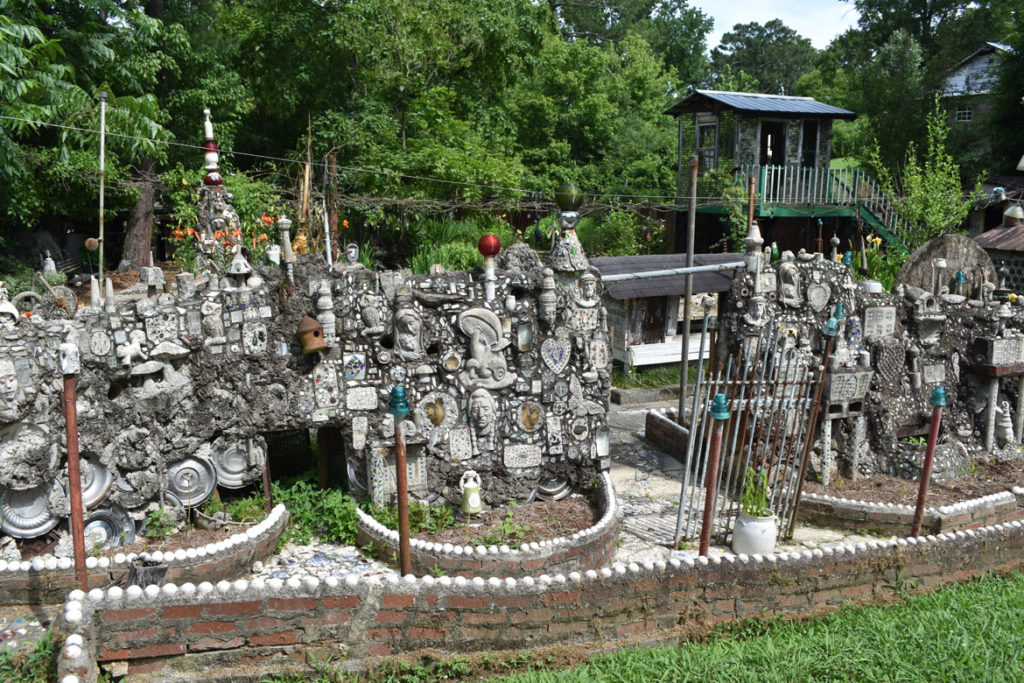
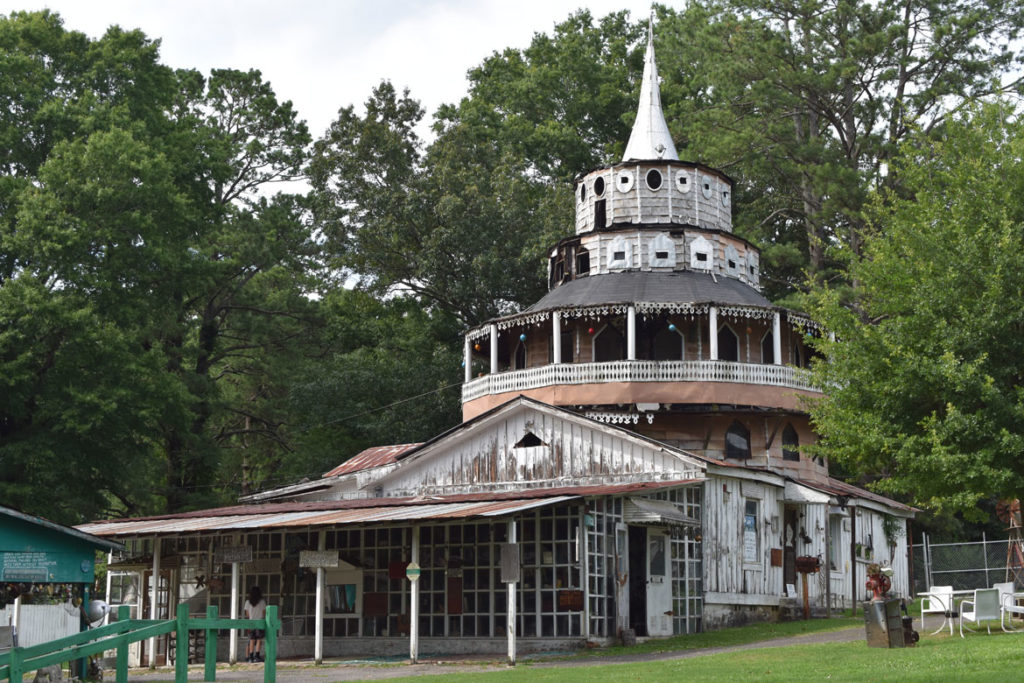
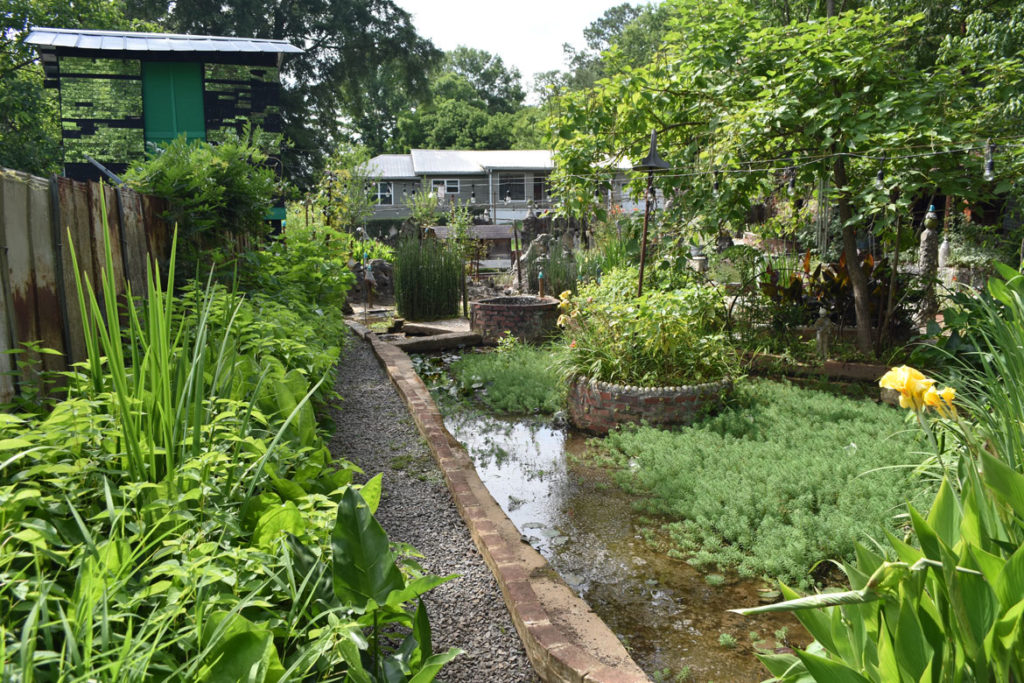
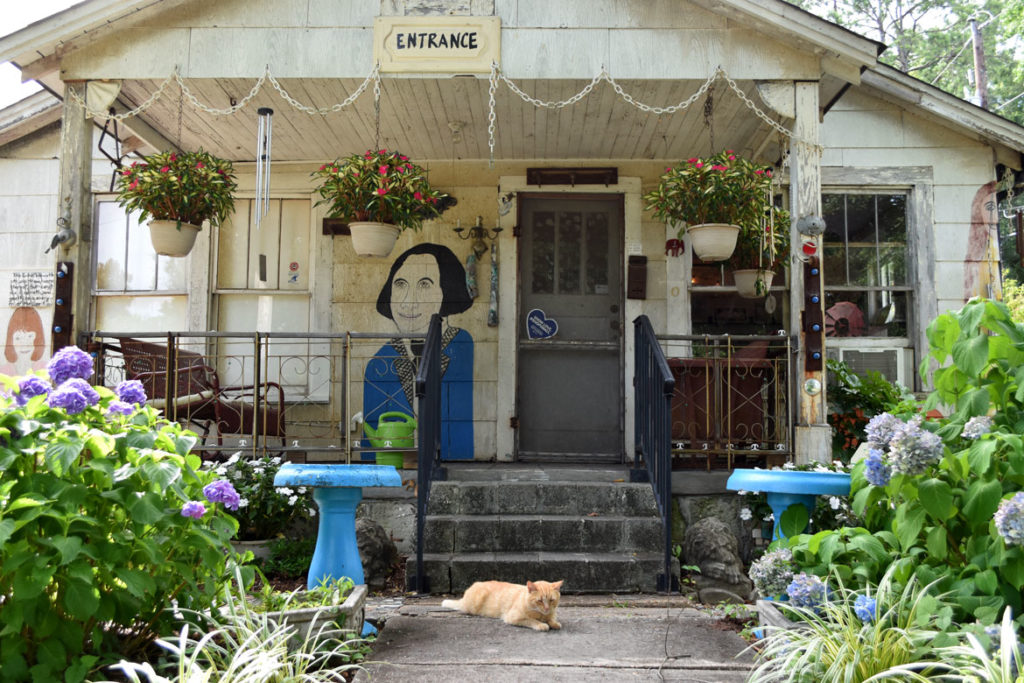
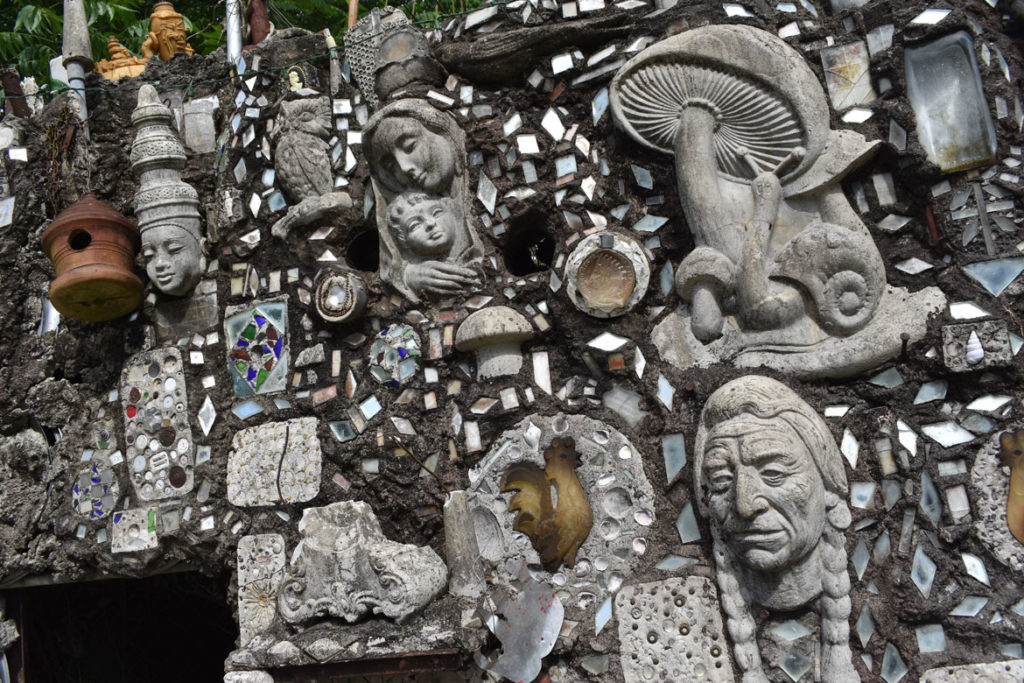
Old Dog’s Rock Garden at Calhoun, Georgia. It was a sweltering hot afternoon when we arrived at the Rock Garden behind Calhoun Seventh Day Adventist Church in Calhoun, Georgia, in 2019. Since September 2007, a retired gentleman who goes by the name Old Dog has constructed a miniature fairytale village of castles and cathedrals and cottages out of concrete and stones and shells along a creek behind the church. “It is a place to meet with God. The Rock Garden is a place of joy, wonder and discovery. It is a place to be with those you love,” he has said. The buildings are certainly less than life-sized, but some rise more than 6 feet tall. We were fortunate to bump into Old Dog there and he kindly invited our kids to help him cobble together a little bridge of wire, concrete and smooth river stones.
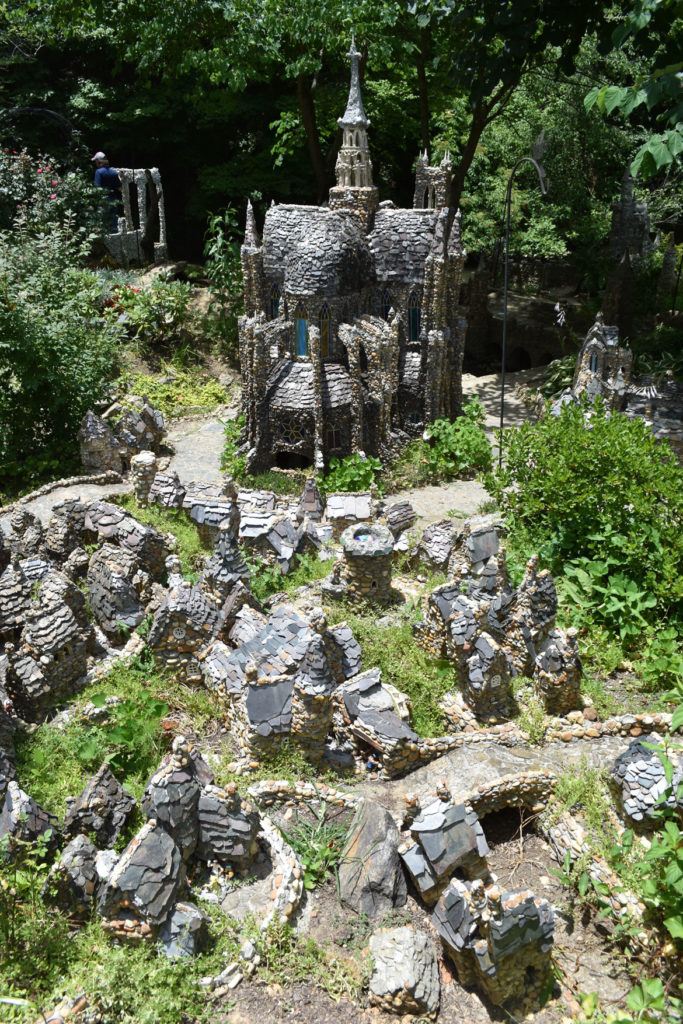
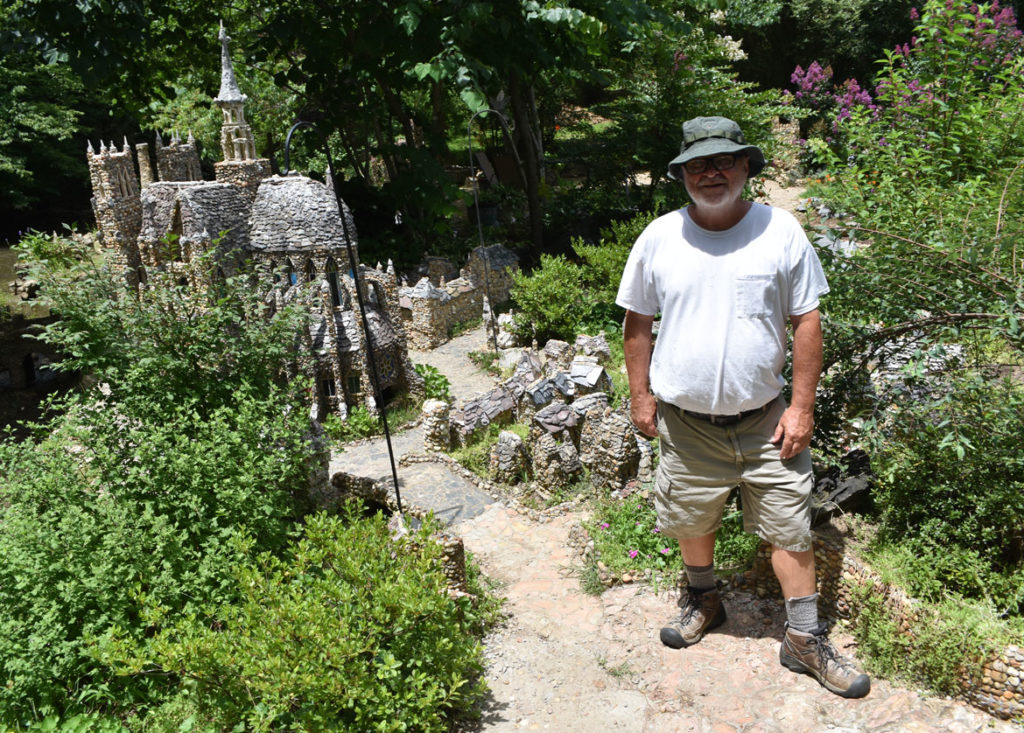
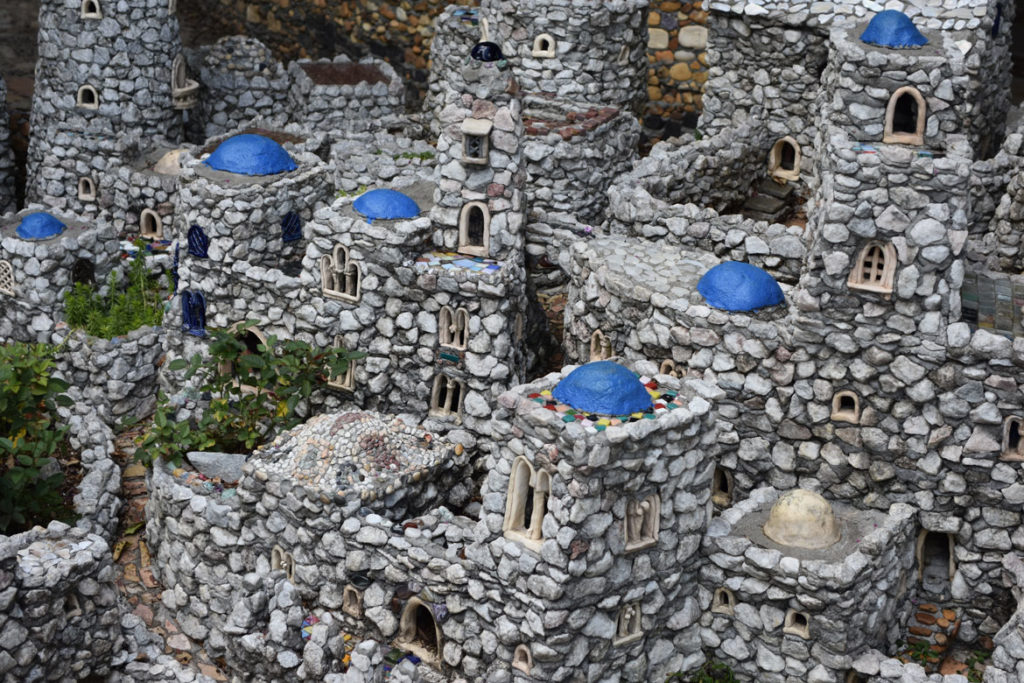
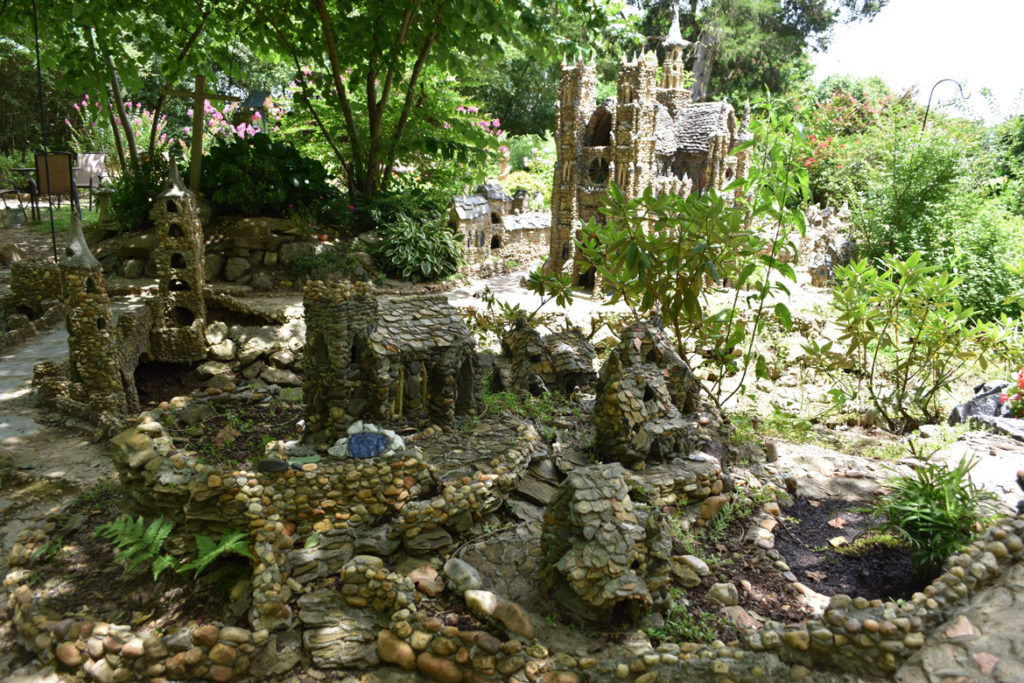
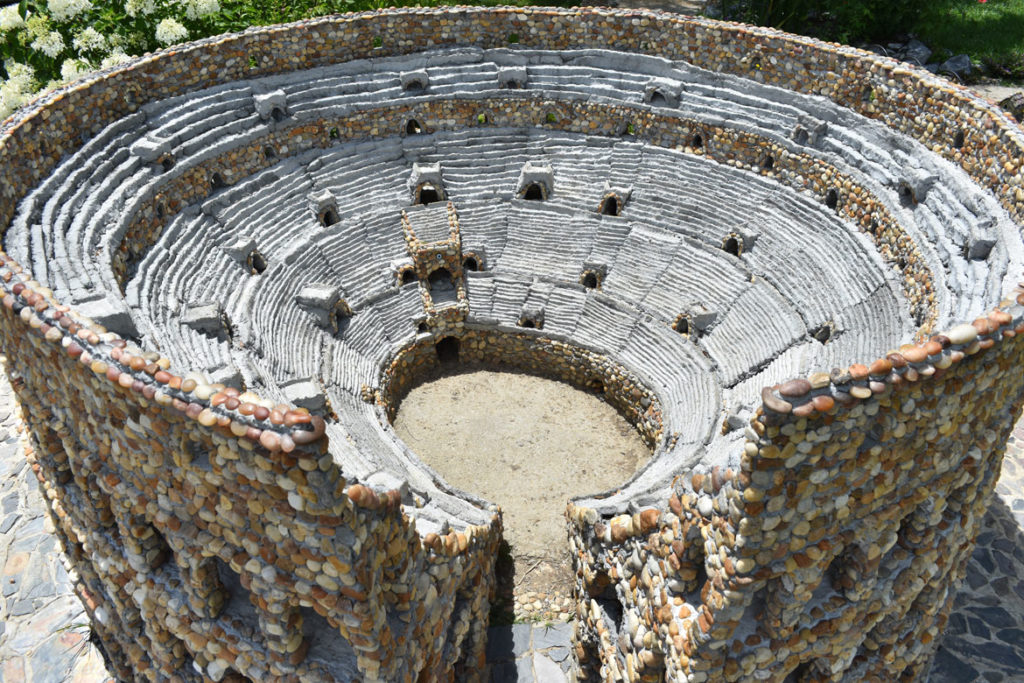
St. EOM’s Pasaquan at Buena Vista, Georgia. Eddie Owens Martin had been a street hustler, bartender, gambler, drag queen and fortuneteller in New York. But after his mother died, he returned to his native, Buena Vista, Georgia, in 1957 and moved into her old farmhouse. He wore robes and feathered headdresses and offered to tell people’s fortunes for money, which he used to turn his mother’s property into a 7-acre visionary estate Pasaquan.
“You’re gonna be the start of somethin’ new,” he said, “and you’ll call yourself ‘Saint EOM,’ and you’ll be a Pasaquoyan—the first one in the world.”
Over three decades, he created six major structures, mandala murals and more than 900 feet of elaborately painted masonry walls inspired by African, Hindu, pre-Columbian Mexico and Native American traditions. When his health flagged, he committed suicide in 1986. And Pasaquan began to fade. But the place is vividly hued again after a 2014 restoration by the Pasaquan Preservation Society, Kohler Foundation and Columbus State University.
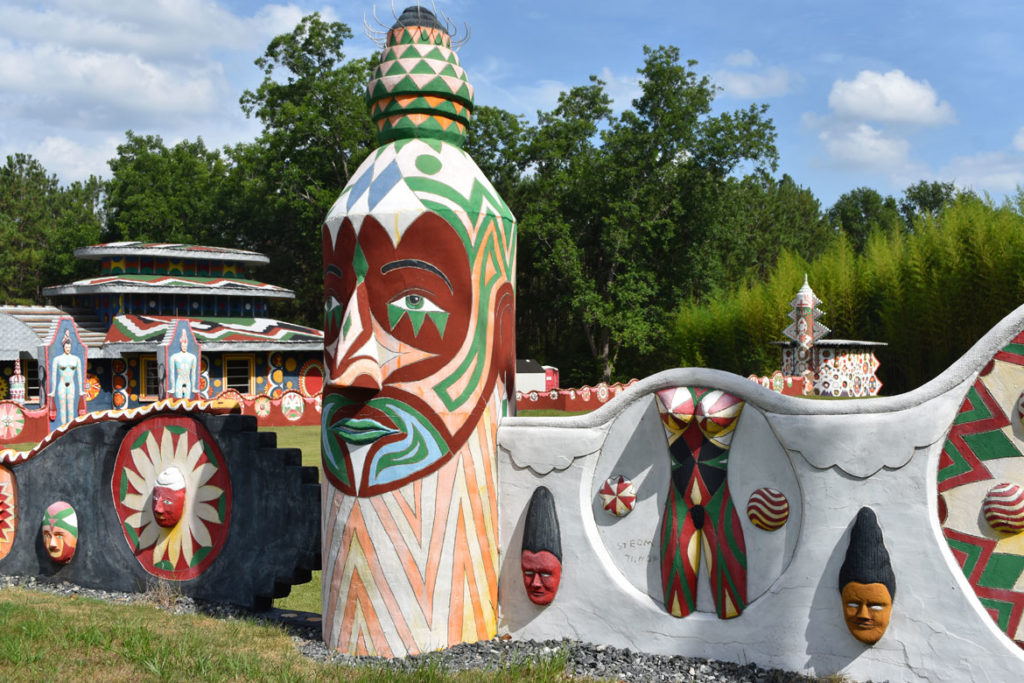
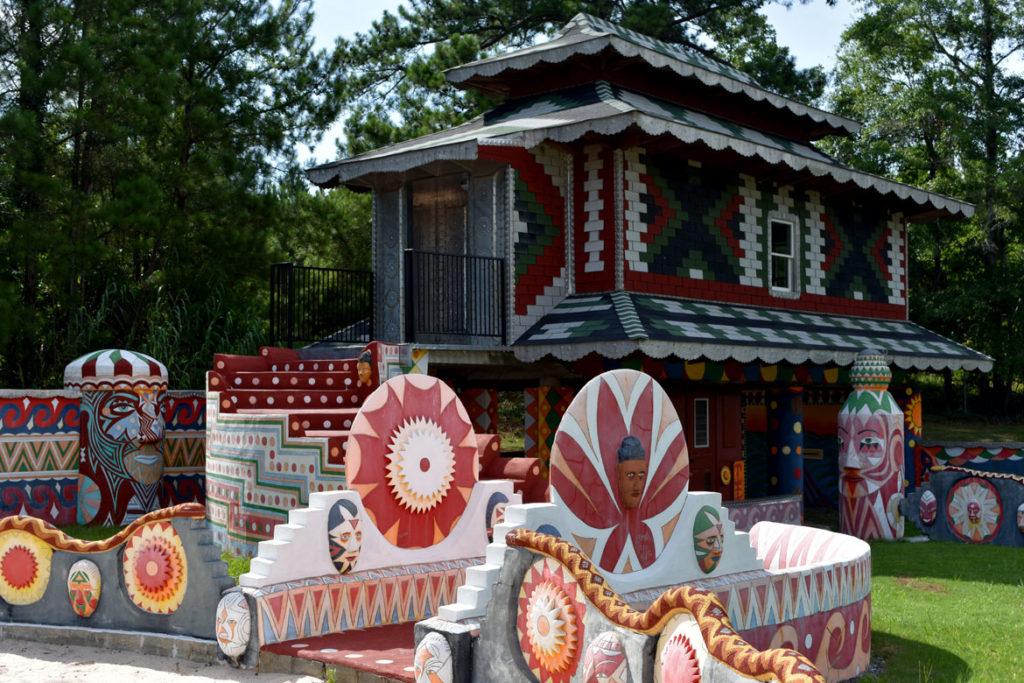
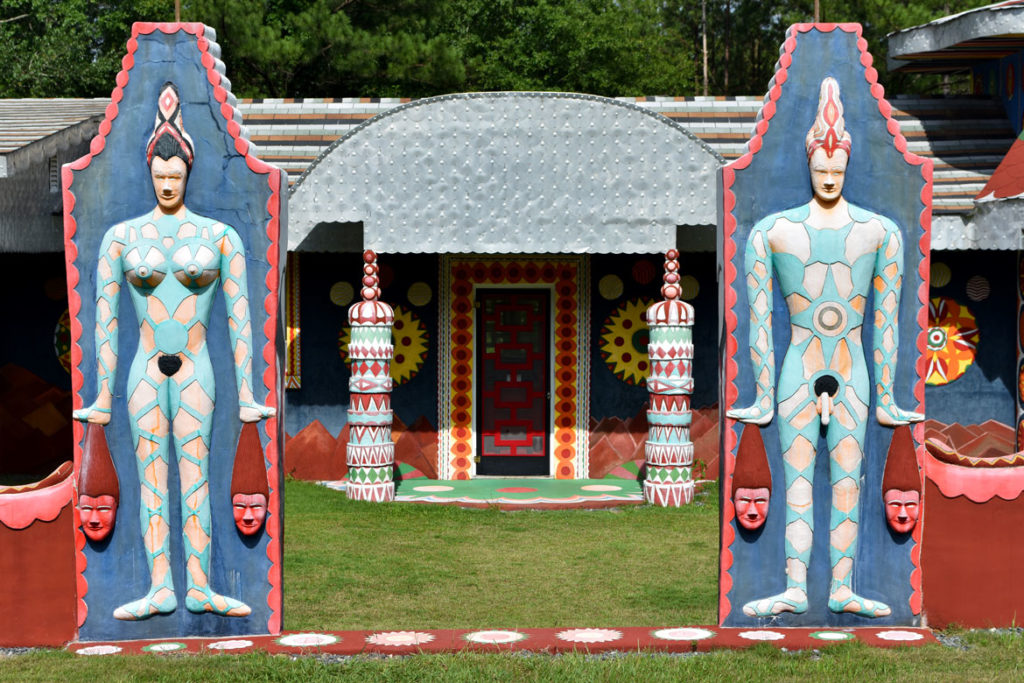
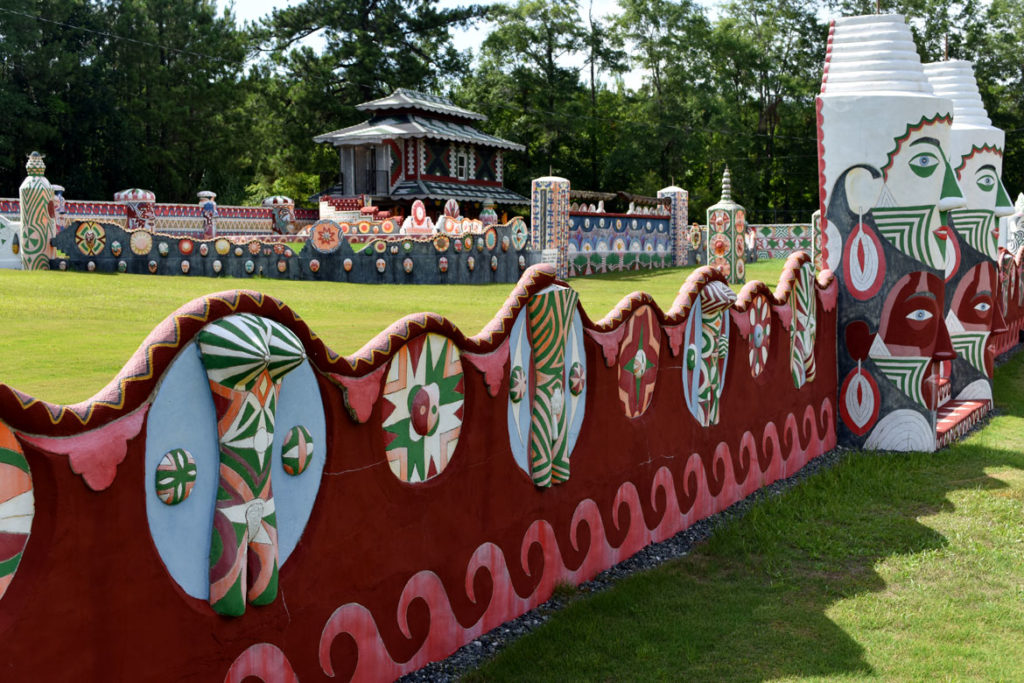
Illinois
Little library at 1524 W. Devon, Chicago.
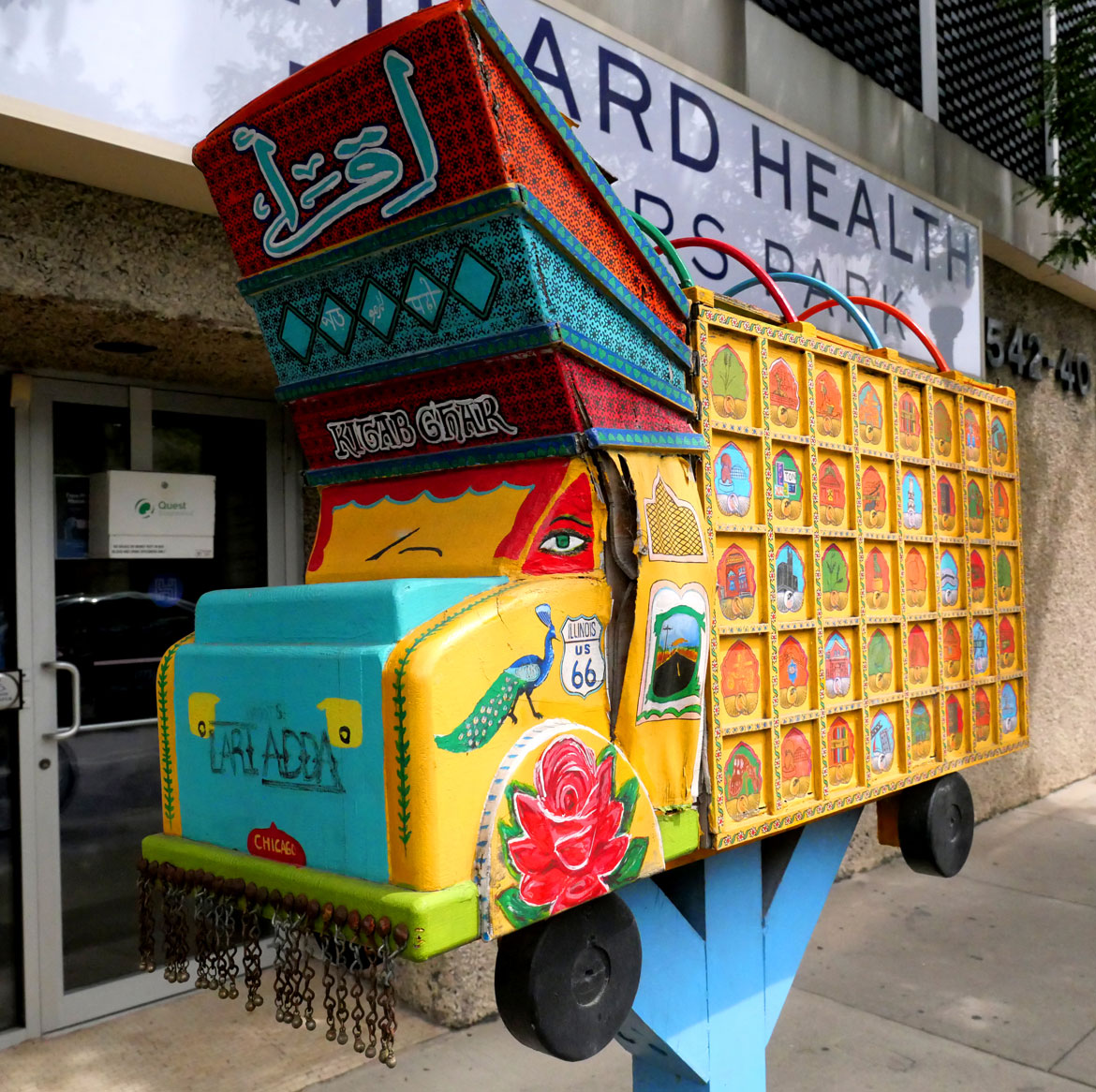
Mr. Imagination’s grotto at the Elliott Donnelley Youth Center, Michigan Avenue, Chicago.
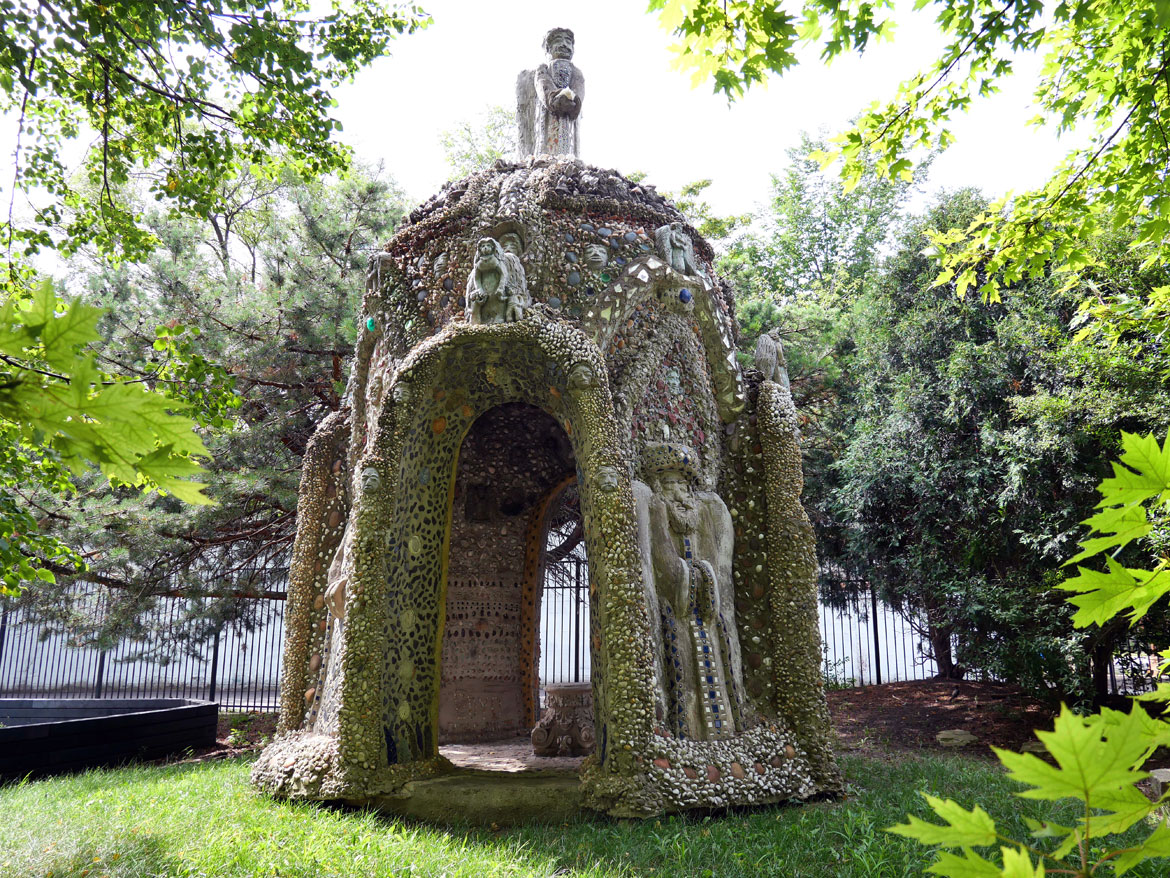
Yard show on Lunt at Peterson, Chicago.
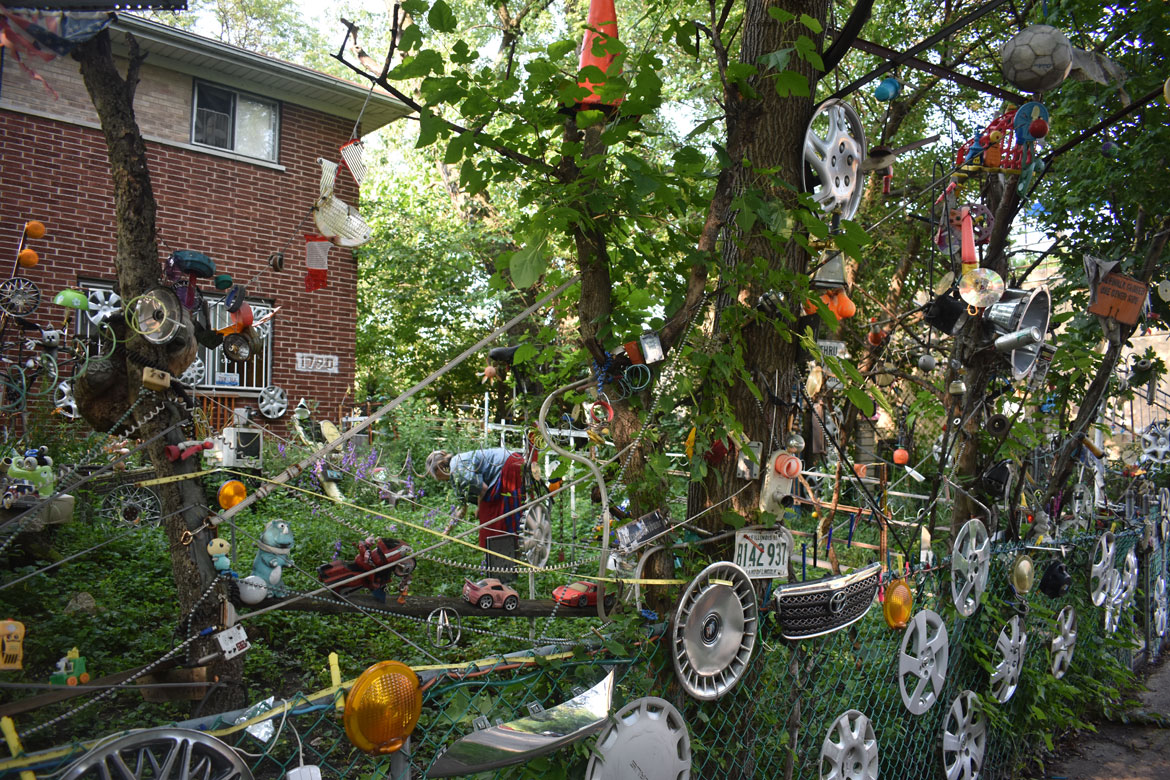
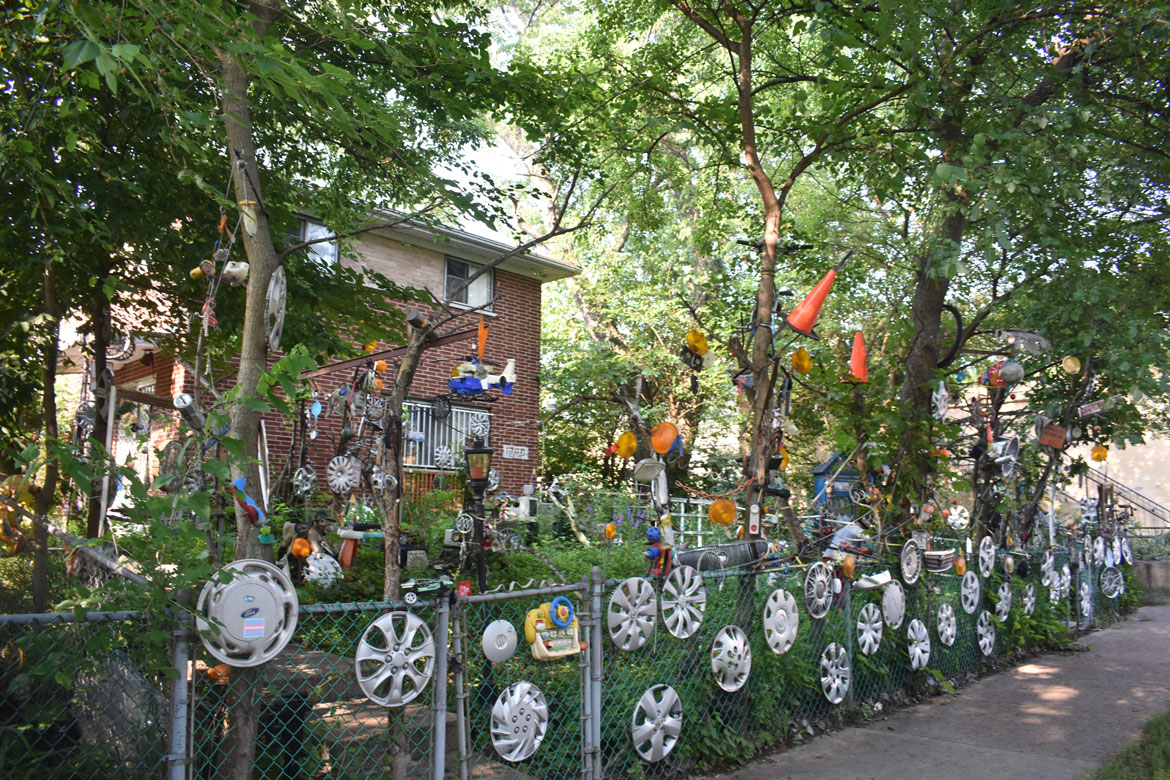
Iowa
Father Paul Dobberstein’s Grotto of the Redemption at West Bend, Iowa, and Holy Family Grotto at the Sisters of St. Francis Convent in Dubuque, Iowa.
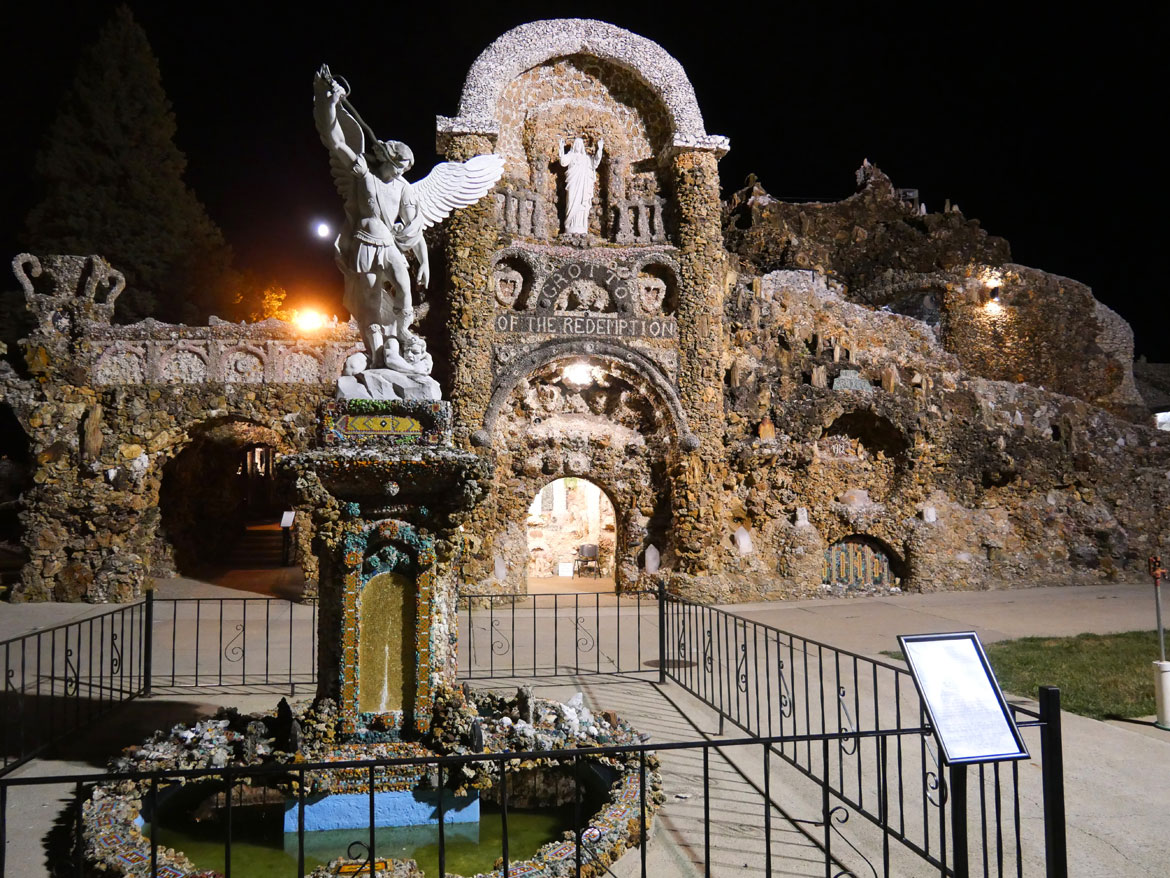
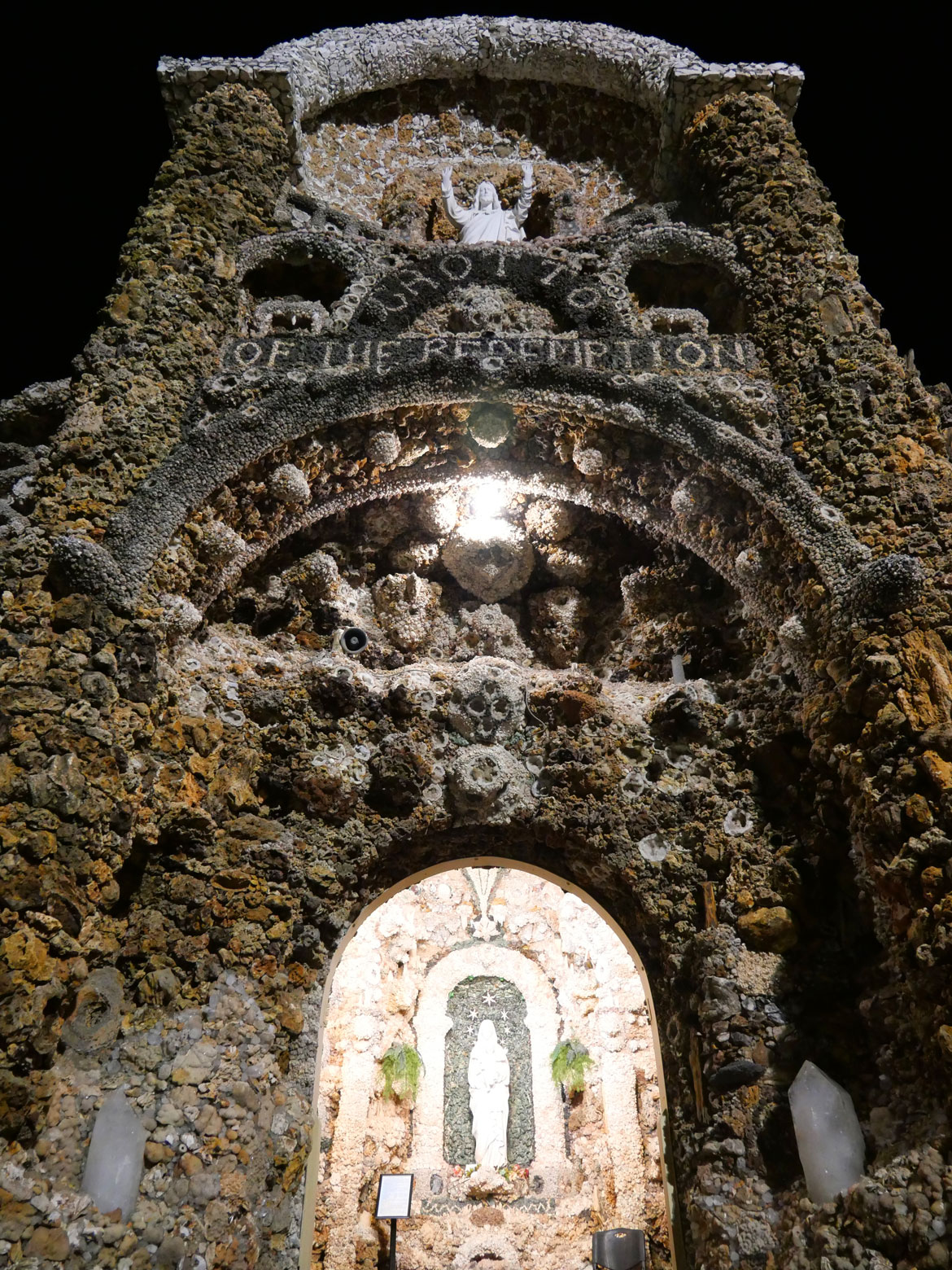
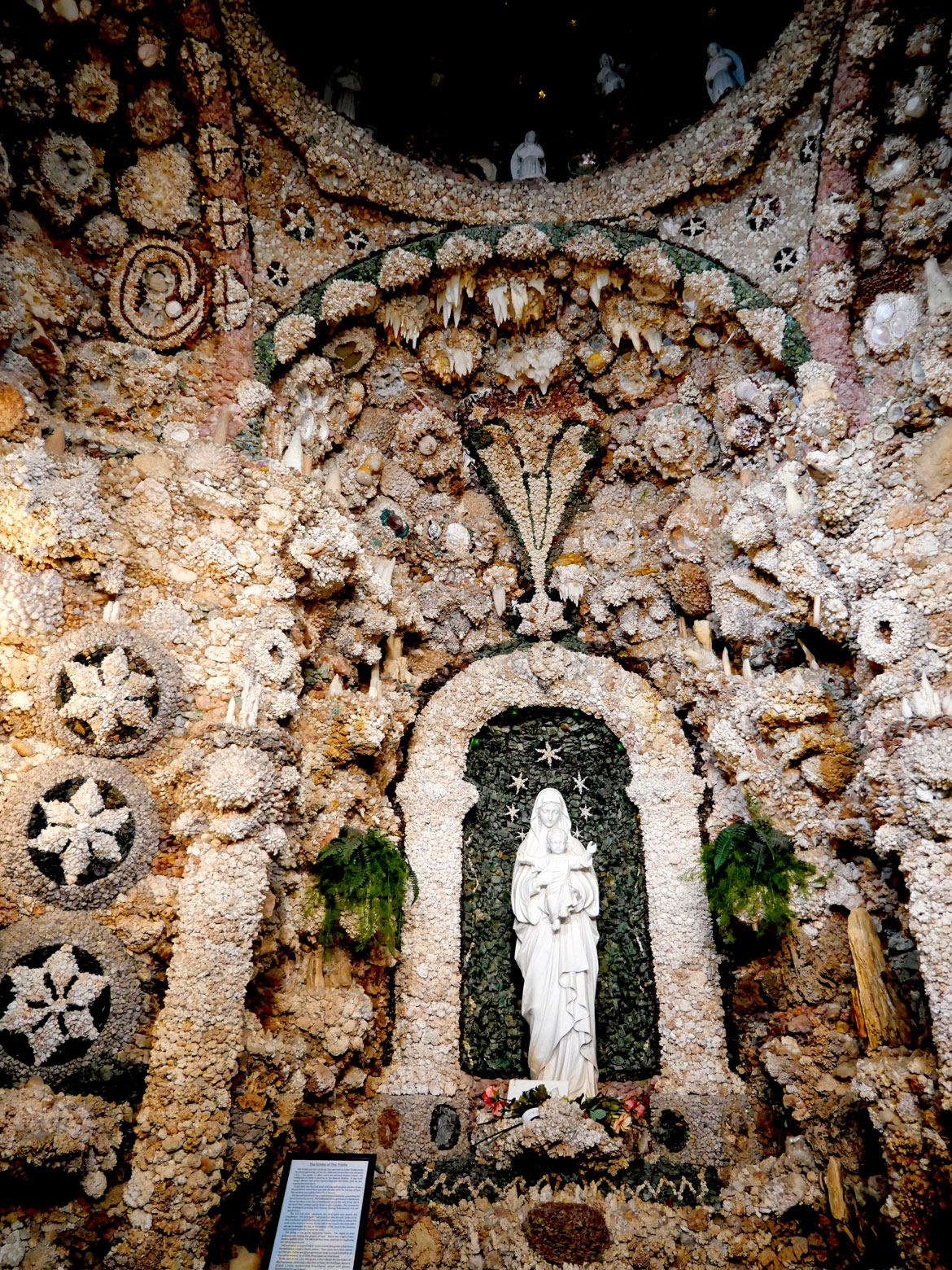
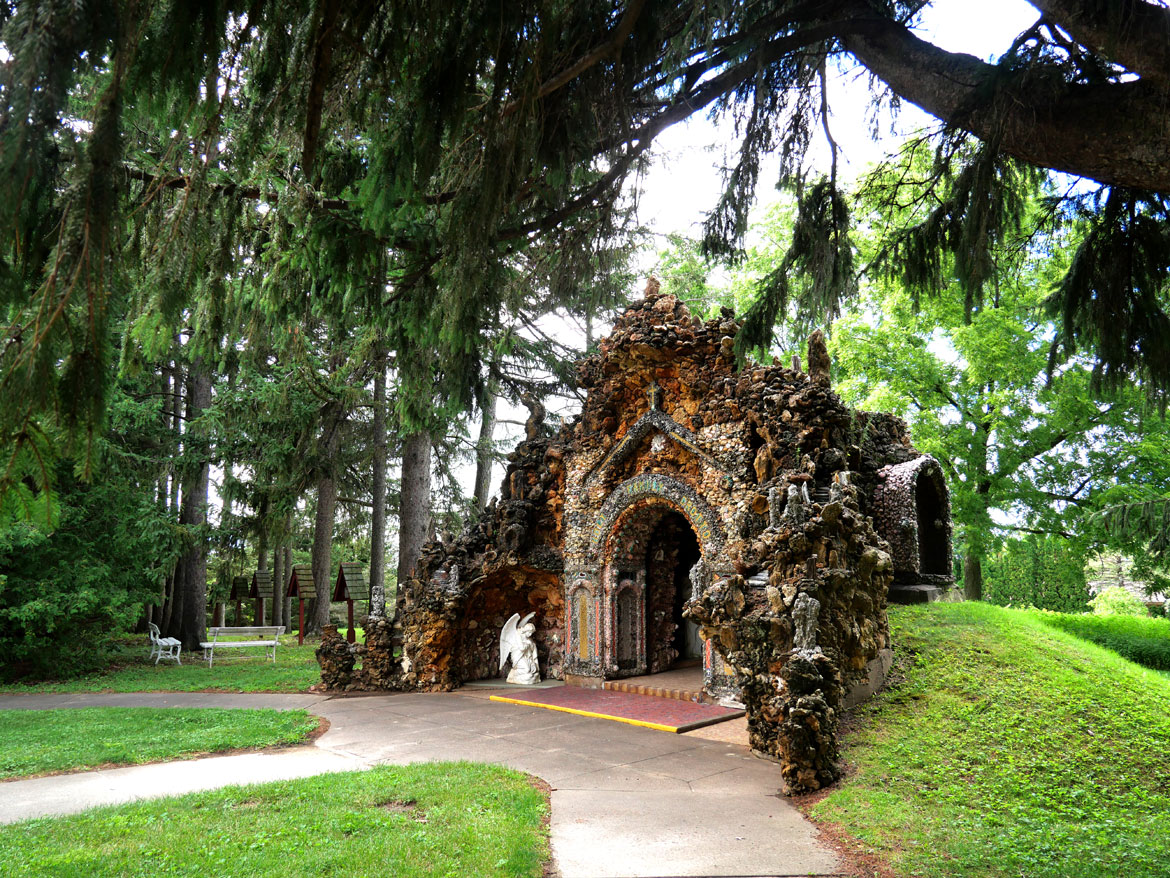
Louisiana
Kenny Hill Sculpture Garden on Bayouside Drive in Chauvin, Louisiana.
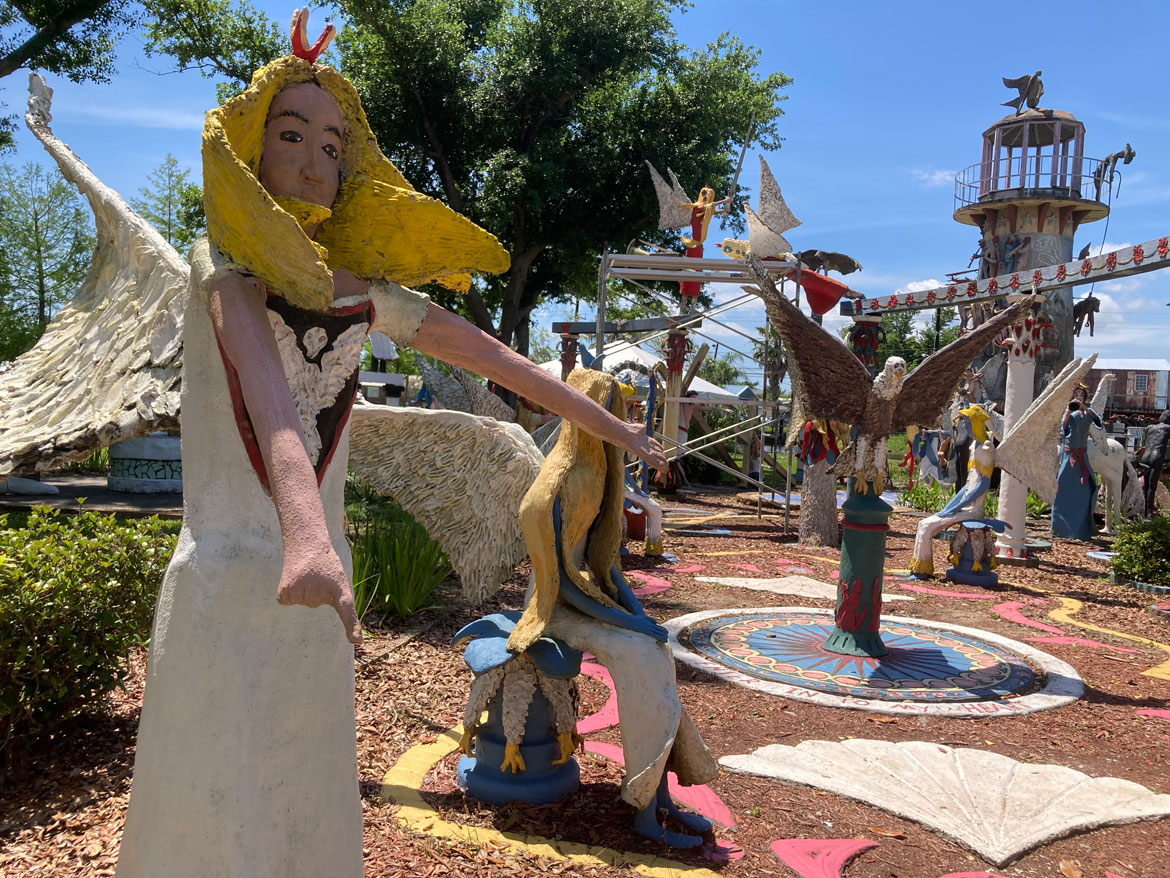
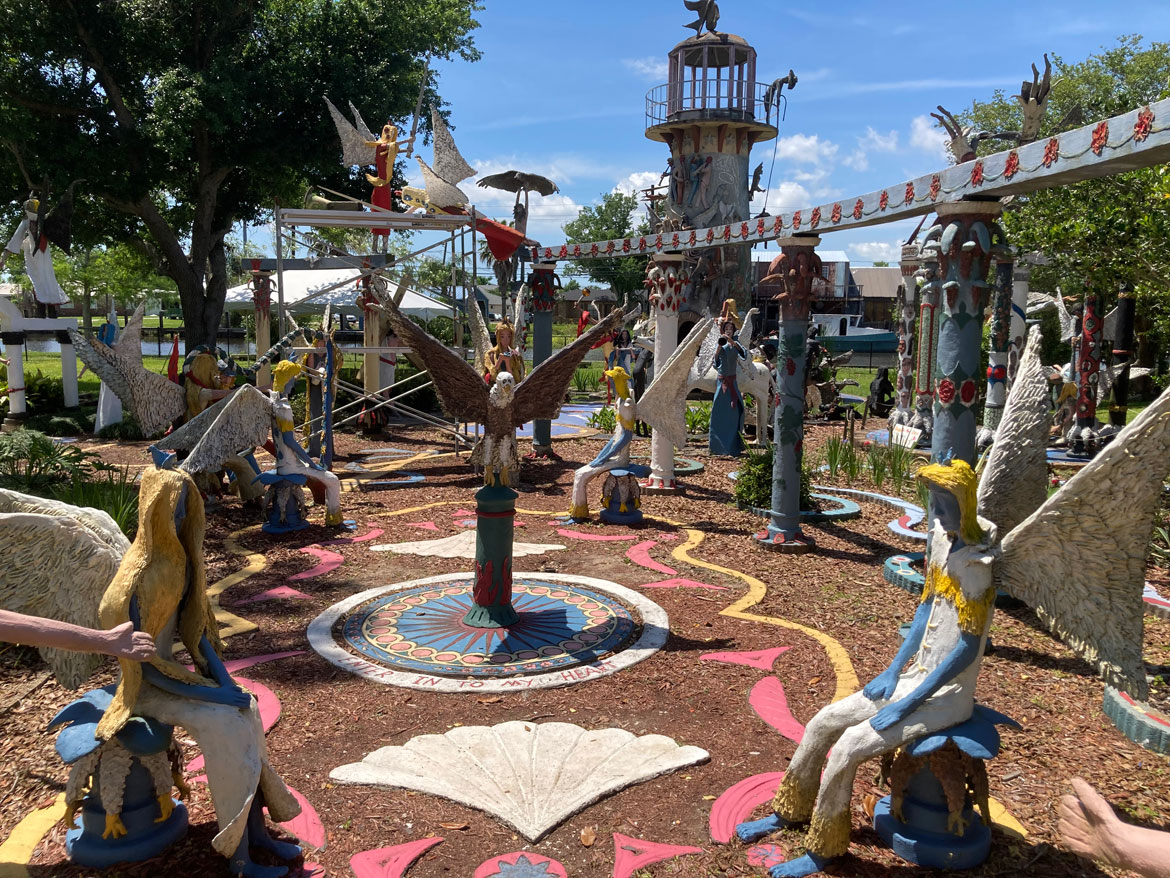
Music Box Villiage by the art collective New Orleans Airlift in New Orleans, Louisiana.
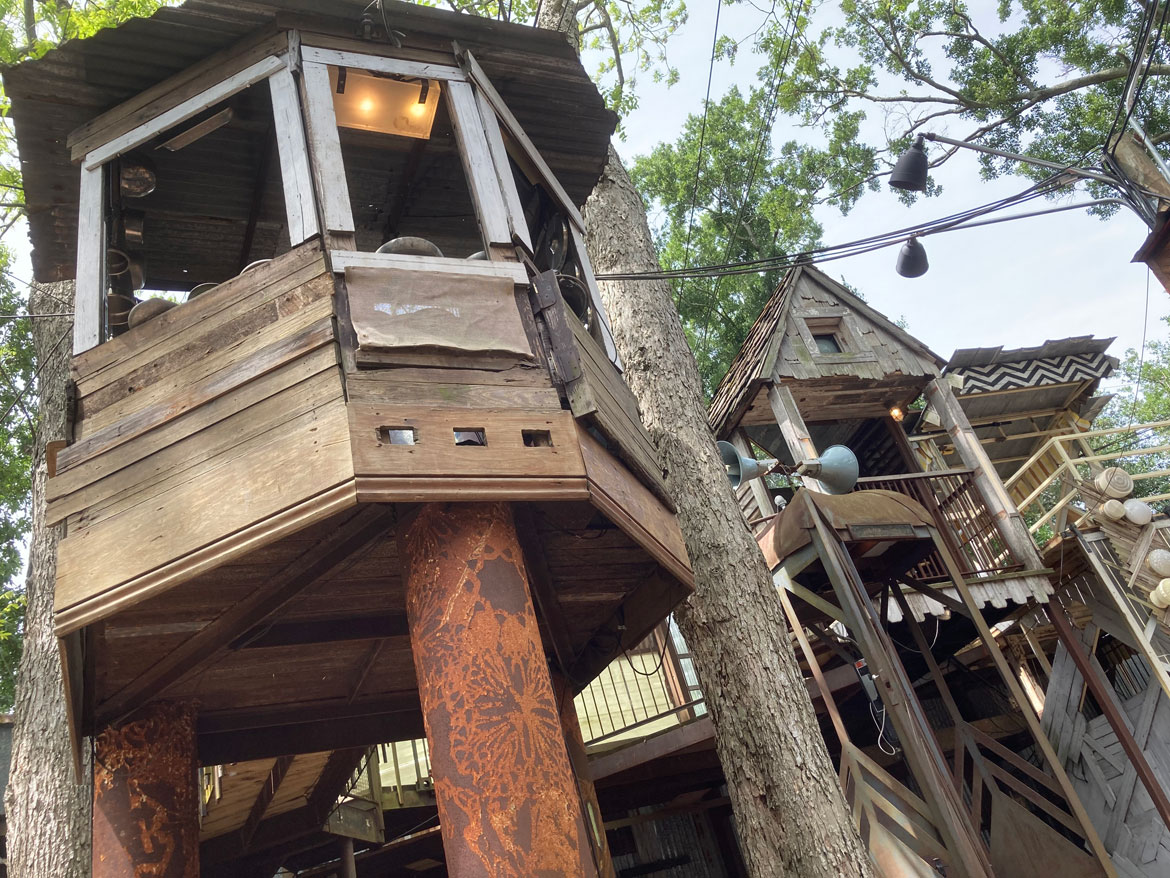
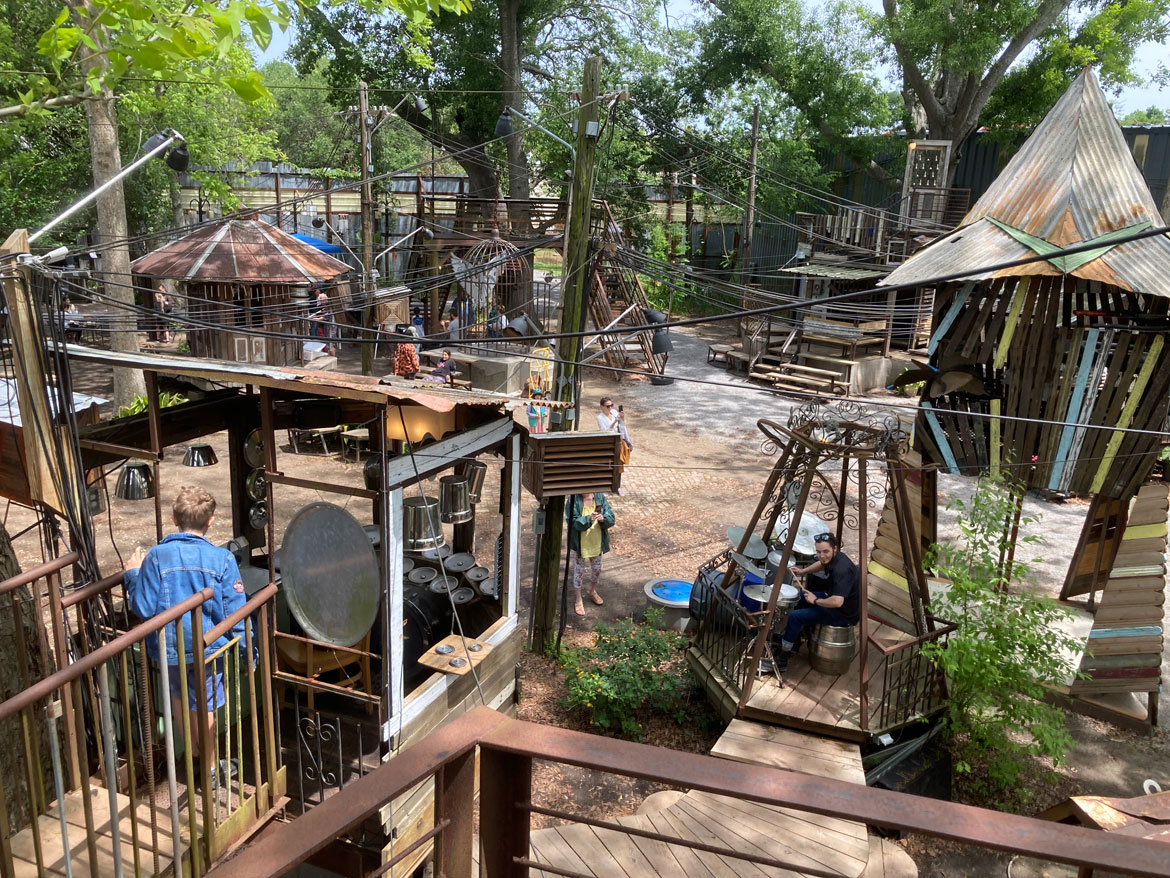
Dr. Charles Smith’s African-American Heritage Museum and Black Veterans Archive in Hammond, Louisiana.
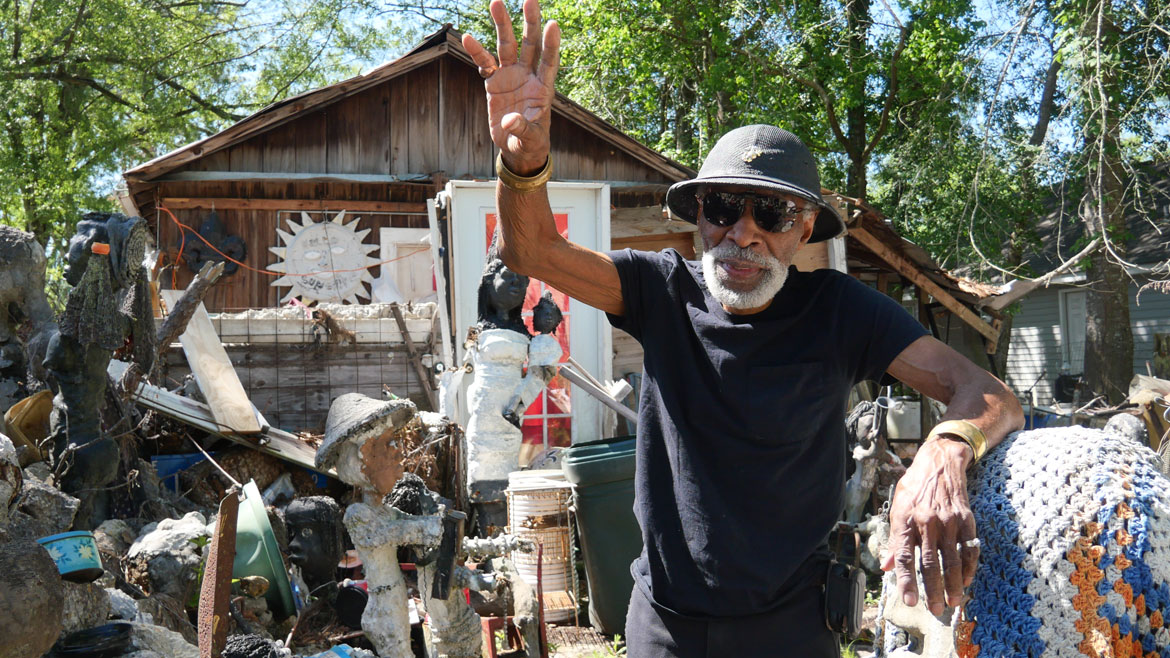
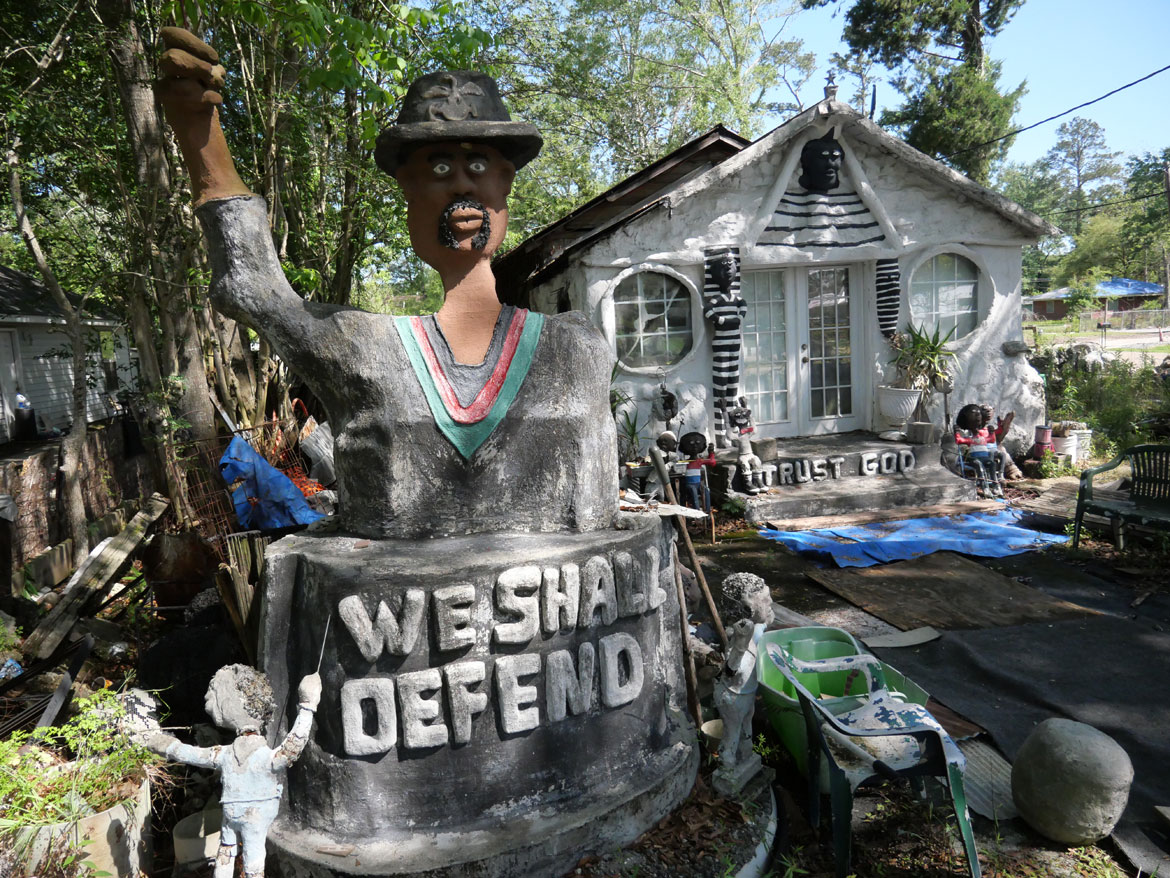
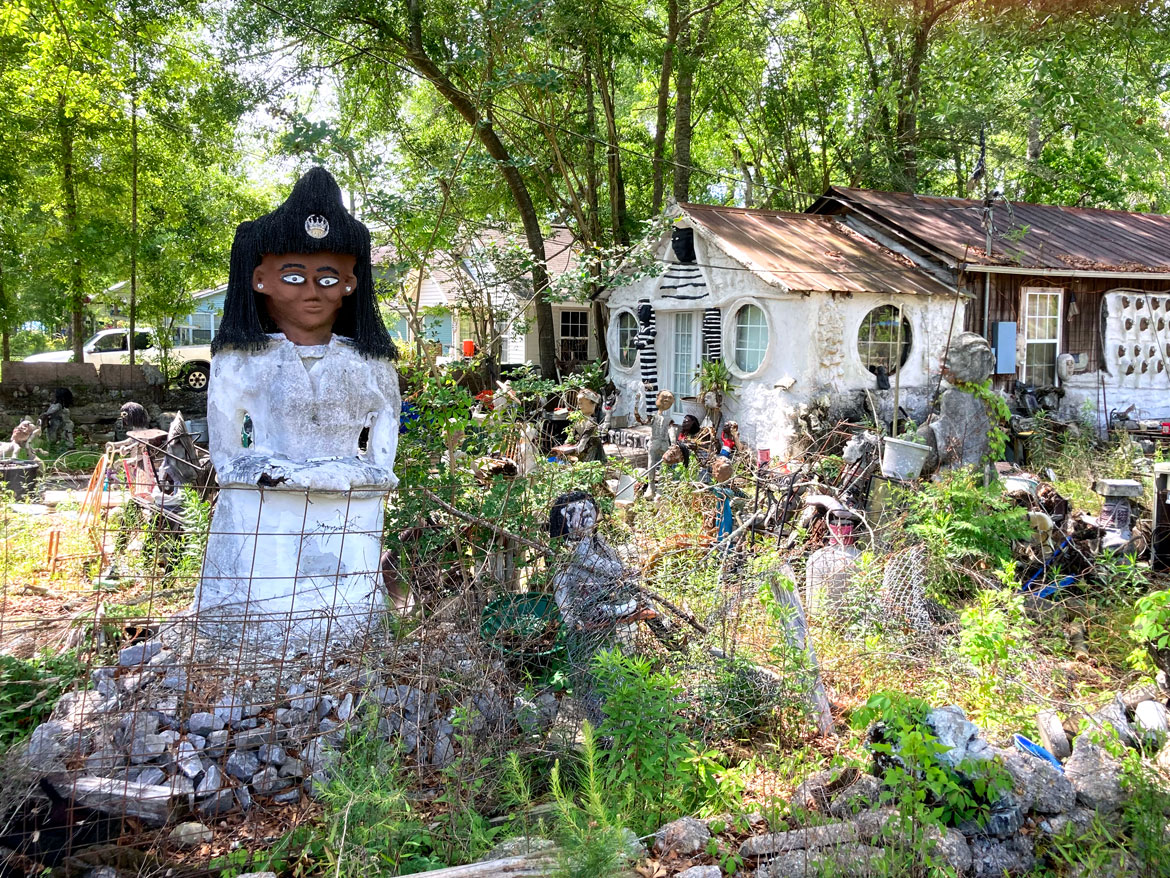
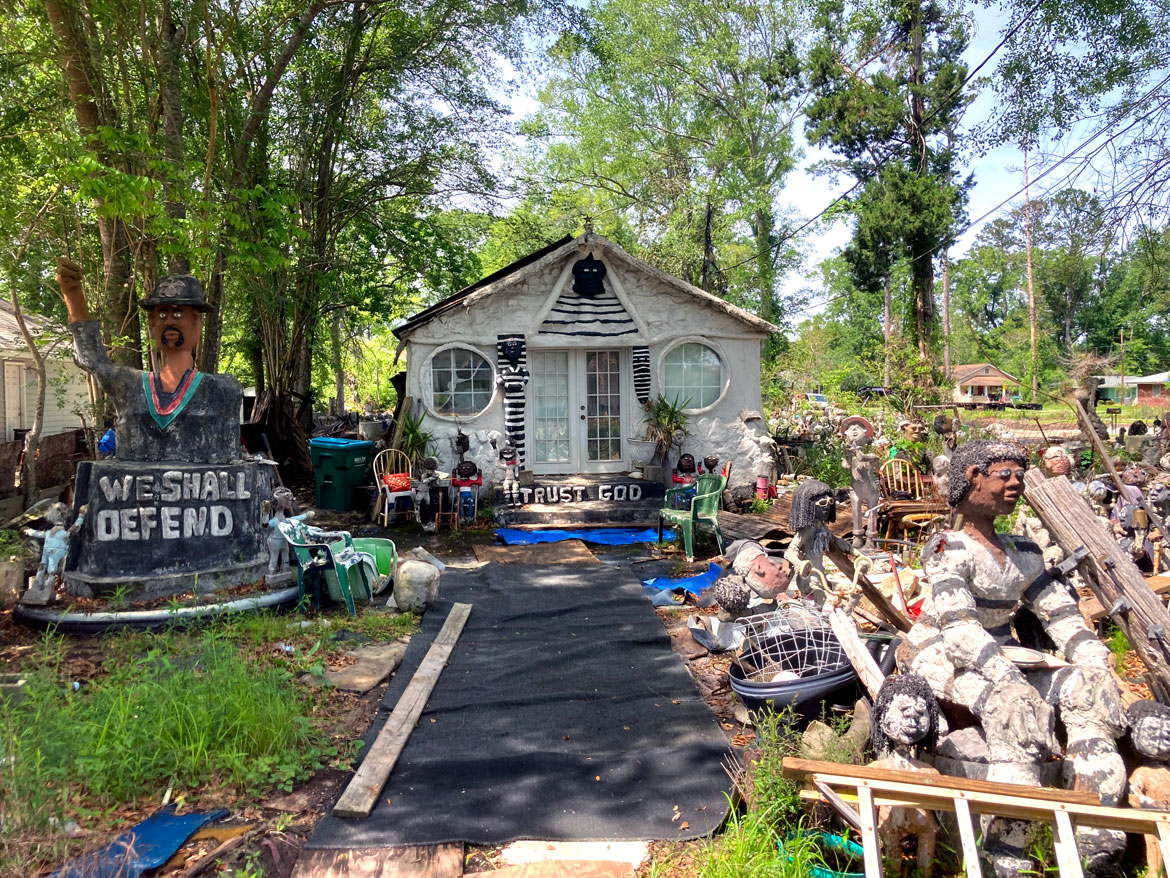
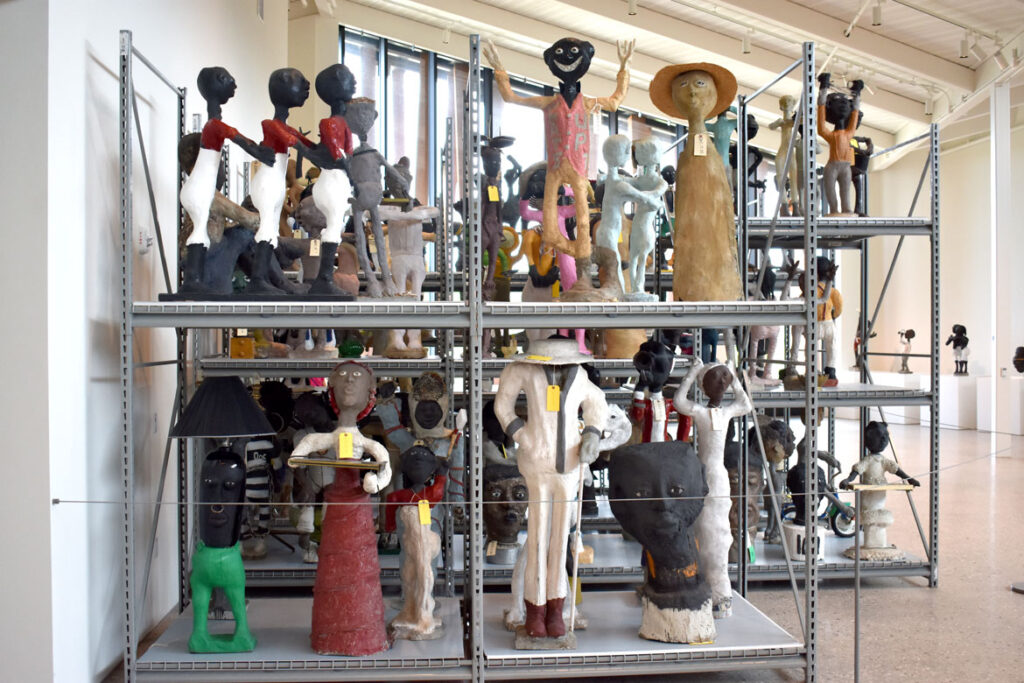
Maine
Bernard “Blackie” Langlais home in Cushing, Maine
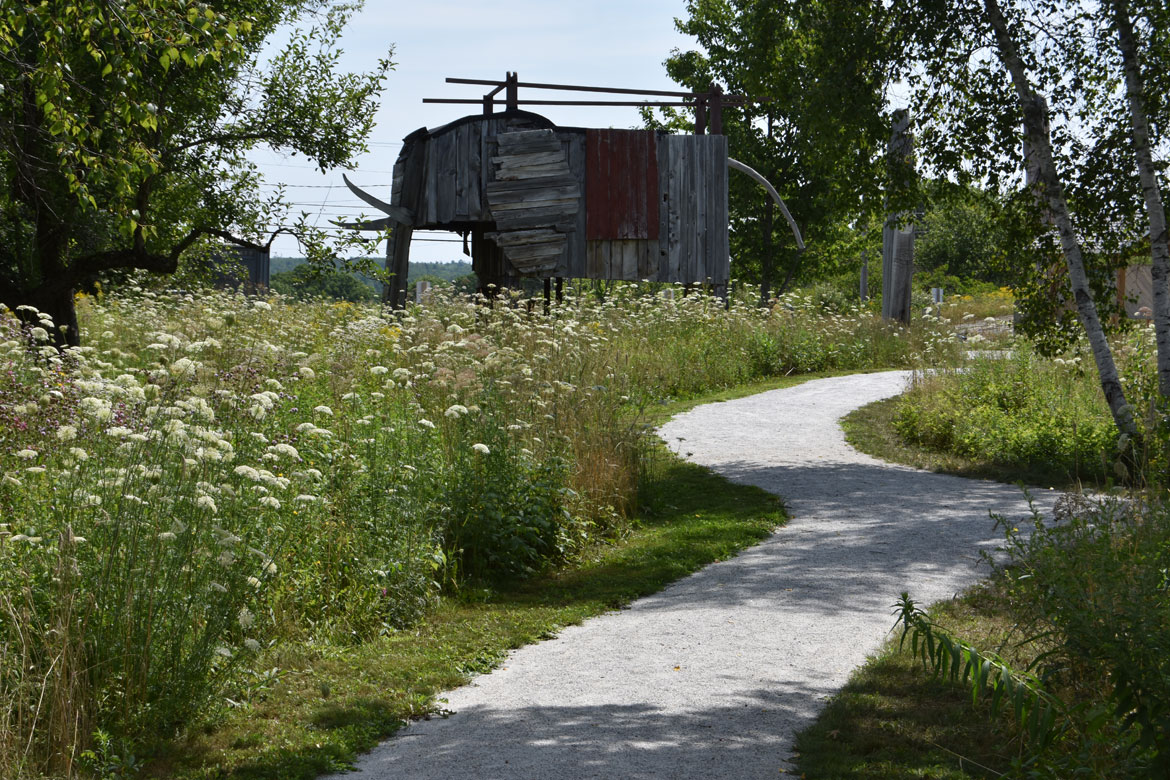
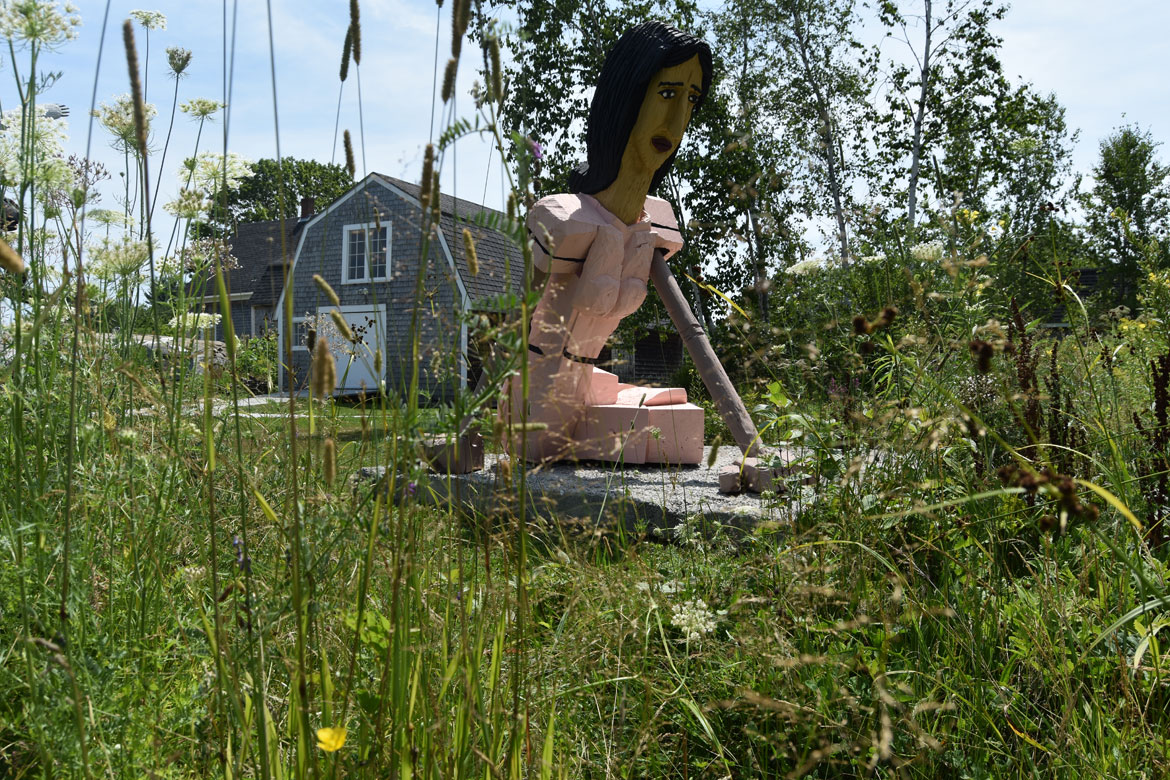
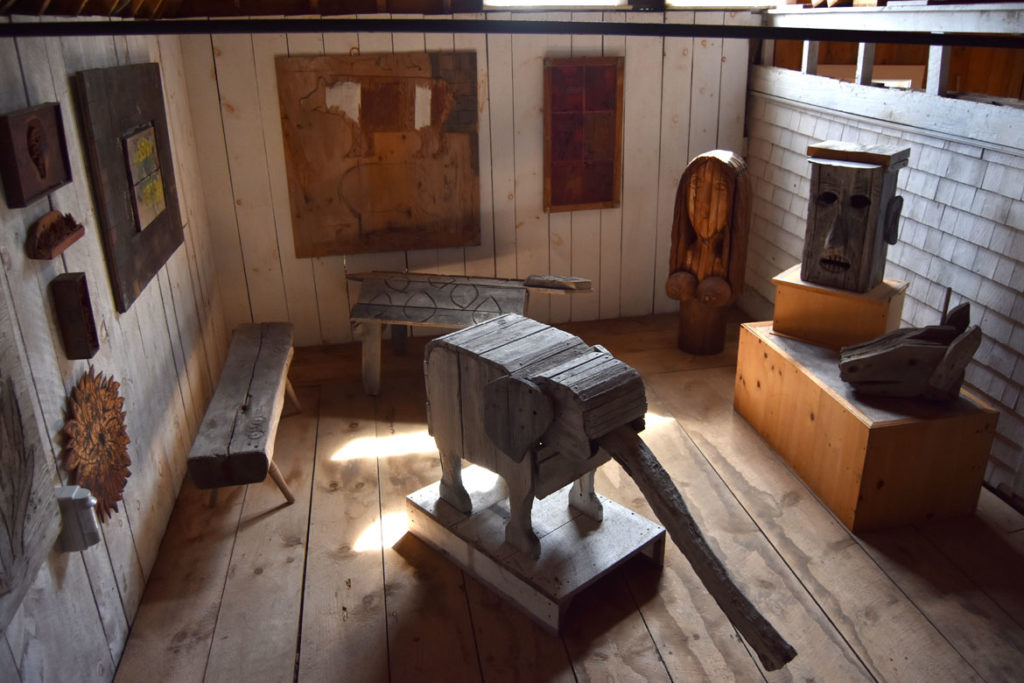
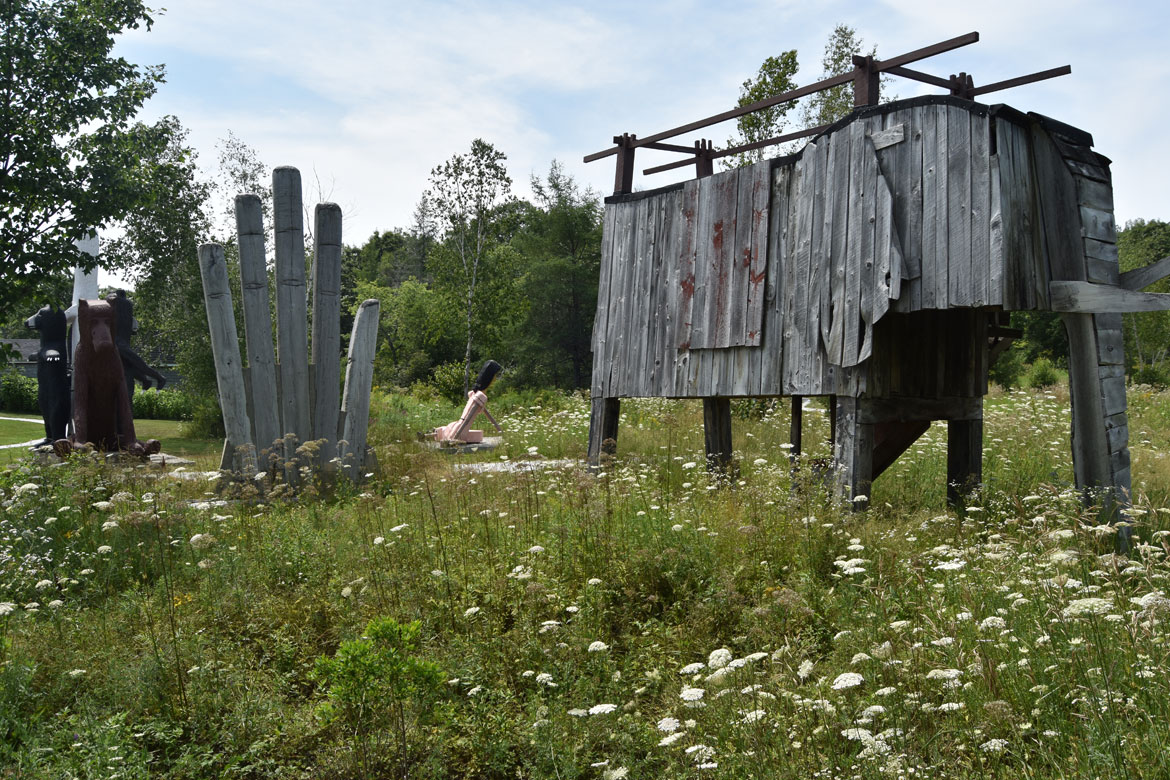


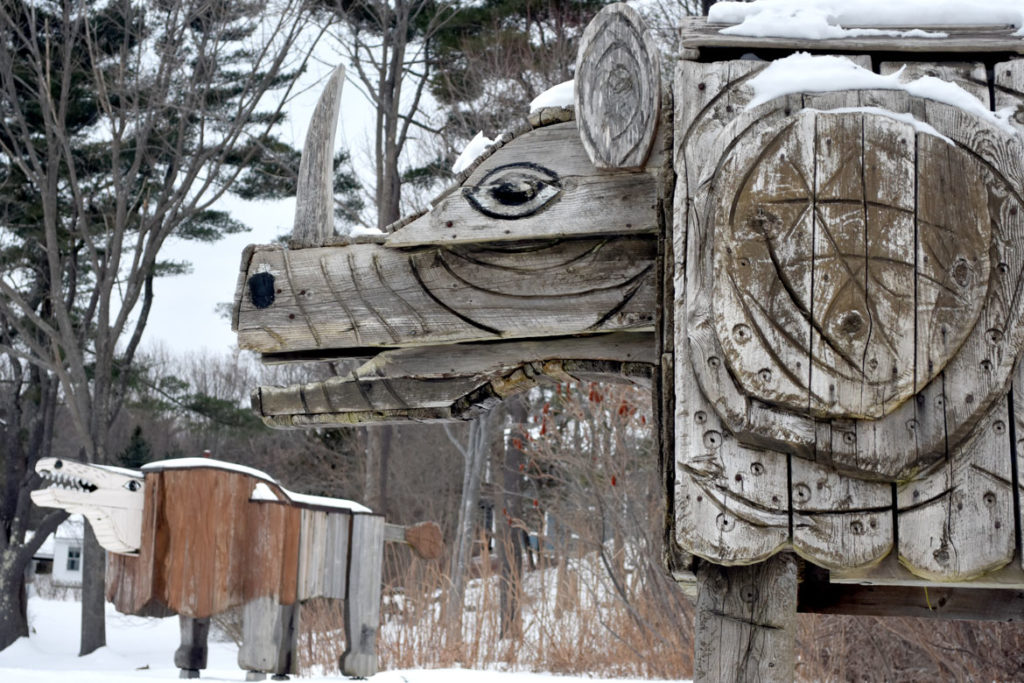
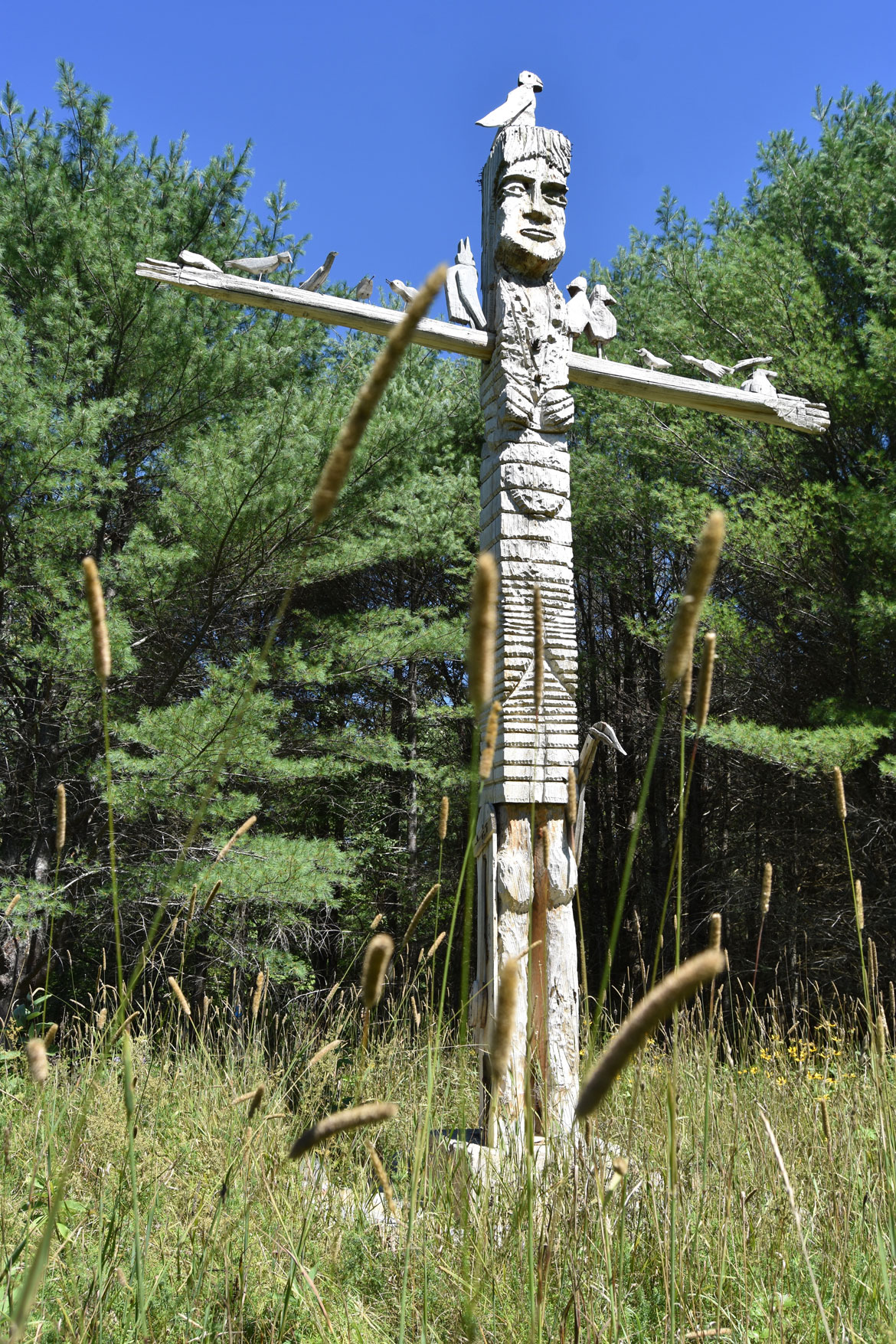
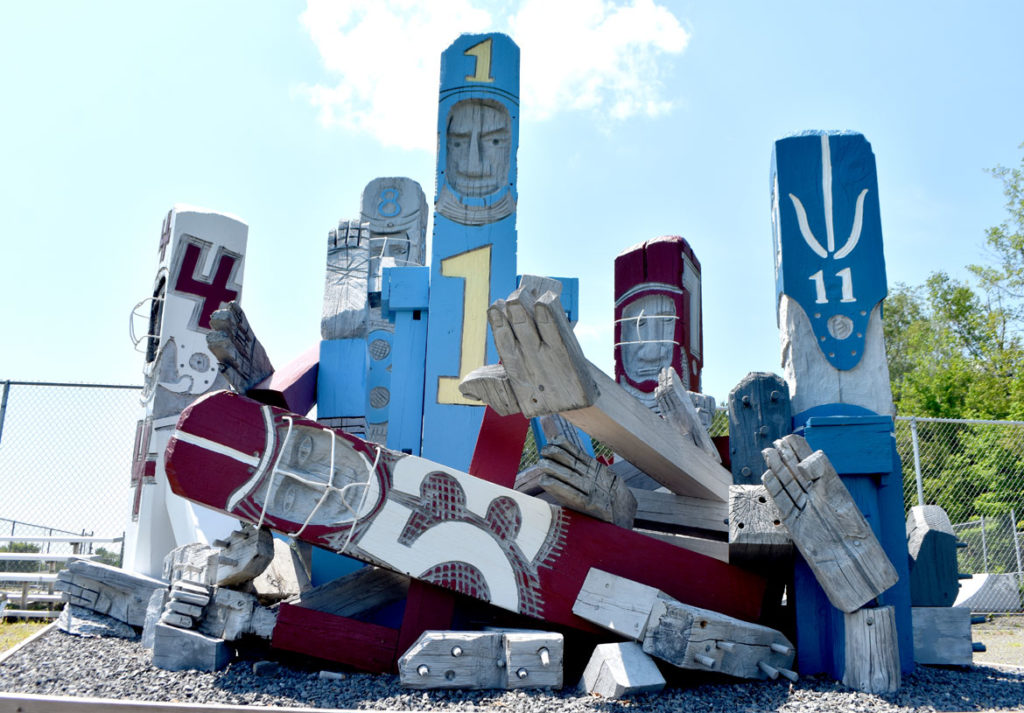
Stephen Leakos’s Skowhegan Downtown Art Gallery and Leakos Auction in Skowhegan, Maine.
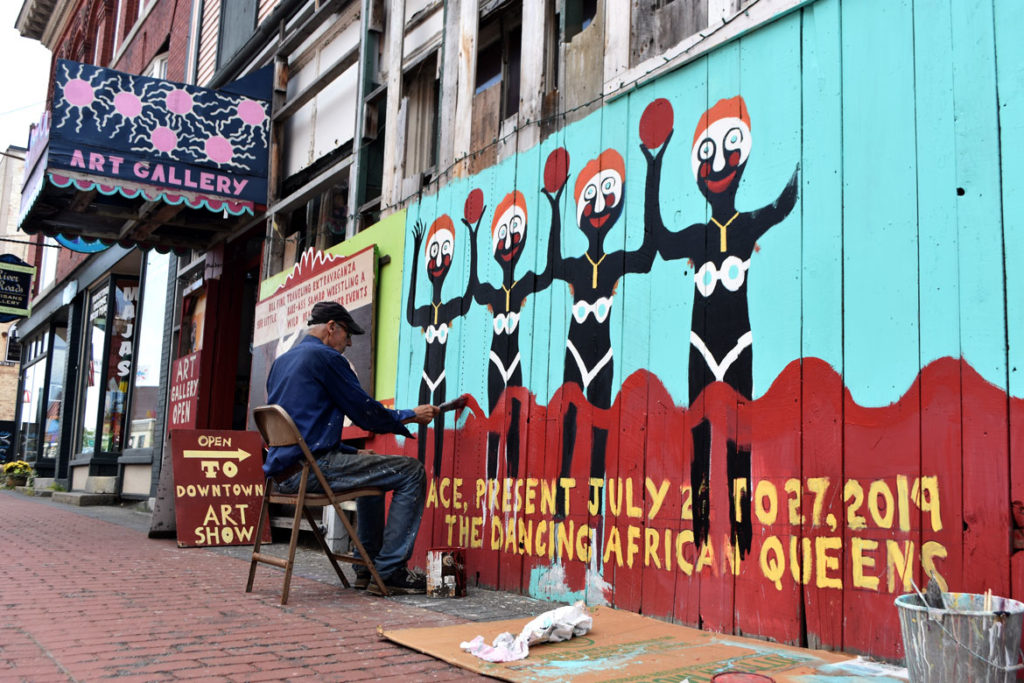
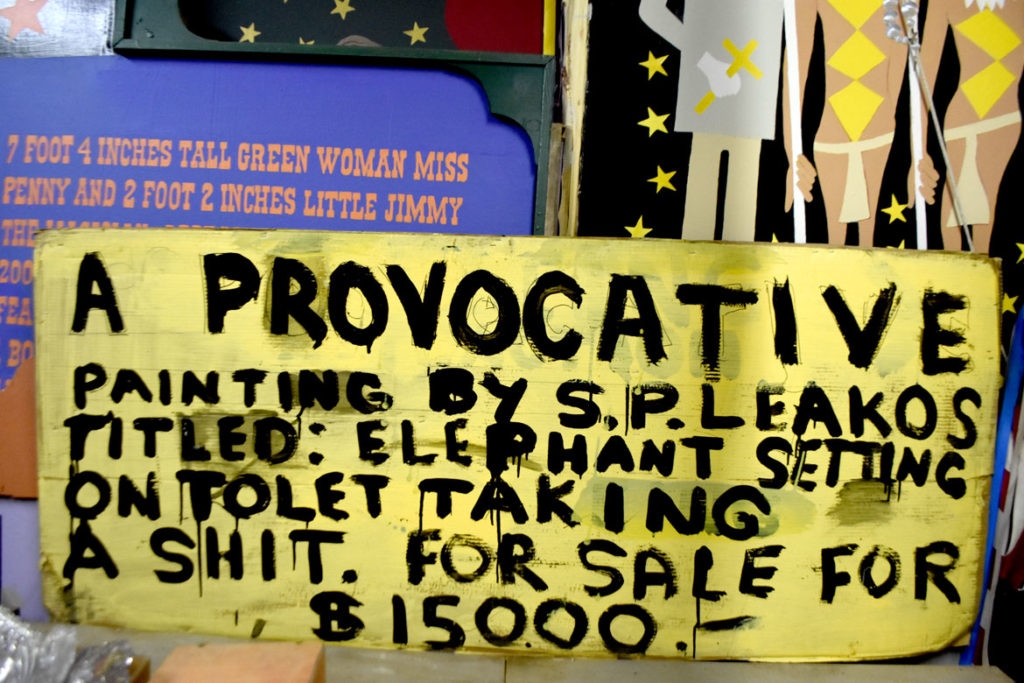
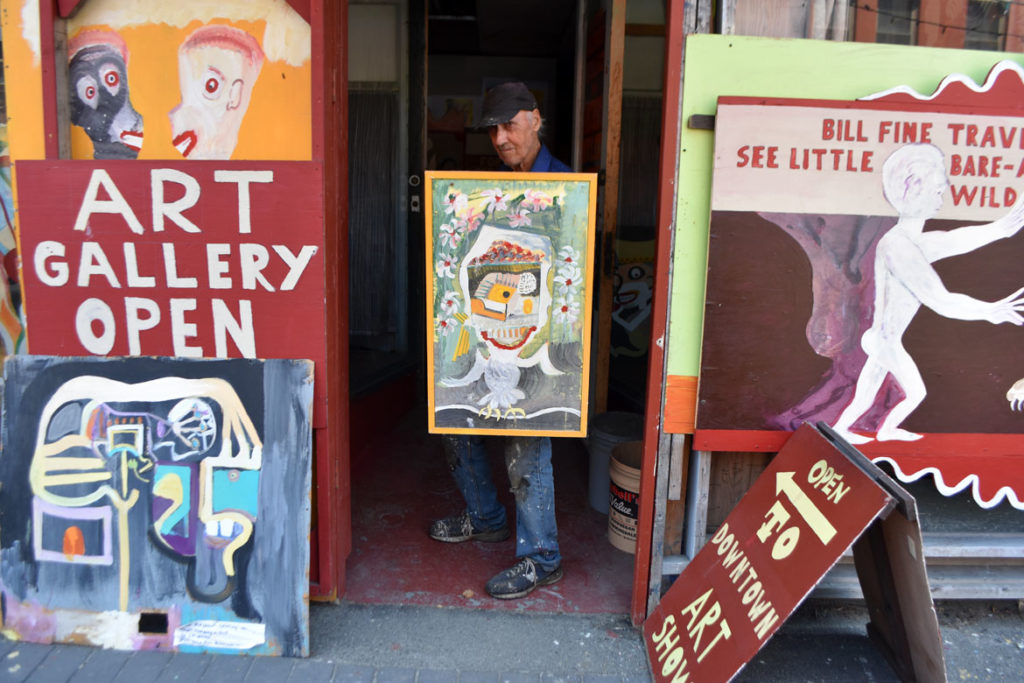
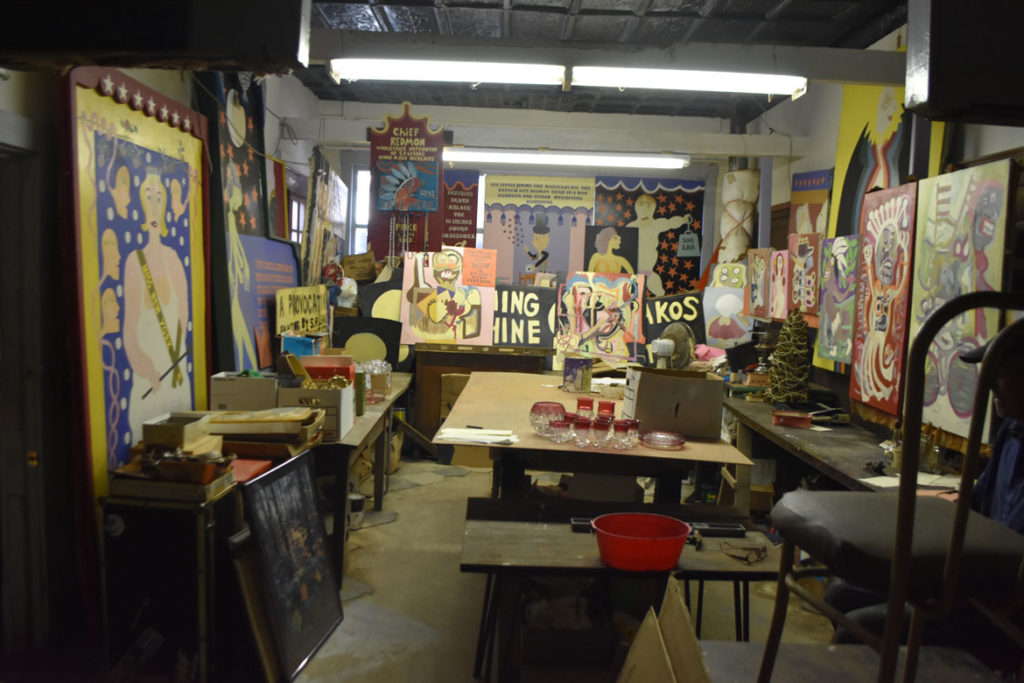
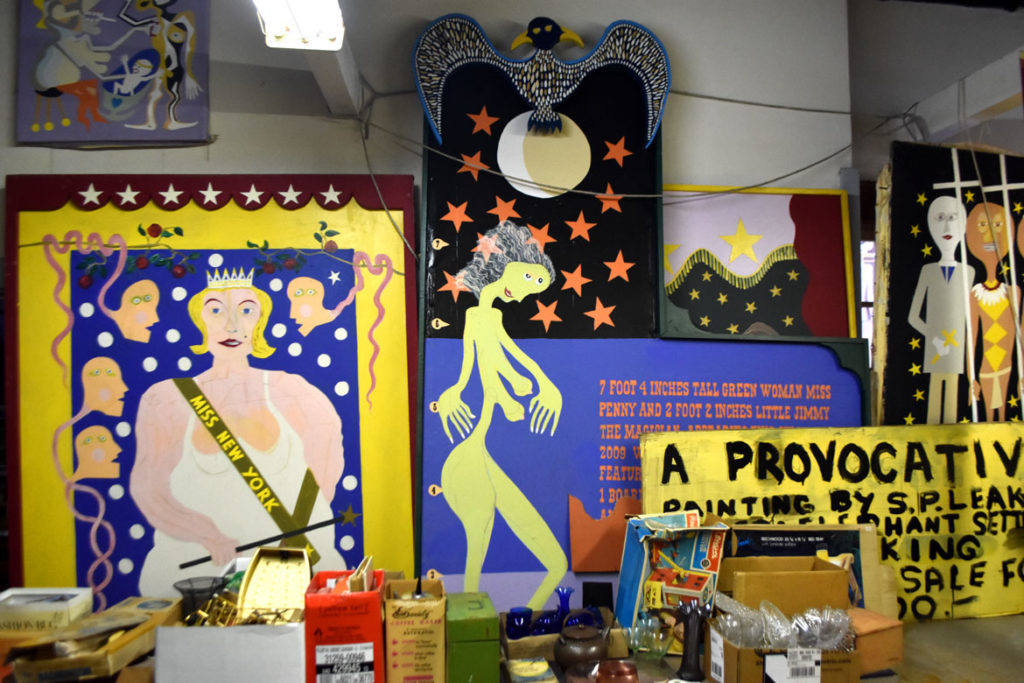
Maryland
Clarke Bedford’s Vanadu Gardens, Hyattsville, Maryland. Clark Bedford has transformed his home near Washington, D.C., into Vanadu Gardens, a wonderland of metal contraptions and constructions, two buses, a station wagon, a van and whirligigs.
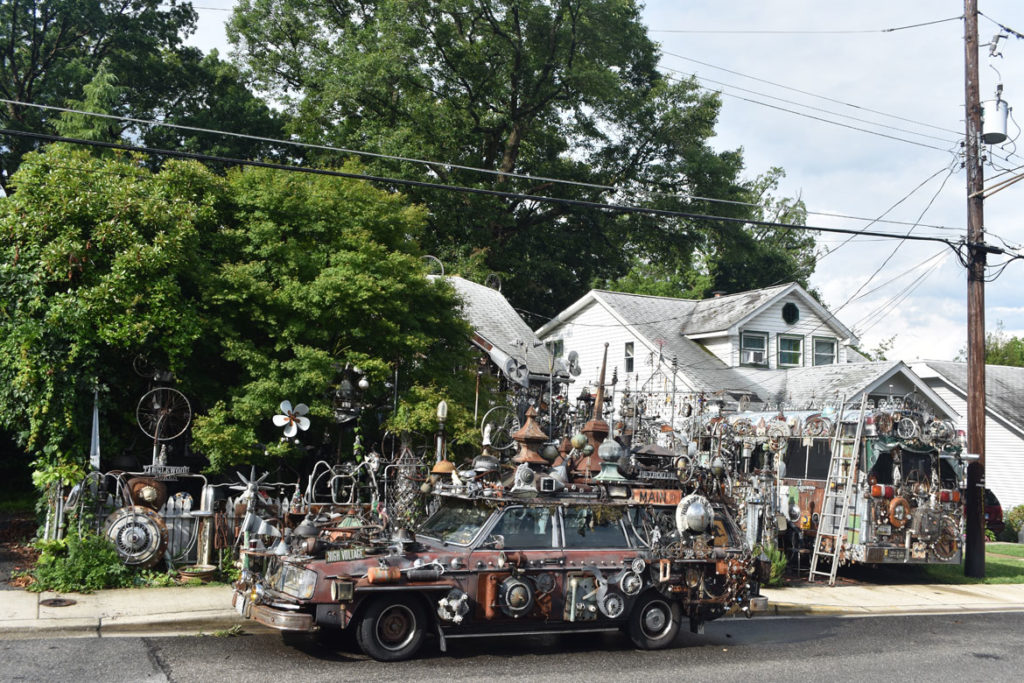
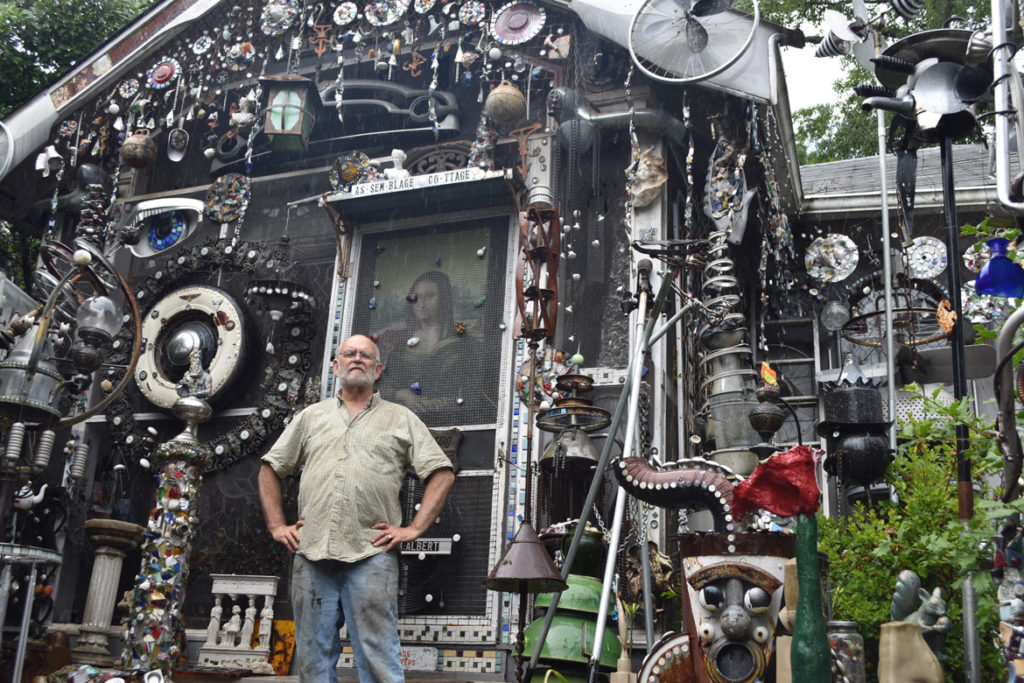
Home of Katherine Fahey and Dan Van Allen, Baltimore. Fahey is a puppeteer and crankie-maker and Dan Van Allen is an artist and furniture restorer. He’s lived in this house for decades, filling rooms with altars and shrines and collections.
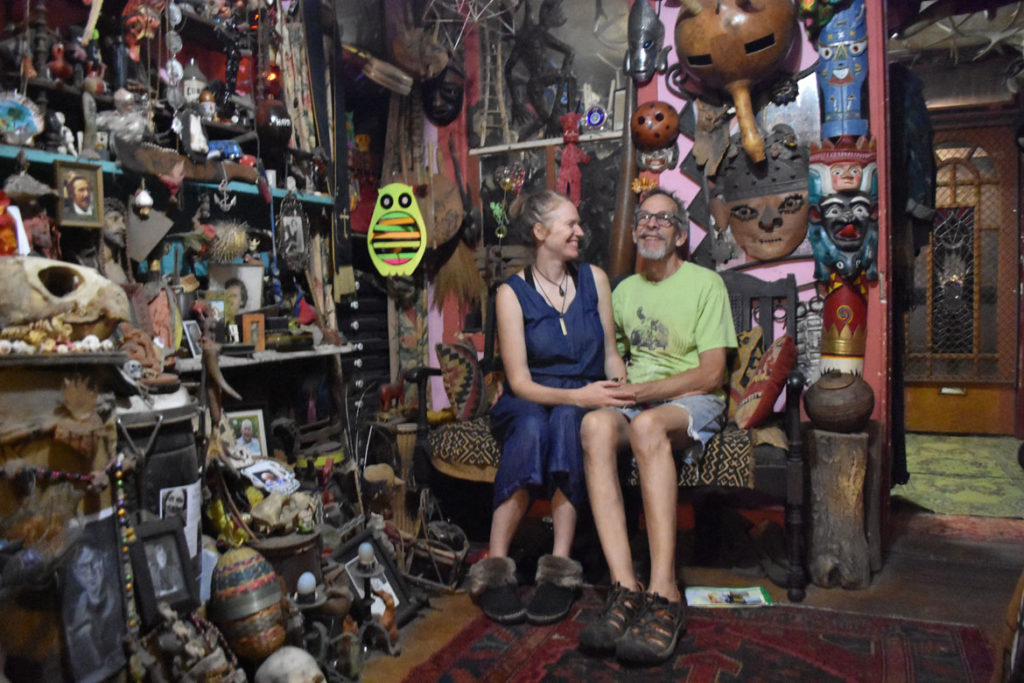
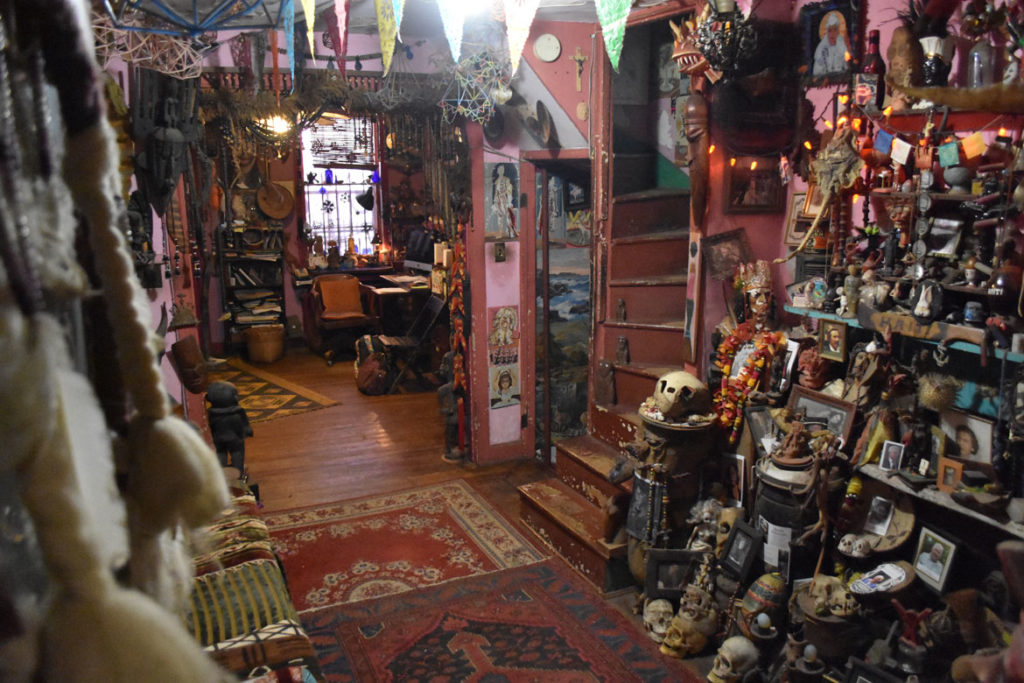
Massachusetts
Roger Babson’s Dogtown Boulders in Gloucester, Massachusetts. During the Depression, the Gloucester millionaire hired unemployed quarry workers to carve inspirational slogans into the stones. “Another thing I have been doing, which I hope will be carried on after my death, is the carving of mottoes on the boulders at Dogtown,” Babson (1875-1967) wrote in his autobiography. “My family says that I am defacing the boulders and disgracing the family with these inscriptions, but the work gives me a lot of satisfaction, fresh air, exercise, and sunshine. I am really trying to write a simple book with words carved in stone instead of on printed paper.”
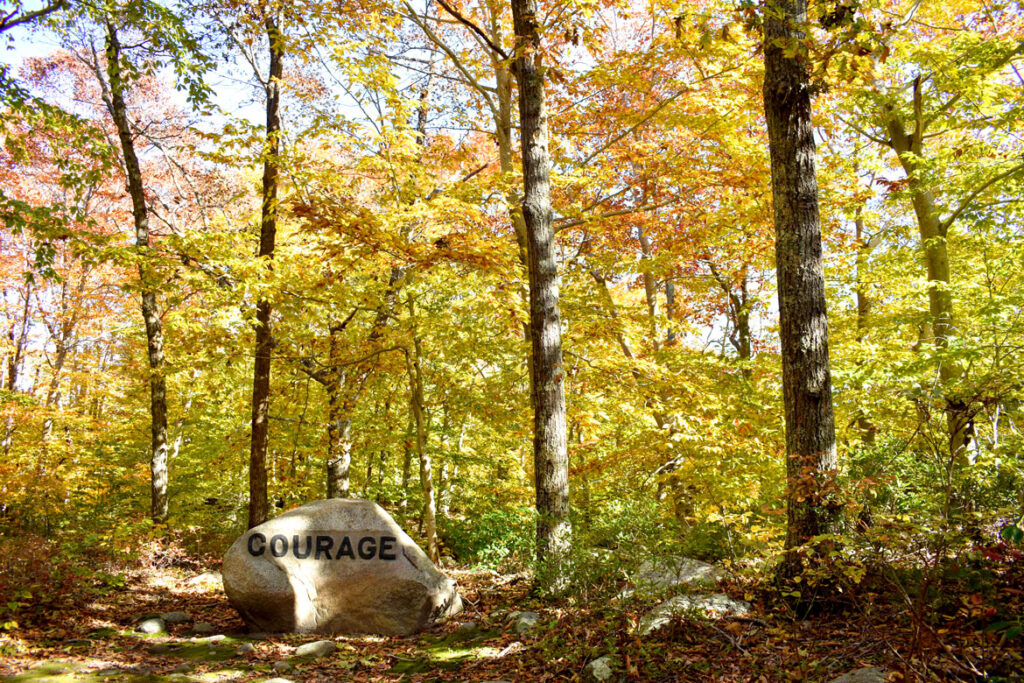
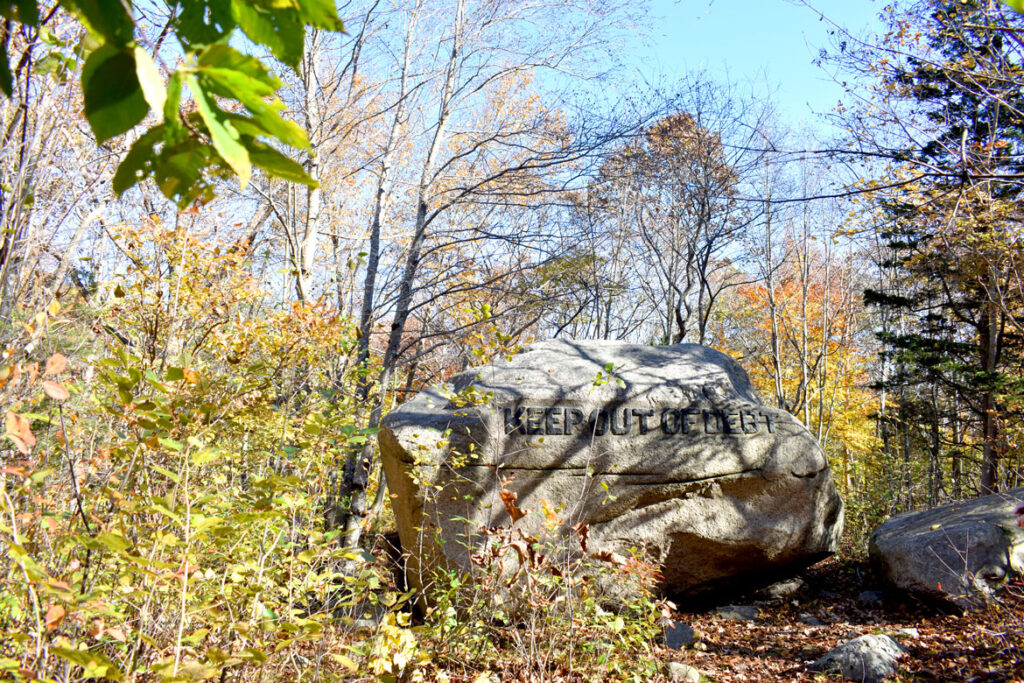
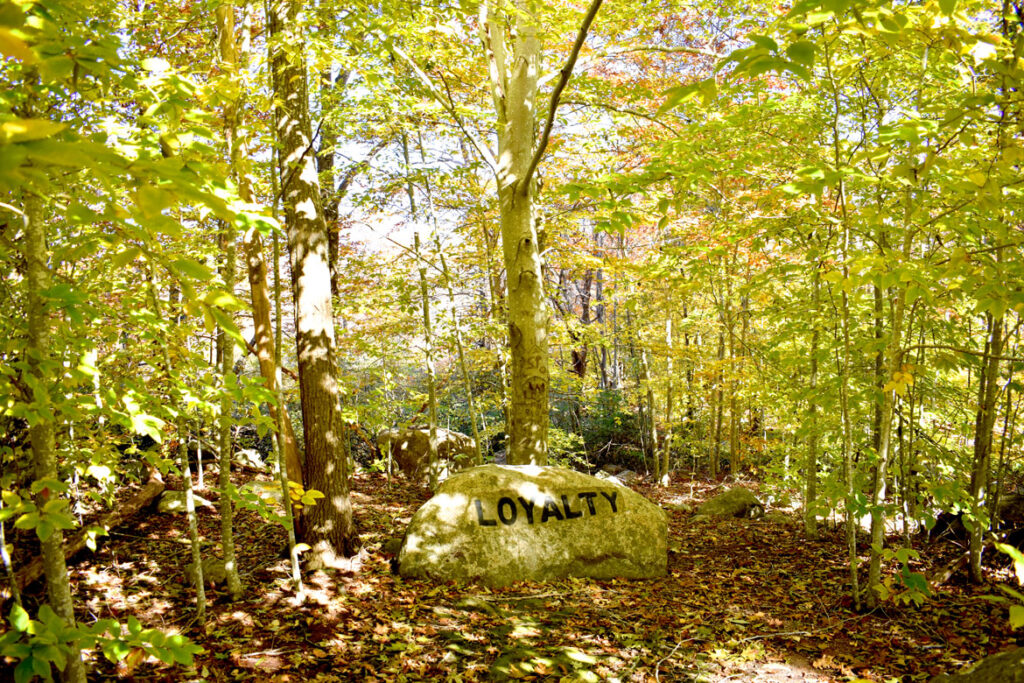
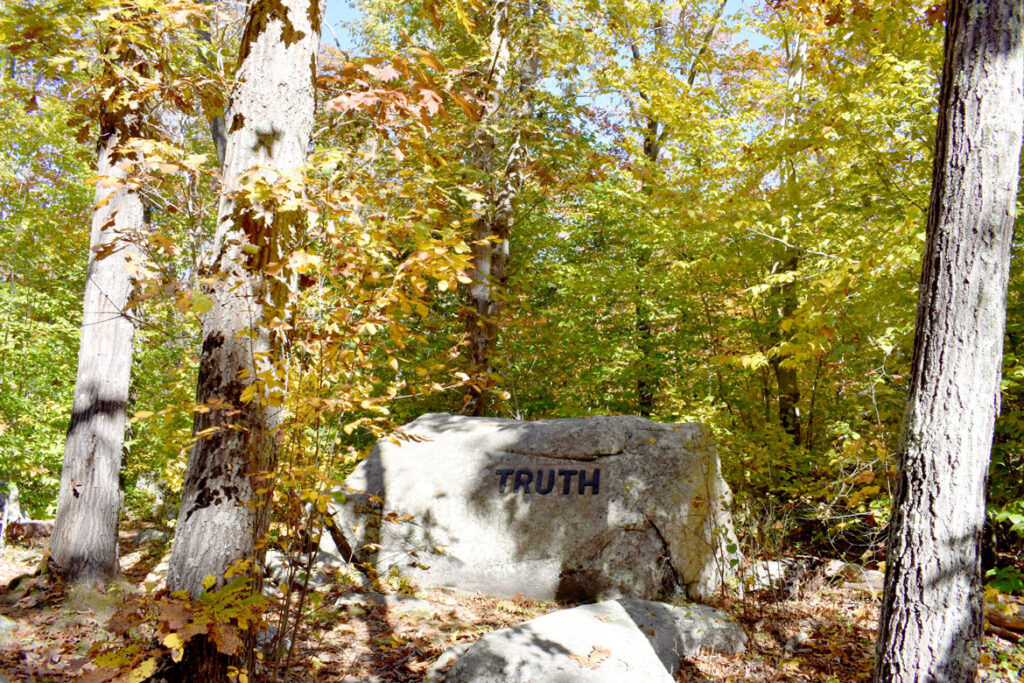
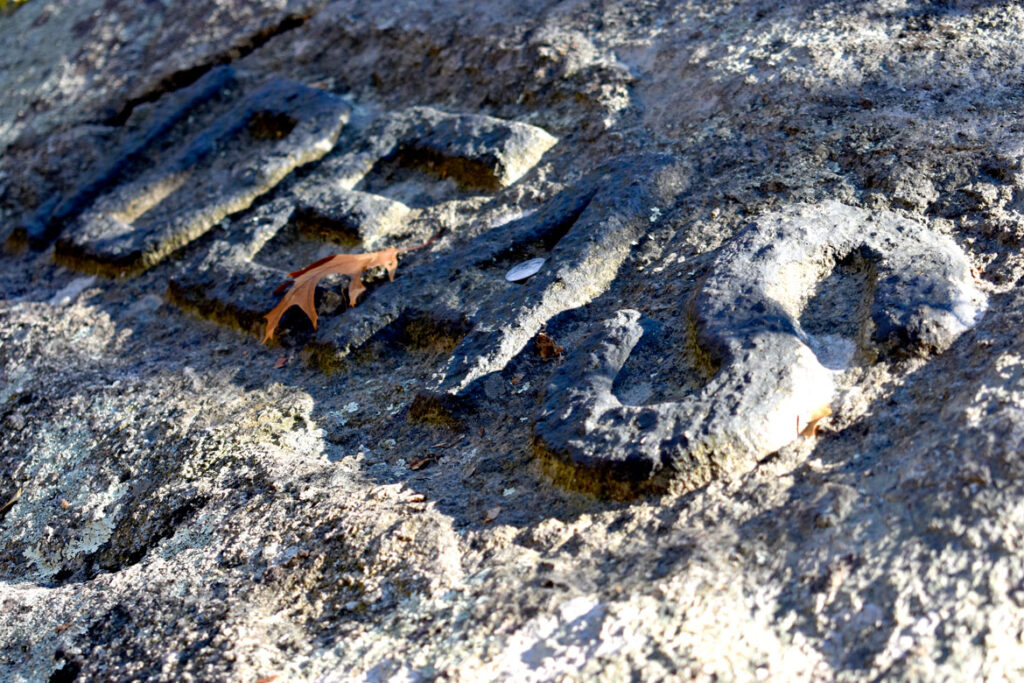
Martha Friend‘s home in Somerville, Massachusetts.
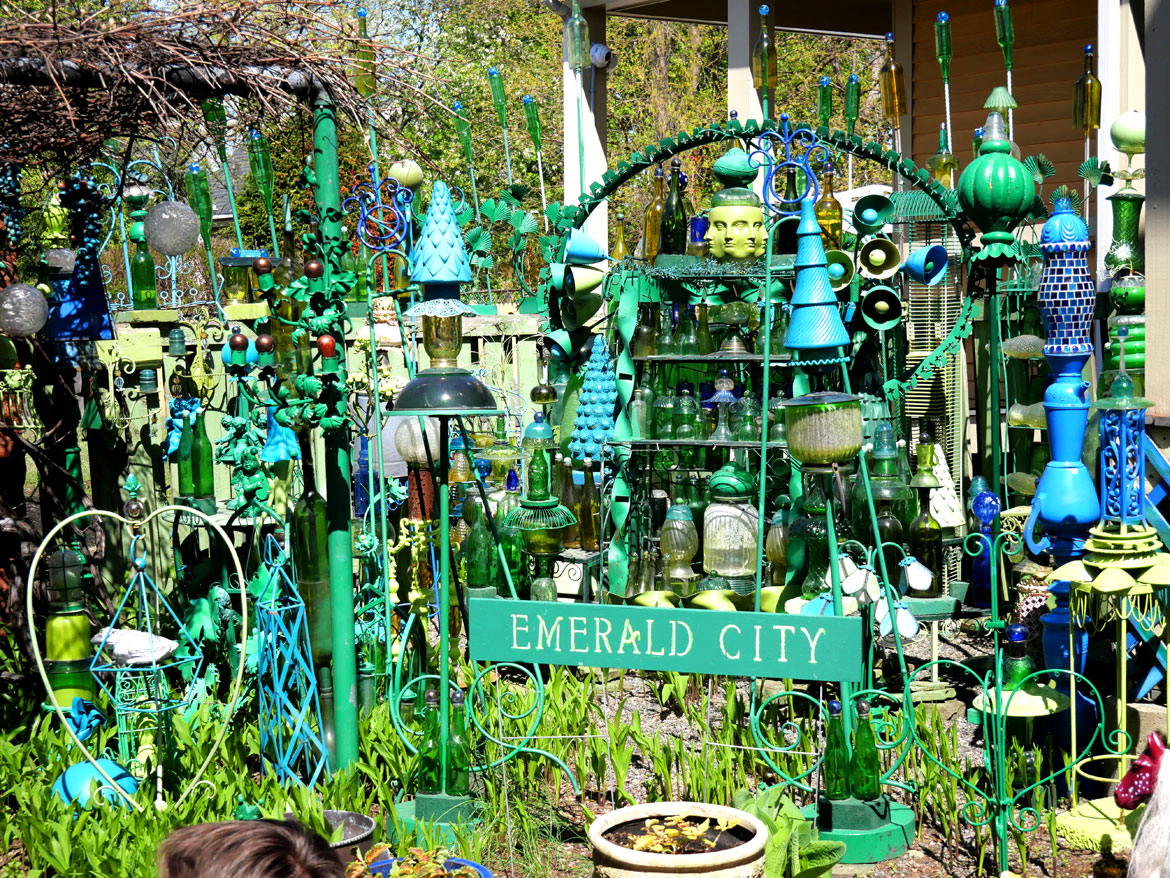
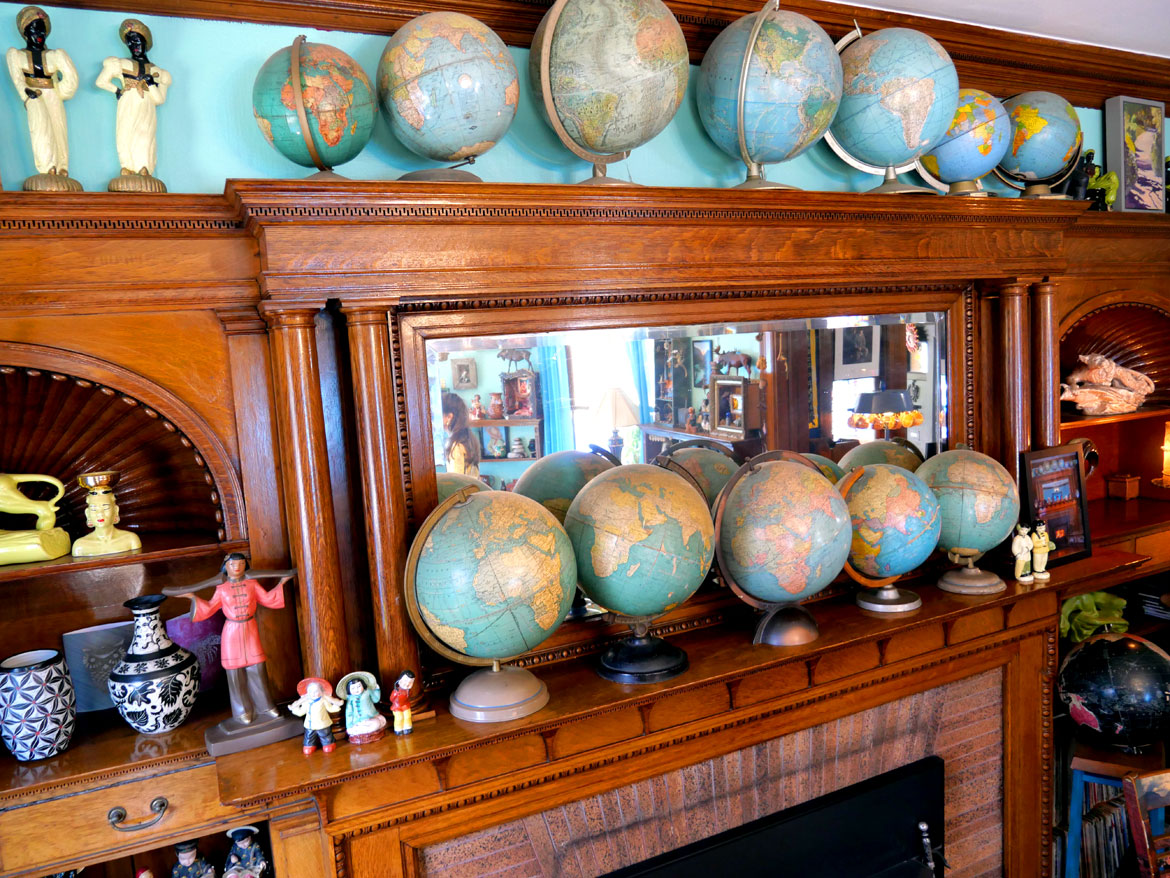
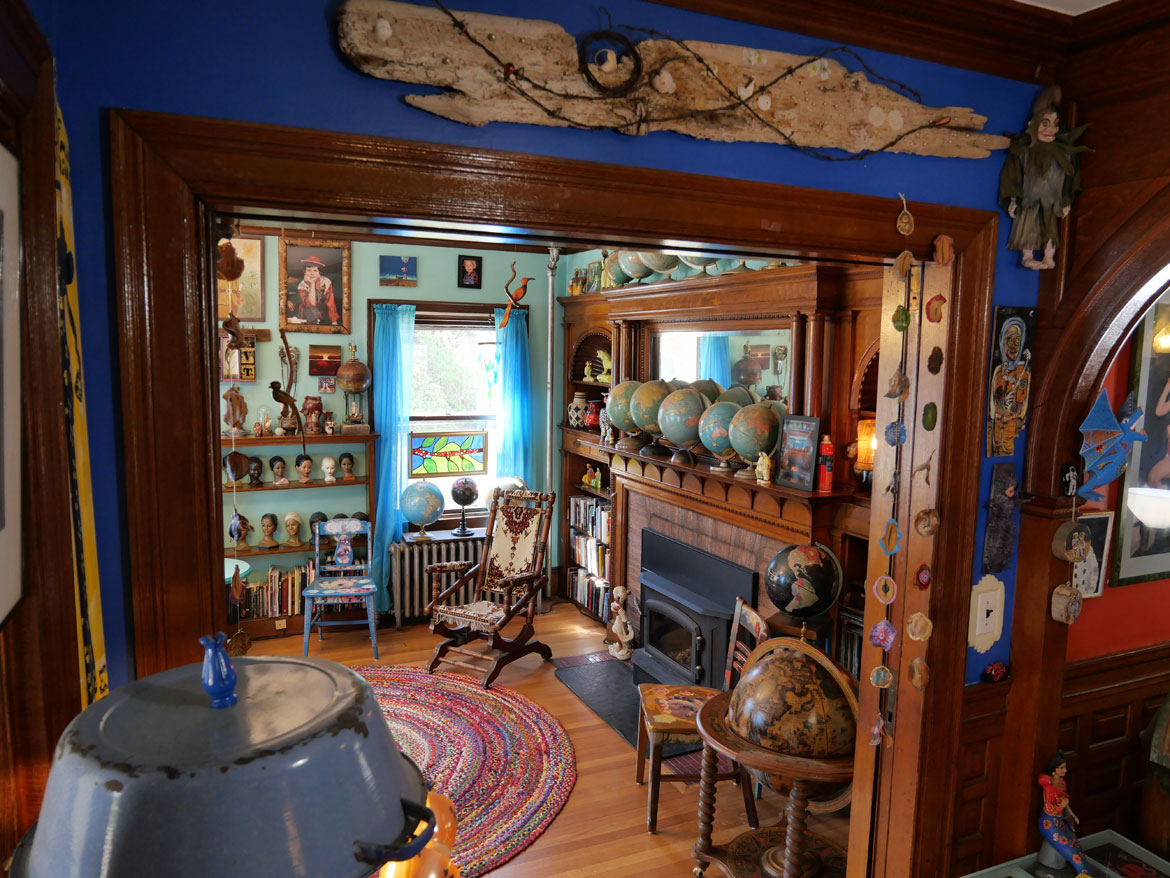
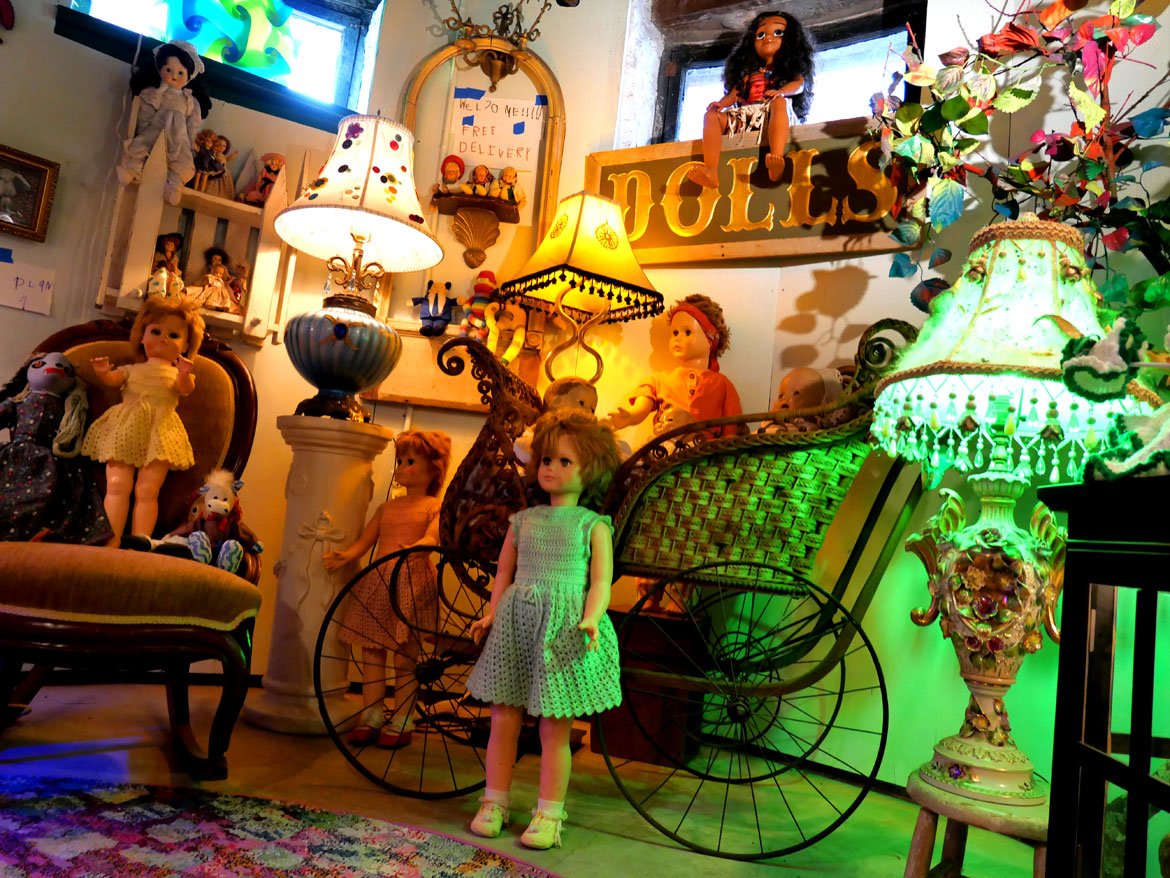
Leaning Tower of Pisa house, Elmwood Street, Revere, Massachusetts.
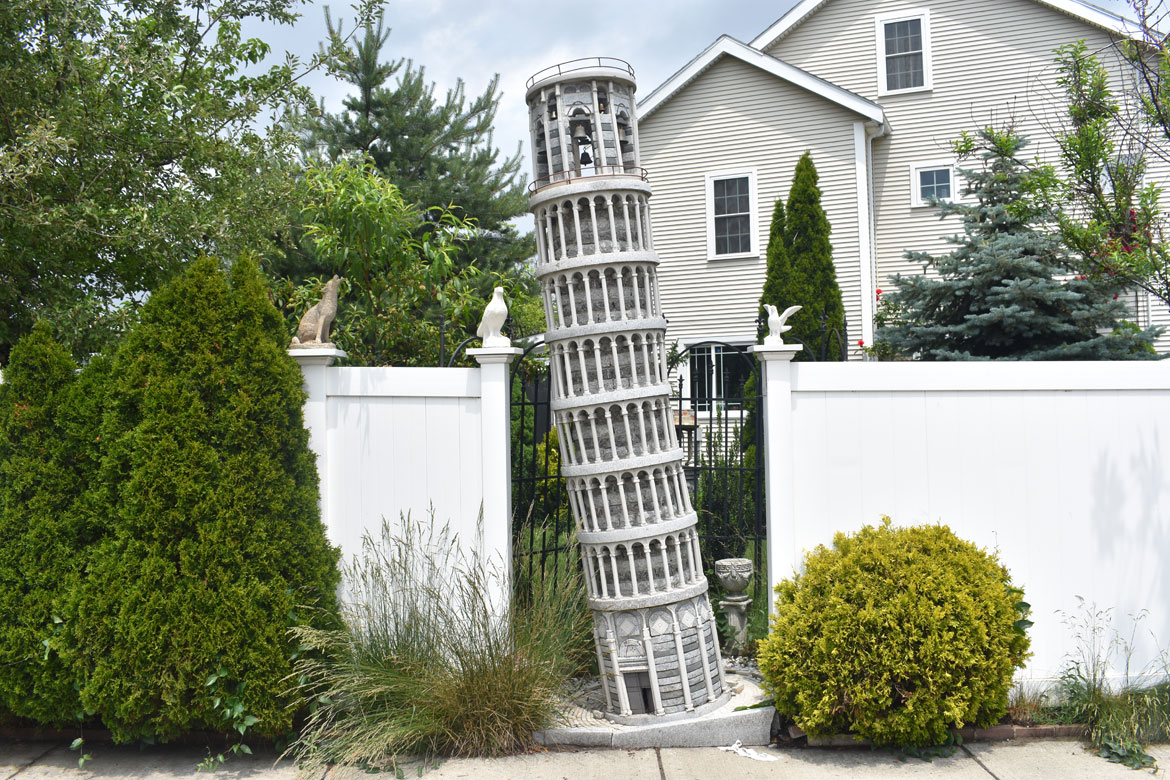
Phillip Ligone’s Boston Rowhouse. “At 9 Dwight Street, you’ll find an unusual array of sculptures. This was done by the owner in the 1960s and 1970s. He was a blind artist named Phillip Ligone,” the Eight Streets Neighborhood Association has written. “Ligone passed away in 2002 and his long-time partner, Ramona Petillo (as of 2014) still lives there. Ligone was born in Boston, the only son of Italian immigrant parents. He moved to the South End in the early 1950s and in 1983 said he intended to live in the South End until he dies – which he did. He got interested in sculpture through his father, who sculpted statues for cemeteries. Most of the statues you see are from molds that Ligone purchased in Italy. In a 1983 South End News article, Ligone says that he hadn’t worked in 20 years because he had two large lottery wins that he lived off of.”
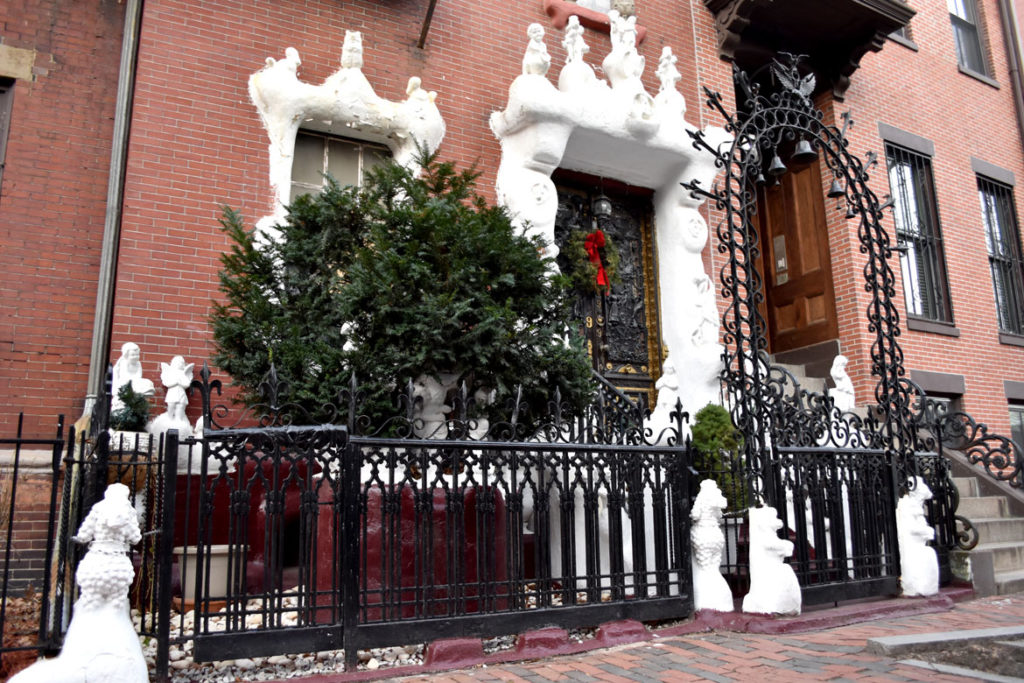
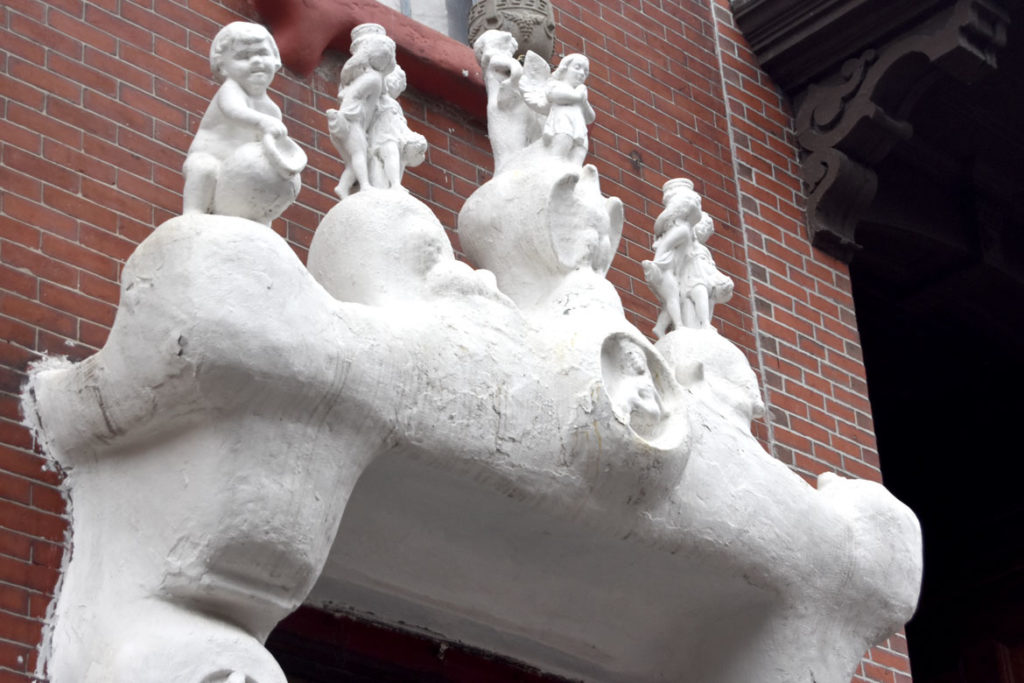
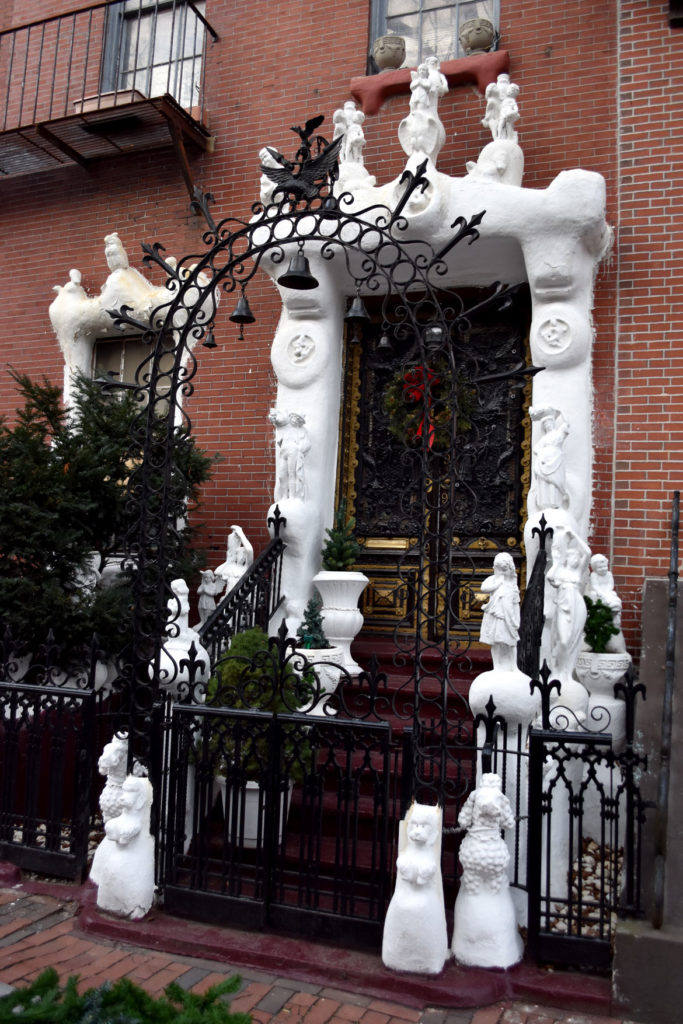
Richard M. Richardson’s Three Sisters Sanctuary in Goshen, Massachusetts.
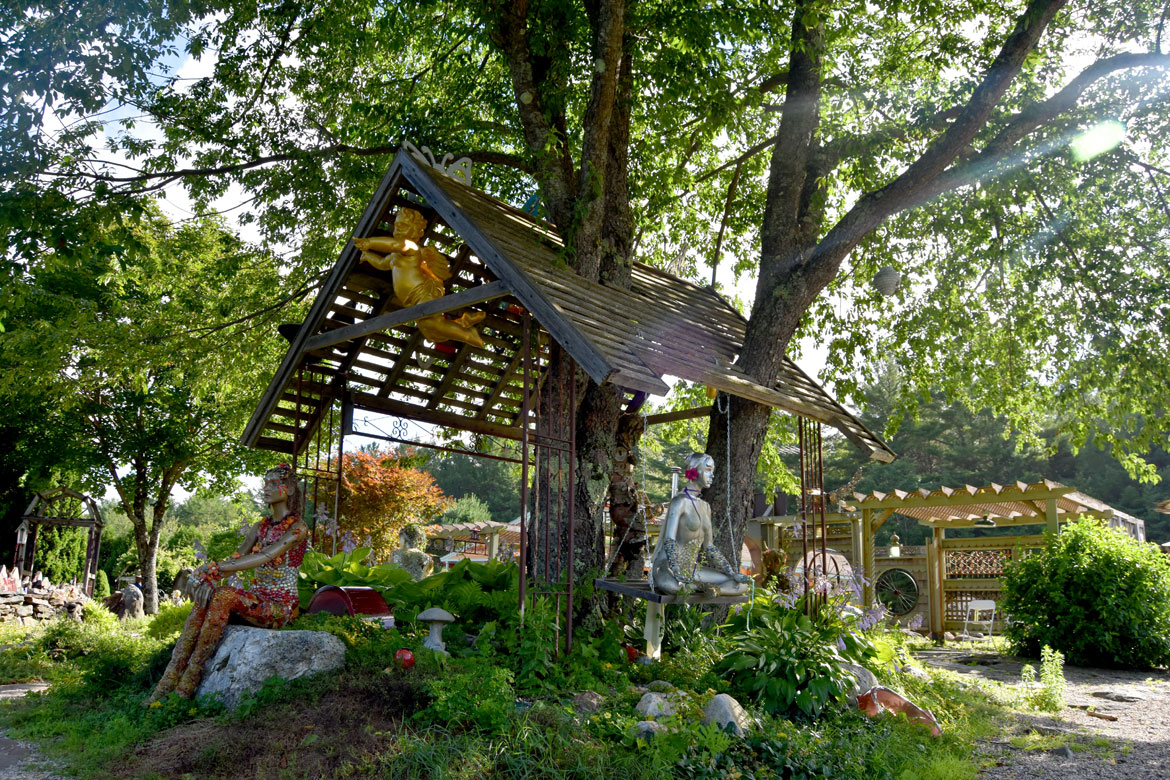
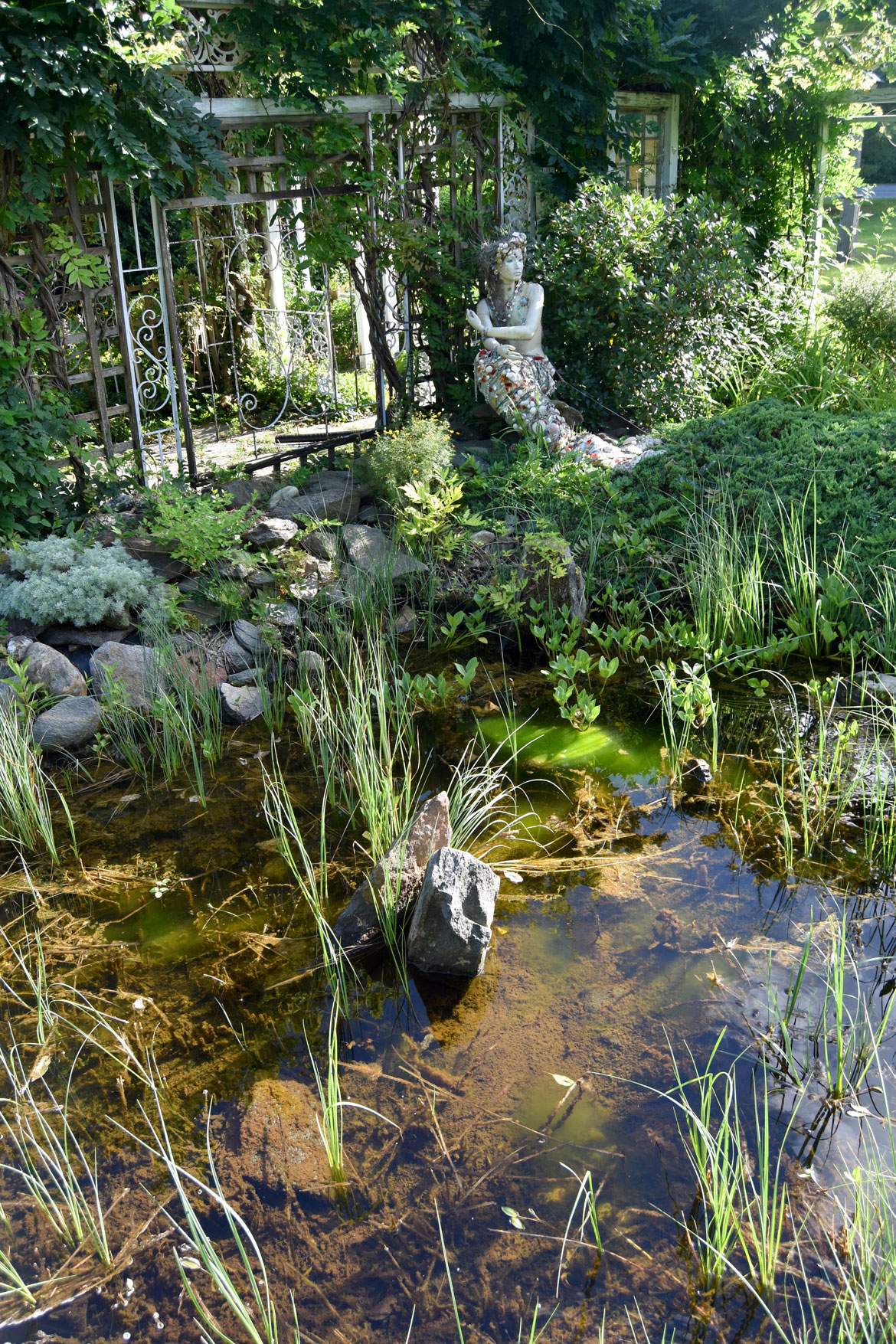
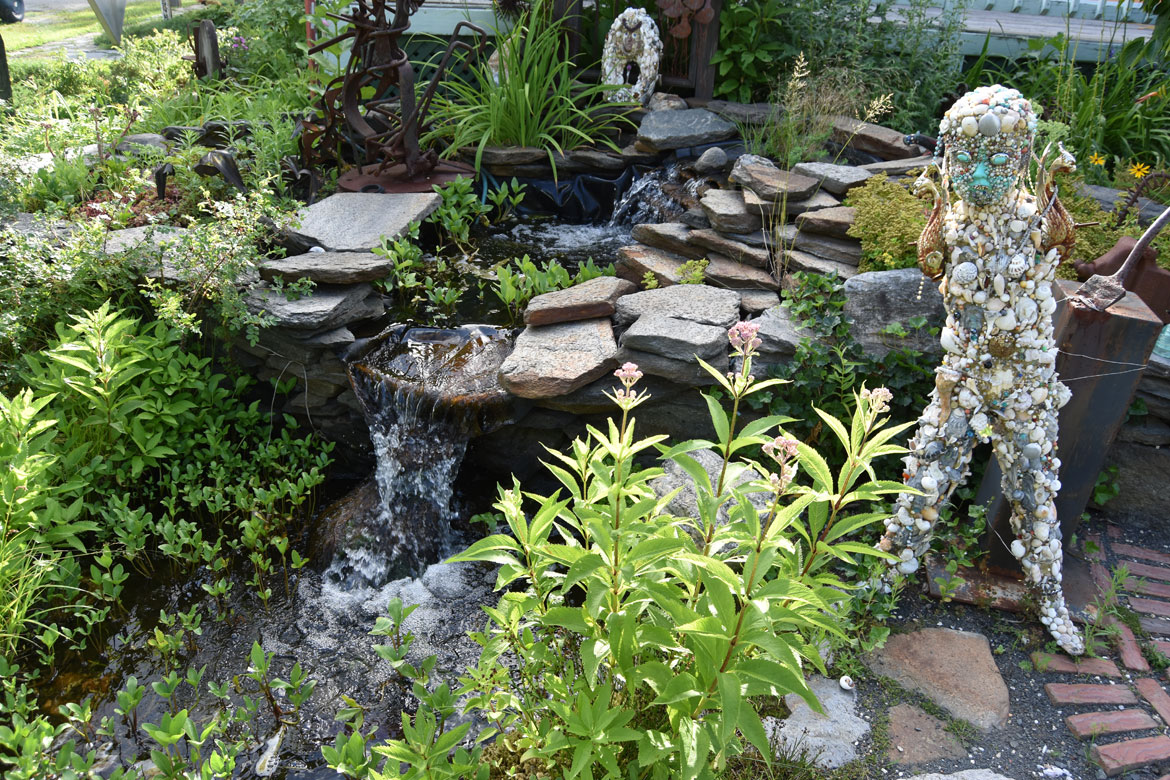
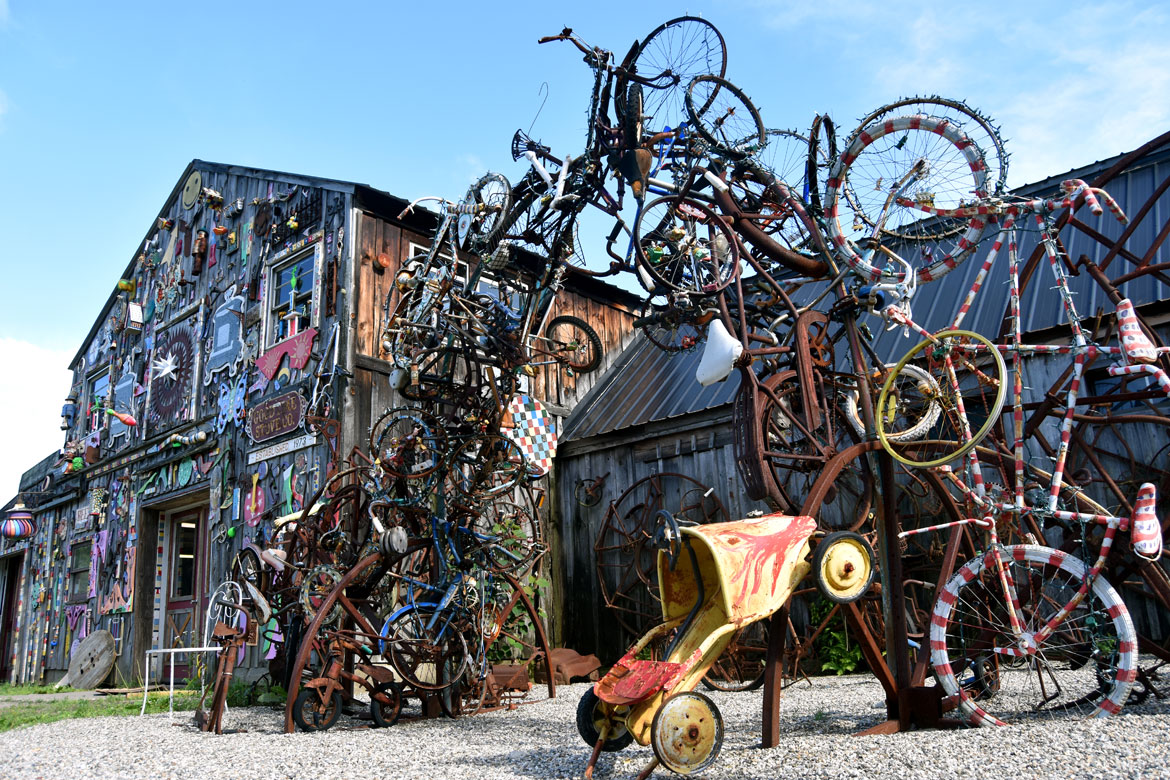
Nicholas Shaplyko and Ekatrina Sorokina’s Museum of Modern Renaissance in Somerville, Massachusetts.
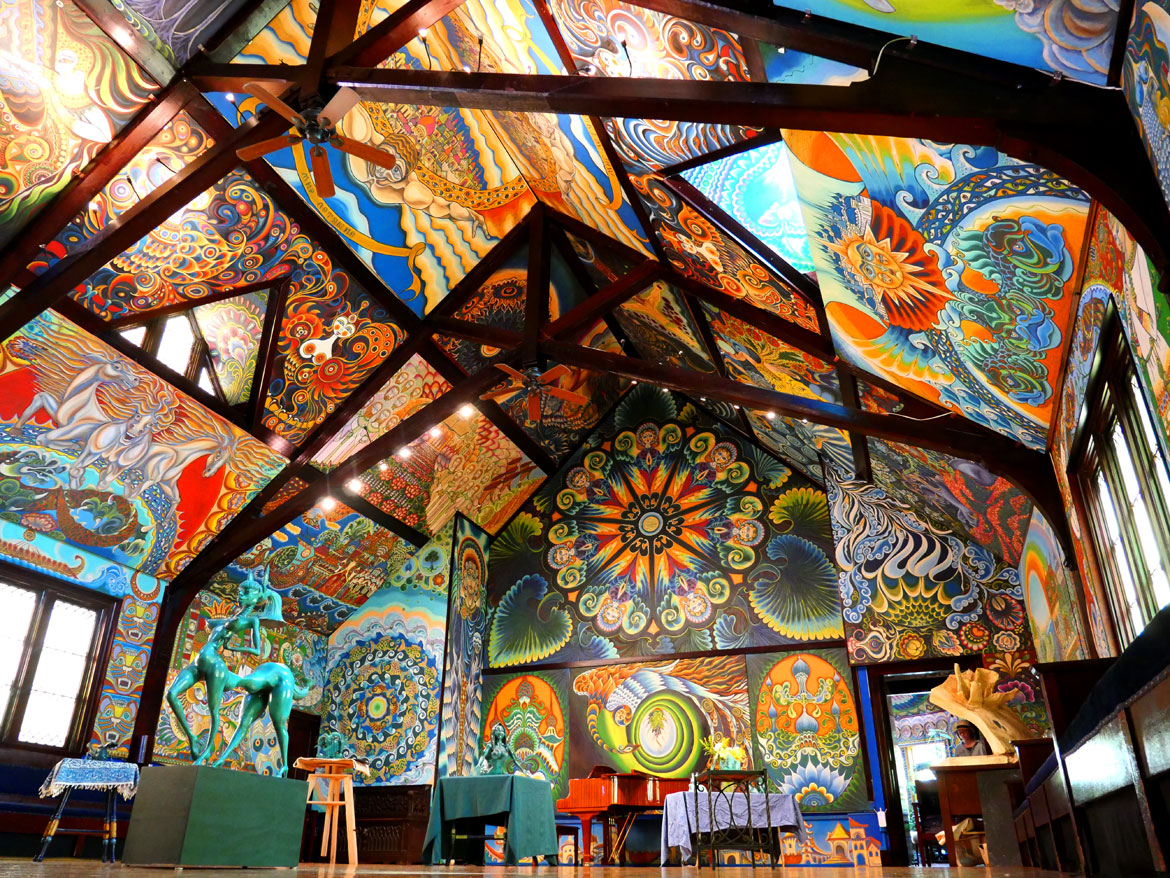
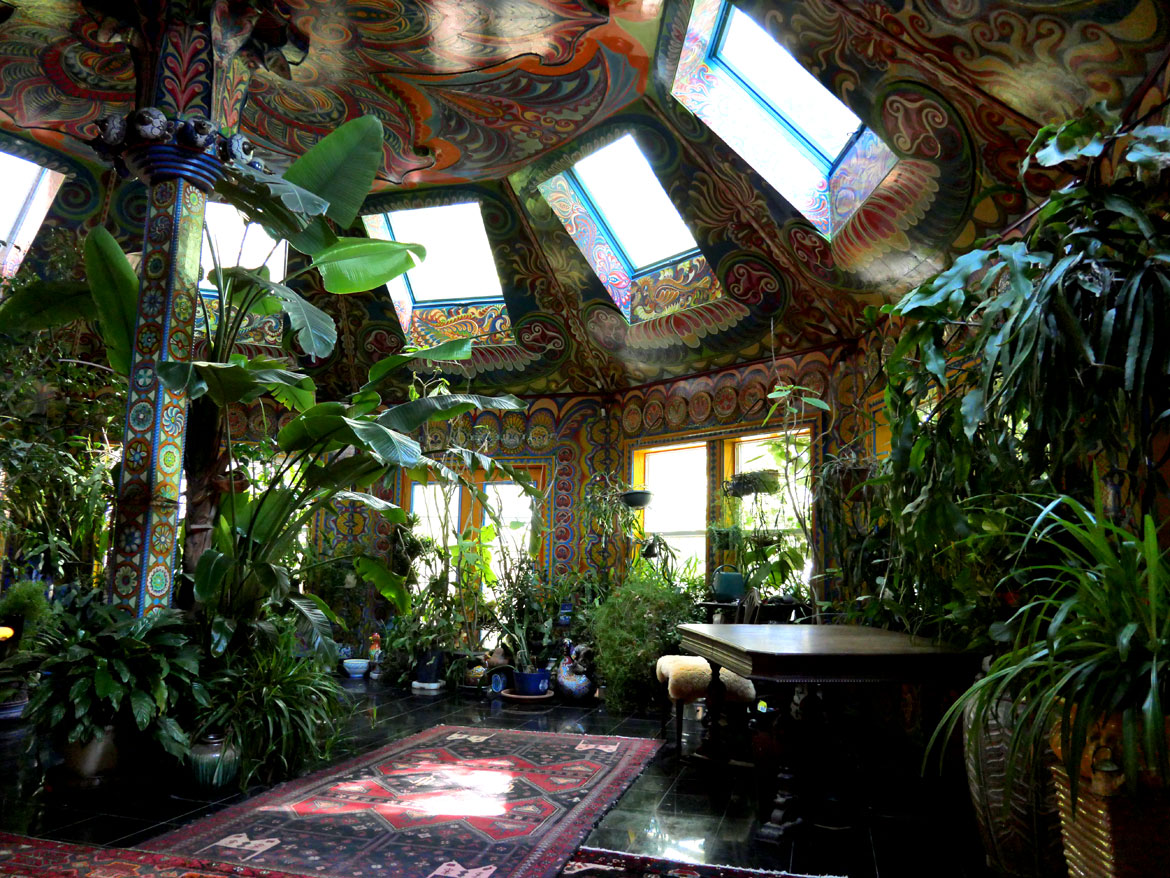
Peter Valentine’s house on Franklin Street at Brookline Street, Cambridge, Massachusetts. Valentine died in 2022 and his house has been sold to be developed into affordable housing.
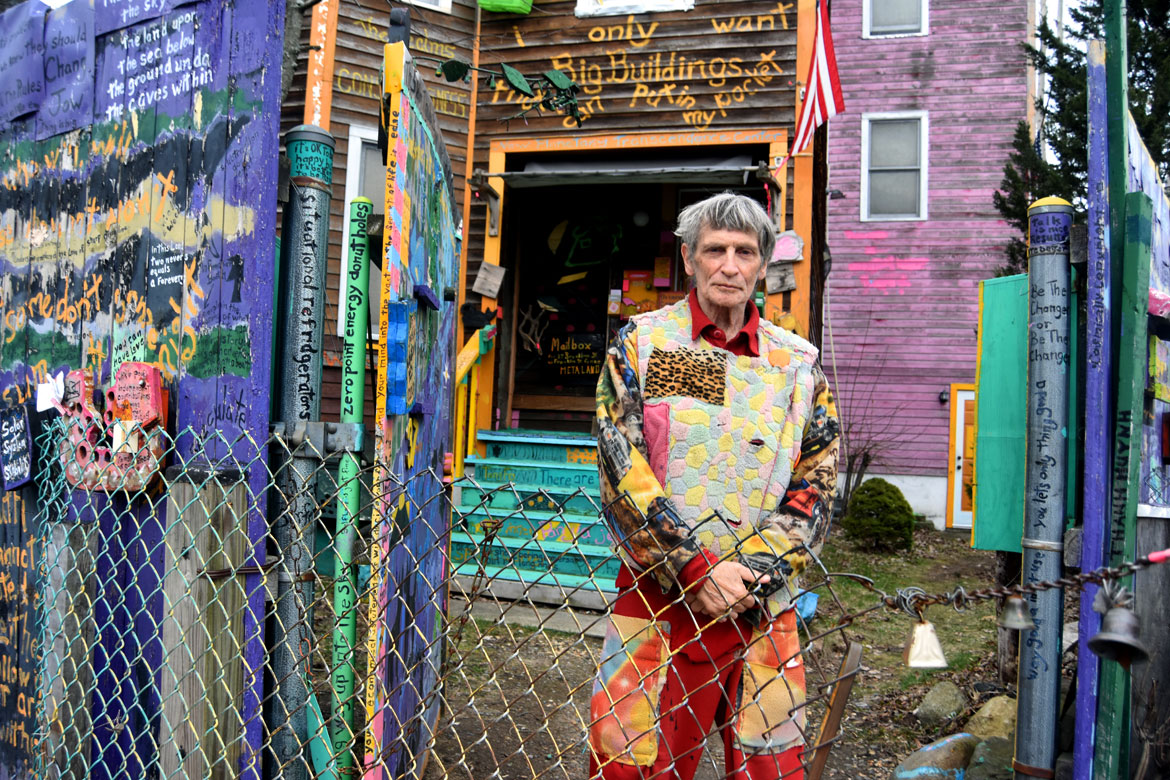
Whirligigs on Chestnut Hill Ave, Athol, Massachusetts.
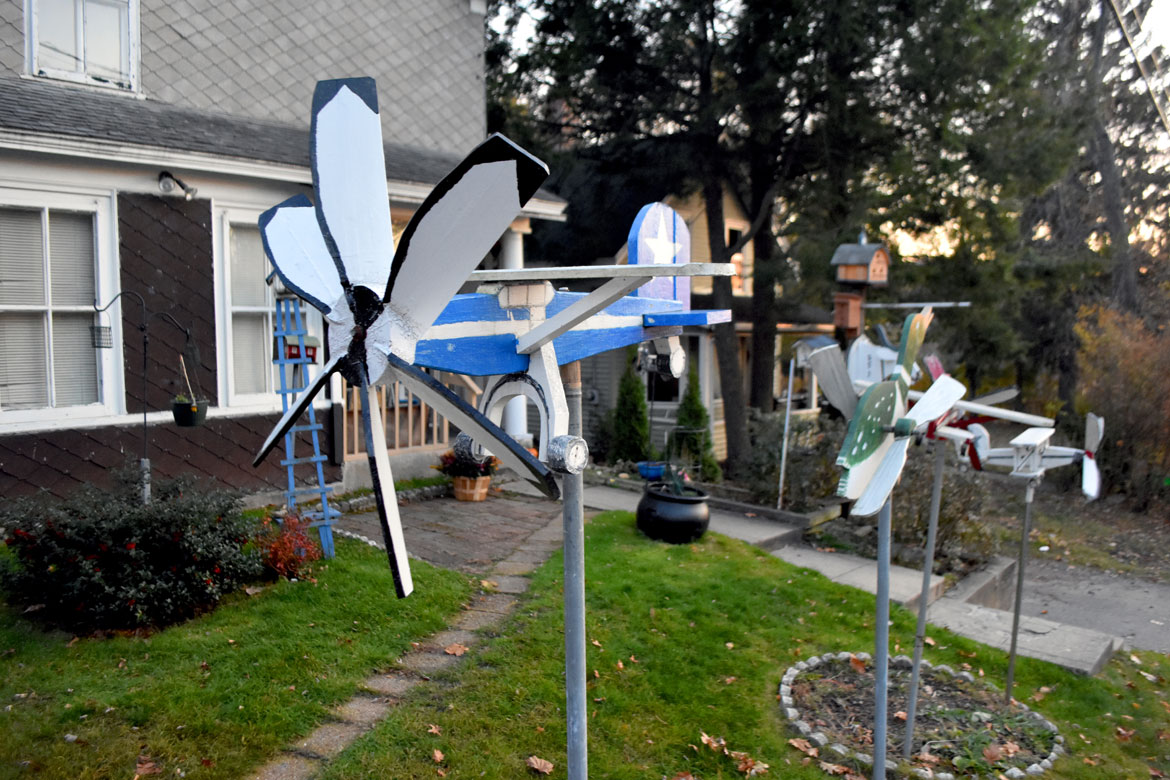
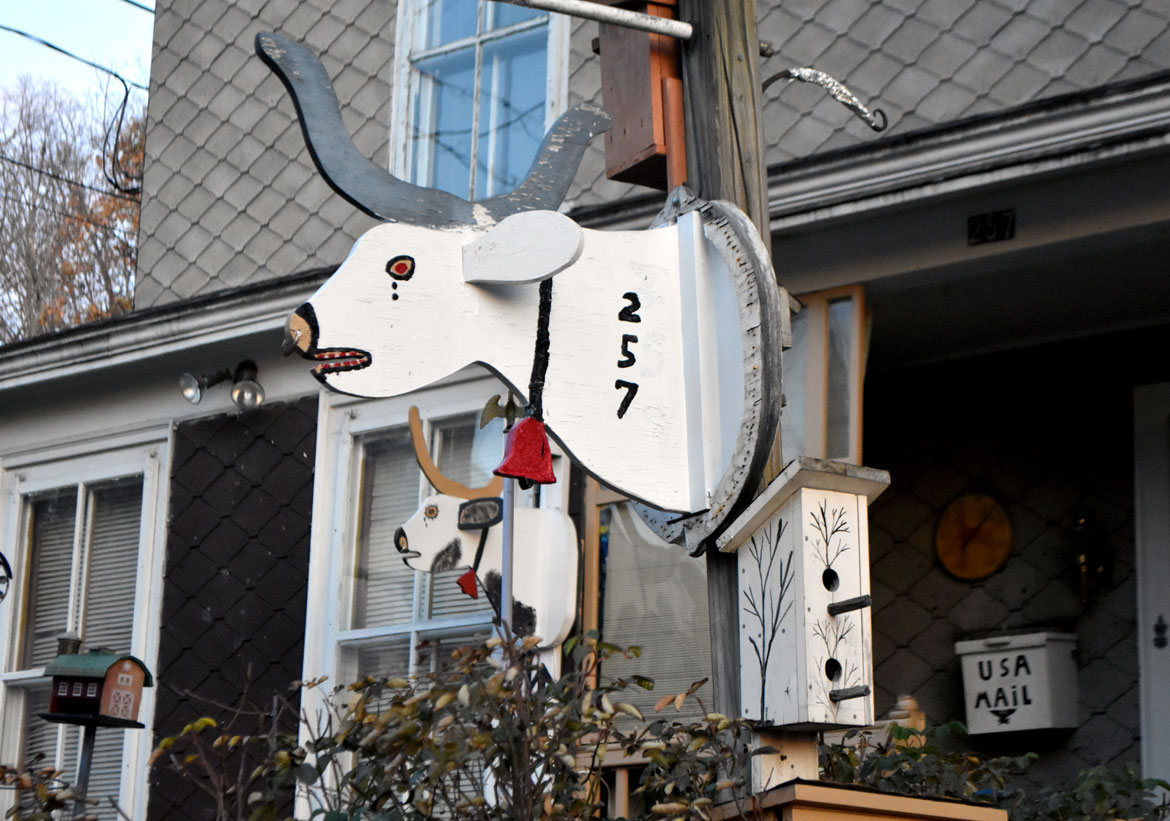
Winnie-the-Pooh House by the Harvard Science Building, Cambridge, Massachusetts. Somewhere around the early to mid 1990s, George Eastman began taking care of Pooh’s house. It was a full tree then—perhaps a chestnut, he says. “At that particular time, my second family, my young children, we would be passing by that—they usually went to the Christian Science Church, went with their mother, but occasionally I’d accompany them. There was a sort of vestige of Pooh’s house there, a sign that said ‘Pooh.’” He replaced the faded sign and added a door. “There was a natural hole there that could lend itself,” Eastman says. “There was a little sign over it, but no door. I wanted to give is some more verisimilitude by adding the door.”
In June 2012, the tree’s poor health prompted Harvard to chop it down, leaving a tall stump. “It was an ancient tree and apparently it was diseased and because it was so close to the Science Building they were afraid of it,” Eastman says. In the years since, Eastman has been easing out of his caretaking duties. “As the children grew up and have left, in a way I was partly maintaining it for them, so that motivation left. I also decided that if this was an important project someone else could take it over. But, however, I have been thinking of making another Pooh sign and putting it somewhere above that opening to re-identify it as Pooh’s house.”
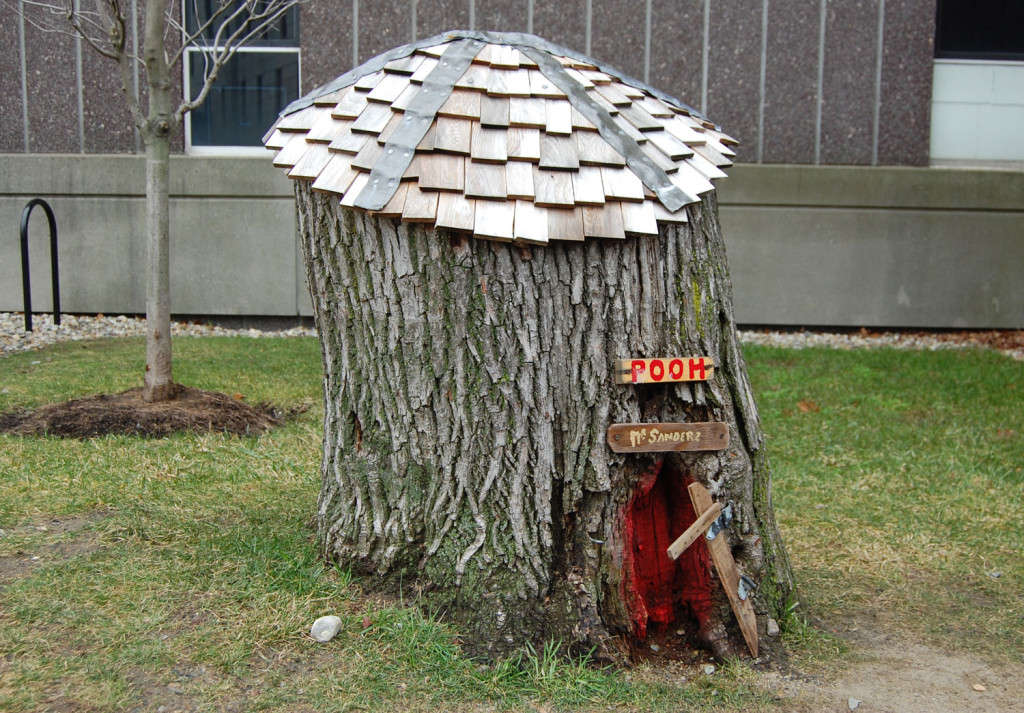
“Wonder Woman Rosey” barn by DuPont Painting on Columbia Street at Robert Street, Lee, Massachusetts.
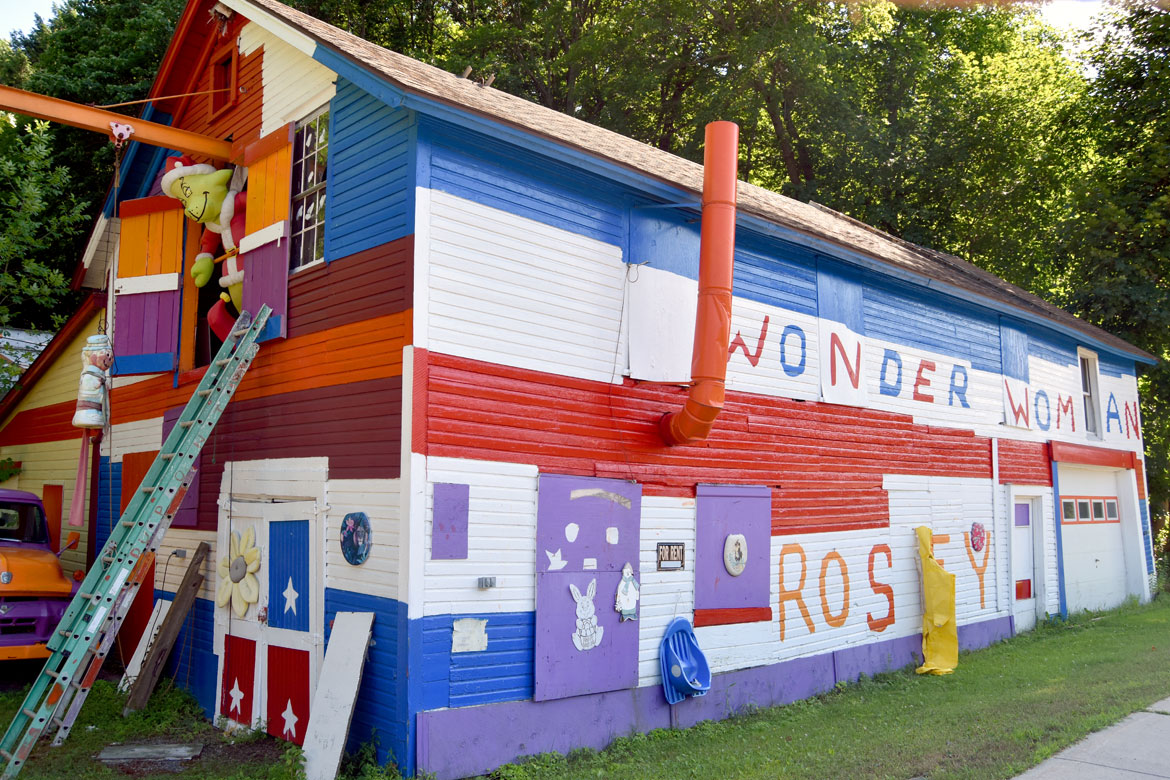
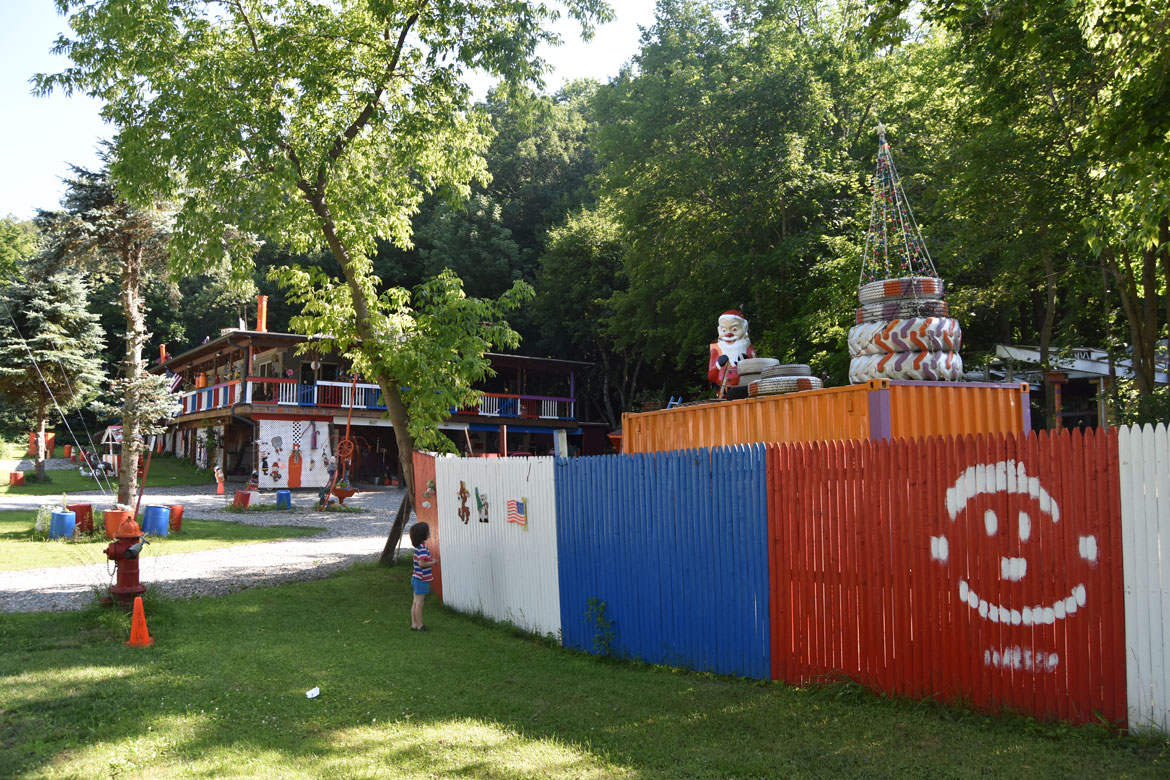
Michigan
Olayami Dabls’s Mbad African Bead Museum at Detroit, Michigan.
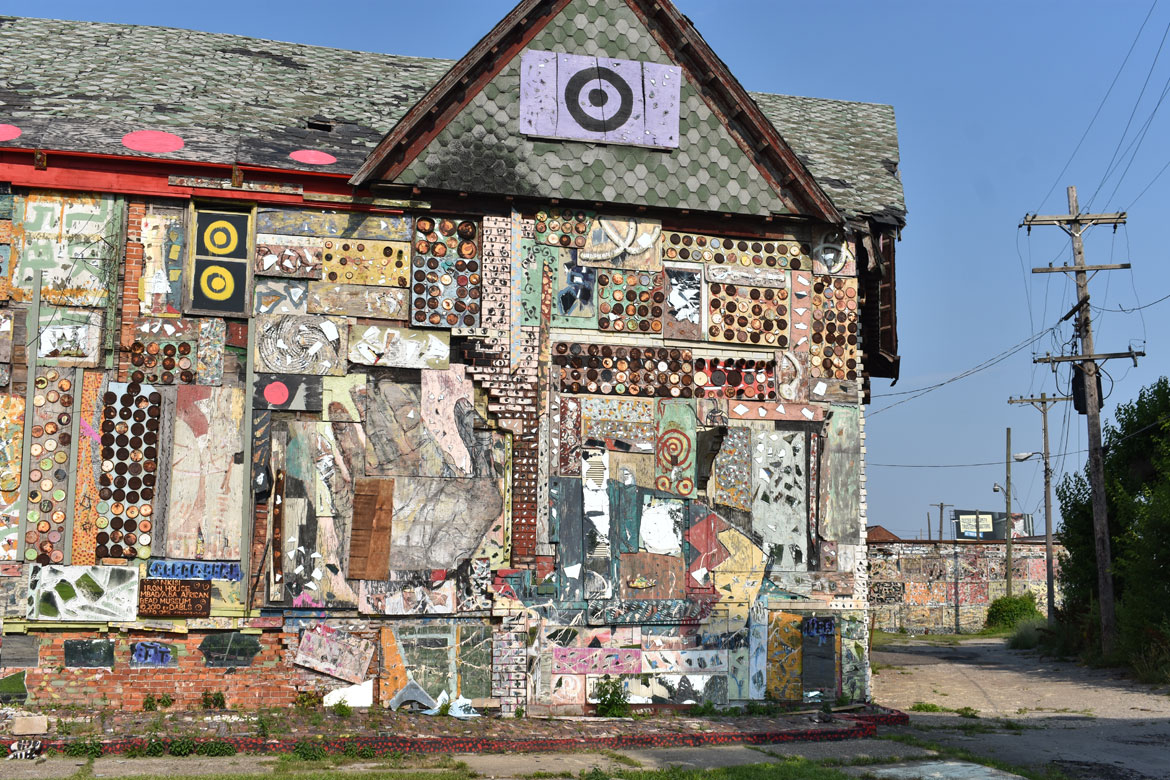
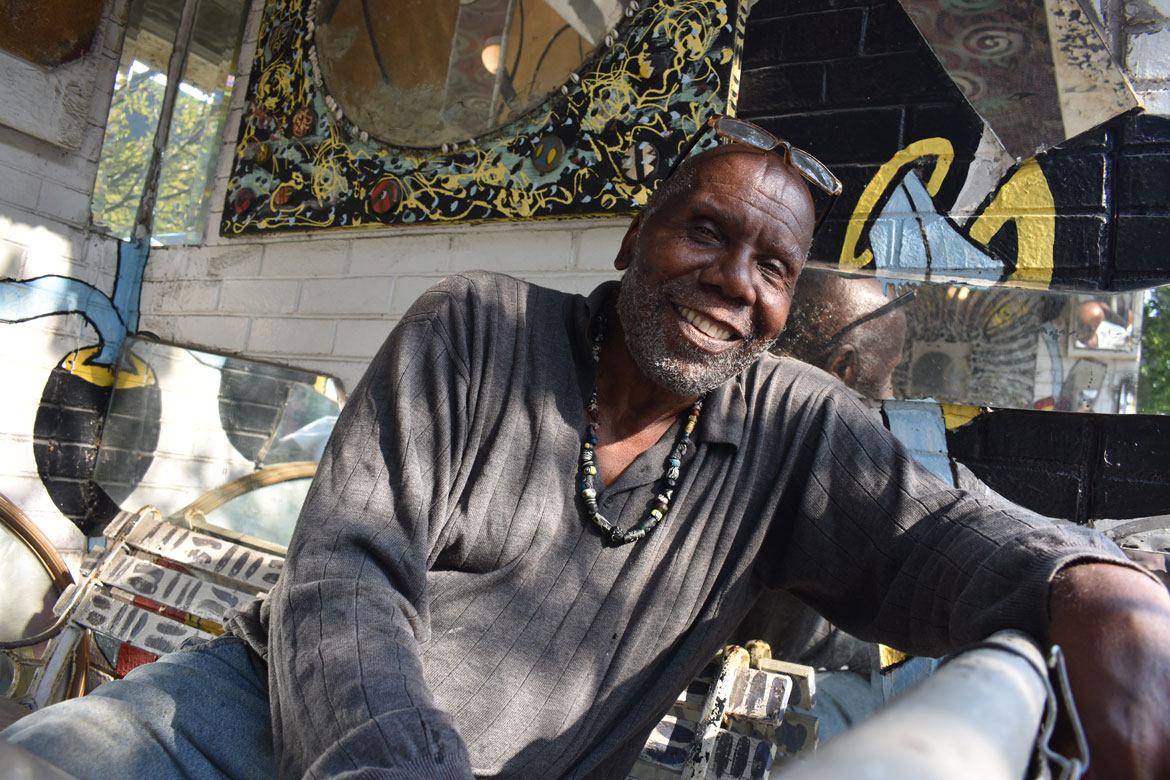
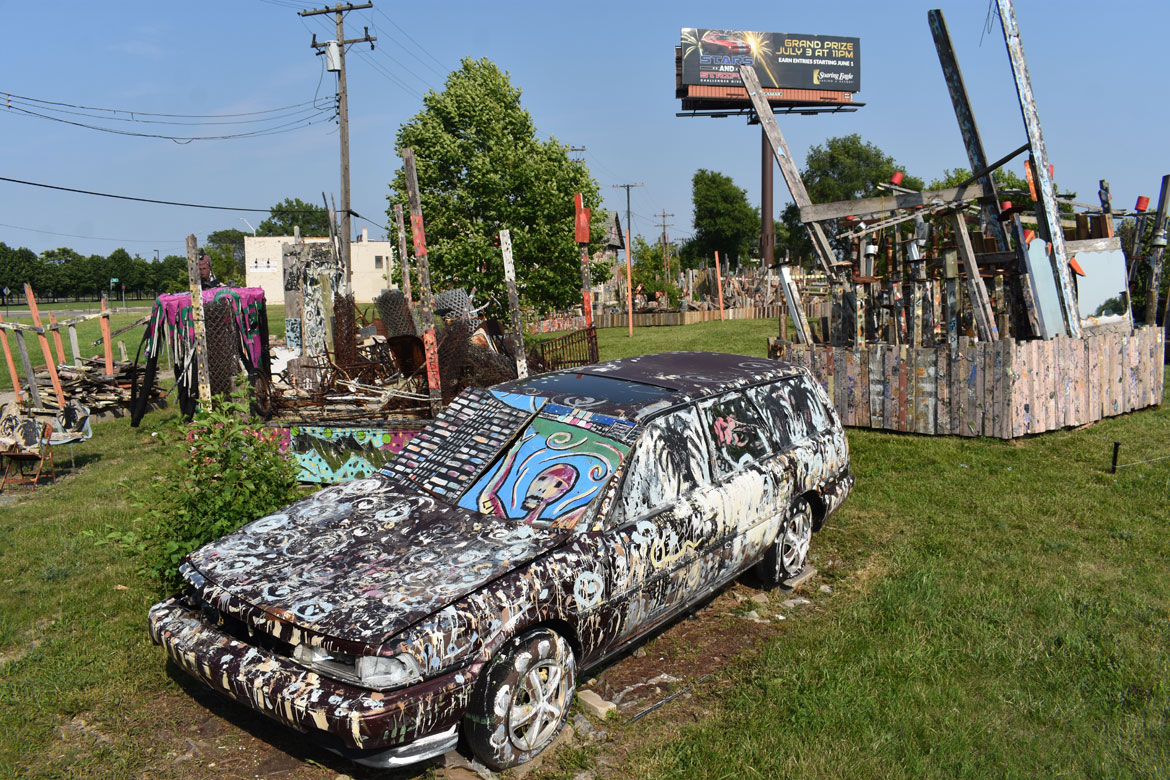
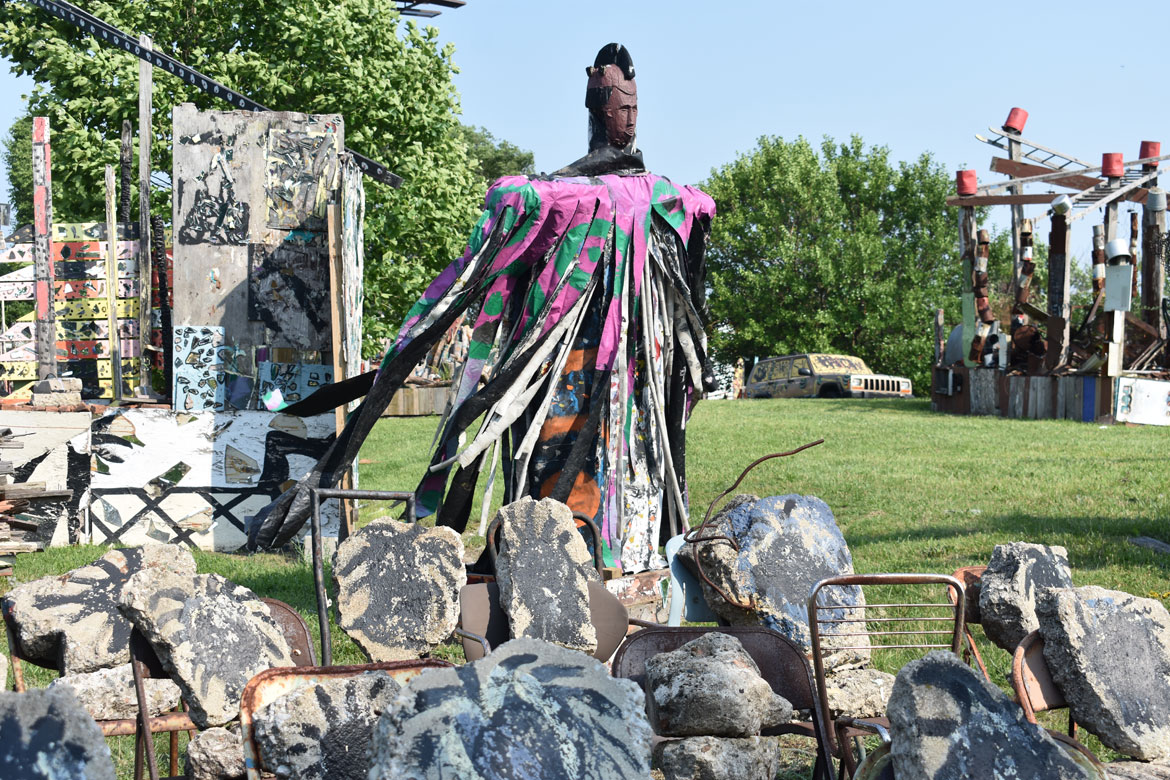
Tyree Guyton’s “Heidelberg Project” in Detroit, Michigan.
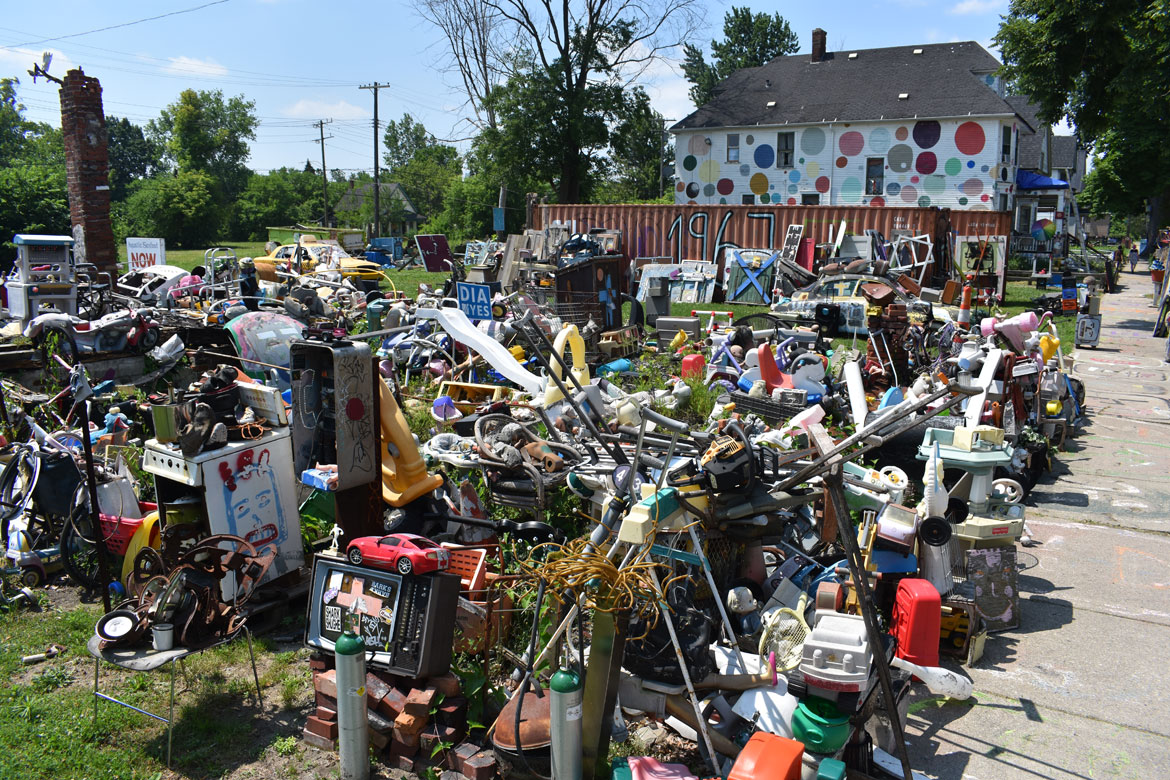
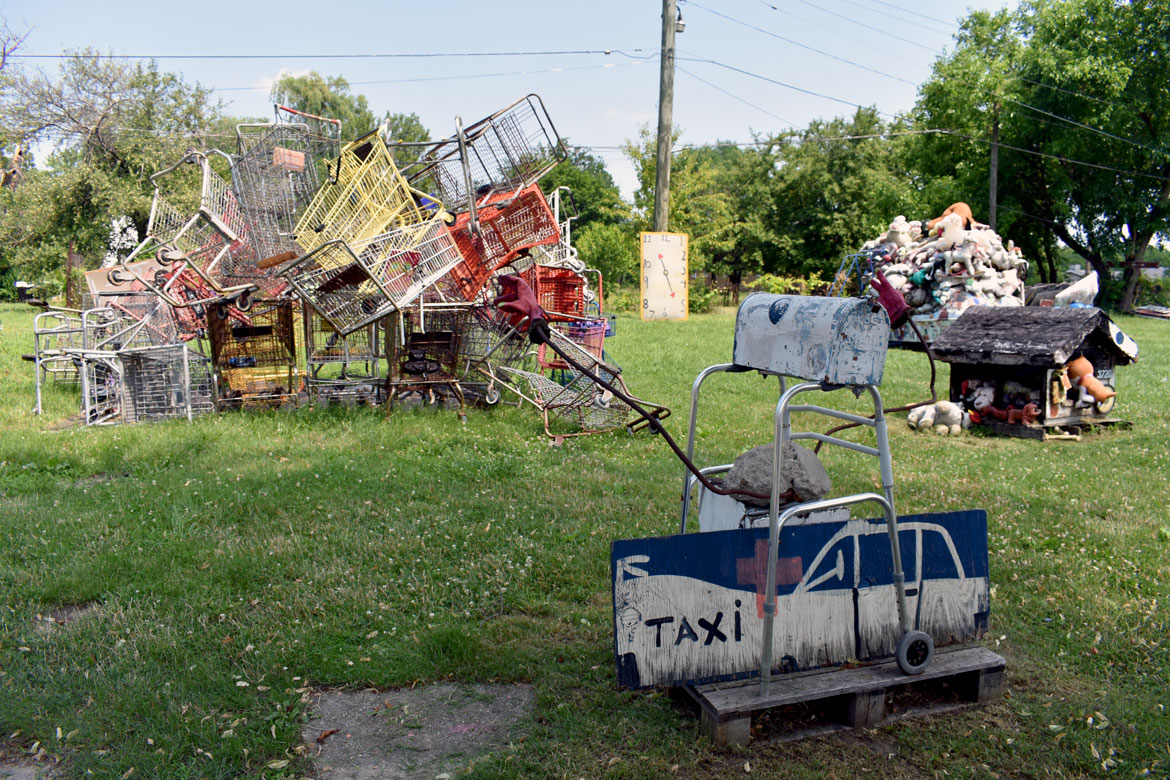
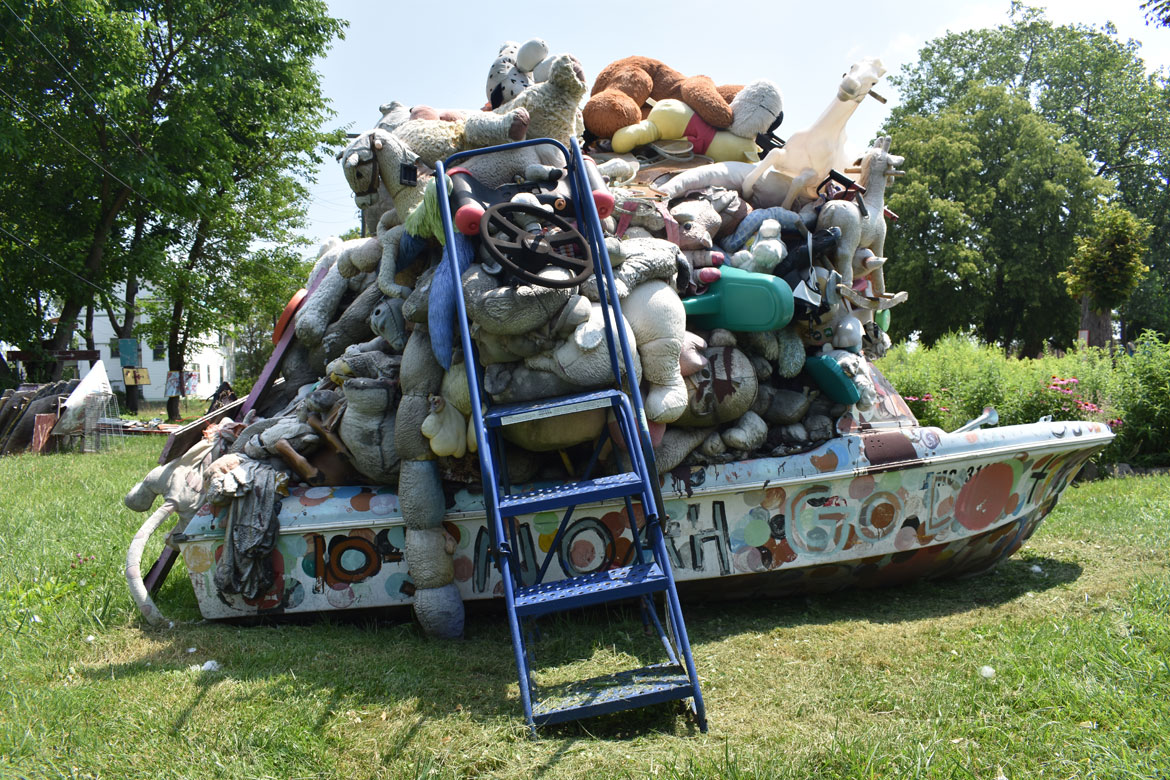
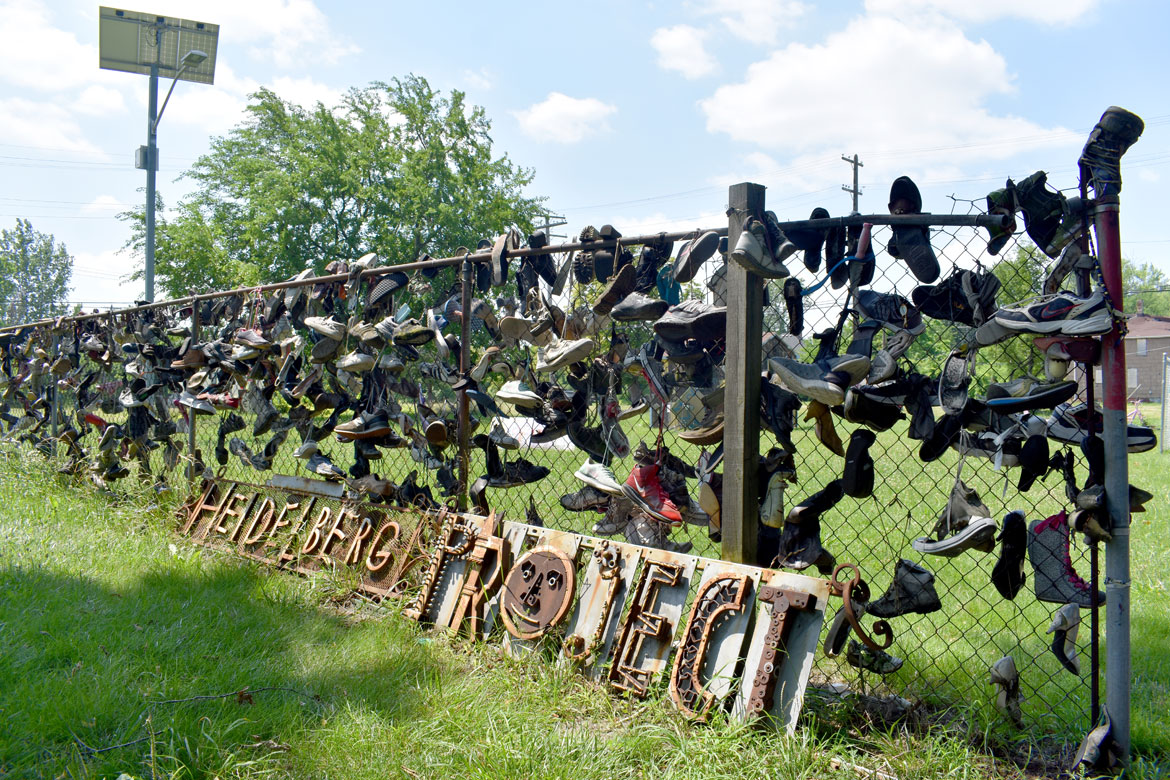
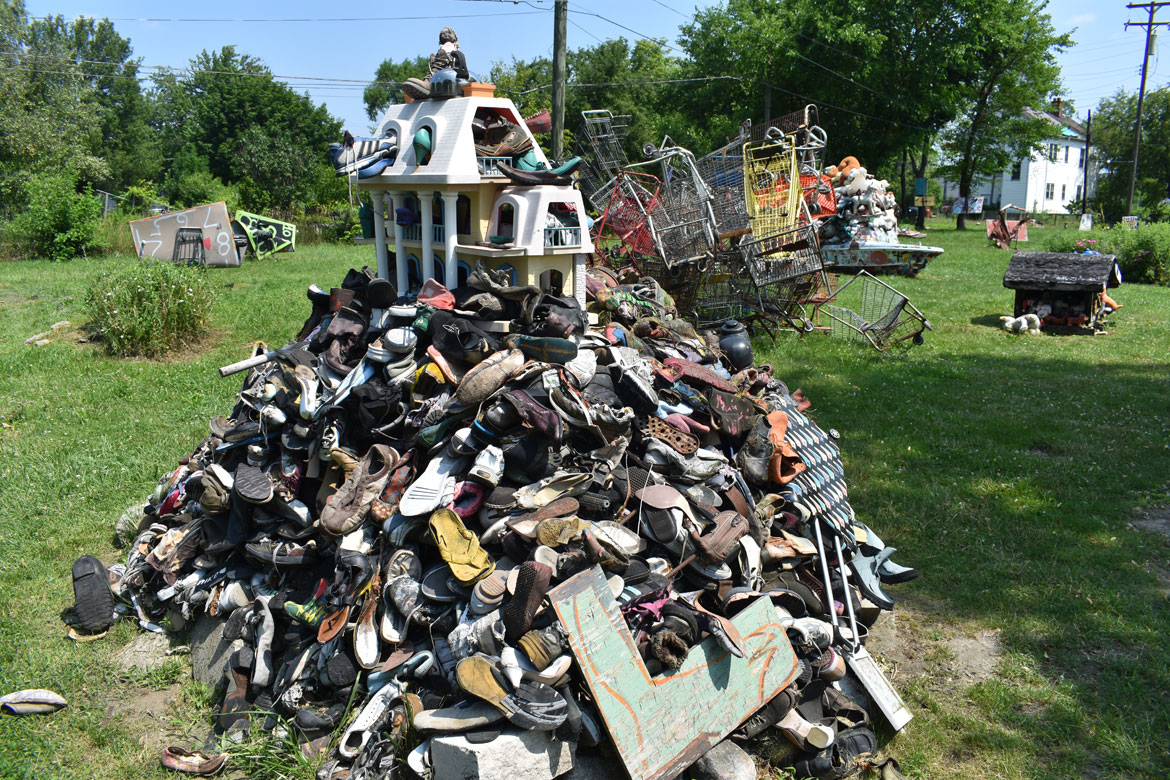
Premier Ice Cream truck in Detroit, Michigan.
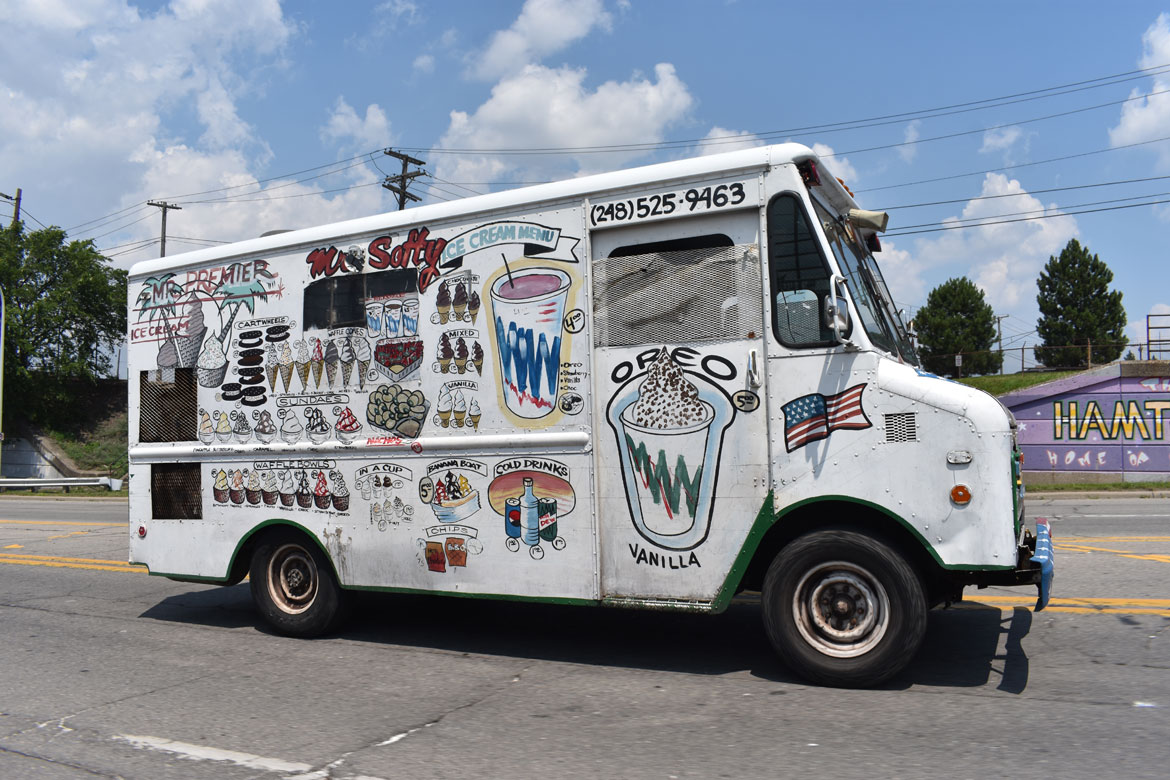
Dmytro Szylak’s Hamtramck Disneyland in Detroit.
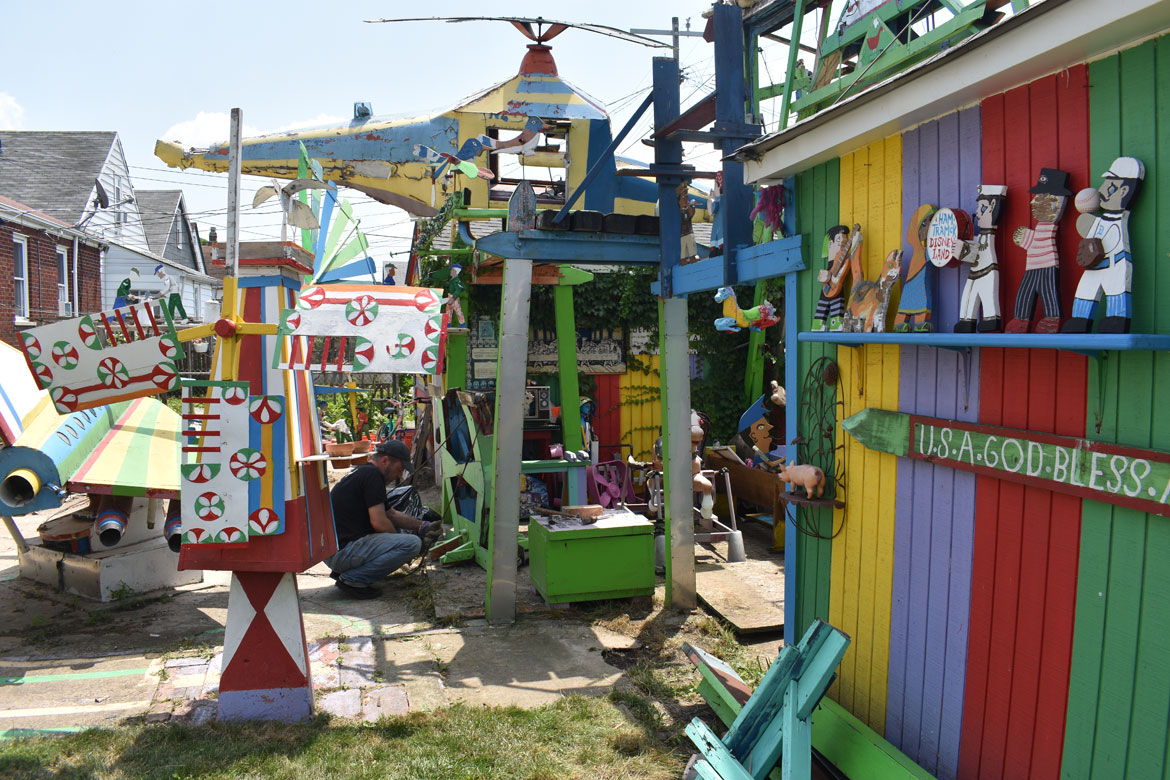
Mississippi
Walter Harvell Jackson and Pellerree Jackson’s Palestine Gardens in Lucedale, Mississippi. I didn’t get to see the miniature Holy Land the two men had built outside on their wooded property when I visited in 2023 because it’s closed on Mondays.
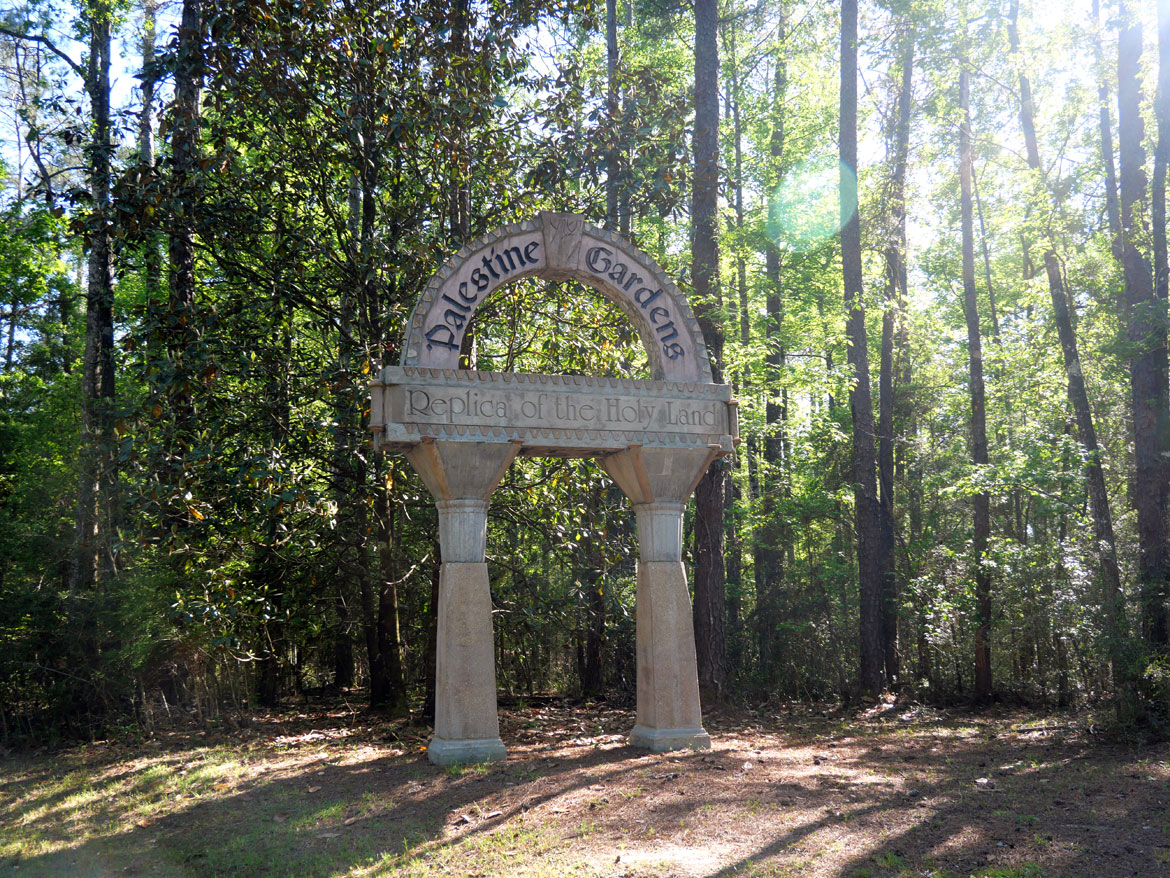
New Jersey
Ricky Boscarino’s “Luna-Parc” at Sandyston, New Jersey.
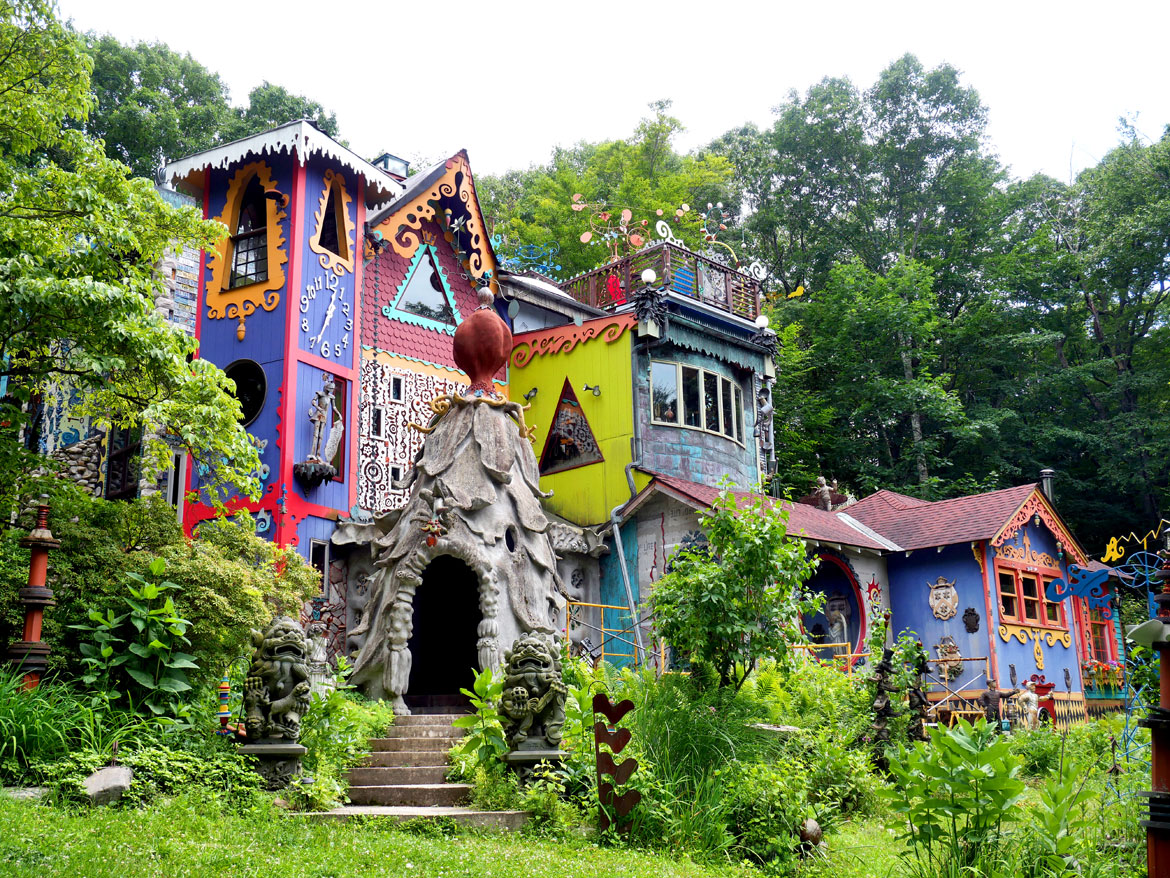
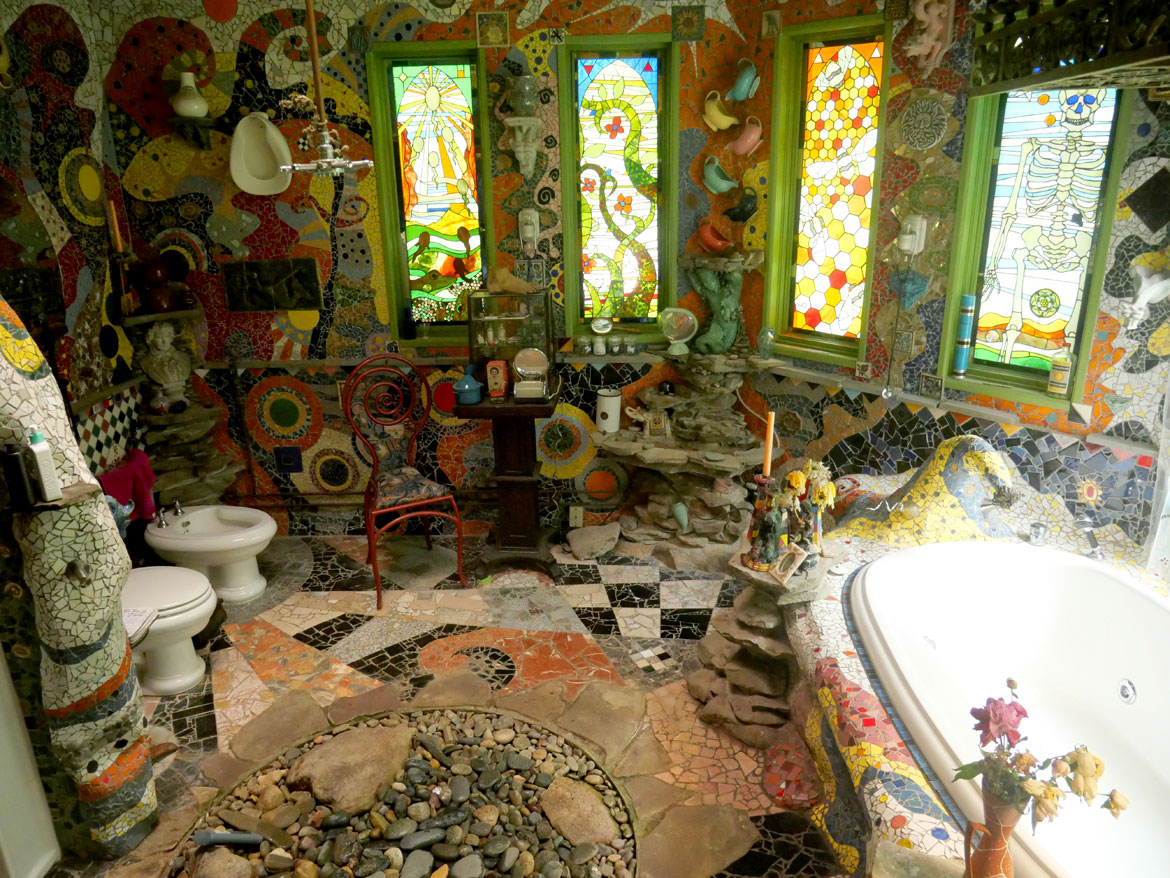
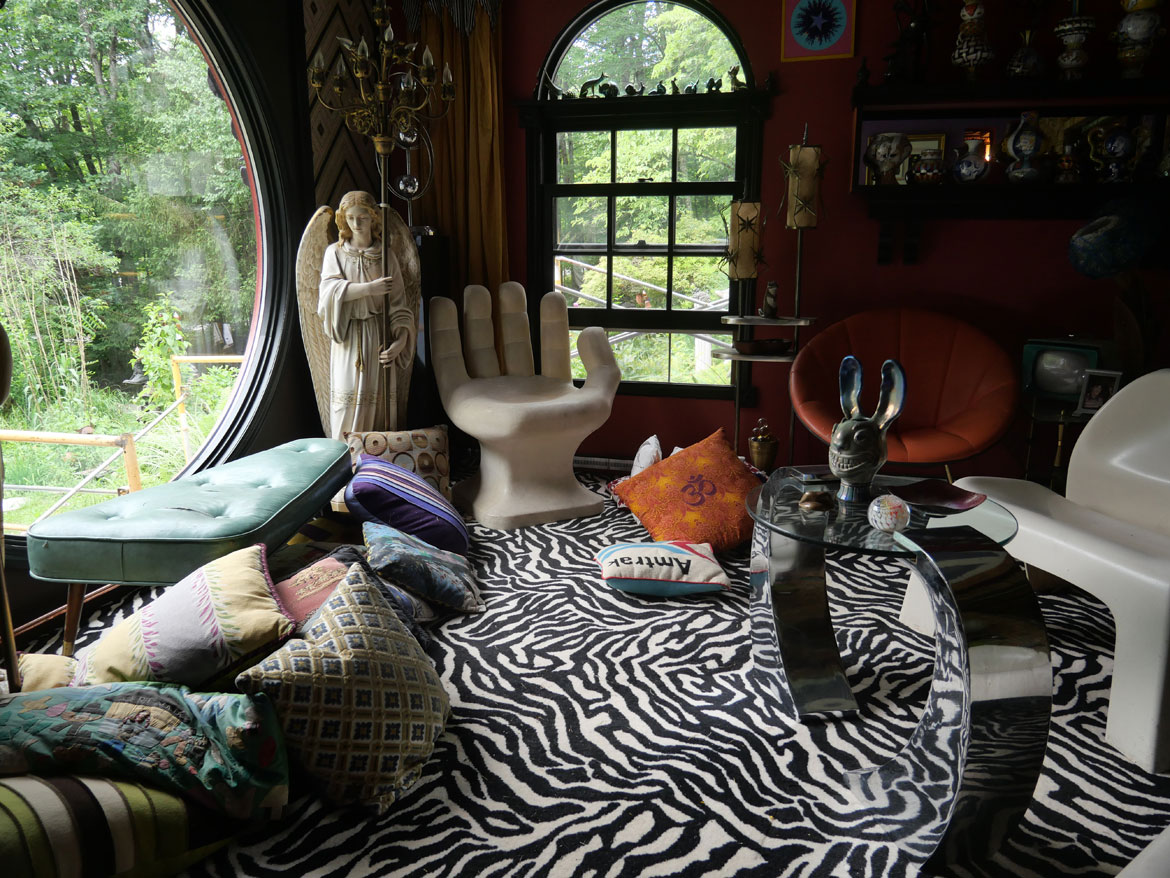
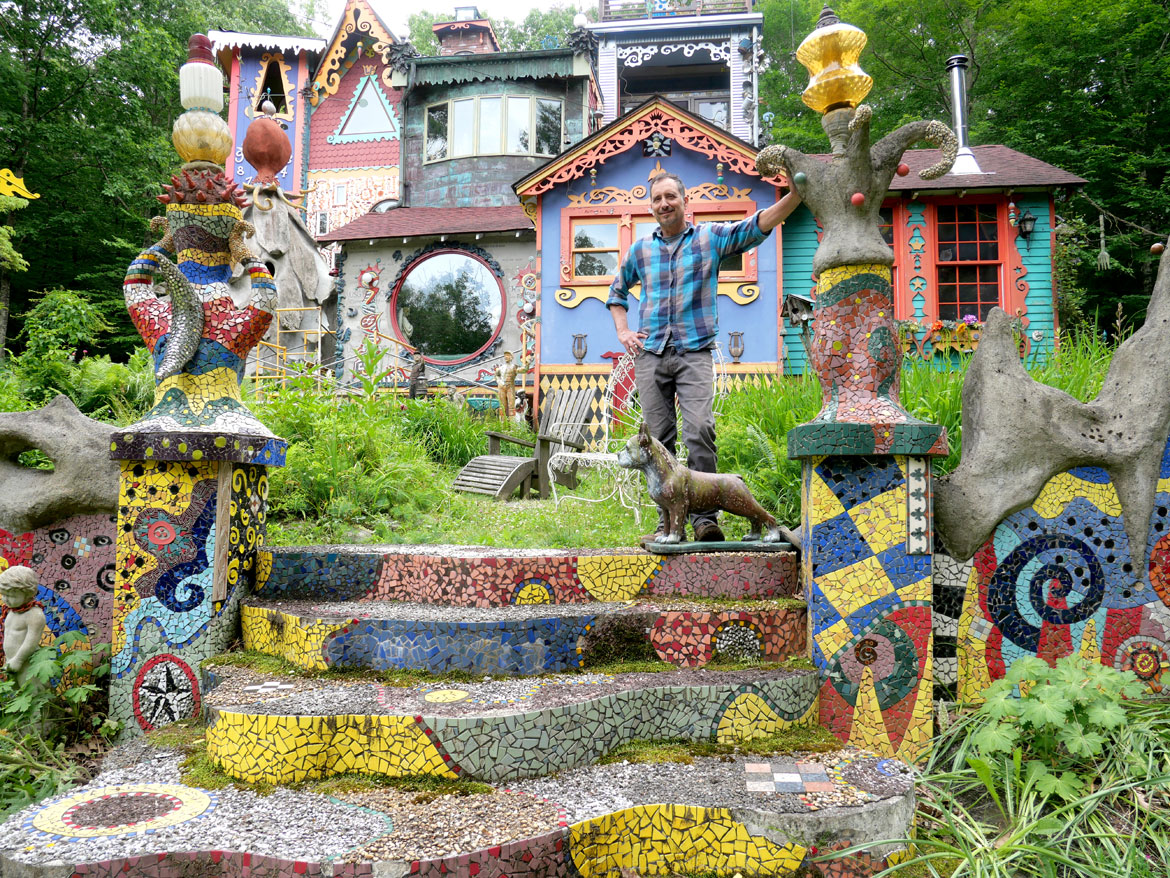
Elf house on Heck Avenue at New Jersey Avenue, Ocean Grove, New Jersey.
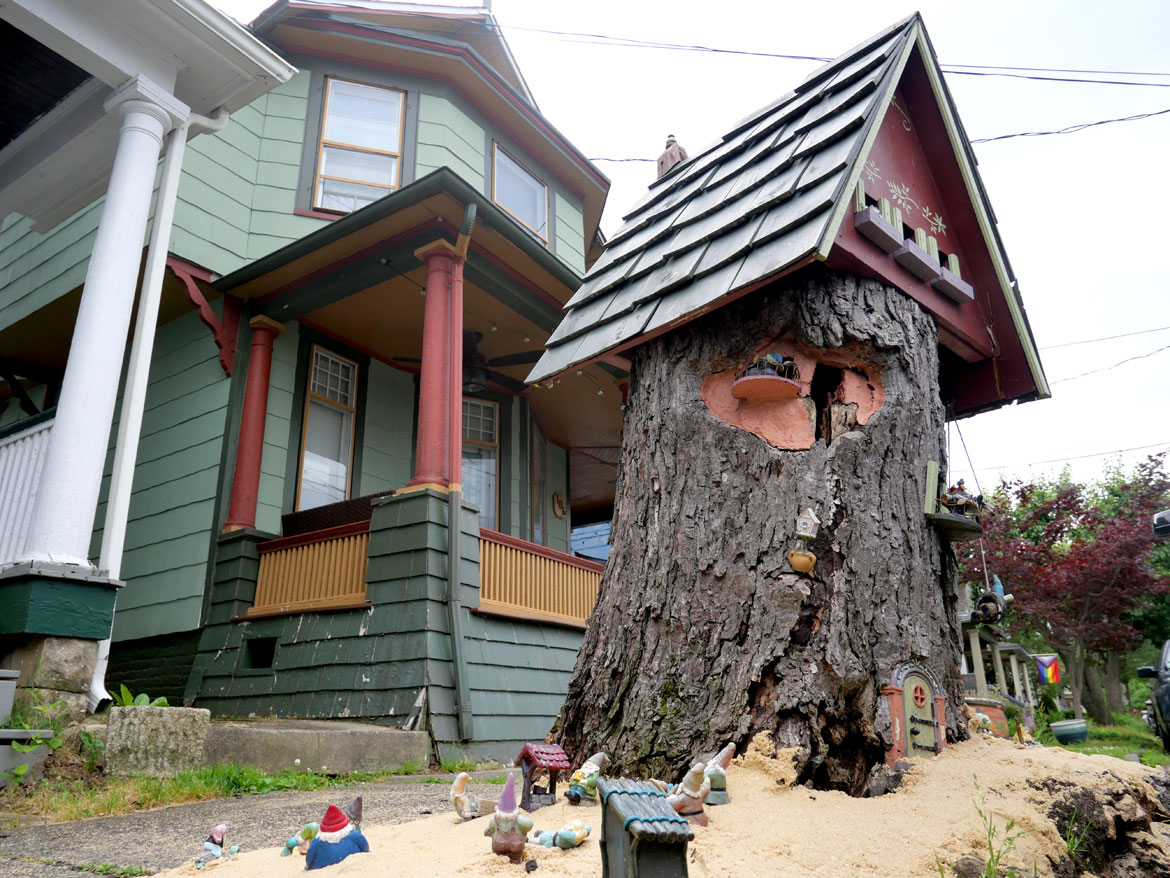
New York
Emile Brunel’s Sculpture Garden at Boiceville, New York.
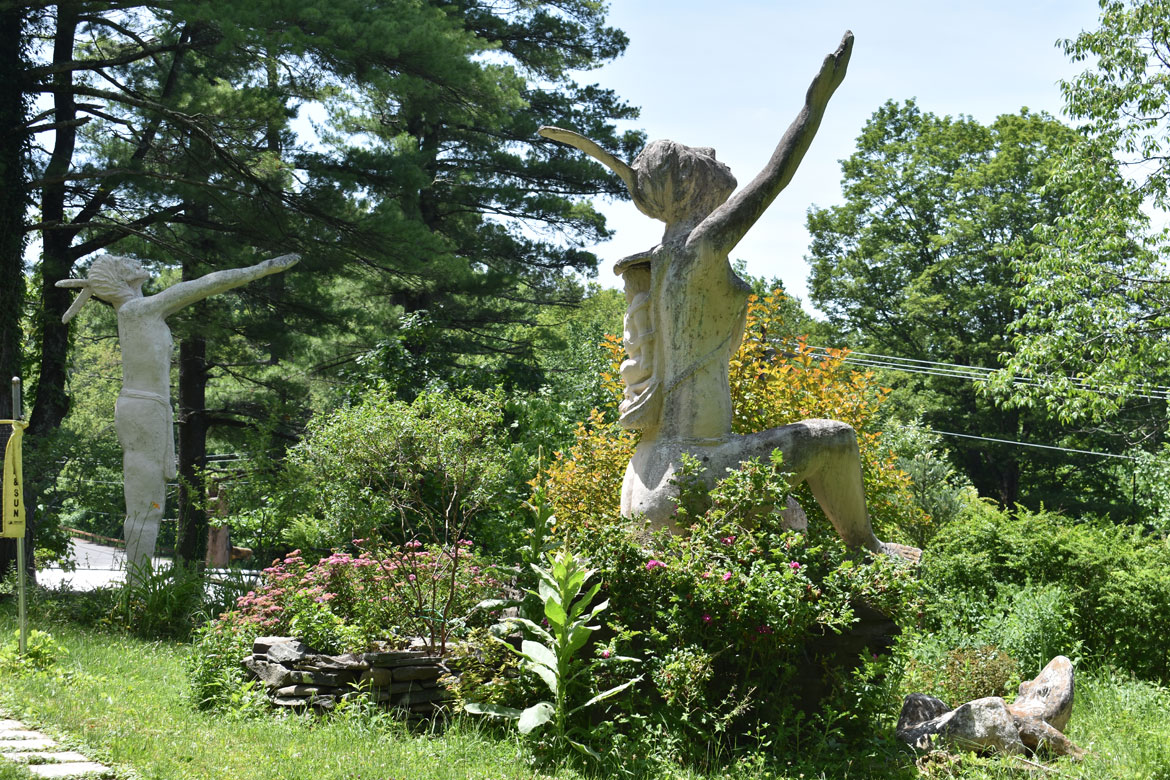
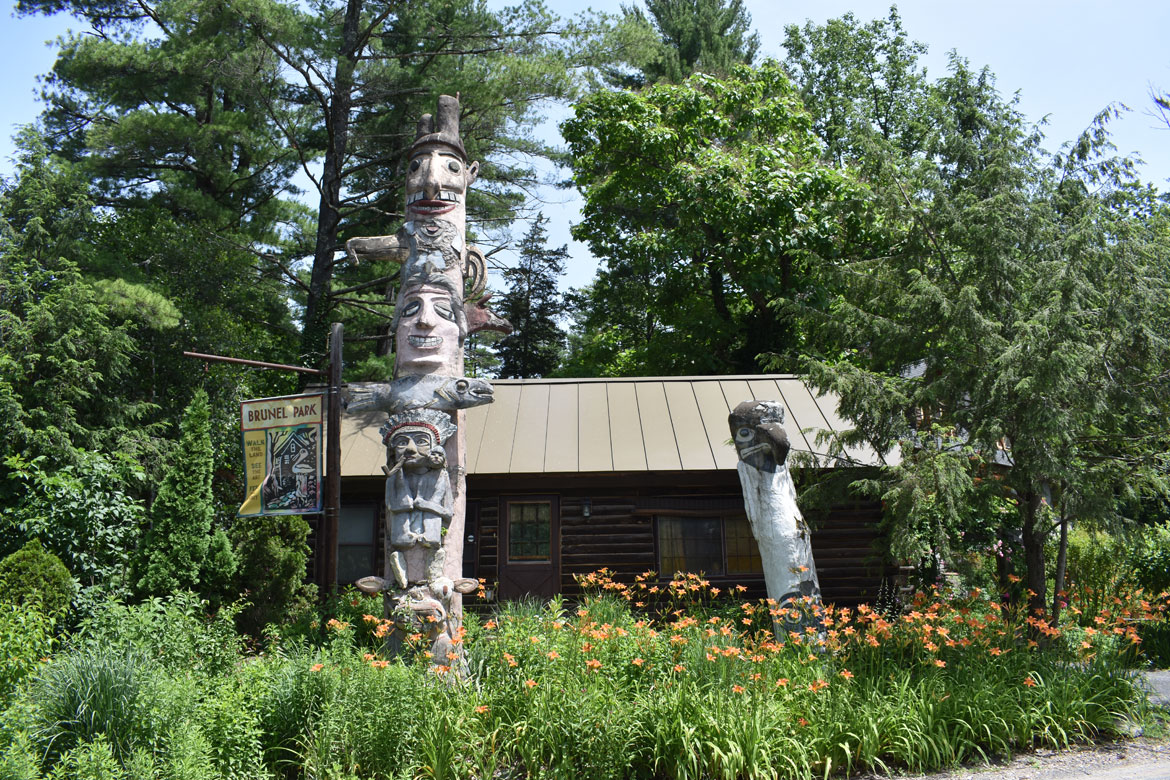
Steve Heller’s Fabulous Furniture and Auto Art, Boiceville, New York.
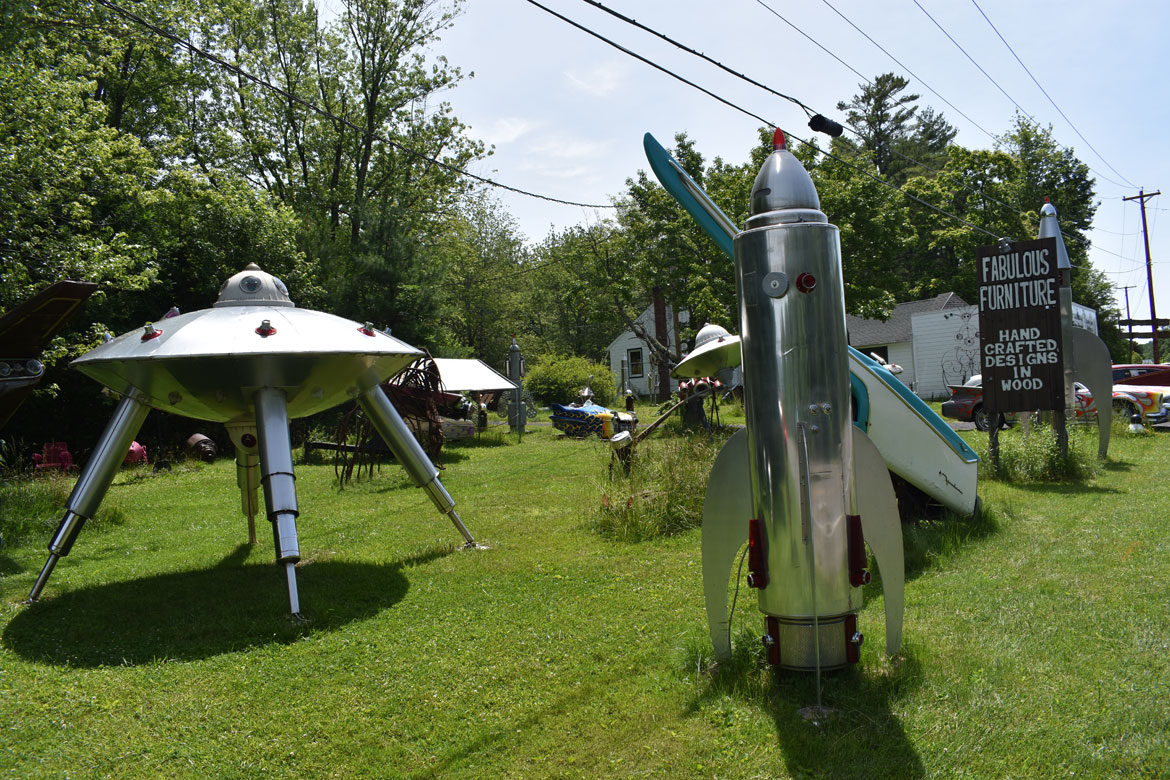
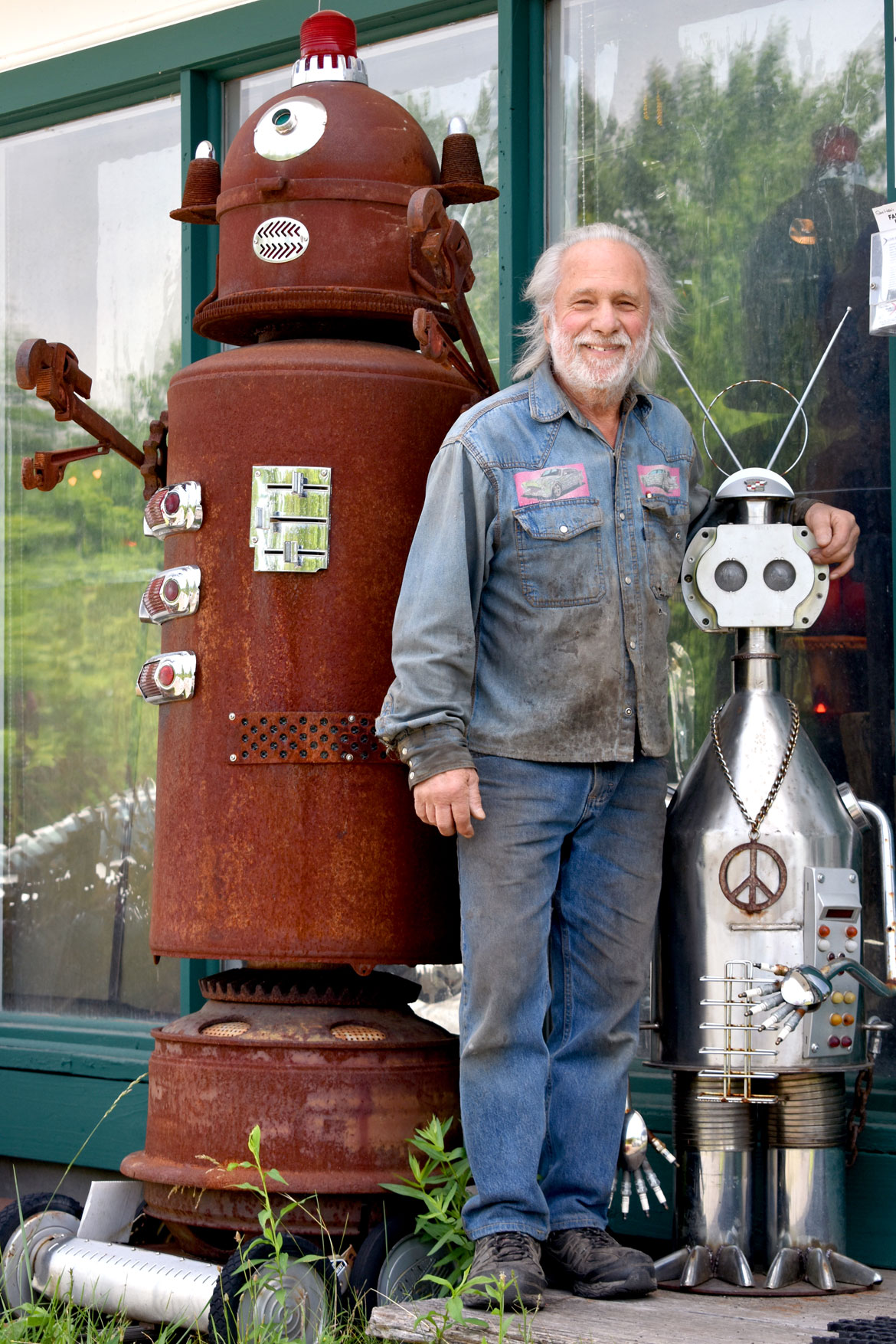
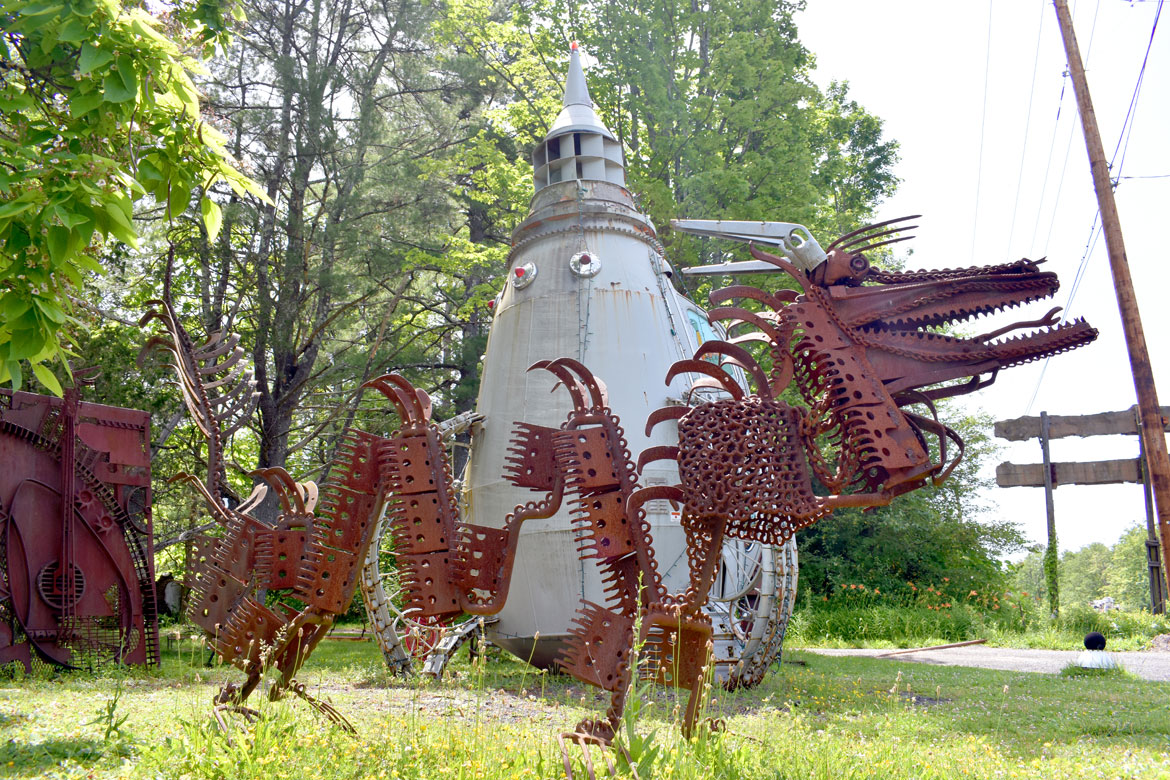
North Carolina
Elsewhere in Greensboro, North Carolina. Elsewhere is a museum and artist residency that makes its home in the 3-floor, former thrift store that was operated Sylvia Gray in Greensboro, North Carolina. “Over time her inventory became more or less a collection, more or less a hoard, more or less an archive that detailed her tastes, interests, and perceptions of value,” the institution reports. “…The astounding accumulation amassed over her lifetime remained in a massive heap that was boarded up after her death in 1997.” Gray’s grandson George Scheer visited with friends on spring break from the University of Pennsylvania in 2003 and got the idea to transform it into … something. With friends’ help, they made it into a “living museum,” an art environment that is part shrine to Gray’s collecting and part “changing, interactive environment of artworks, objects, and programs that inspire new ways to look at and re-purpose recent cultural surplus.”
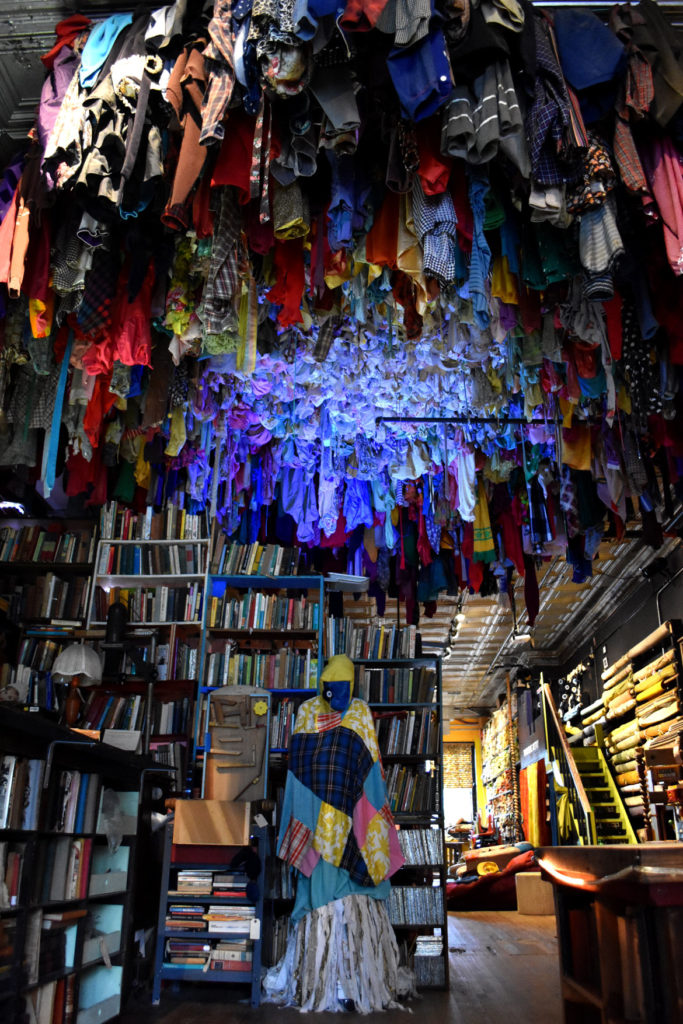
Vollis Simpson Whirligig Park at Wilson, North Carolina. When he neared retirement age, Vollis Simpson, a farm machinery repairman based at a quiet rural crossroads in Lucama, North Carolina, began constructing giant kalediscopic kinetic sculptures and placing them around a pond across from his shop. Some rose more than 50 feet into the sky. The shop and whirligig garden are mostly overgrown now. There’s barbed wire and signs warn to keep out. At the corner stands one of his monumental whirligigs, paint fading, but still elegantly spinning in the wind. Before he died at age 94 in May 2013, a plan was hatched to move most of them to the city of Wilson, 11 miles away, where a park would be created specifically dedicated to them. There are some 30 of them there now, spruced up in bright red, white and blue, astonishingly huge and yet delicately dancing in the wind. They’re joyous and make you attentive to the air currents. They’re like a carnival of the sky.
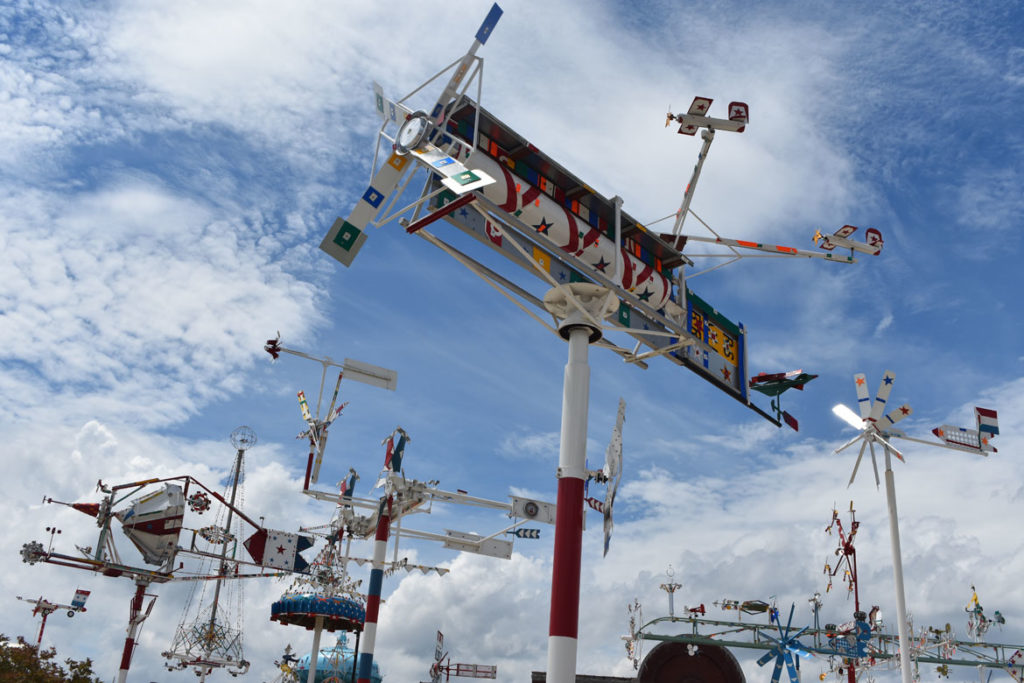
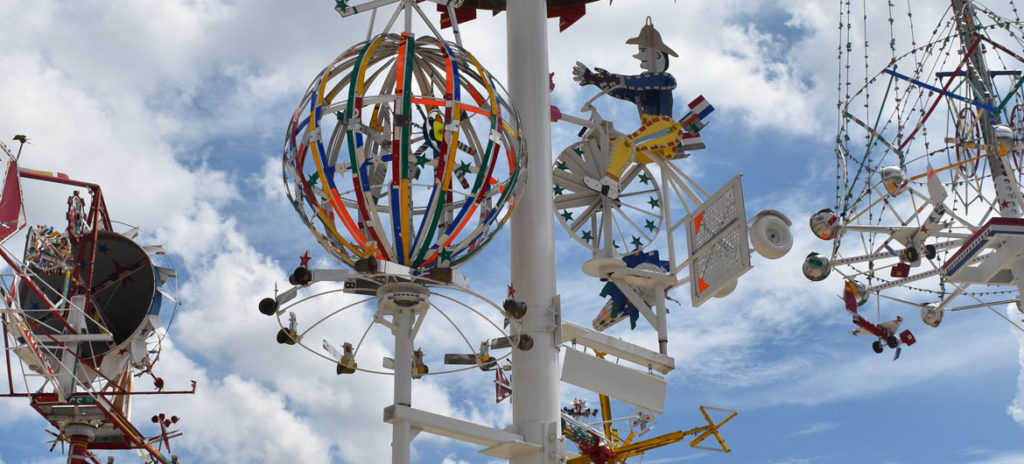
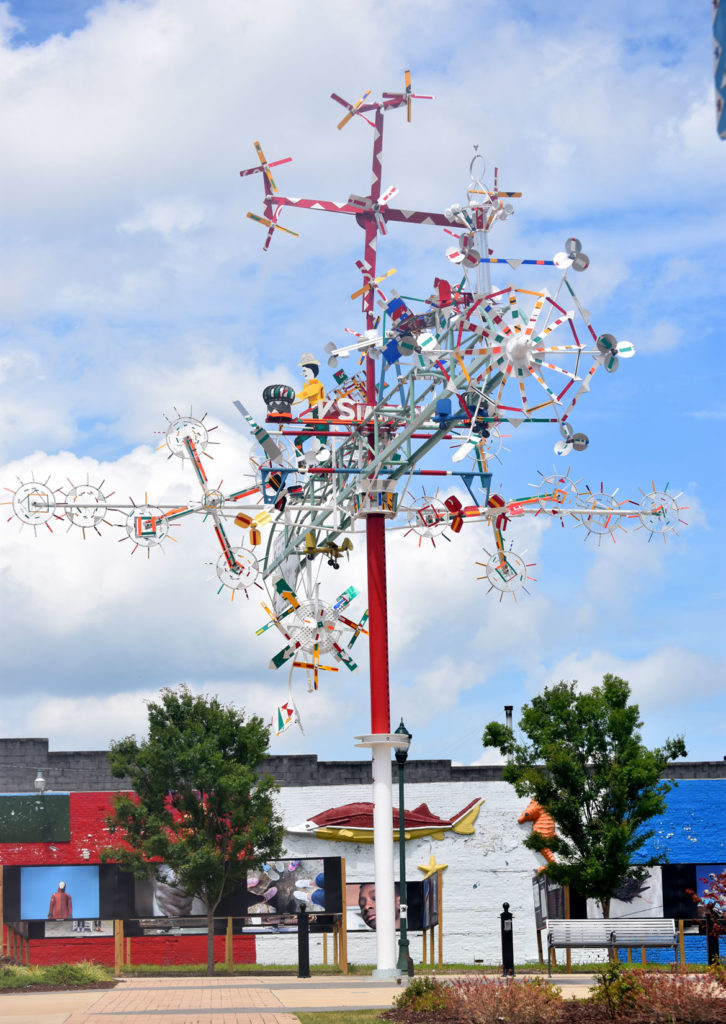
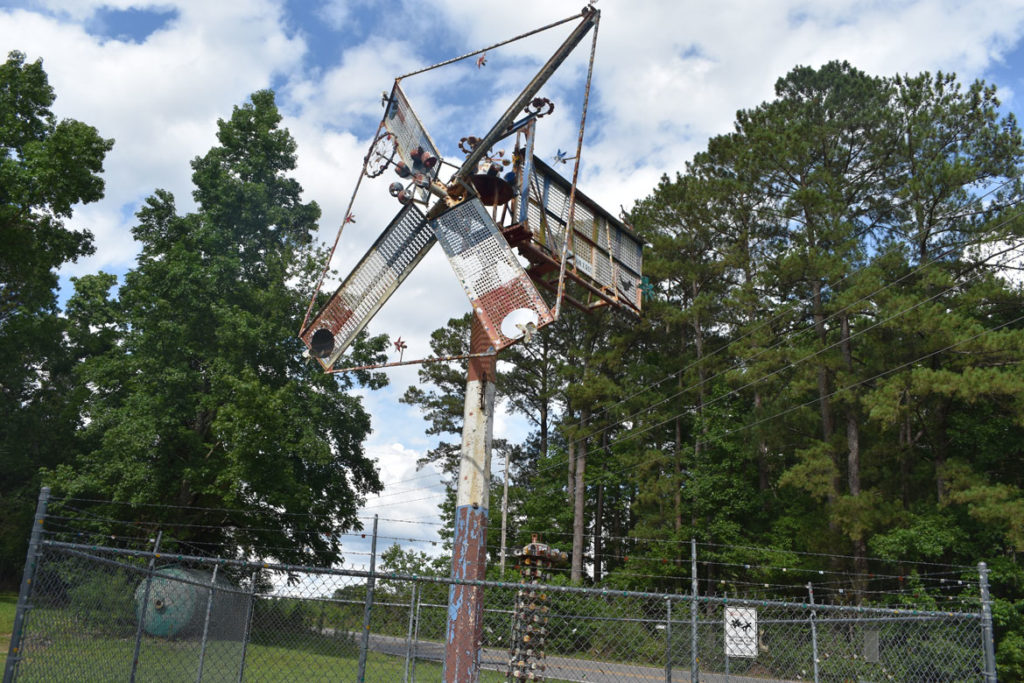
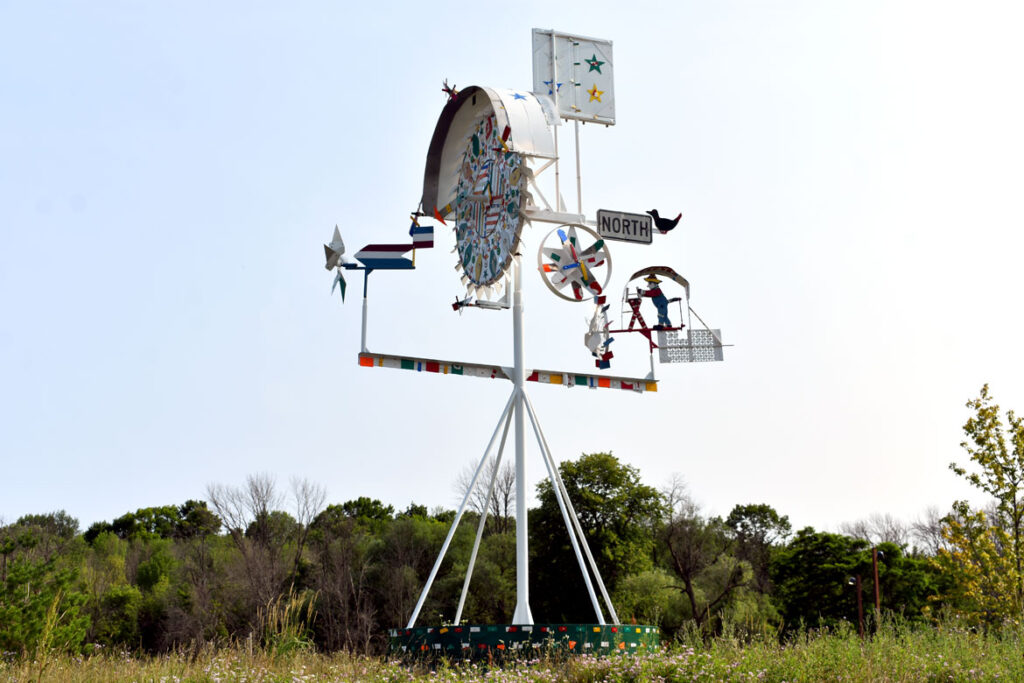
Quentin J. Stephenson’s Occoneeche Trapper’s Lodge, Garysburg, North Carolina. Stephenson’s former home includes his Occoneeche Trapper’s Lodge in the front yard right along the road. The lodge is a sort of art monument or museum that Stephenson, who died in 1997, decorated with mosaics, cedar knees and sculptures addressing environmental and Native American themes.
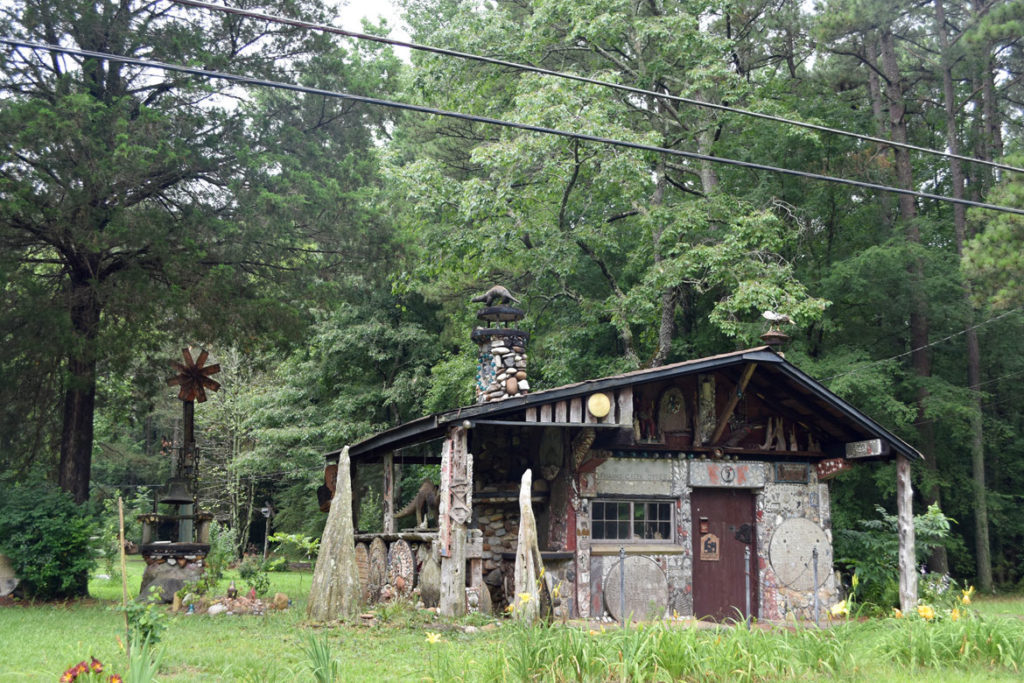
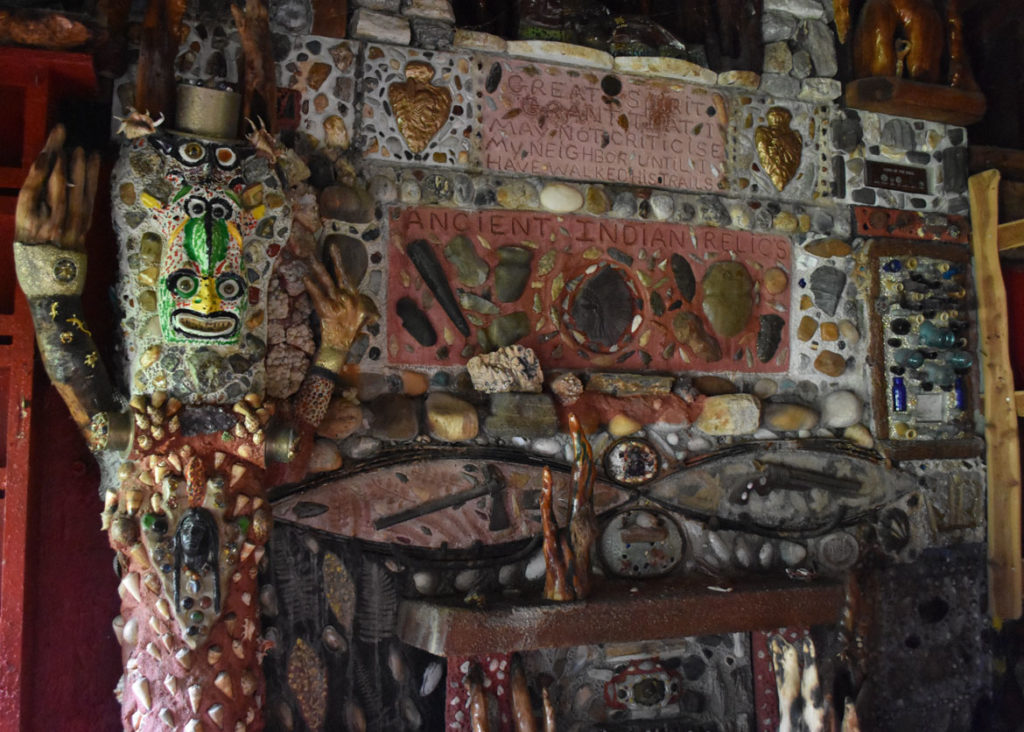
Ohio
Jim Bowsher’s Temple of Tolerance at Wapakoneta, Ohio.
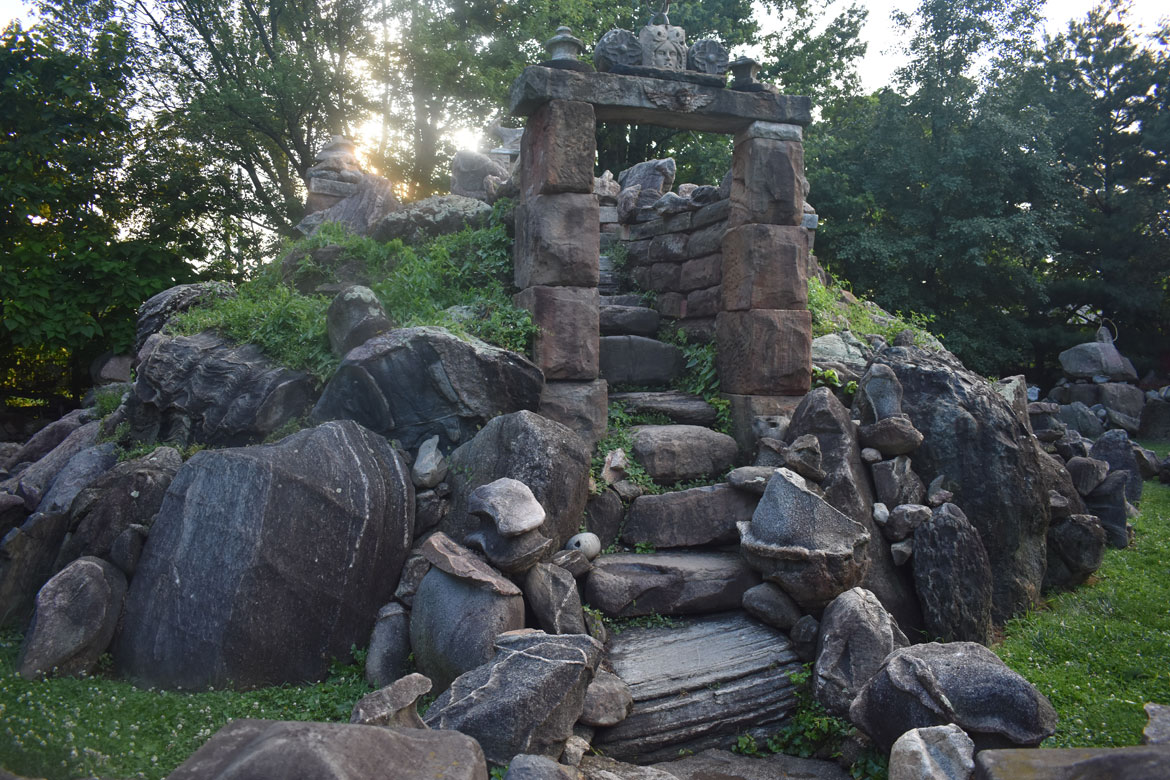
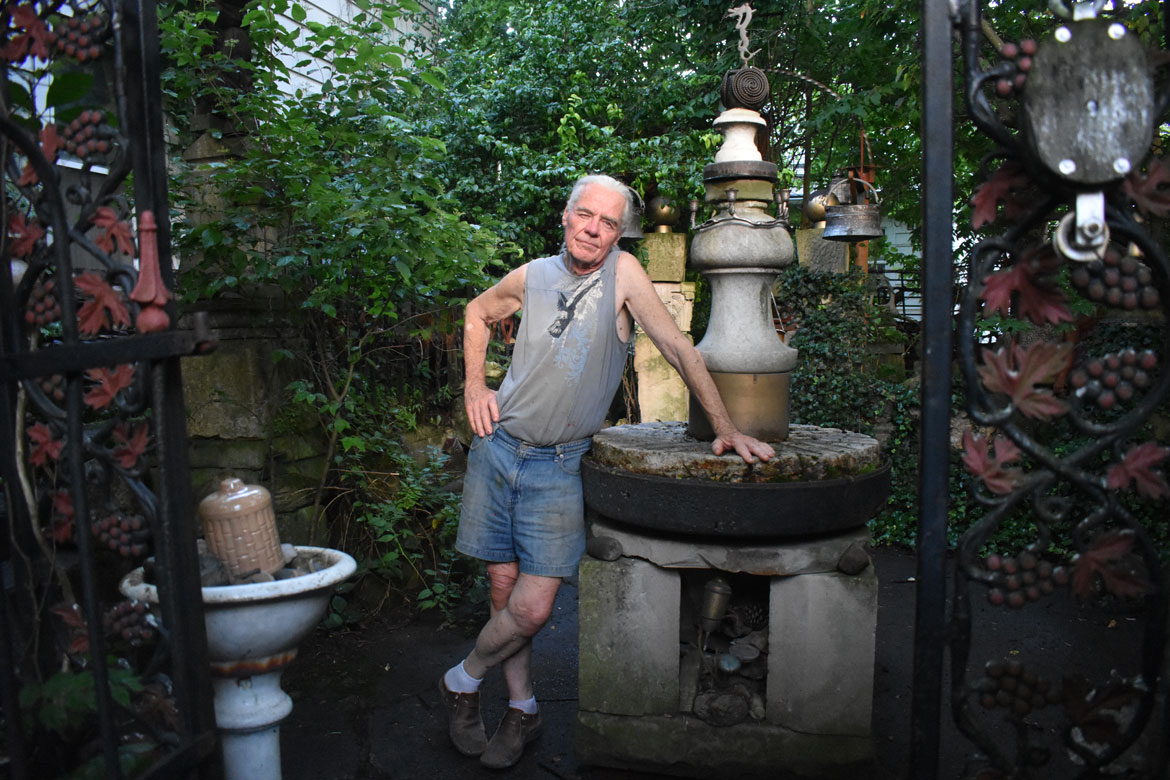
Jeff Elersic’s van and home at Geneva, Ohio.
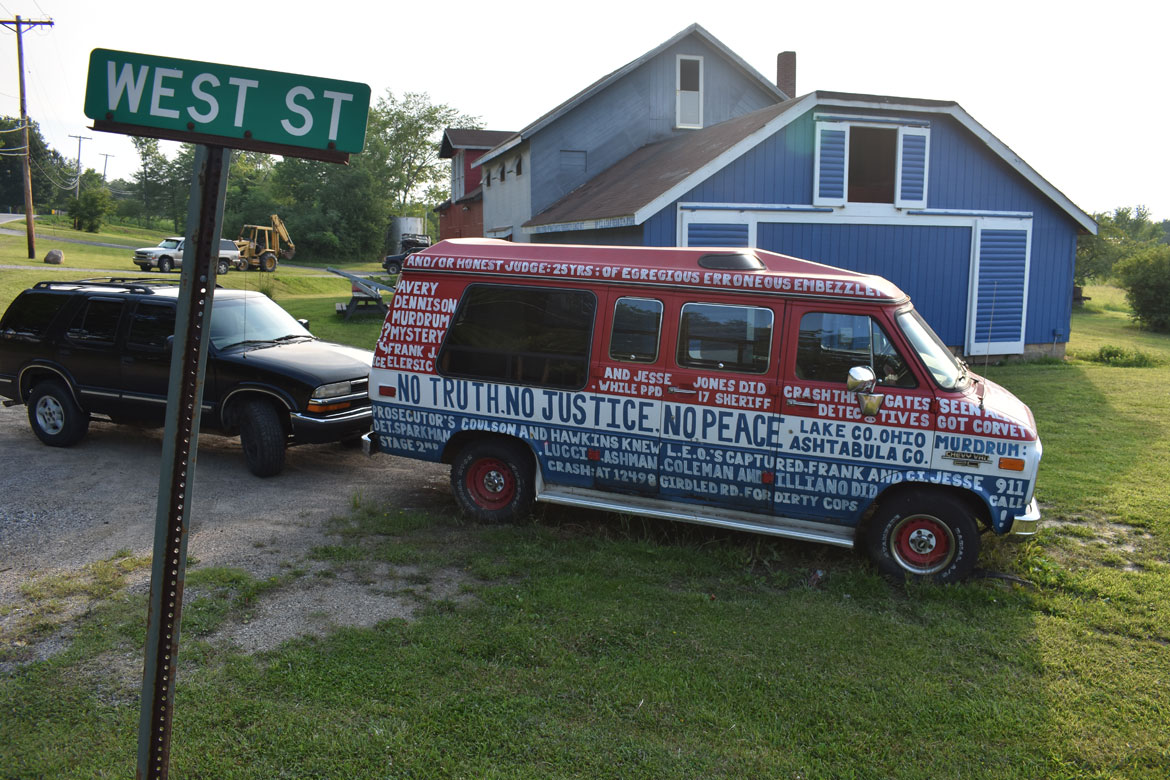
Ben Hartman’s Rock Garden at Springfield, Ohio.
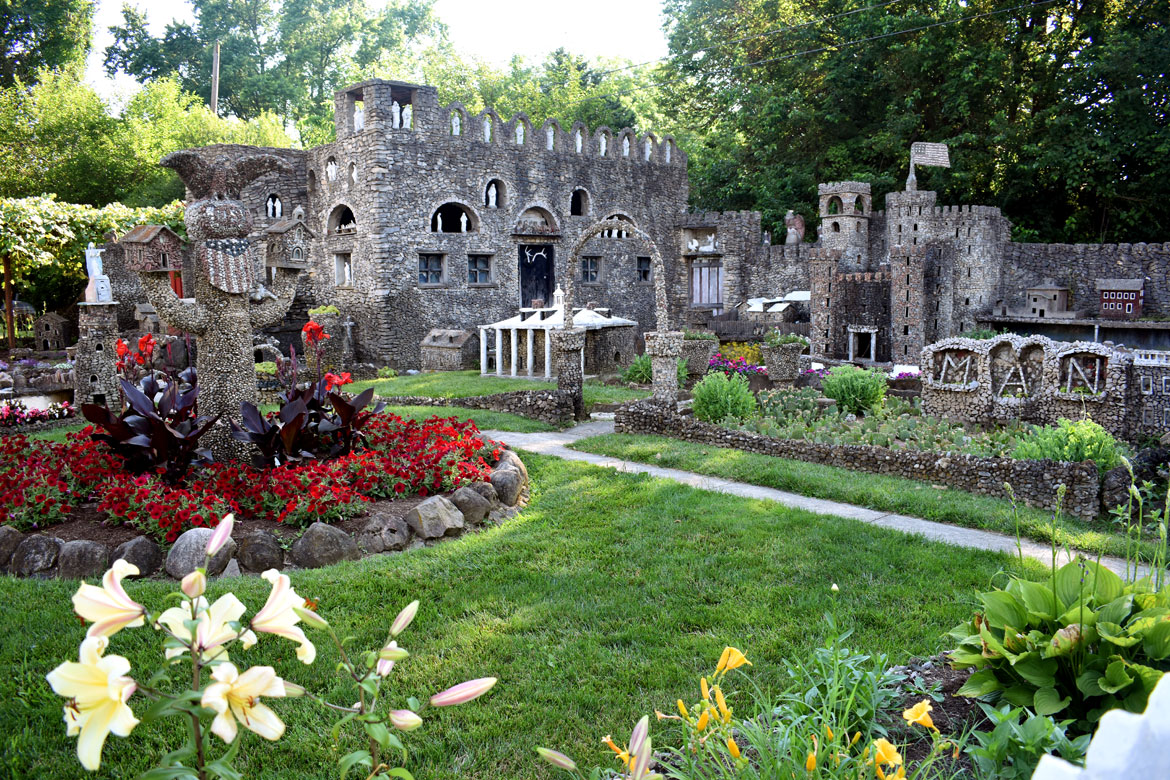
Roy Peters’s Welding at Harborcreek, Ohio.
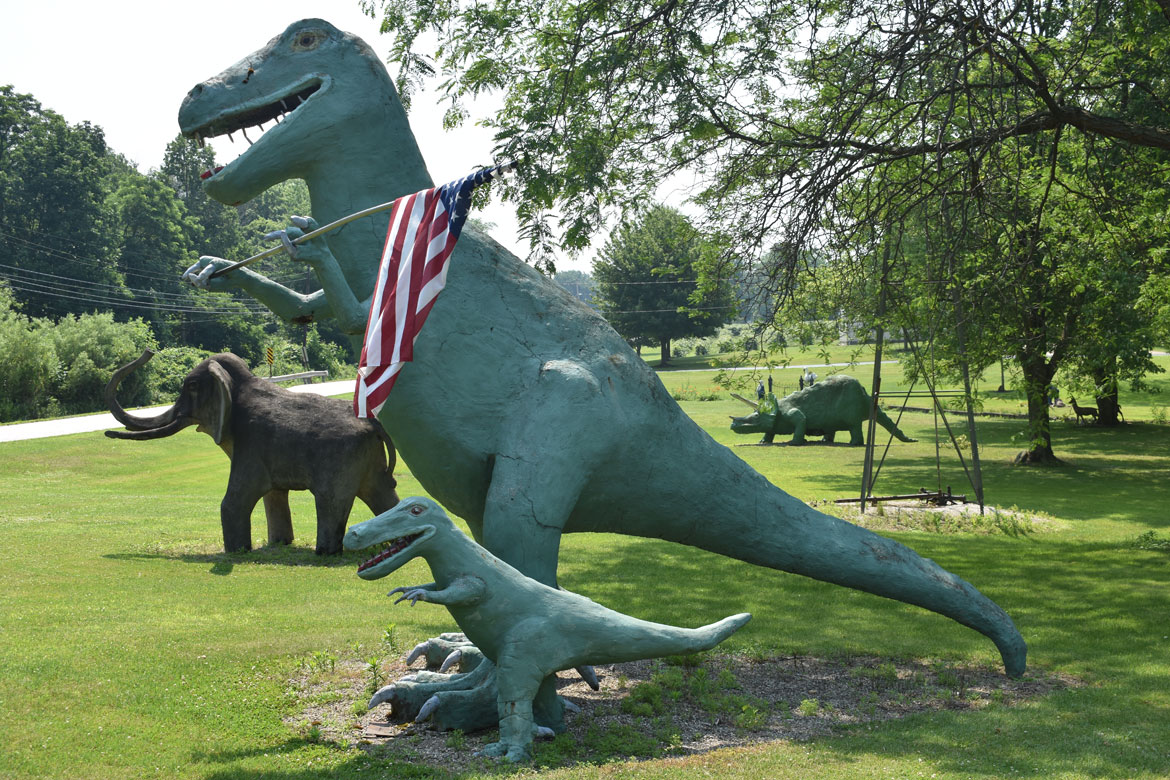
Rock City at Cadiz, Ohio
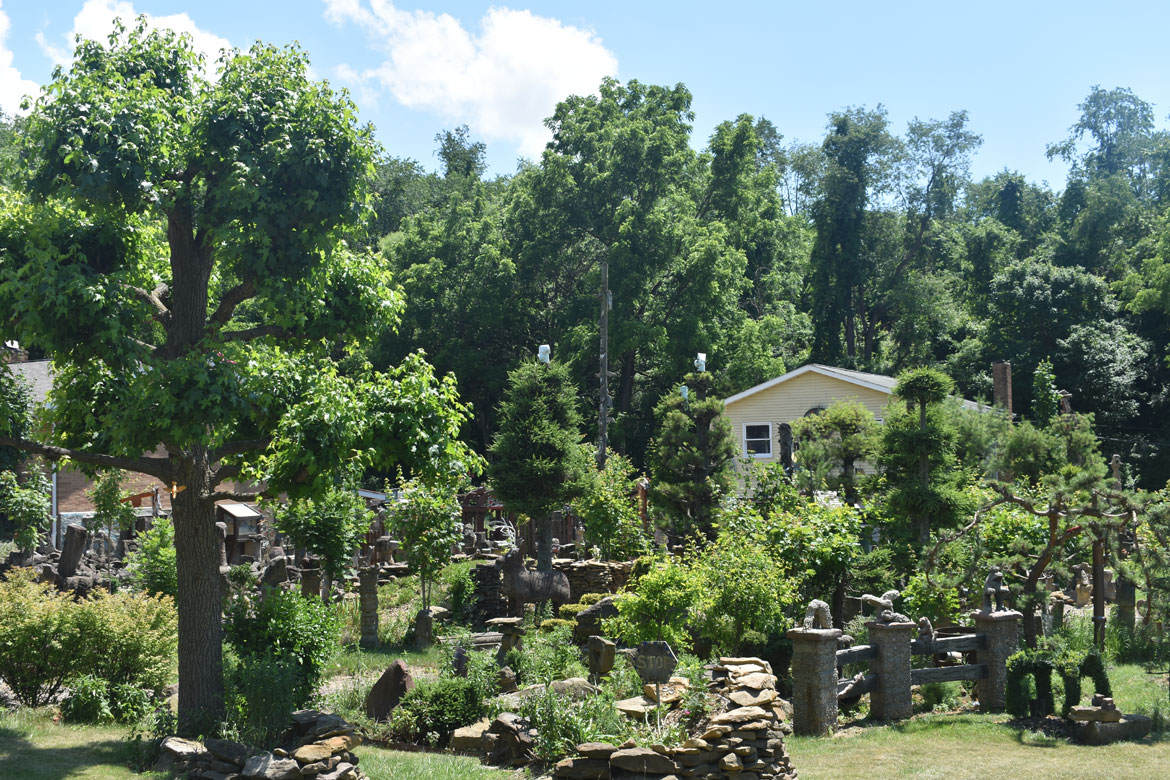
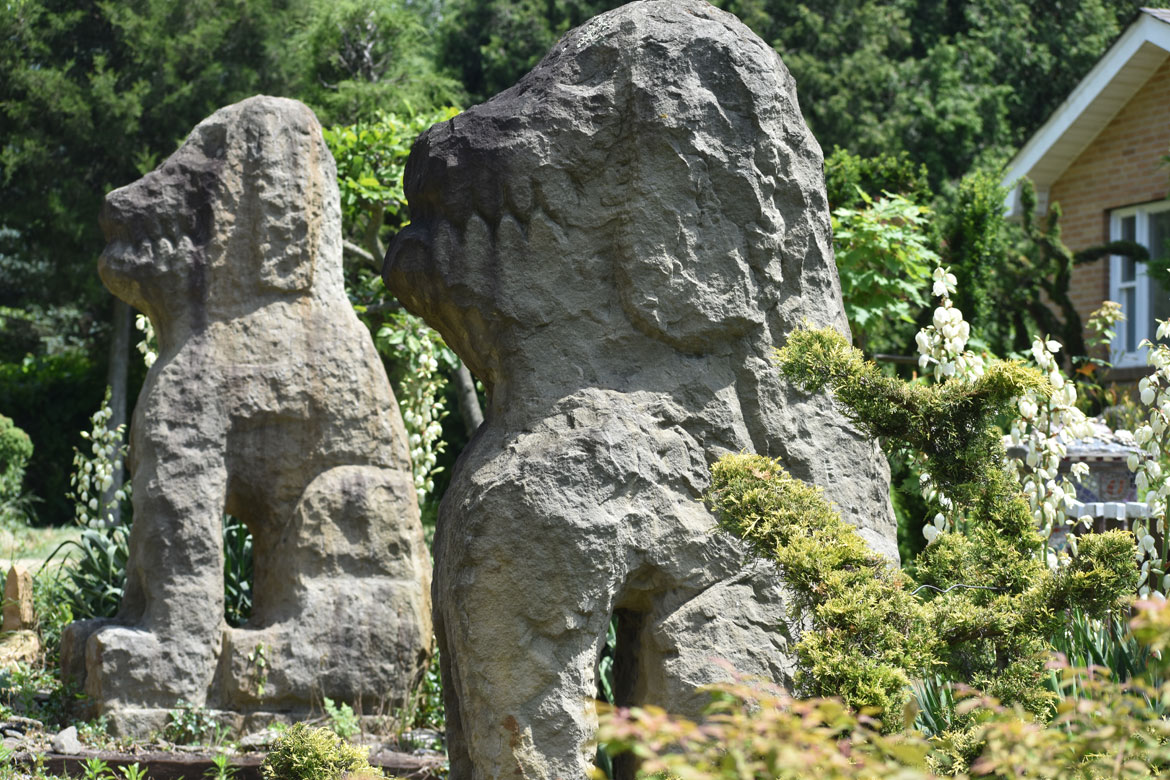
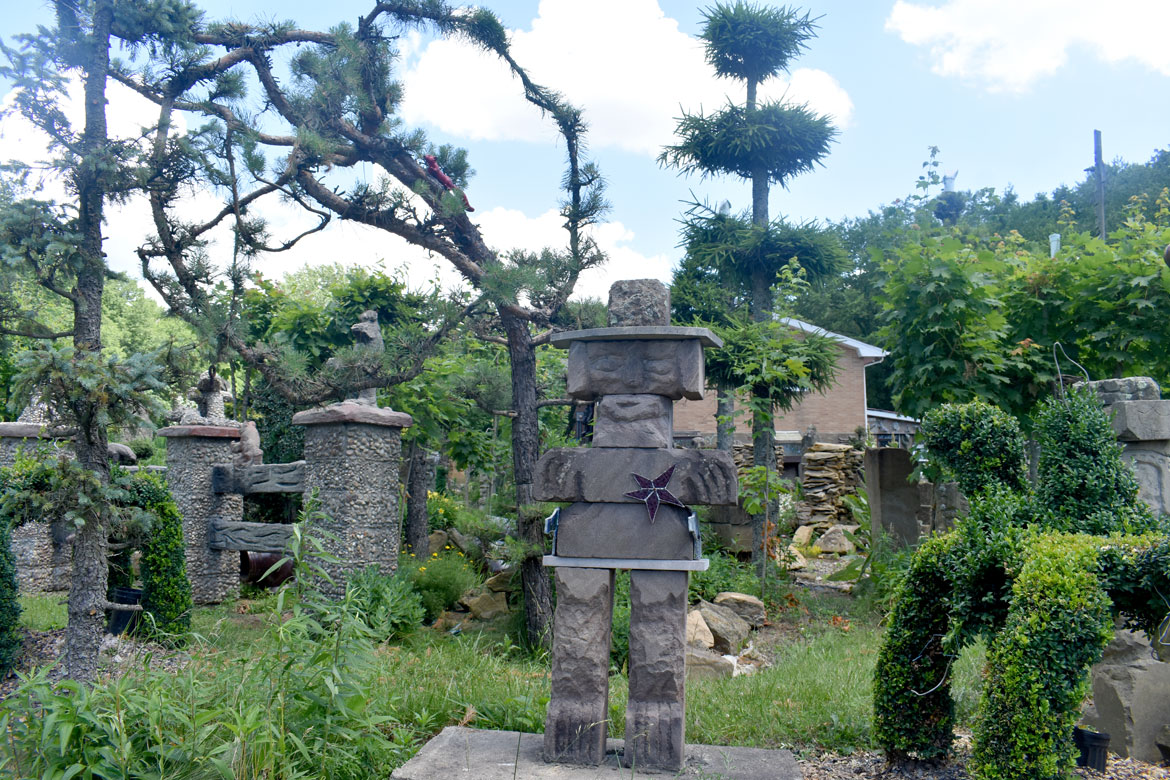
Pennsylvania
Randy Gilson’s Randyland in Pittsburgh, Pennsylvania.
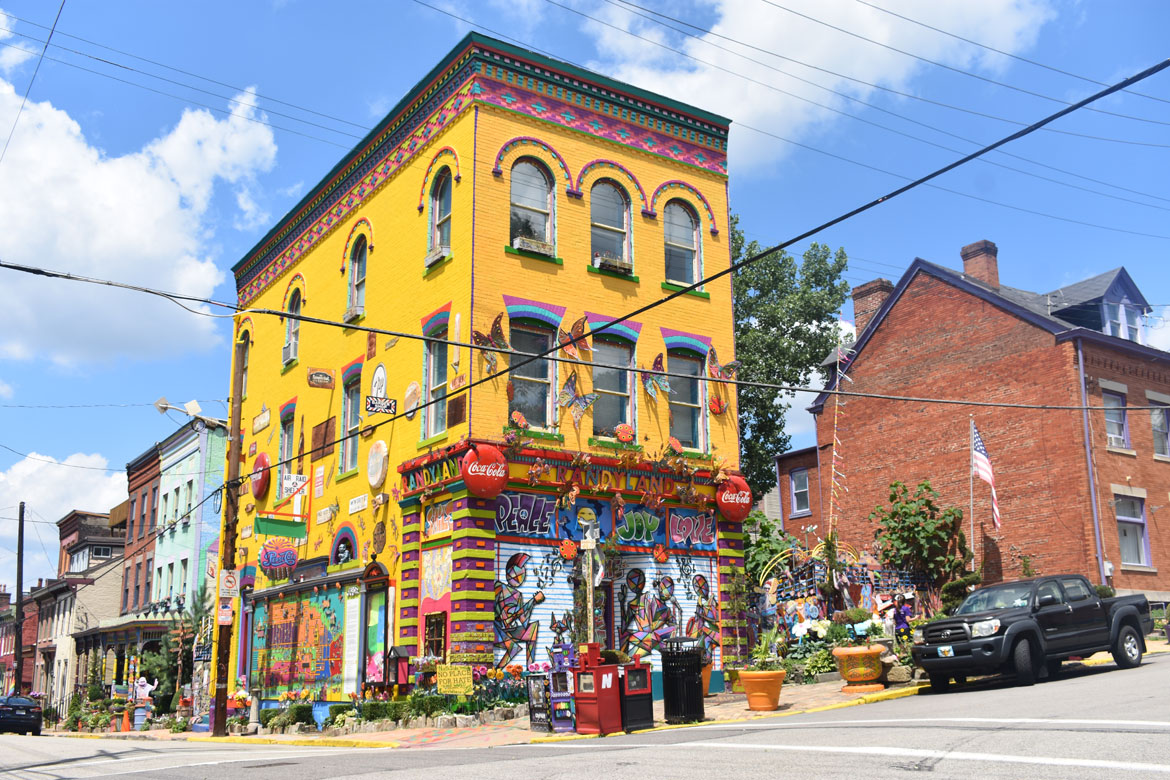
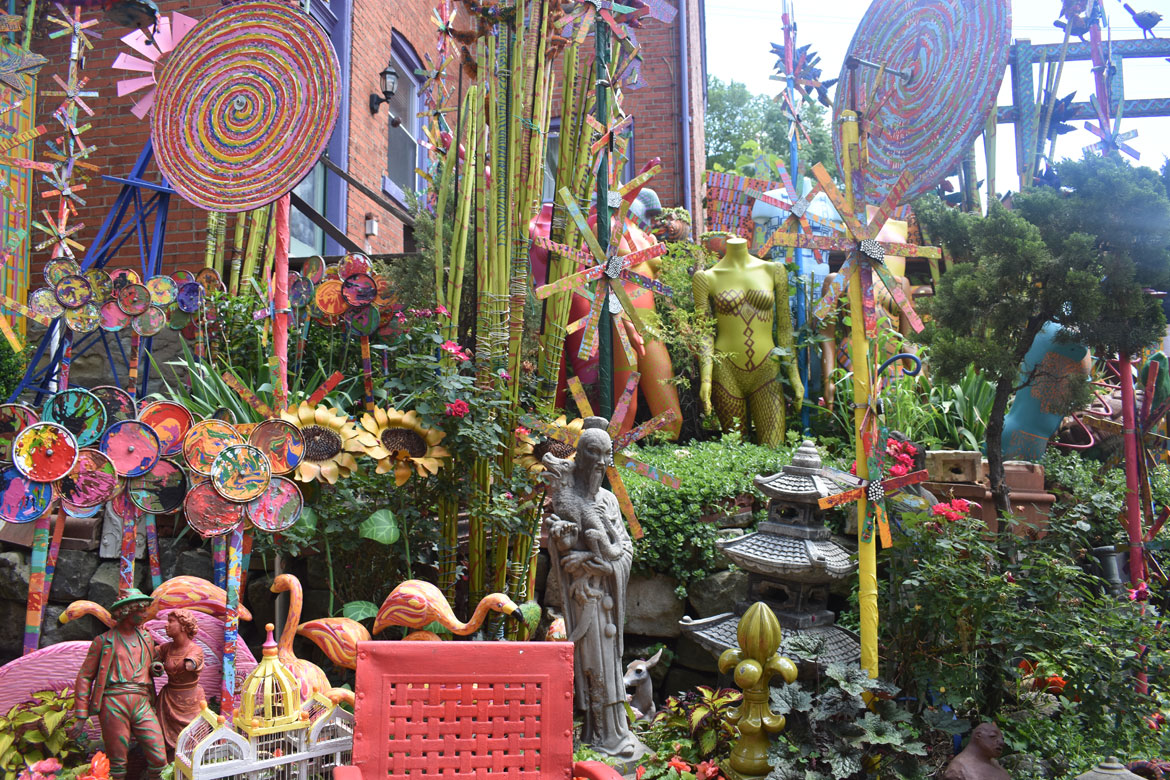
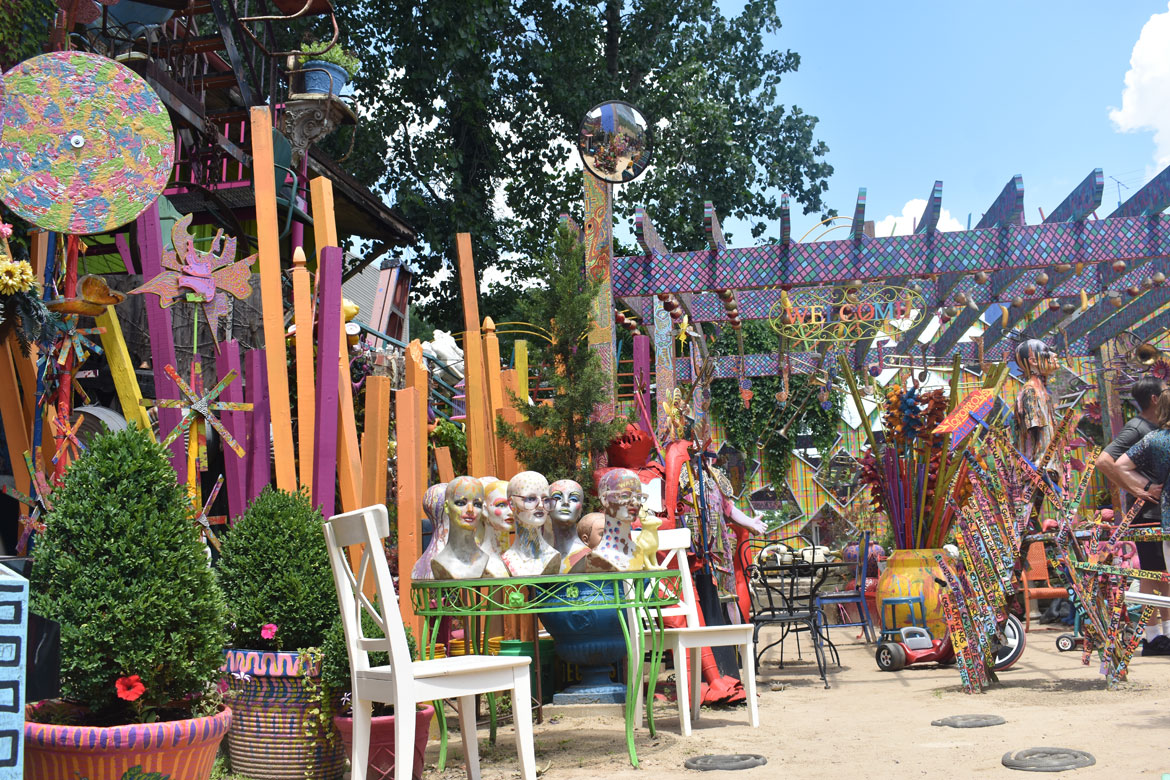
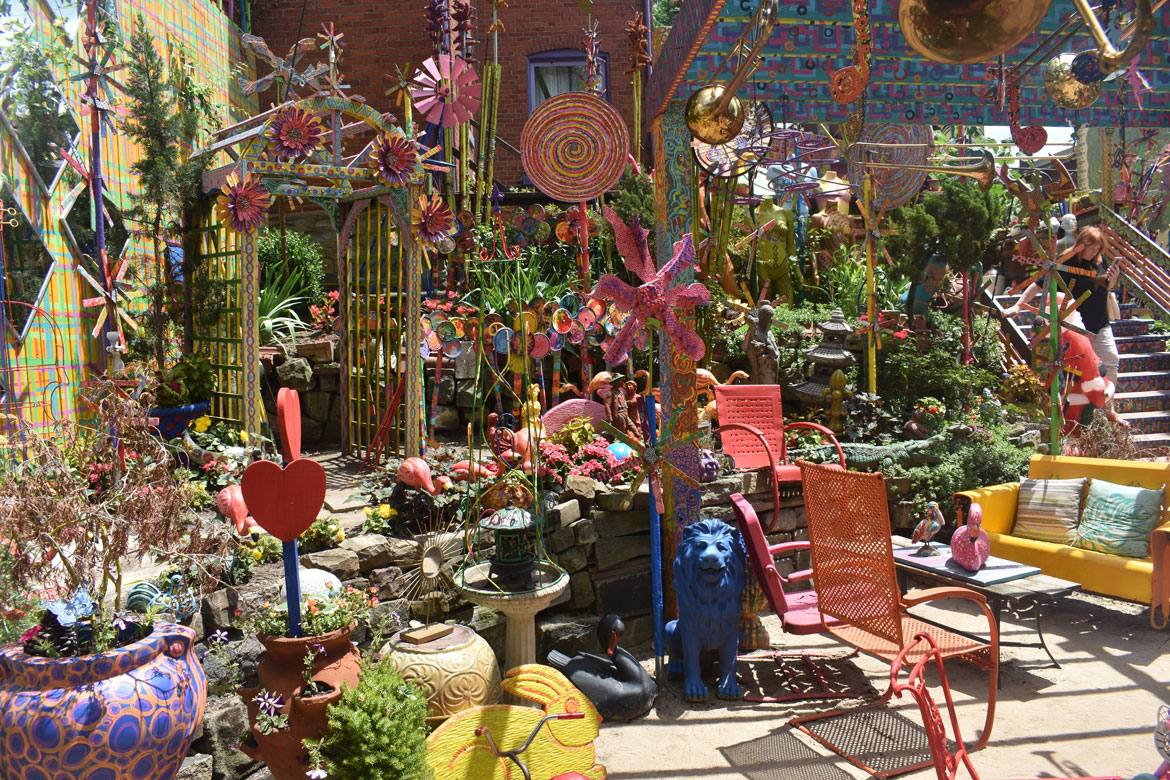
Halaluyah motor home at Philadelphia City Hall, Pennsylvania.
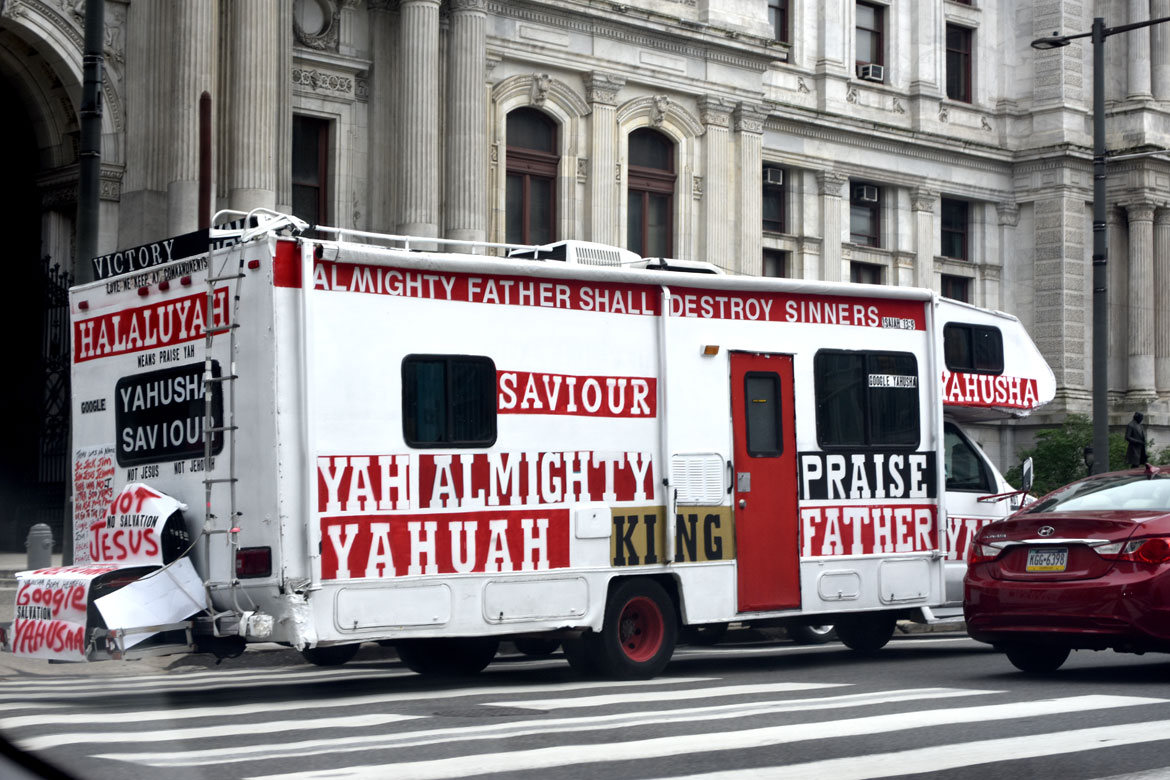
Willie Jordan’s home on 17th Street in Erie, Pennsylvania.
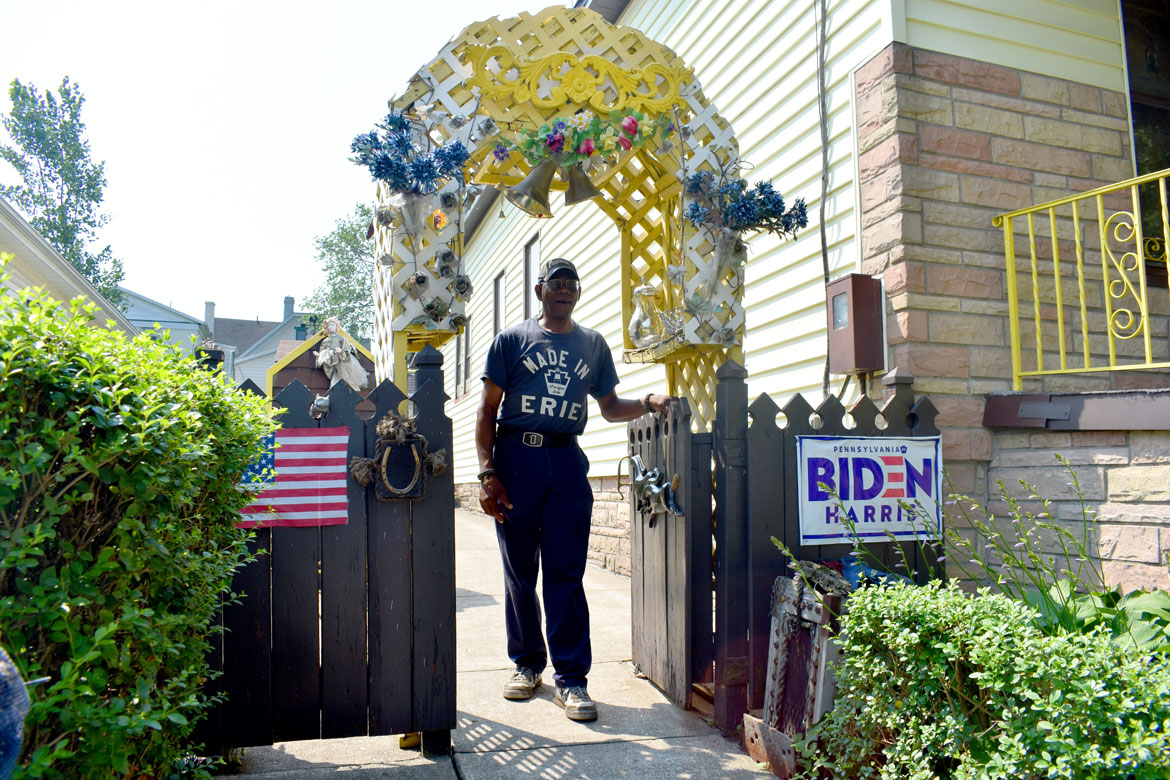
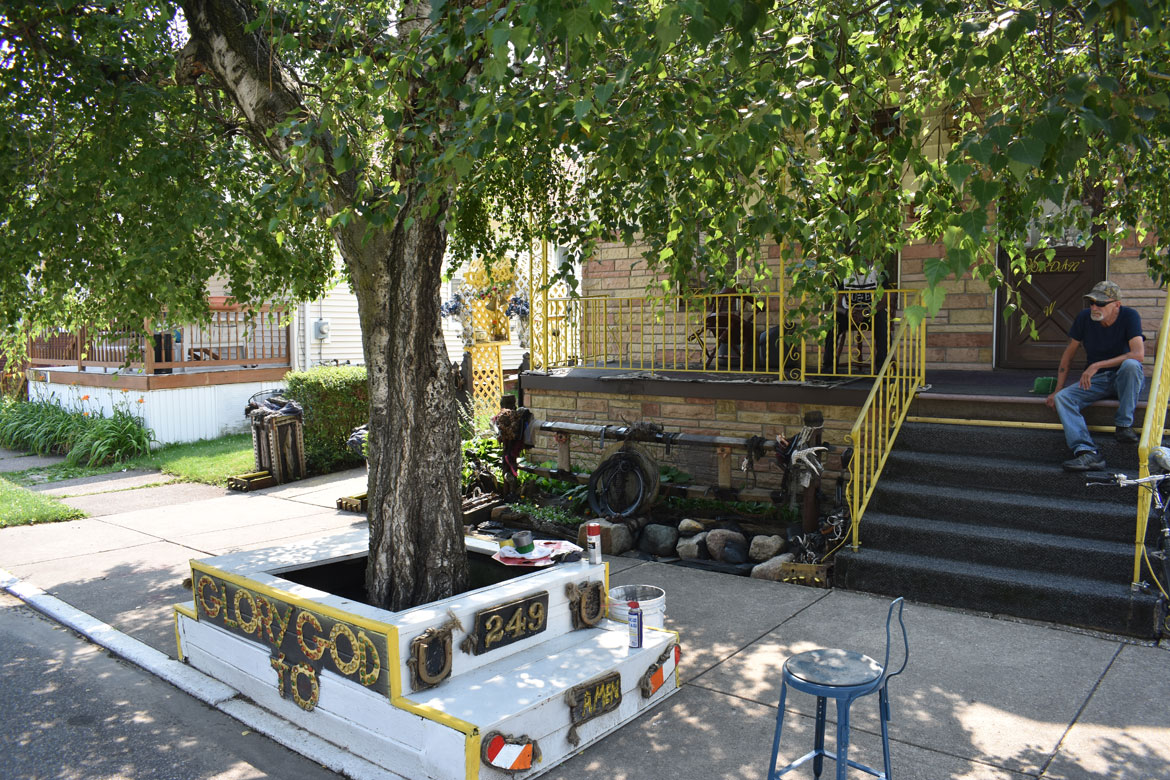
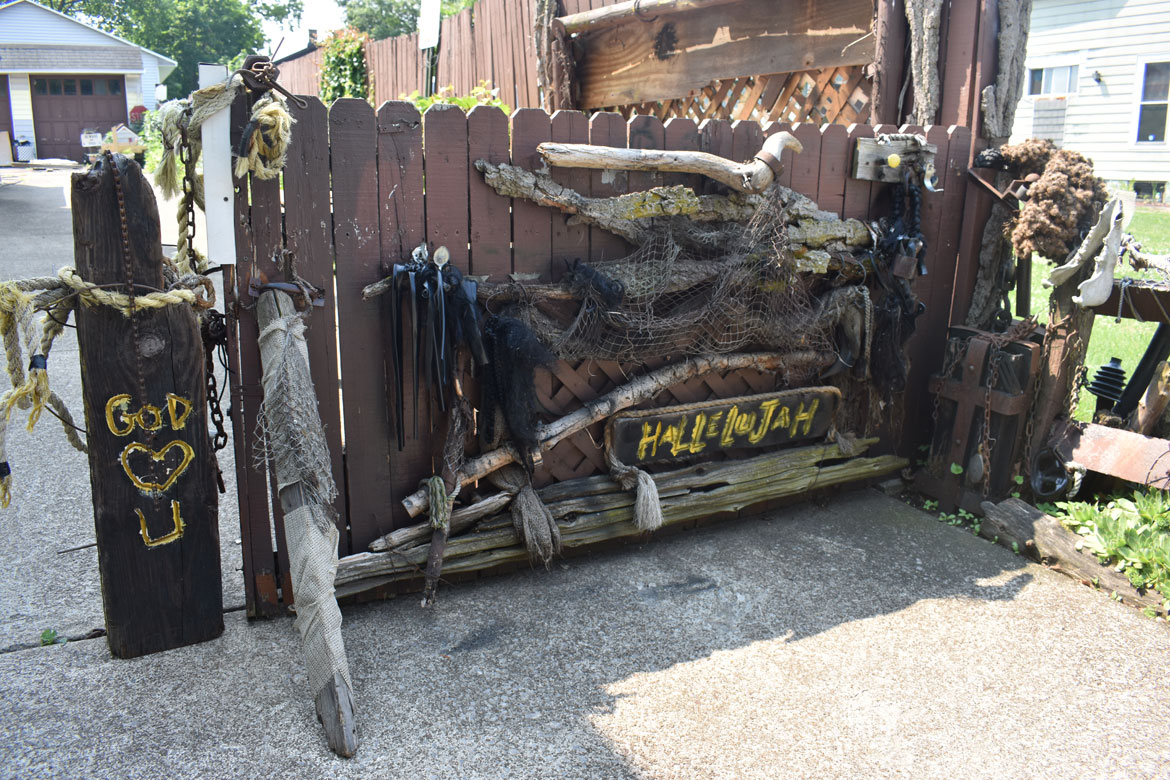
Martin Prekop’s Mirror House in Pittsburgh, Pennsylvania. The problem was the view. “If you looked out the bathroom window, you looked onto a brick wall,” the artist Martin Prekop tells me. “There was a beautiful wood behind it, but you couldn’t see it.” So he began covering that wall outside the main bedroom’s bathroom at the right rear of the house with mirrors that he custom cut to 2 inches wide by 8 inches long to match the size of the exterior bricks. Then he added more mirrors to the exterior of the house. And more mirrors. And more mirrors. Thousands of them. Until he’d covered nearly the whole exterior of the brown brick, split-level ranch house house at 897 Field Club Road in Pittsburgh’s leafy upscale Fox Chapel neighborhood. “You never know how many bricks your home is made up of until you decide to put mirrors on every one,” Prekop joked to a gathering of Mattress Factory members at the house in 2016. “It is like an art project that never ends.” Prekop put the house up for sale in spring 2023.
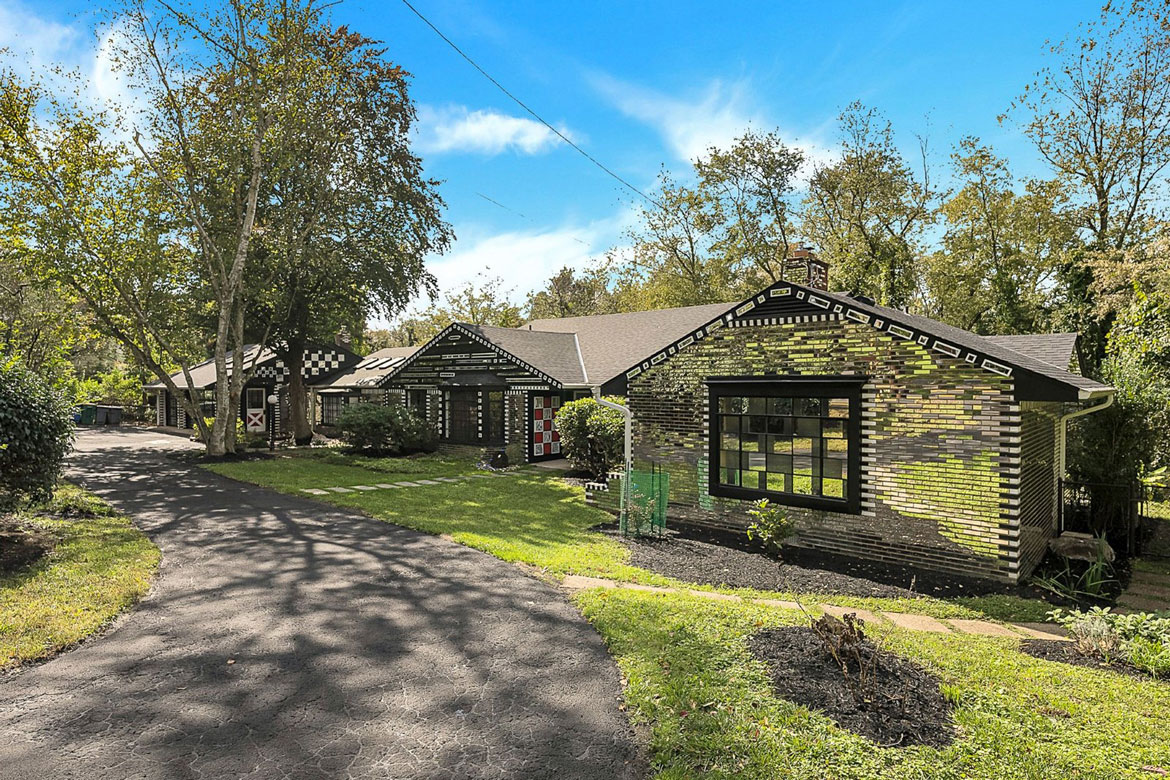
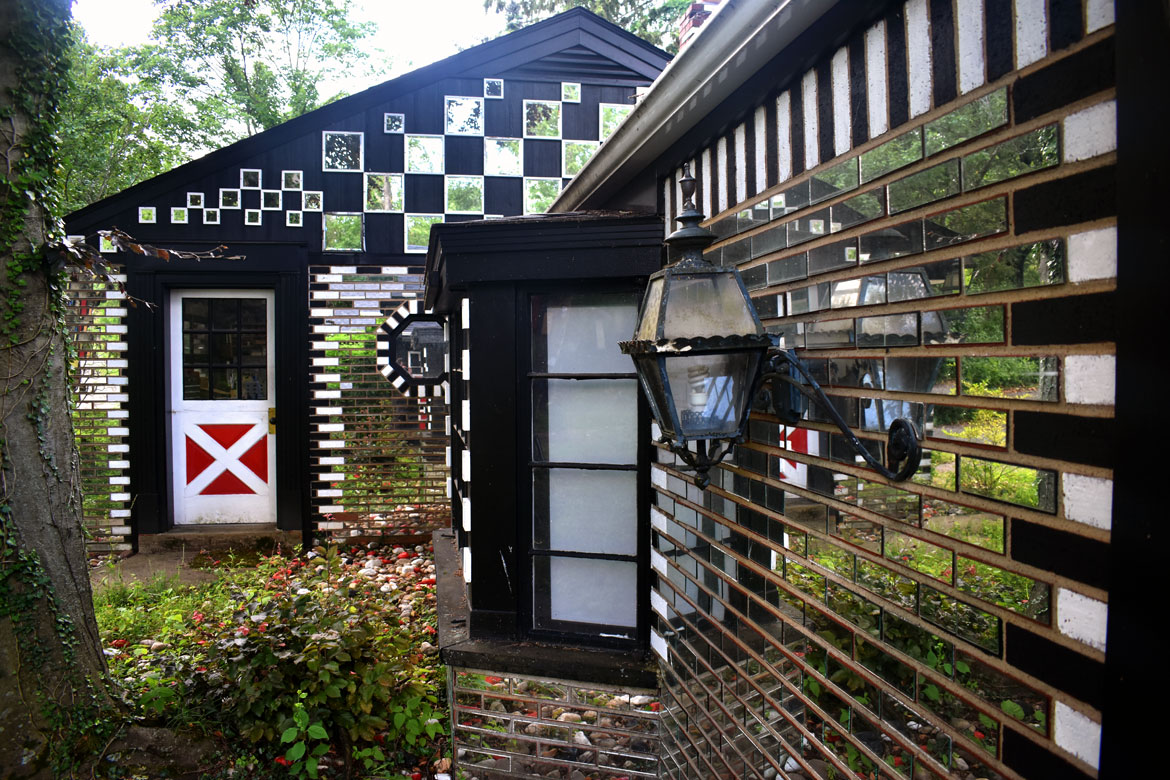
Isaiah Zagar’s Magic Gardens in Philadelphia, Pennsylvania.
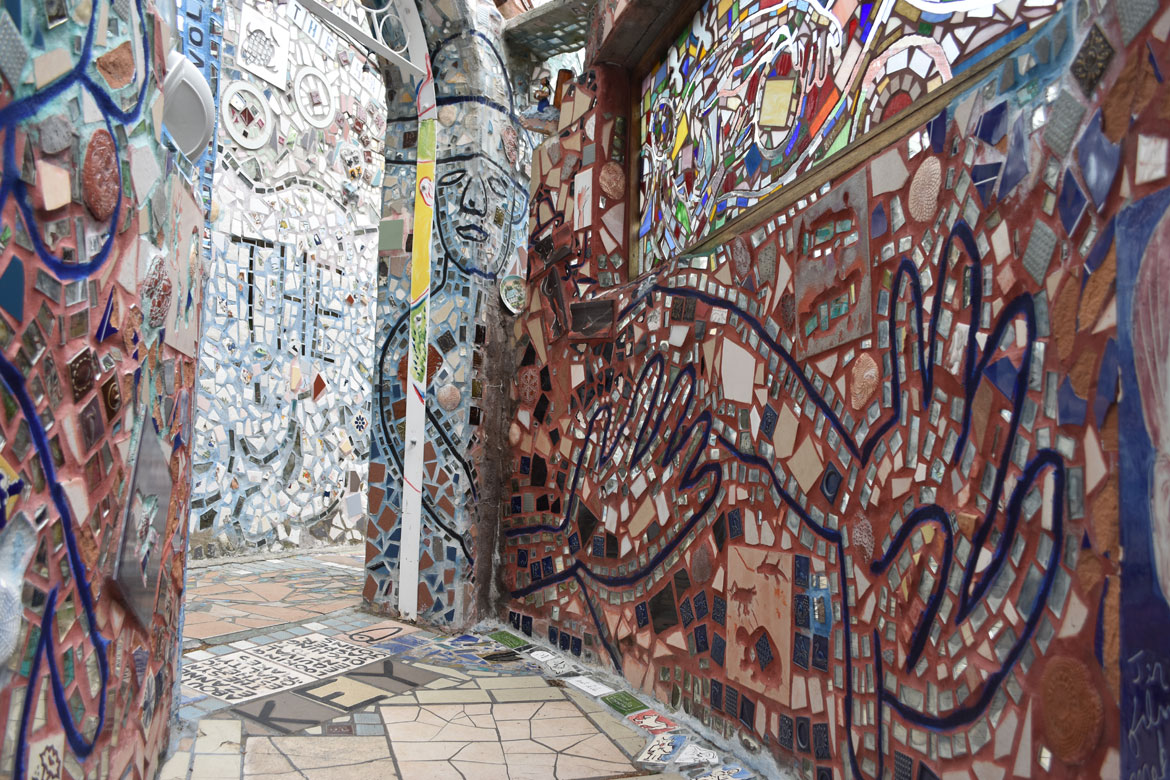
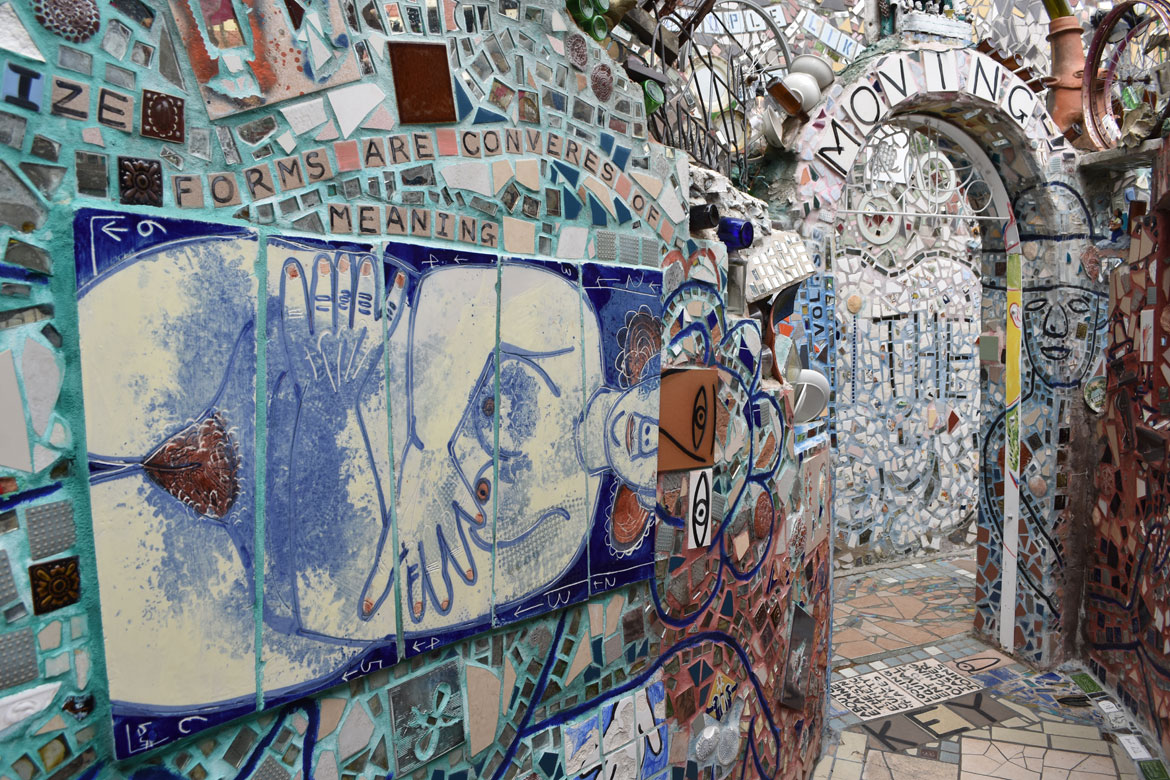
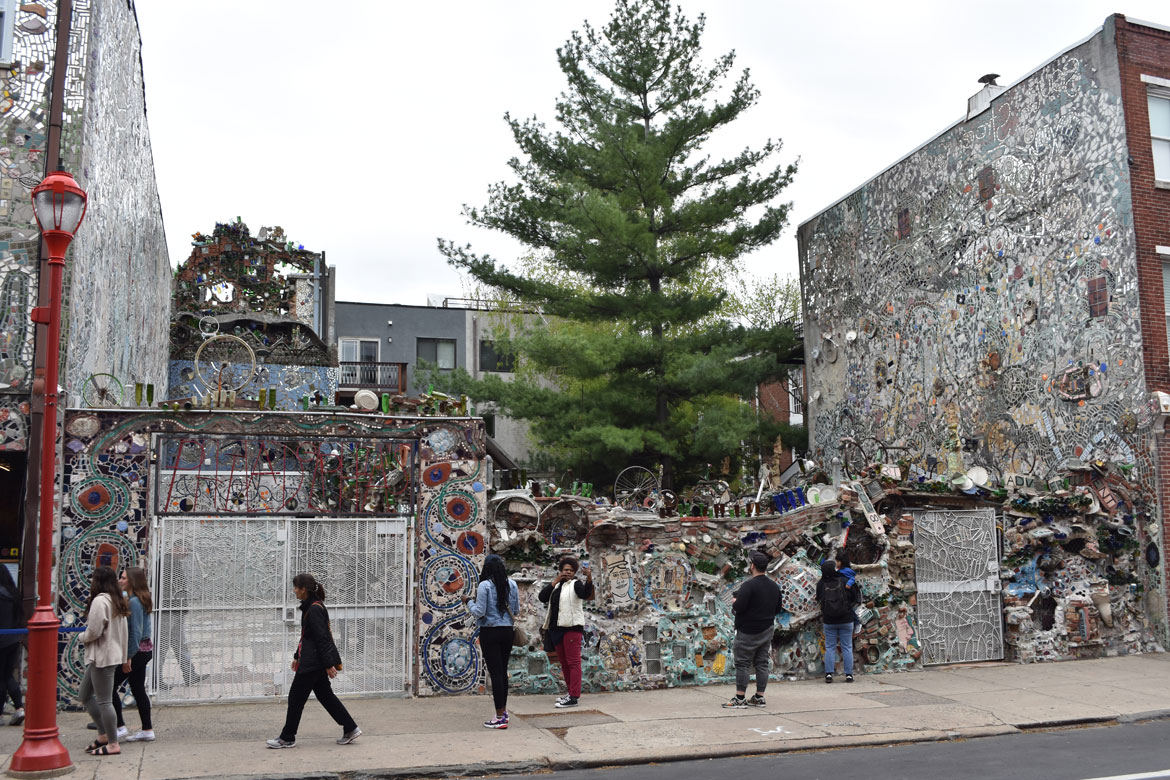
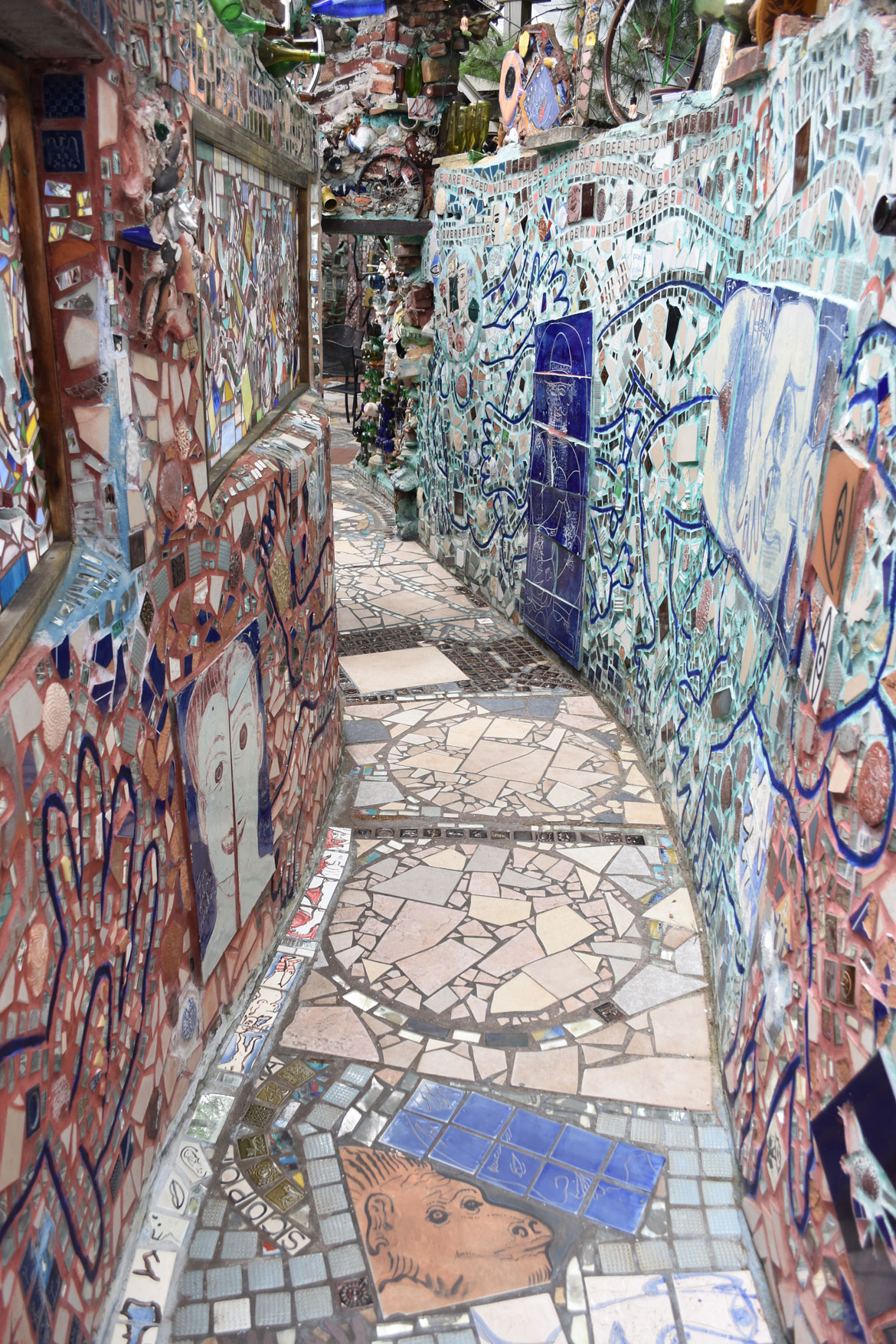
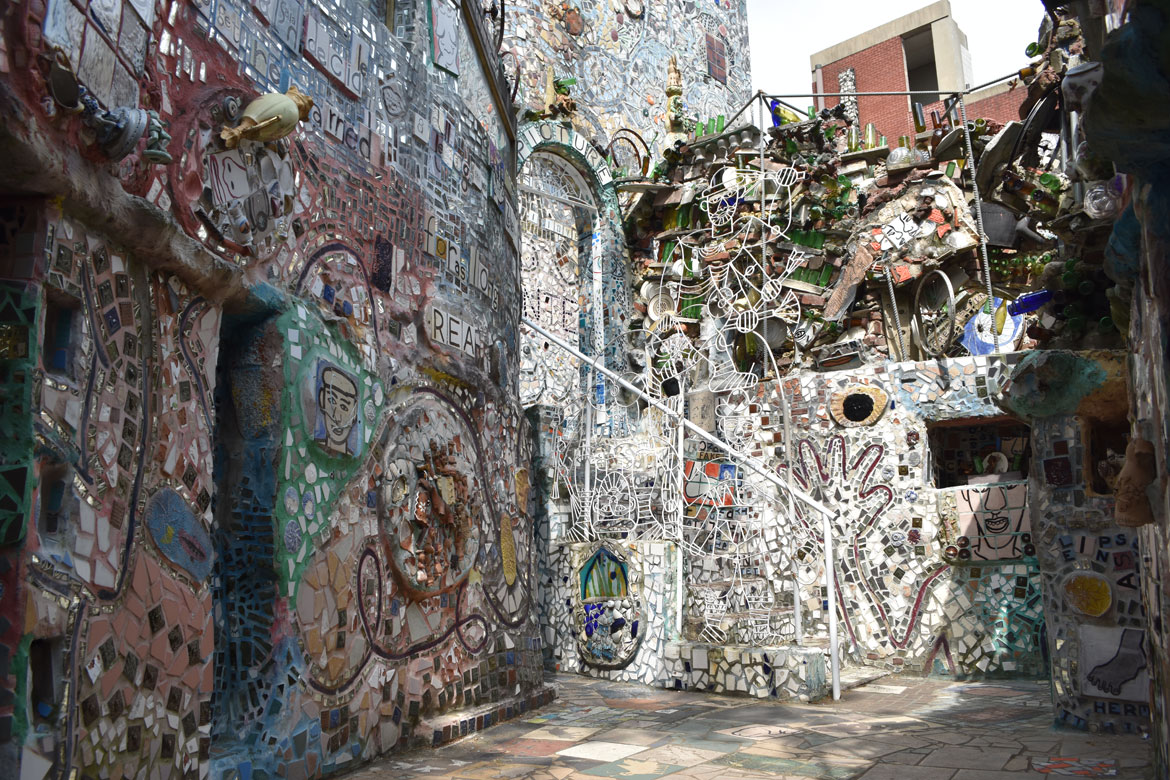
South Carolina
Pearl Fryar’s Topiary Garden in Bishopville, South Carolina. In the early 1980s, Pearl Fryar began transforming his Bishopville home into a fantastic topiary garden, often using plants rescued from the compost piles of local nurseries. “I didn’t have any limitations because I really didn’t know anything about horticulture,” he has said. “I just figured I could do whatever I wanted to with any plant I had.”
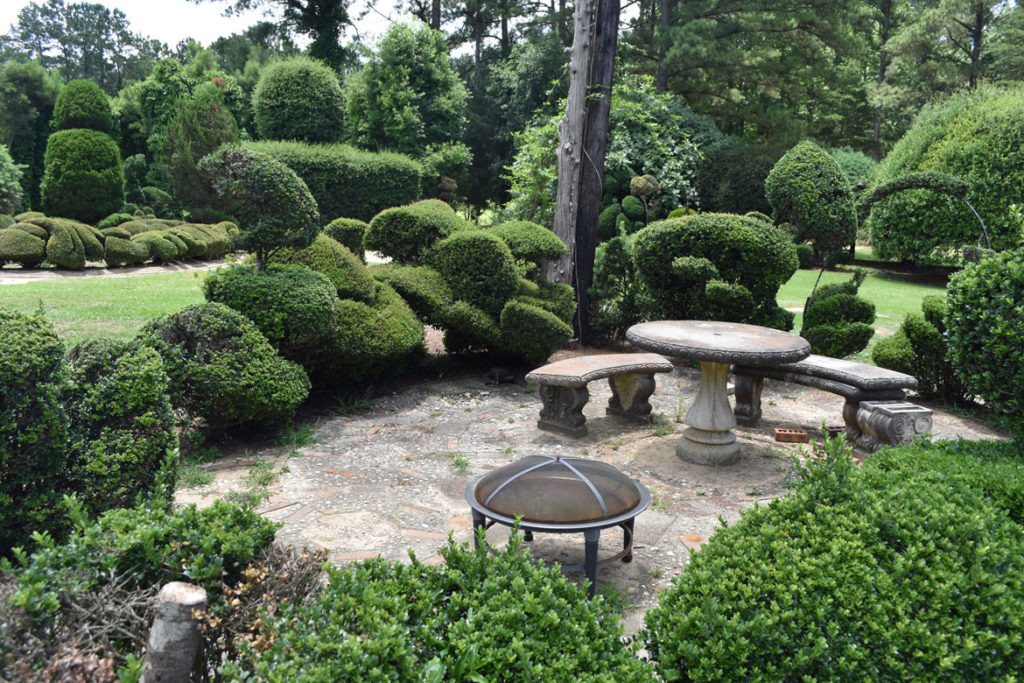
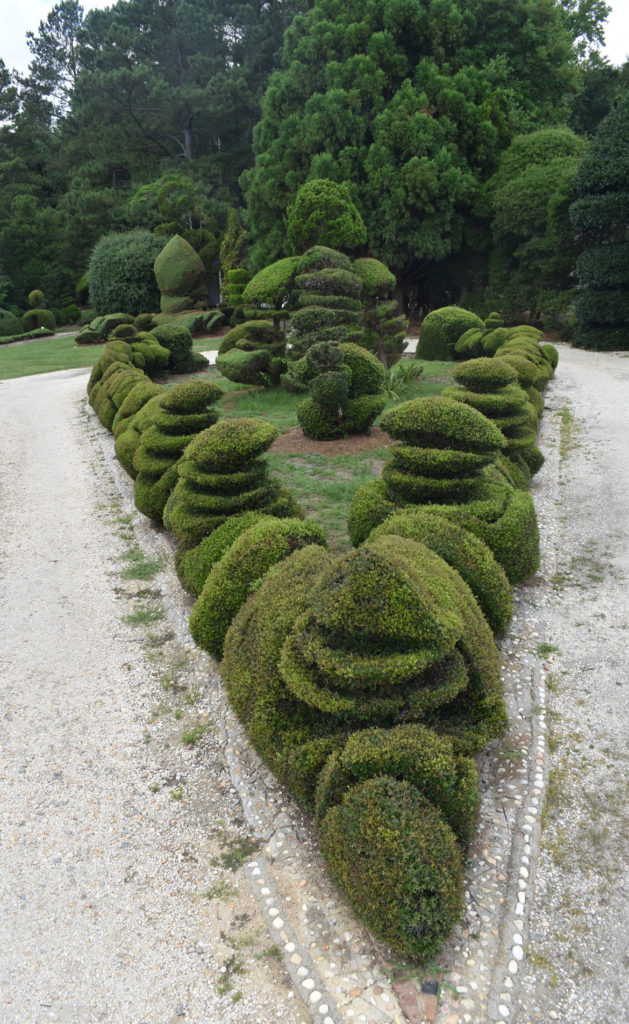
Oyotunji African Village at Seabrook, South Carolina. Founded in 1970, Oyotunji African Village describes itself at “the first intentional community in North America based on the culture of the Yoruba and Dahomey tribes of West Africa.”
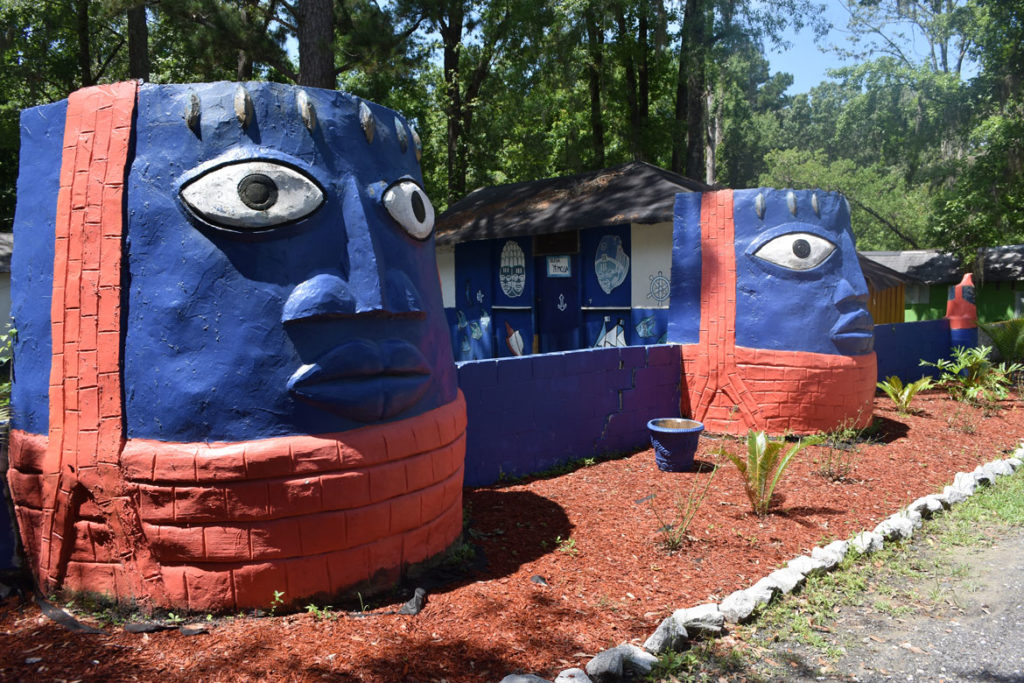
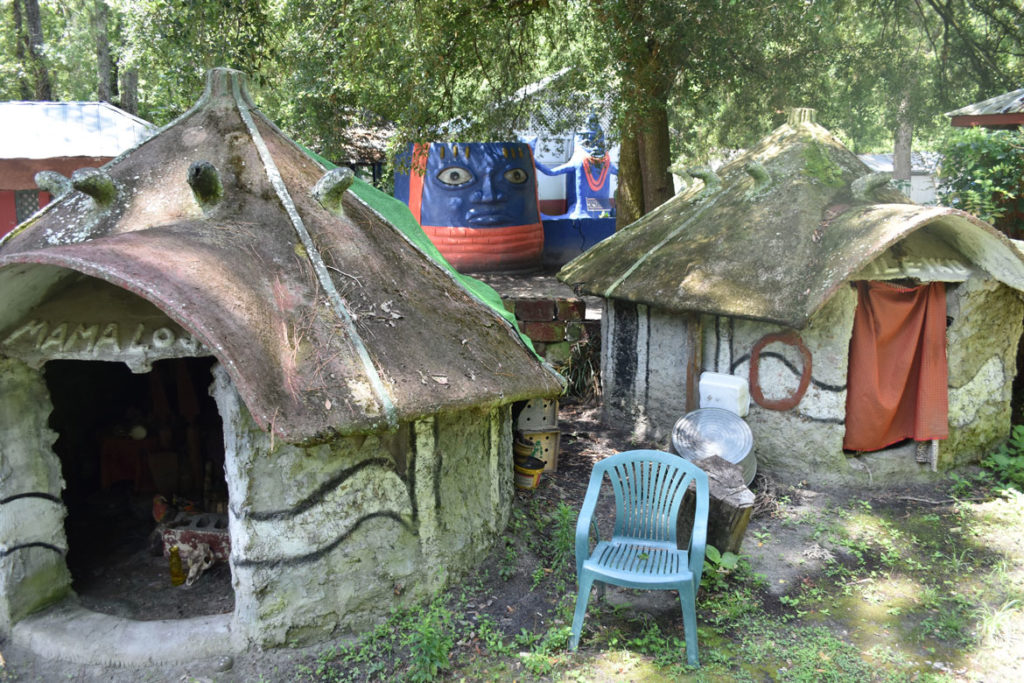
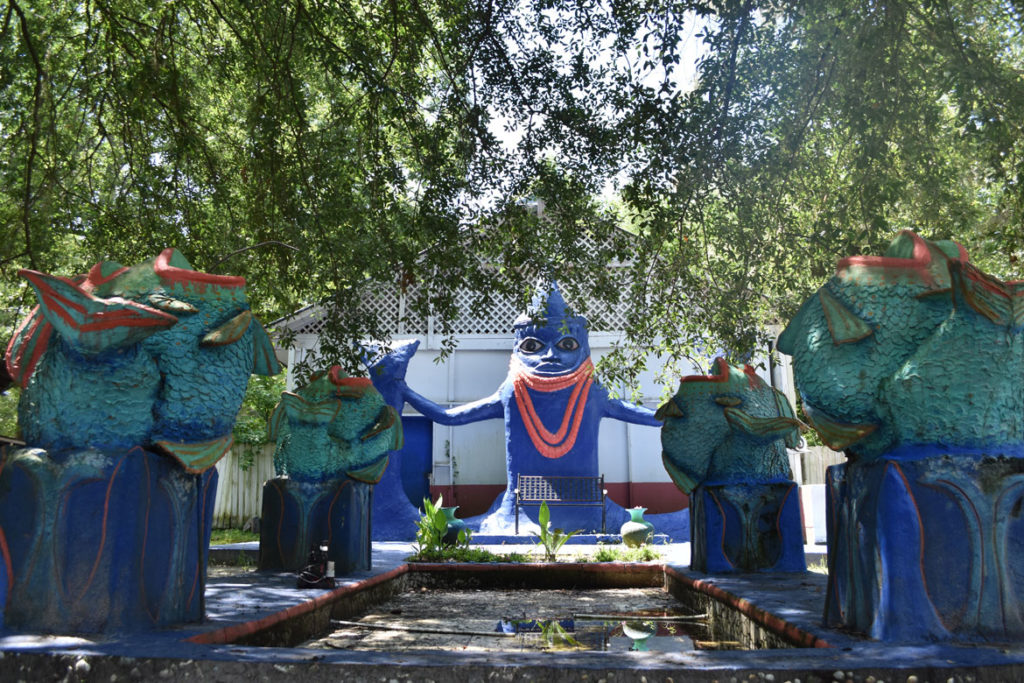
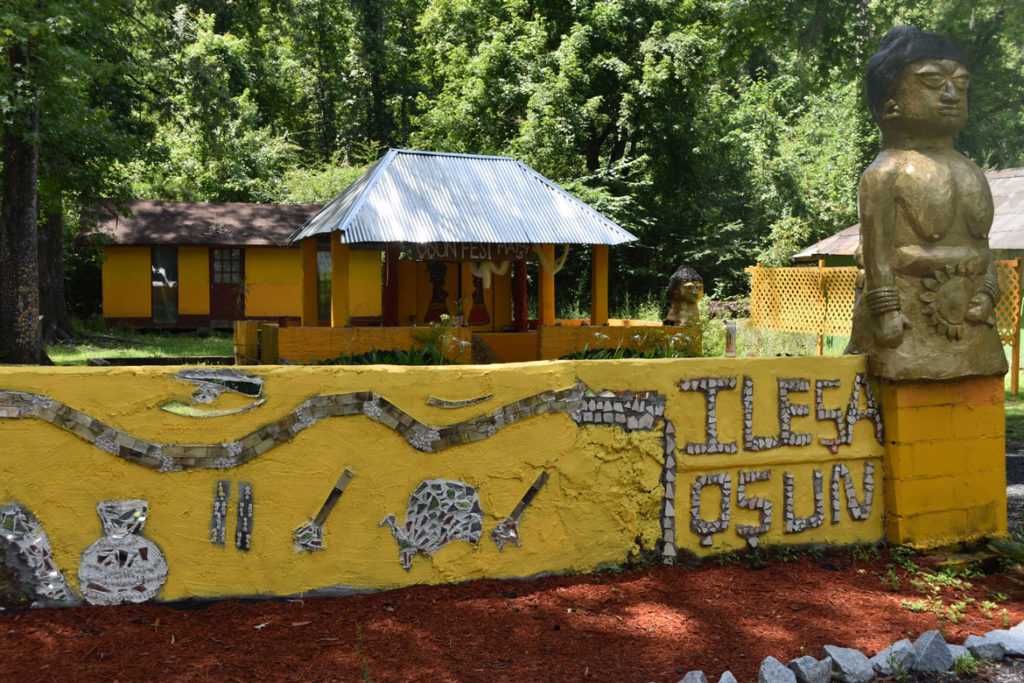
Dalton Stevens’s Button King Museum in Bishopville, South Carolina. The Button King Museum is located in a Quonset hut along a dirt road curving through a farm field in Bishopville, South Carolina. “My name is Dalton Stevens and I suffer from insomnia. In 1983 it got so bad that I got up one night and started sewing buttons on a denim suit,” according to a sign authored by Stevens, who died in 2016. “Two years and 10 months later I still couldn’t sleep and the suit was covered with 16,333 buttons. It weighted 16 pounds. Things kind of evolved from that starting point.” Inside the building, we found a button-covered hearse, car, coffin, outhouse, guitar, piano, grandfather clock and the suit that started it all.
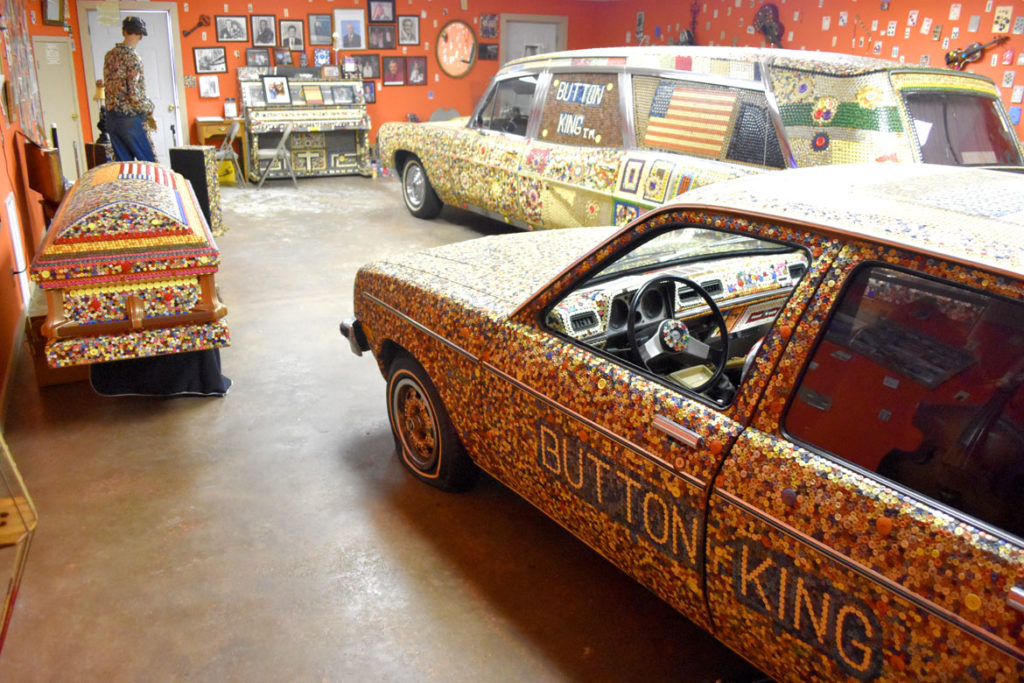
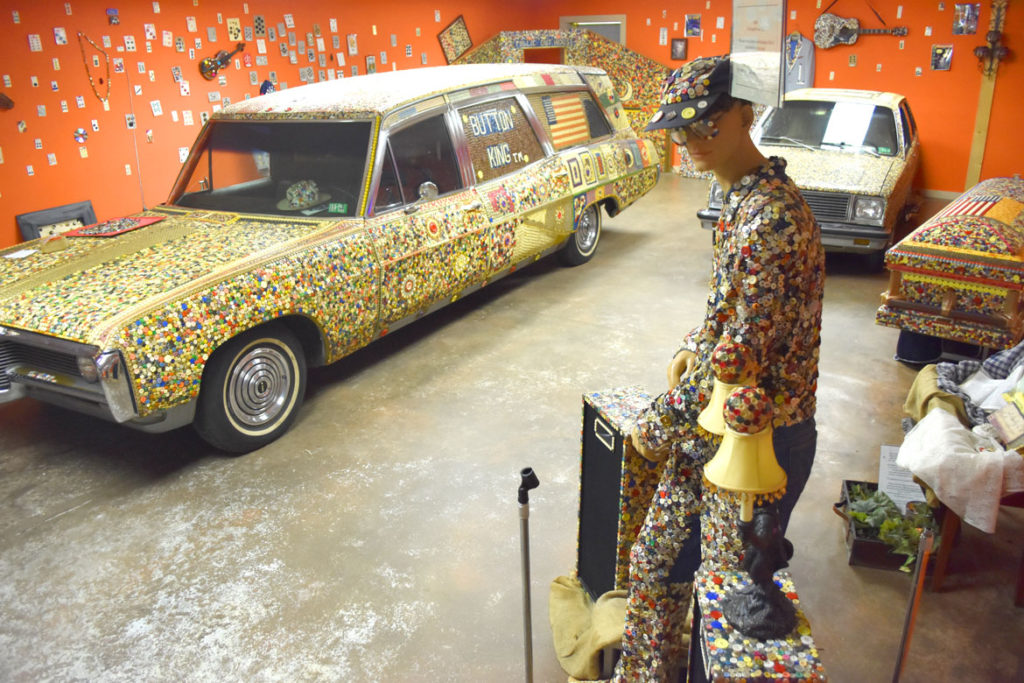
UFO Welcome Center at Bowman, South Carolina. The UFO Welcome Center at Bowman, South Carolina, is like a makeshift backyard Noah’s Ark for the 21st century. Picture a flying saucer made out of plywood and you’ve got a pretty good image of the thing. Outside it’s a rough but impressive structure with broadsides painted on the surrounding fence that seem to warn: “Please do not take pictures of visitors from other planets with out their O.K. or you may be zapped.” You can climb up to the top inside, about three stories high, via terrifyingly precariously placed ladders. The flying saucer’s windows are made from glass pie plates. But the inside is filled with trash and graffiti and sadness.
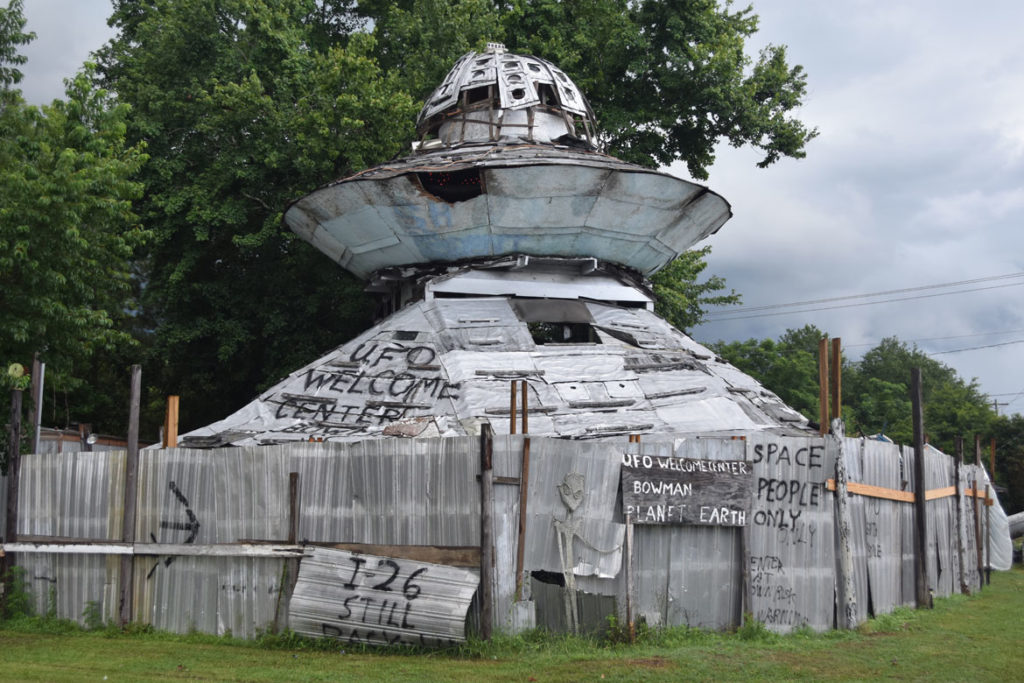
Tennessee
Dionicio Rodriguez’s Crystal Shrine Grotto at Memphis, Tennessee.
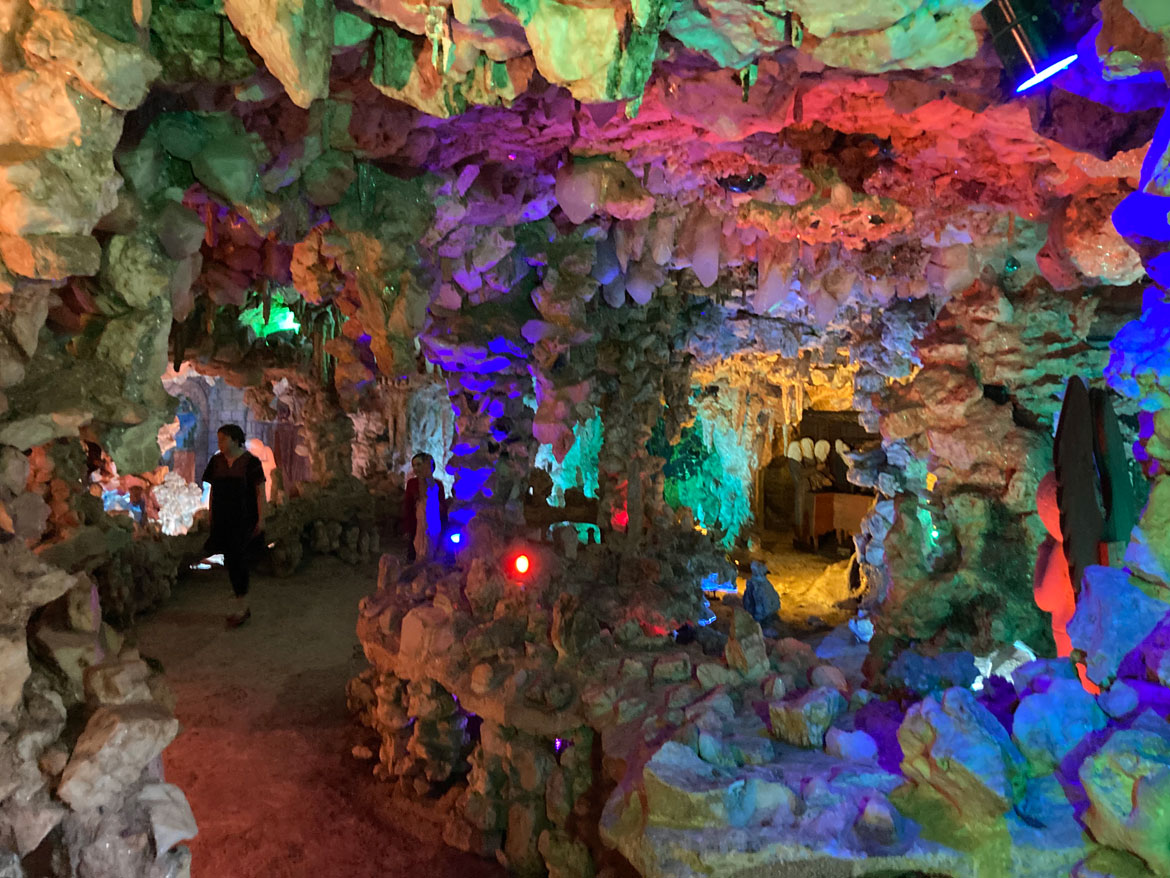
Lord’s Church Pillar and Ground of the Truth at 102 Paxton Road, Lancing, Tennssee.
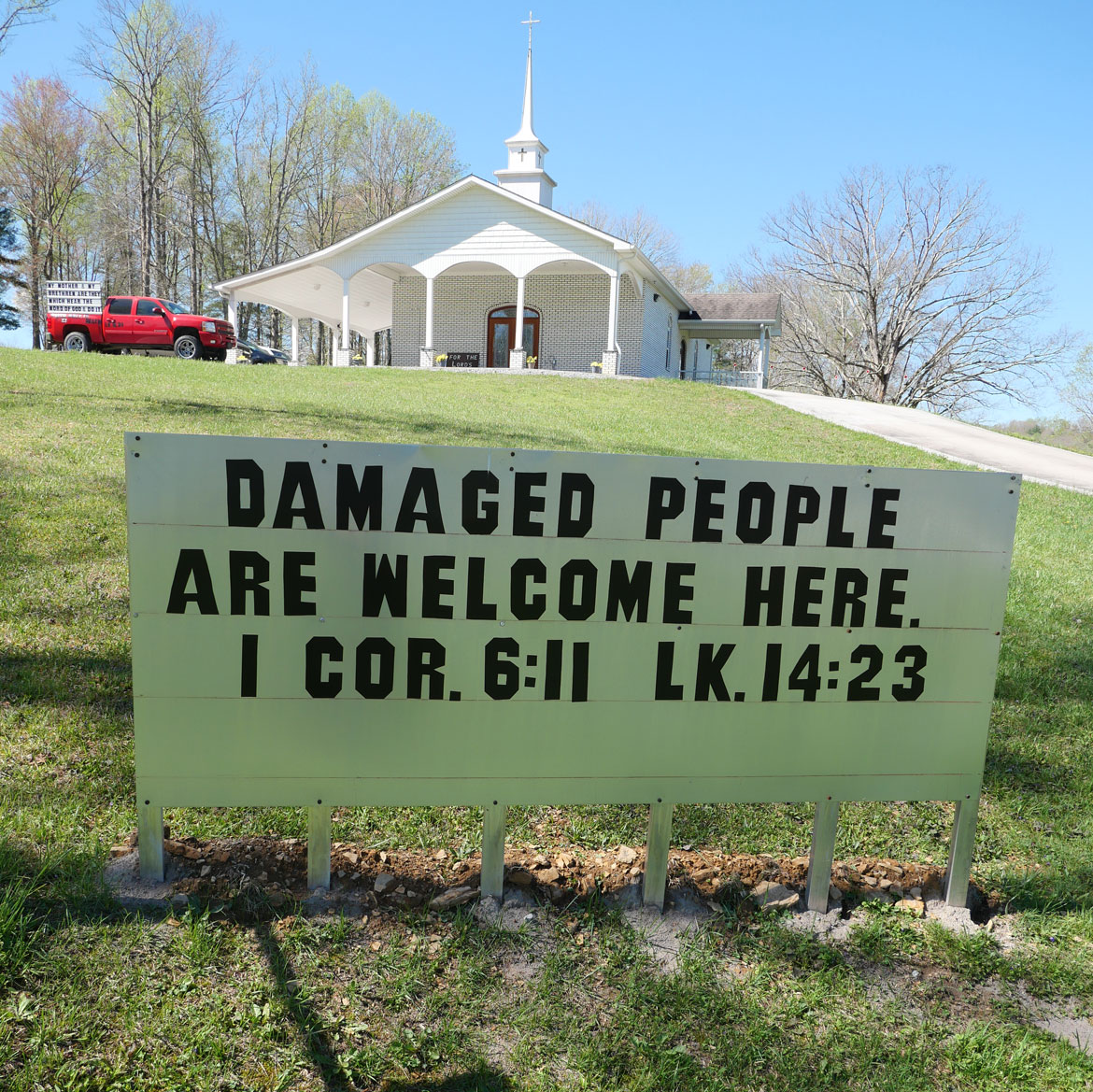
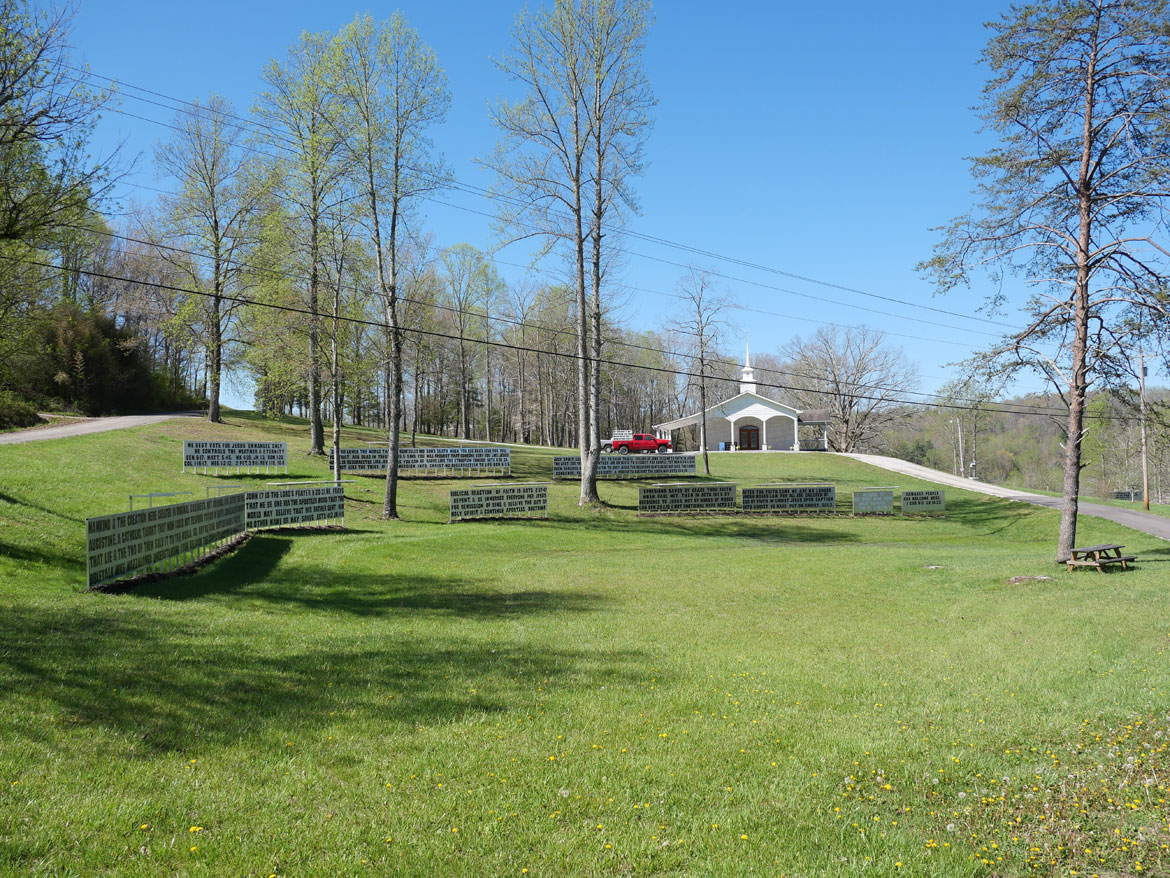
Billy Tripp’s Mindfield Cemetery in Brownsville, Tennessee.
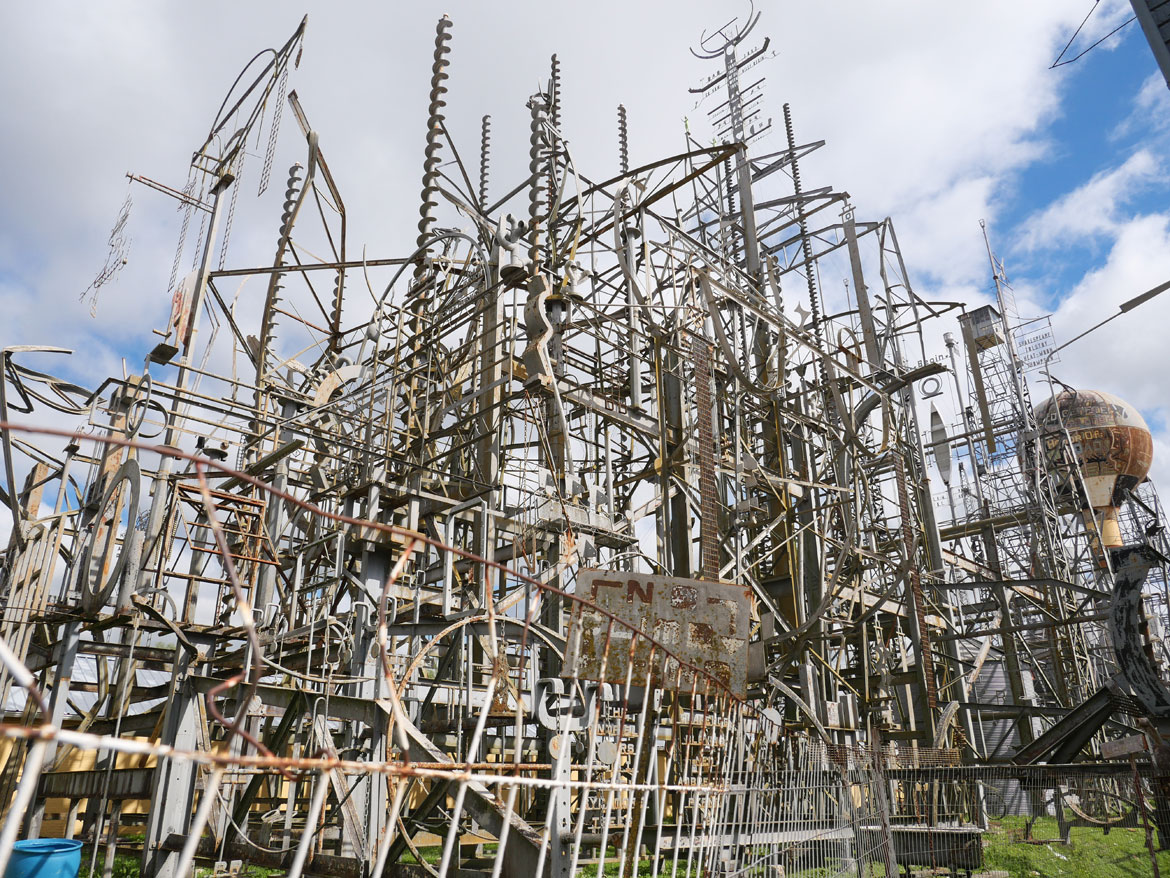
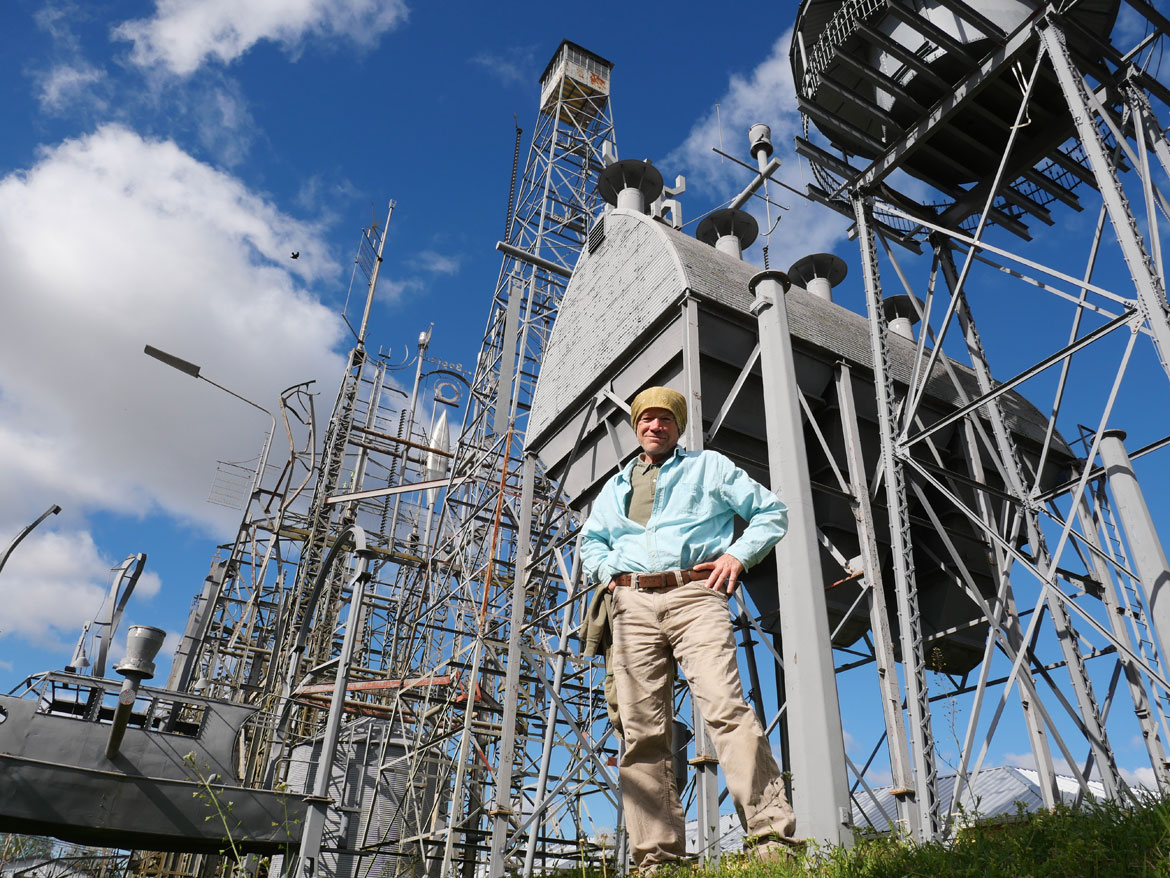
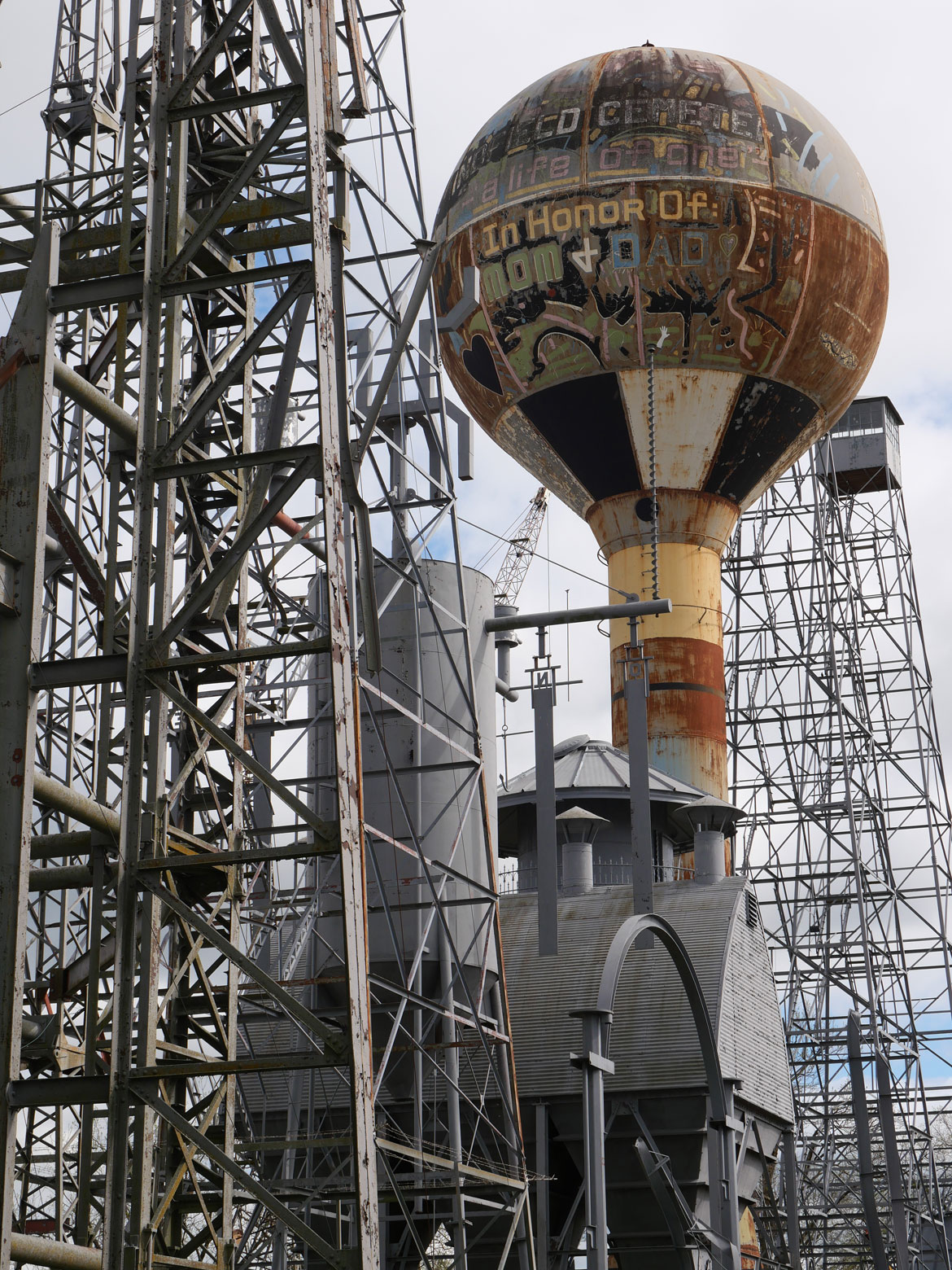
Vermont
Clare Dolan’s Museum of Everyday Life in Glover, Vermont.
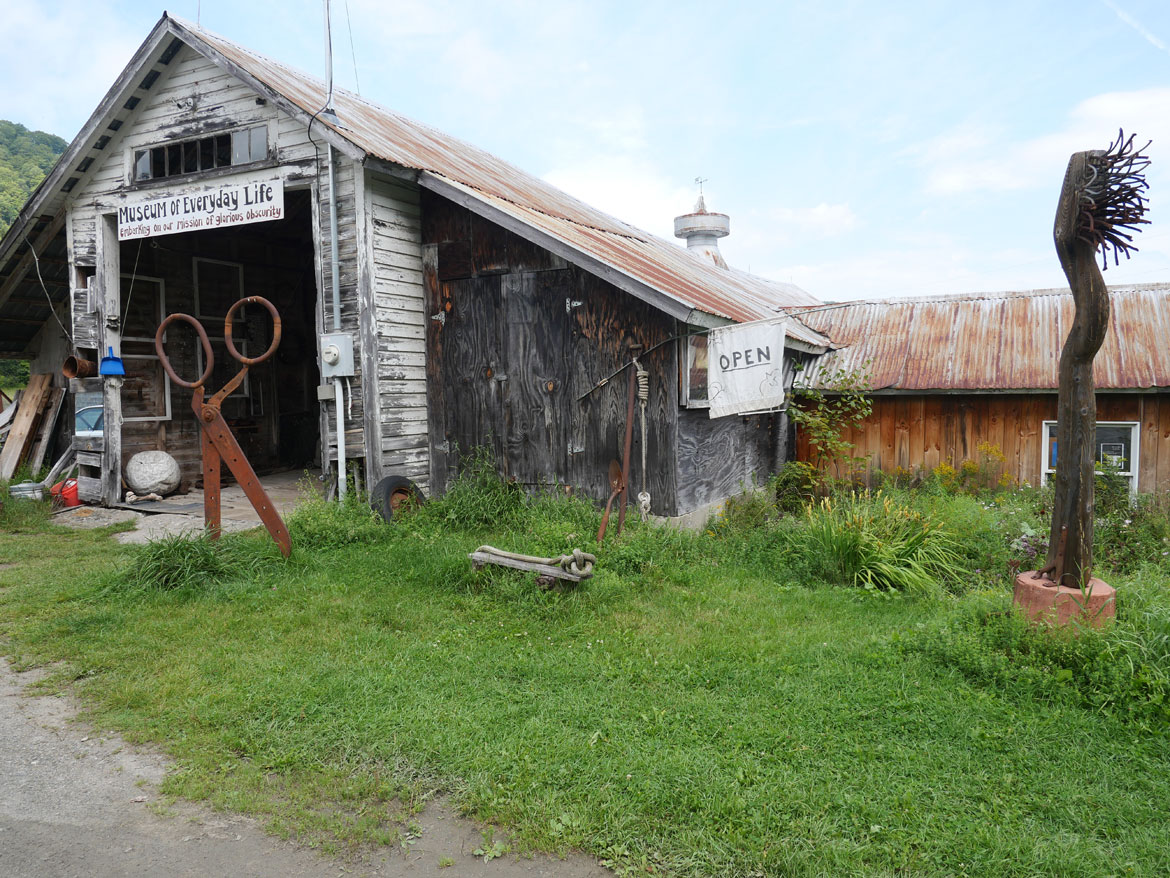
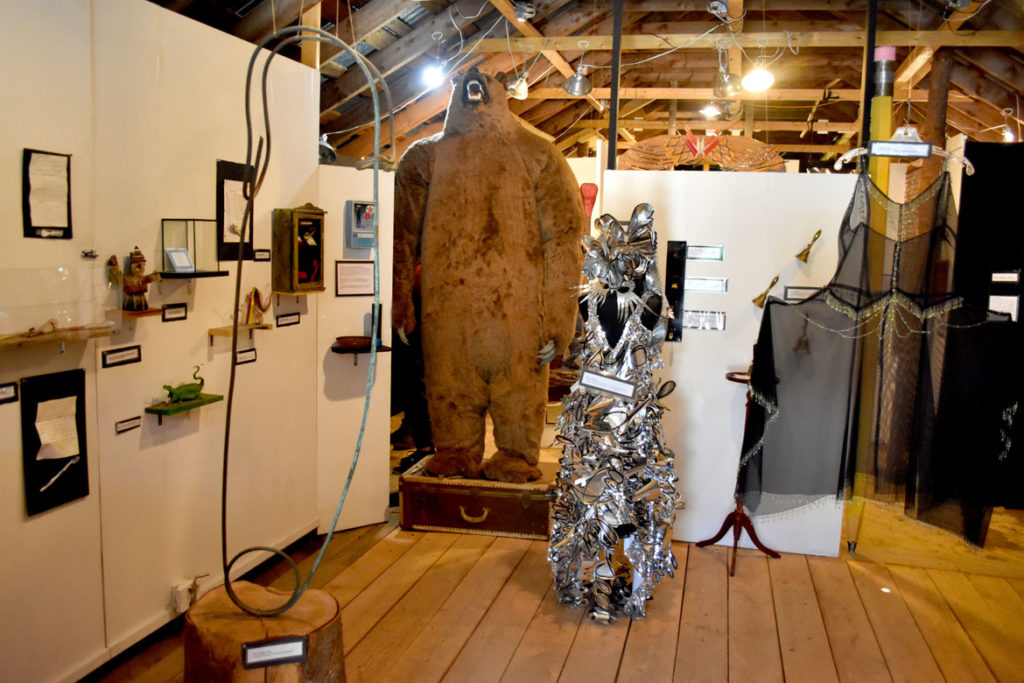
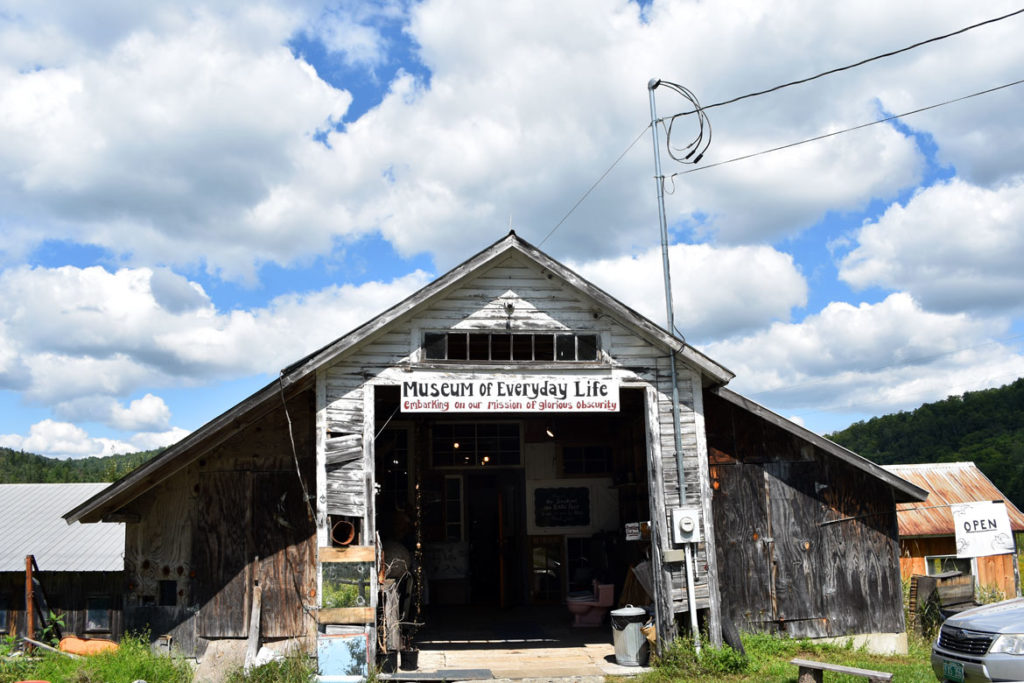
Stephen Huneck’s Dog Chapel at St. Johnsbury, Vermont. “This will be a spiritual place to bring your dog,” he told The Boston Globe in 1998. “I’ll carve dog pews; the music will be Gregorian chants, mixed with the howling of wolves. I’m going to paint a dog version of the Sistine Chapel, with angel dogs and the hand of God. The church will be lighted with stained-glass windows done with scenes of dogs. I can see plaster statues of Mary and Jesus with their dogs. I want a place to hold baptisms for litters.” After it opened to the public on Memorial Day weekend in 2000, Huneck invited visitors to post photos and hand-written notes on the walls remembering dogs that have passed on. “I had envisioned maybe someday having the foyer filled top to bottom with dog pictures. I never anticipated the whole building—every single space—covered with photos and words of remembrance, as the chapel is today.”
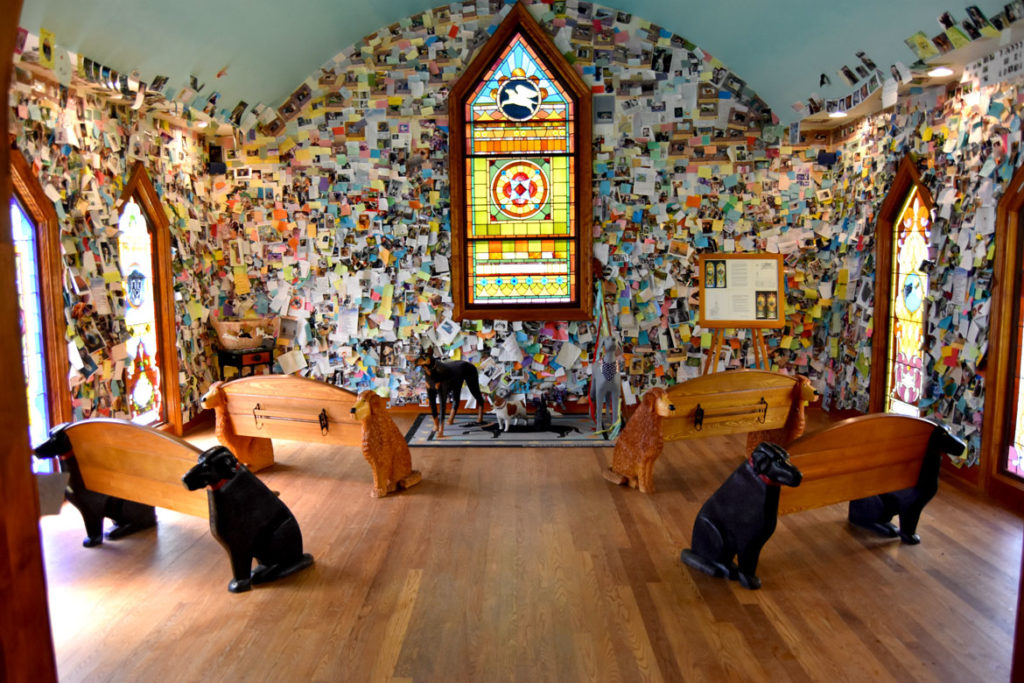
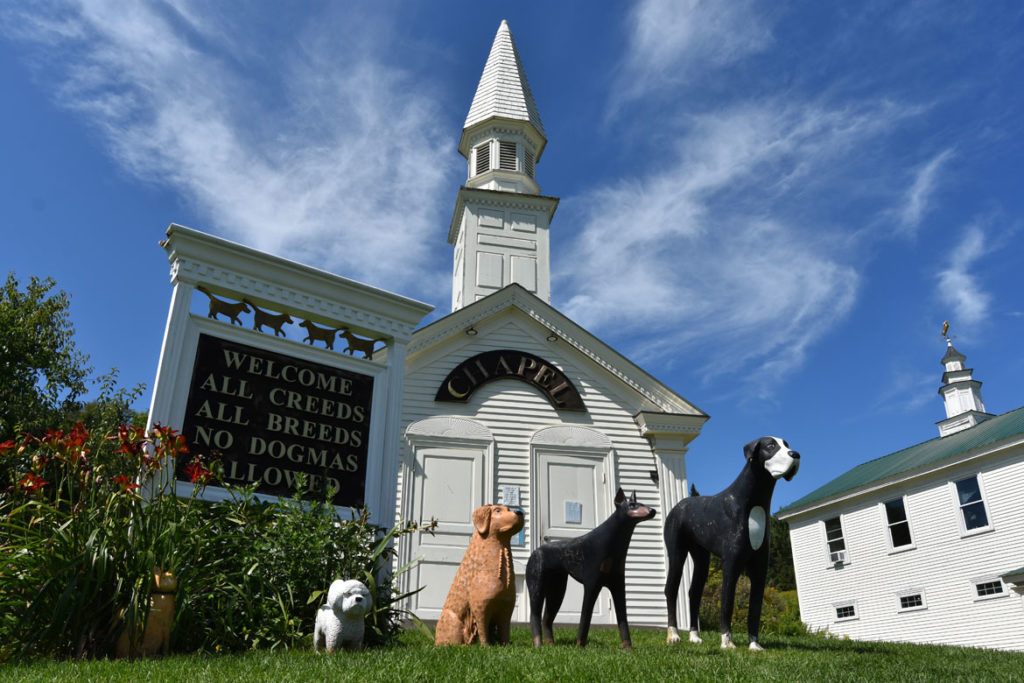
Peter Schumann’s Bread and Puppet Museum in Glover, Vermont.
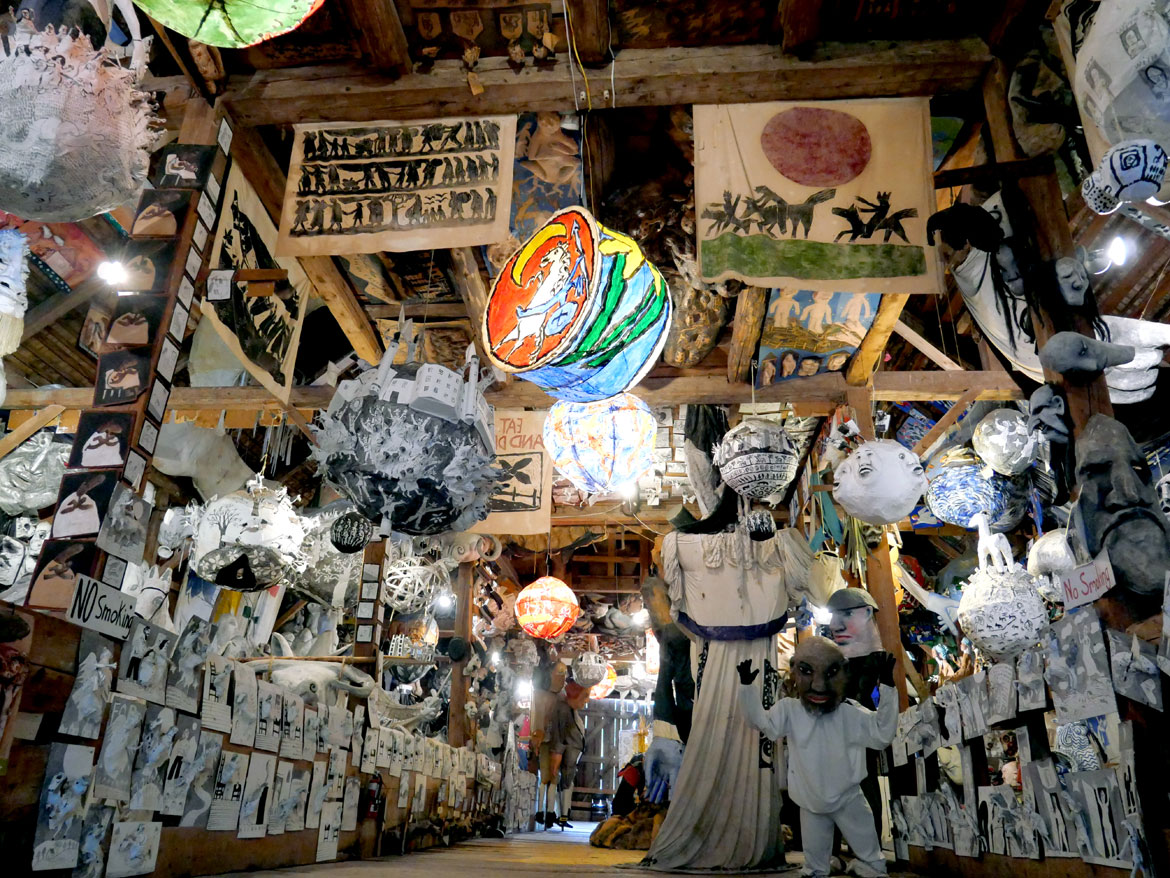
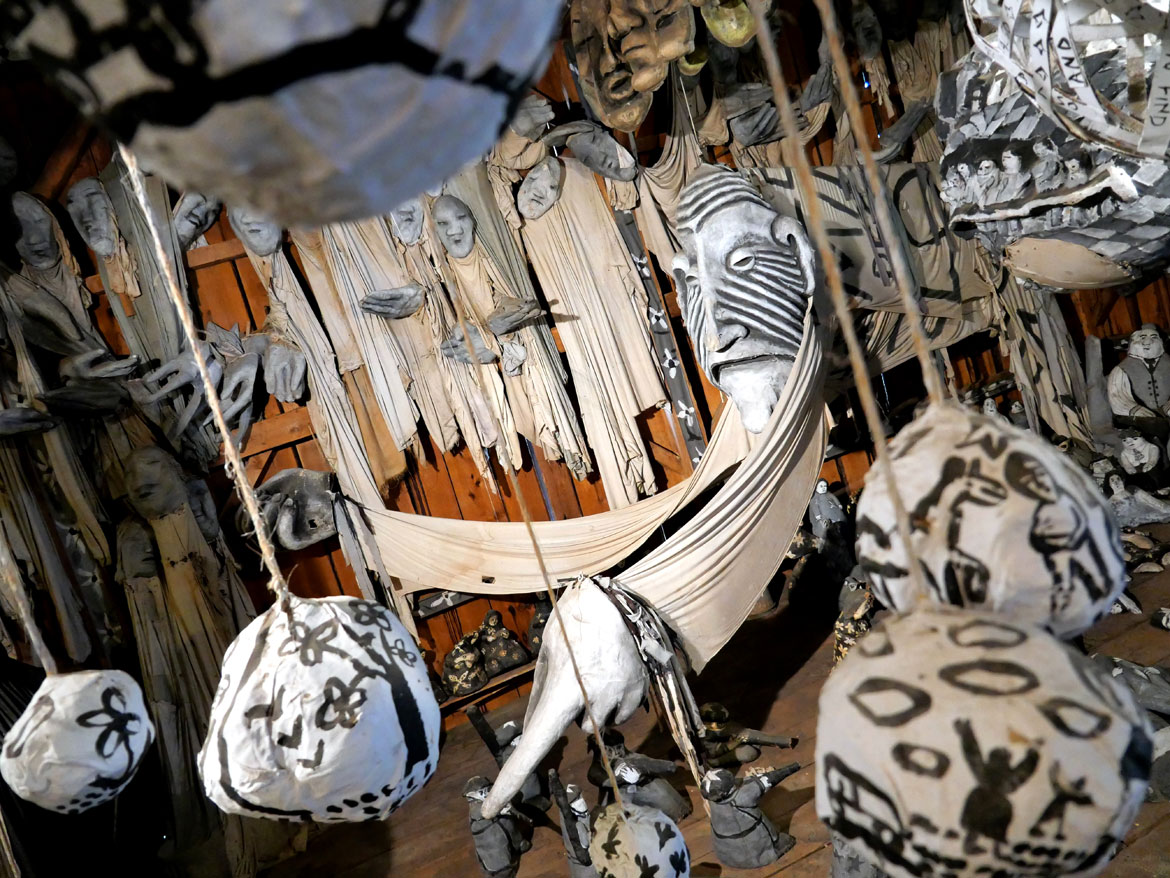
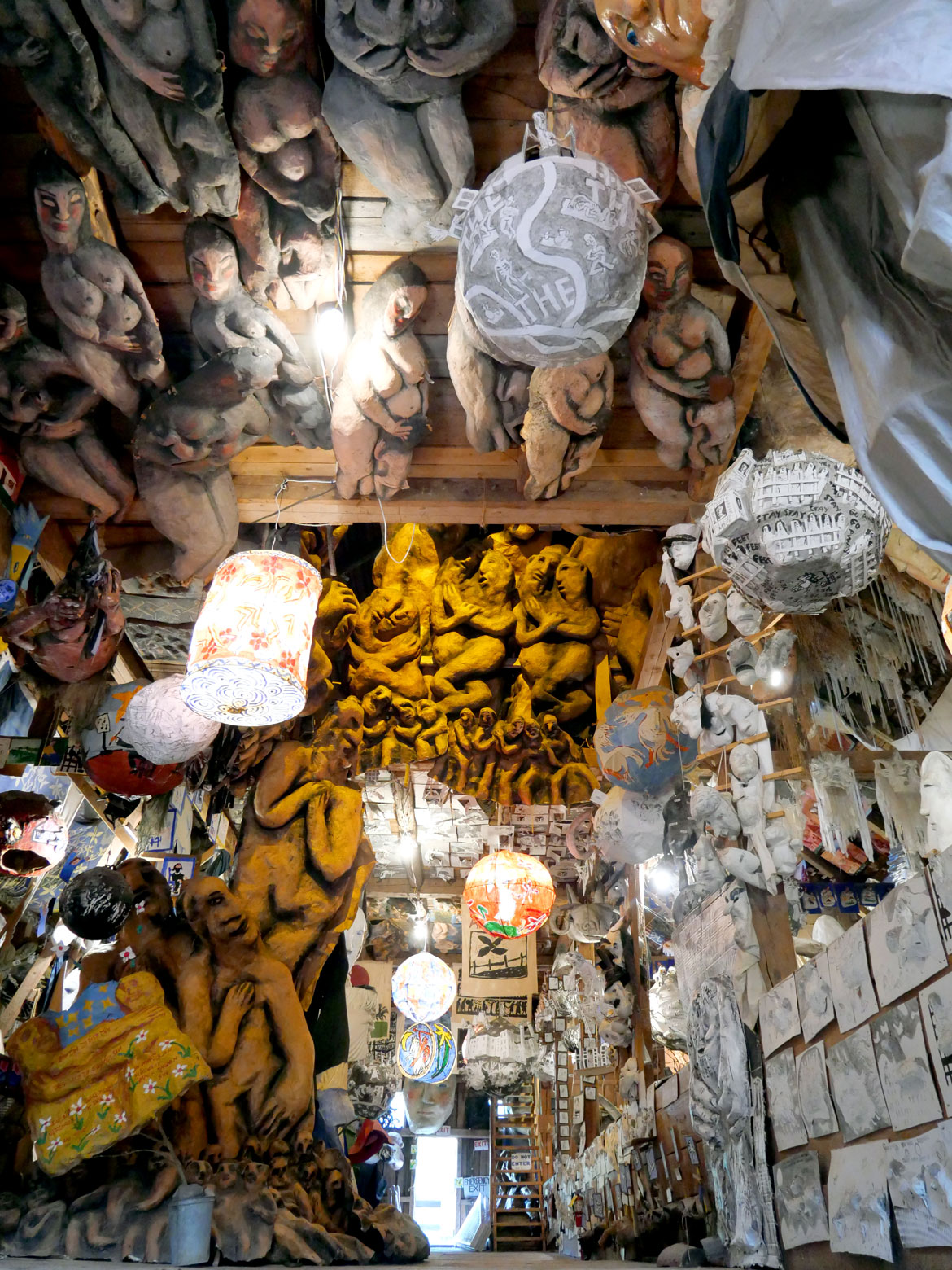
Virginia
Mark Cline’s Dinosaur Kingdom II at Natural Bridge, Virginia. As you enter Mark Cline’s Dinosaur Kingdom II at Natural Bridge, Virginia, a sign explains: “It’s mid-June, 1864. General David Hunter has just raided and burned nearby Lexington and has continued maneuvering his troops toward Lynchburg. Several Union scouts have detoured near Natural Bridge and have discovered that their recent cannon fire has awakened PREHISTORIC CREATURES who have been cryogenically hibernating in a lost section of the Natural Bridge Caverns for millions of years. An idea forms to use these giant reptiles as WEAPONS OF MASS DESTRUCTION against the South. But, you will soon see that not everything goes as planned!”
Cline kindly gave us a tour when we visited in 2019. He’s the creator of several foam and fiberglass attractions including the Haunted Monster Museum and the original Dinosaur Kingdom, which both burned in 2012, as well as Foamhenge, which, as the name suggests, is Styrofoam replica of Stonehenge. Cline walked us down Dinosaur Kingdom II’s Western main street dubbed “Extinction Junction” and into the woods, where fiberglass Confederates and Union soldiers and dinosaurs battled it out.
“Them wacky Yankees is at it again! … But ole Dixie has more than a few tricks still left up her sleeve,” the website proclaims. “…Enter into a time tunnel and discover Stonewall Jackson battling a vicious spinosaurus! Get surrounded by deadly meat eaters! See Abe Lincoln after he’s lassoed a pteranodon chewing up the Gettysburg address! Witness a stegosaurus being milked!”
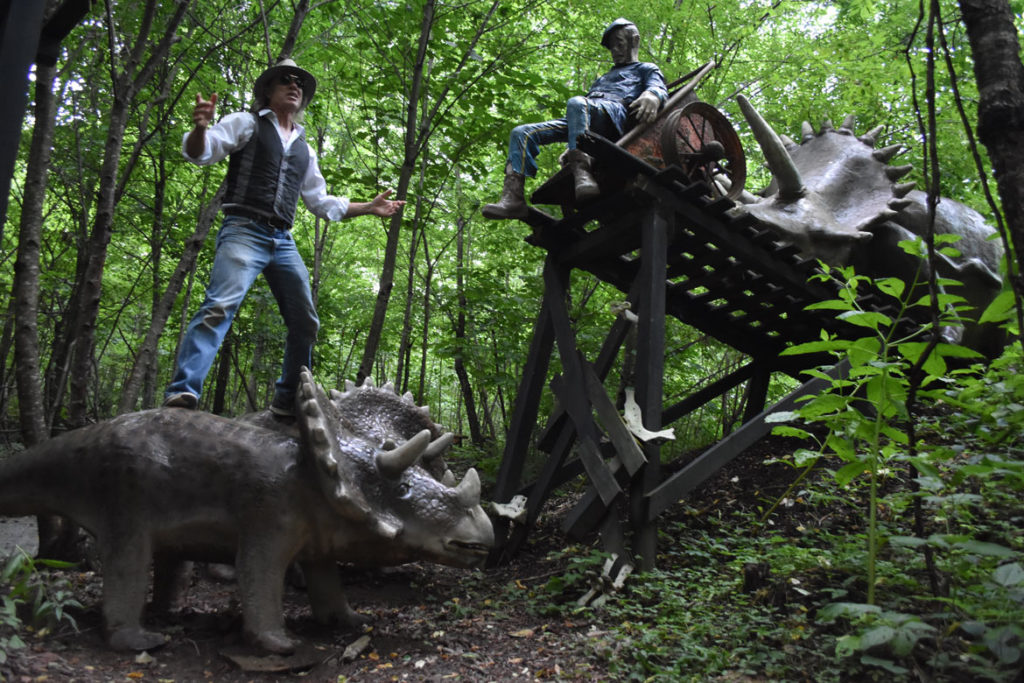
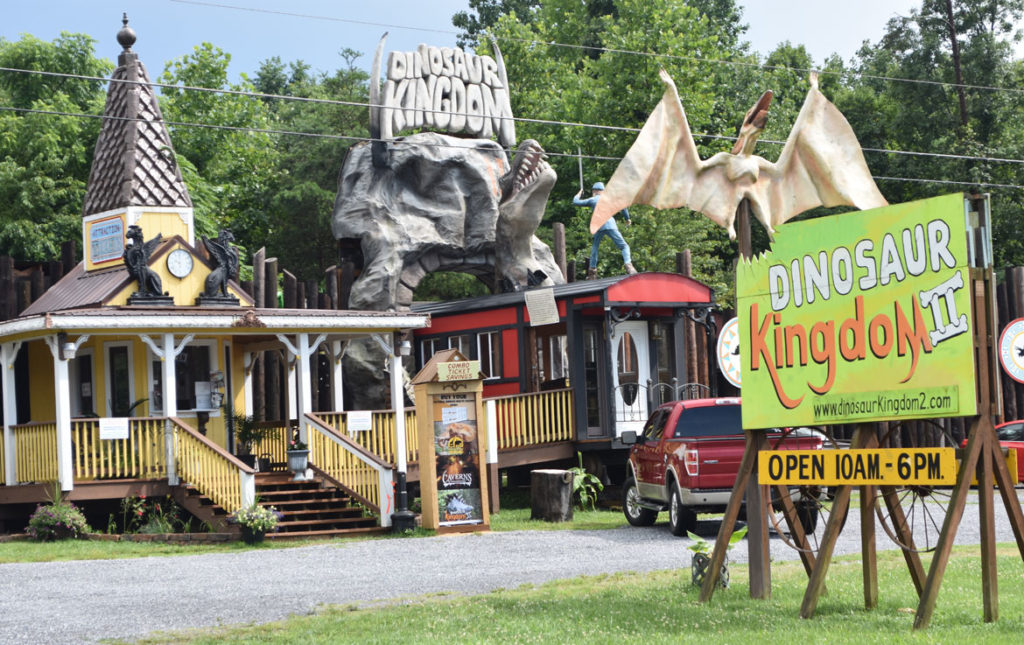
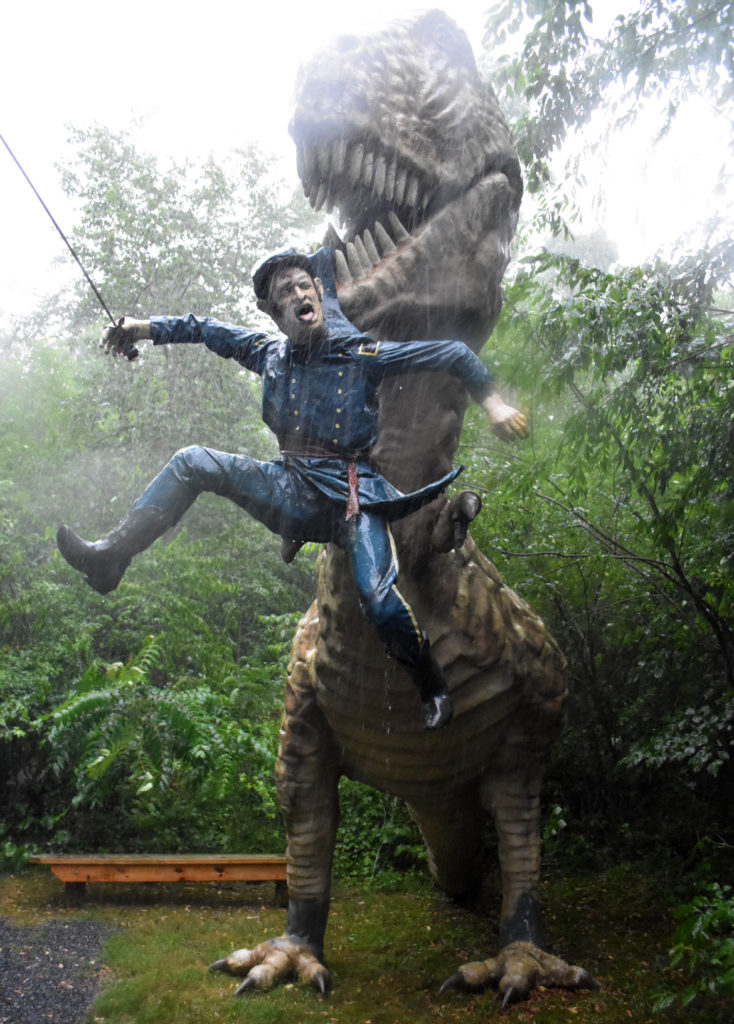
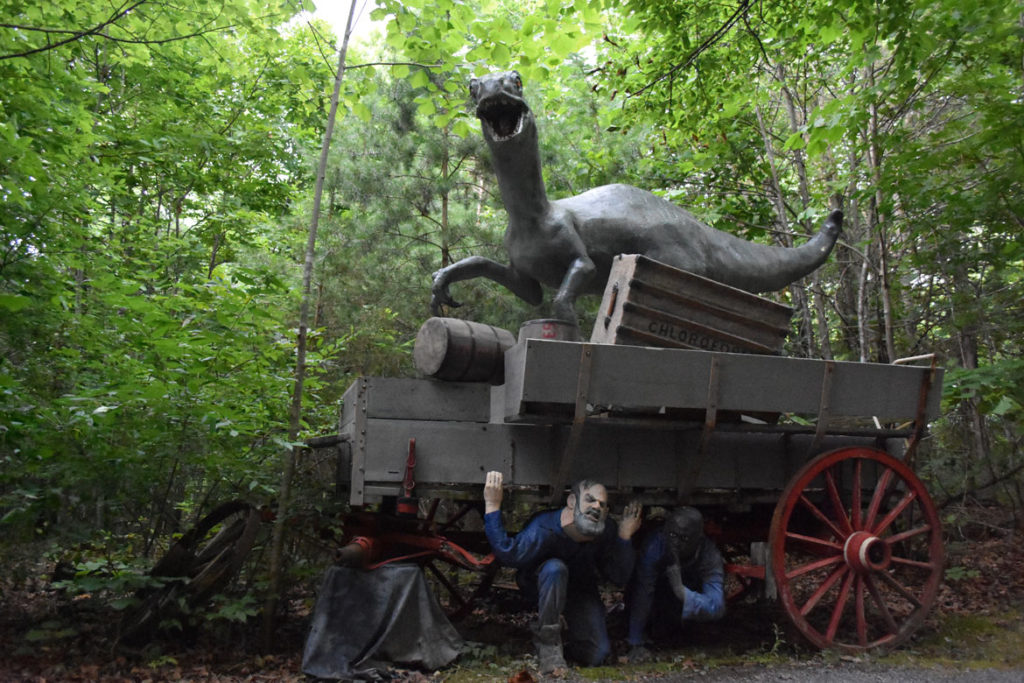
Washington, D.C.
James Hampton’s Throne of the Third Heaven of the Nation’s Millennium General Assembly, created around 1950-1964, in the collection of the Smithsonian American Art Museum.
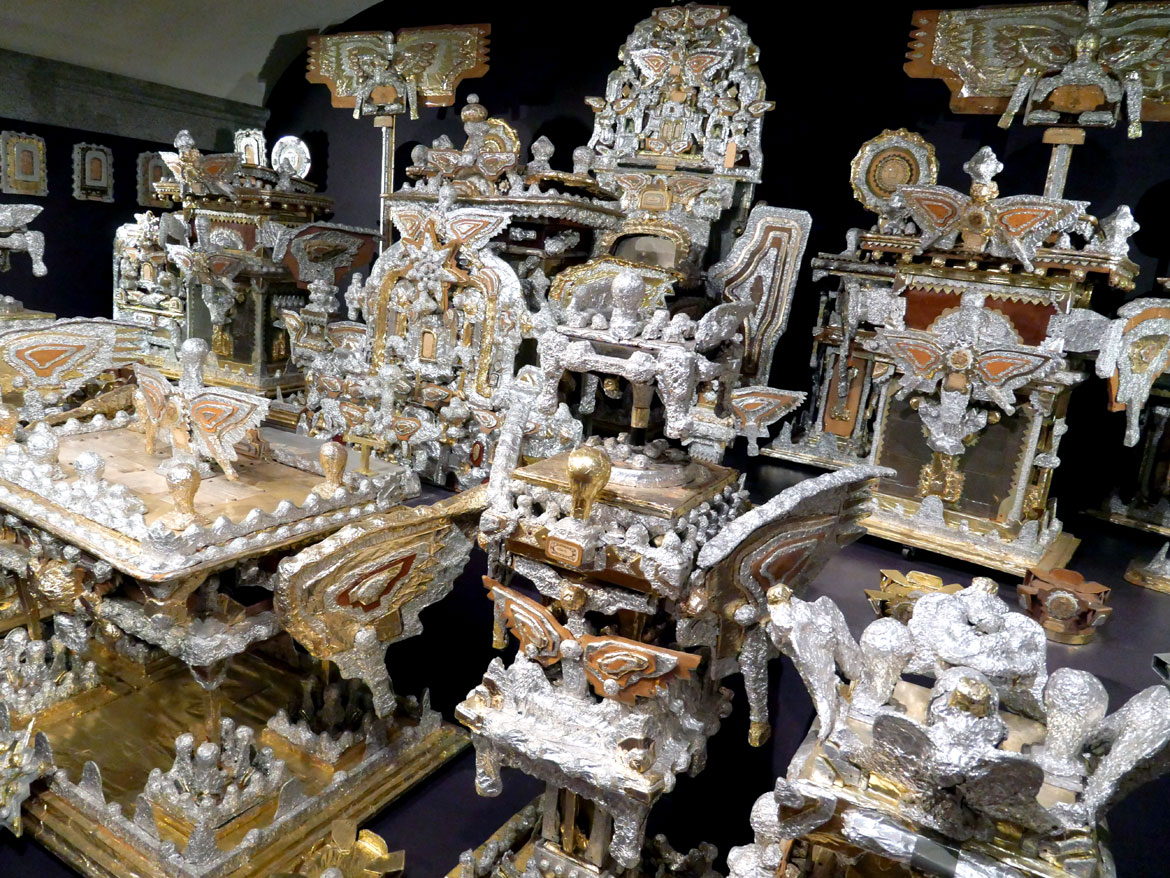
Wisconsin
Sid Boyum house, 237 Waubesa St., Madison, Wisconsin. Boyum, who helped create the House on the Rock, died in 1991. His house had been sold right before my visit in 2018, and the sculptures and structures in the backyard were reportedly moved elsewhere.
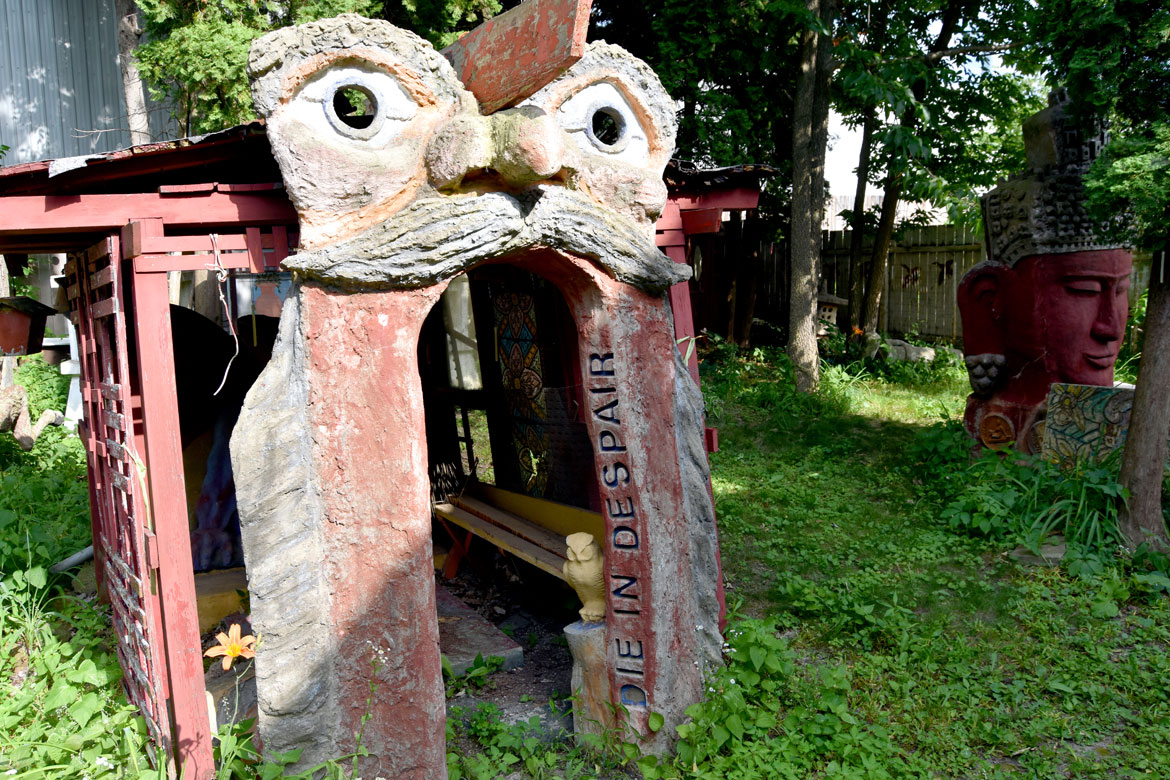
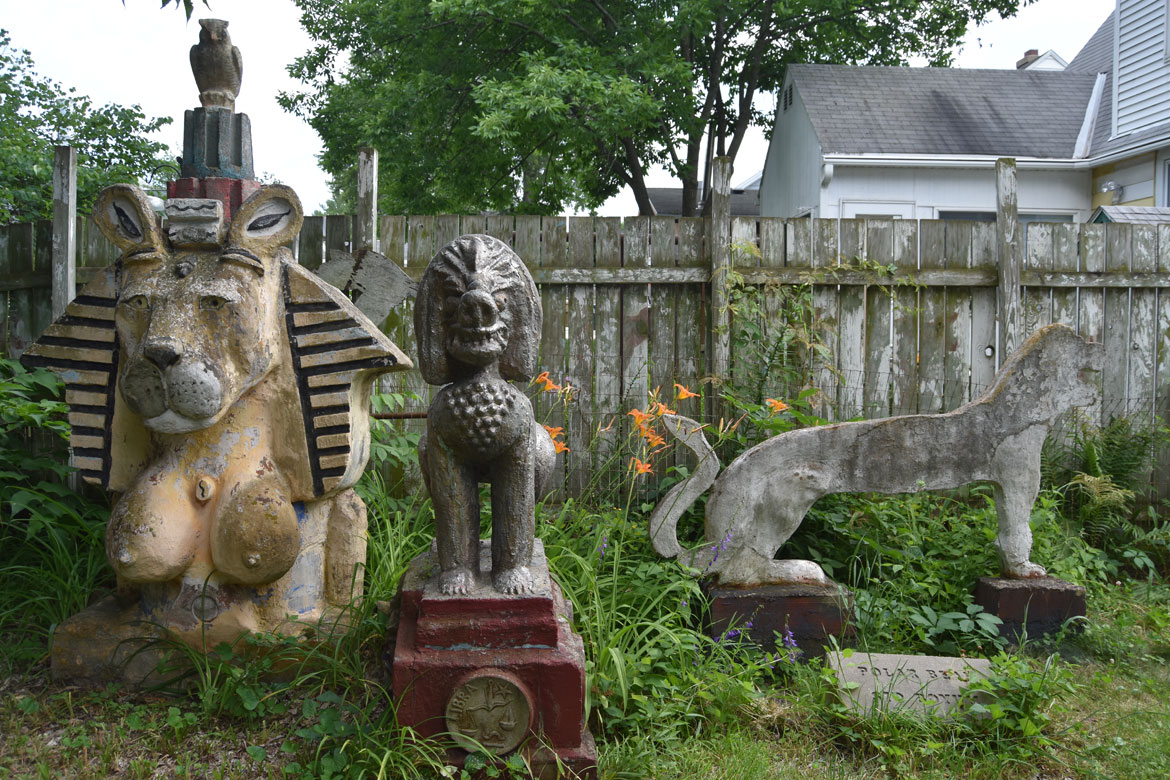
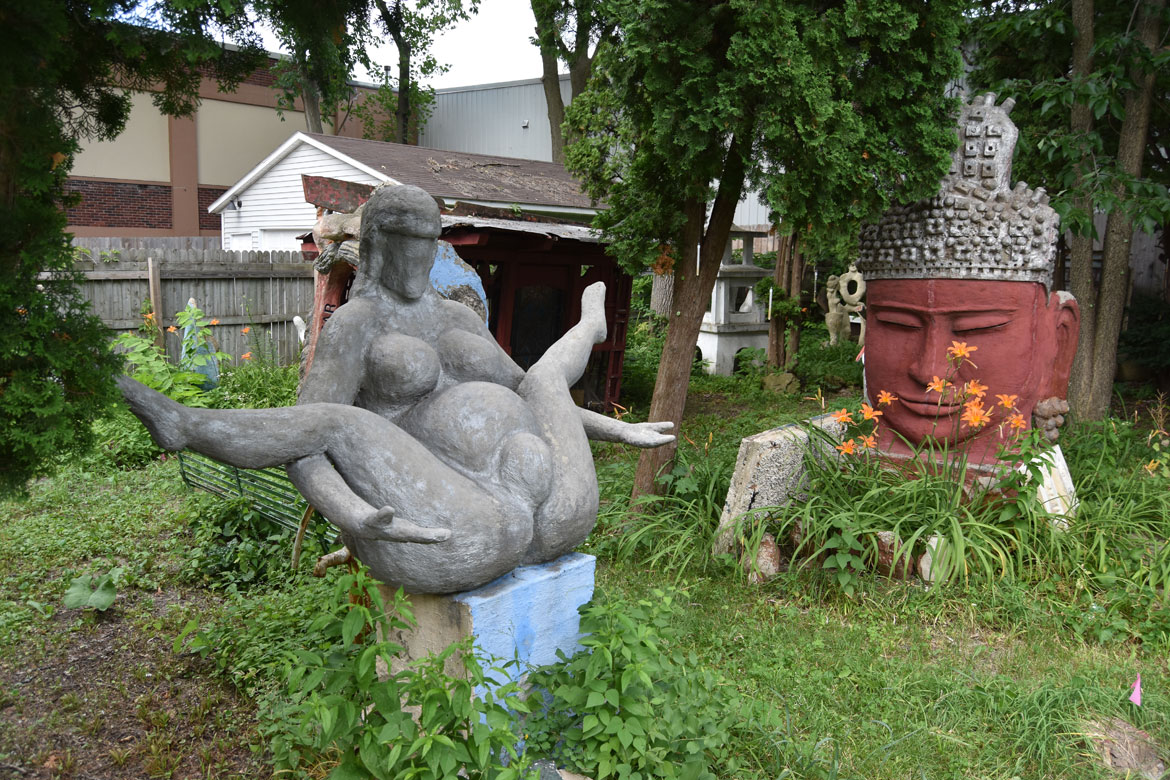
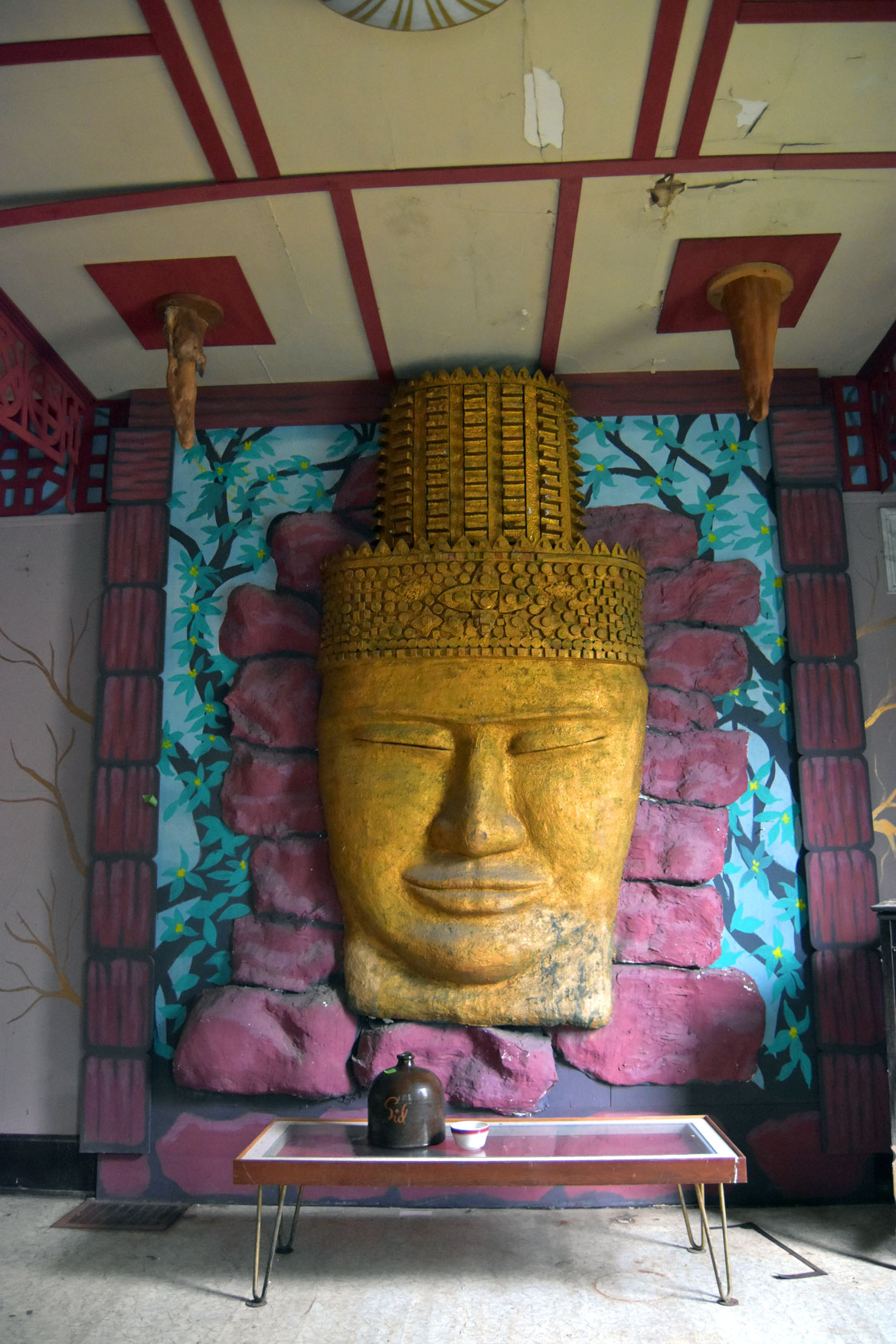
Nick Engelbert’s Grandview at Hollandale, Wisconsin.
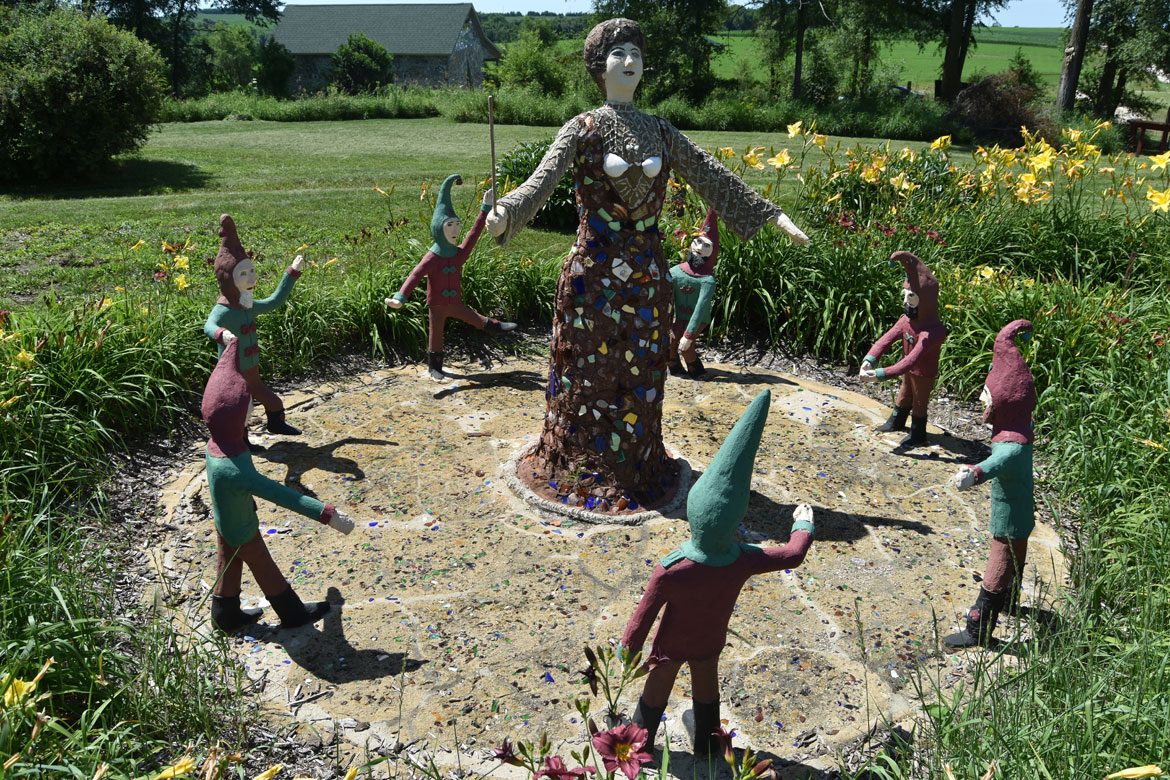
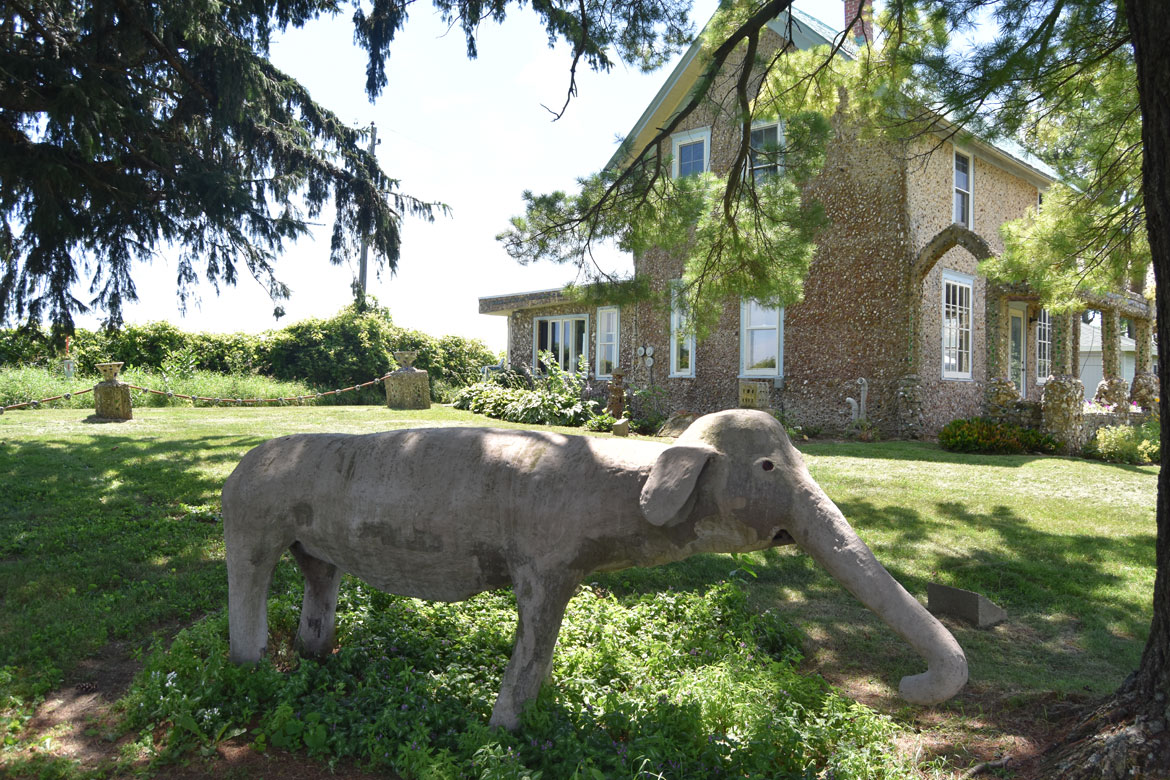
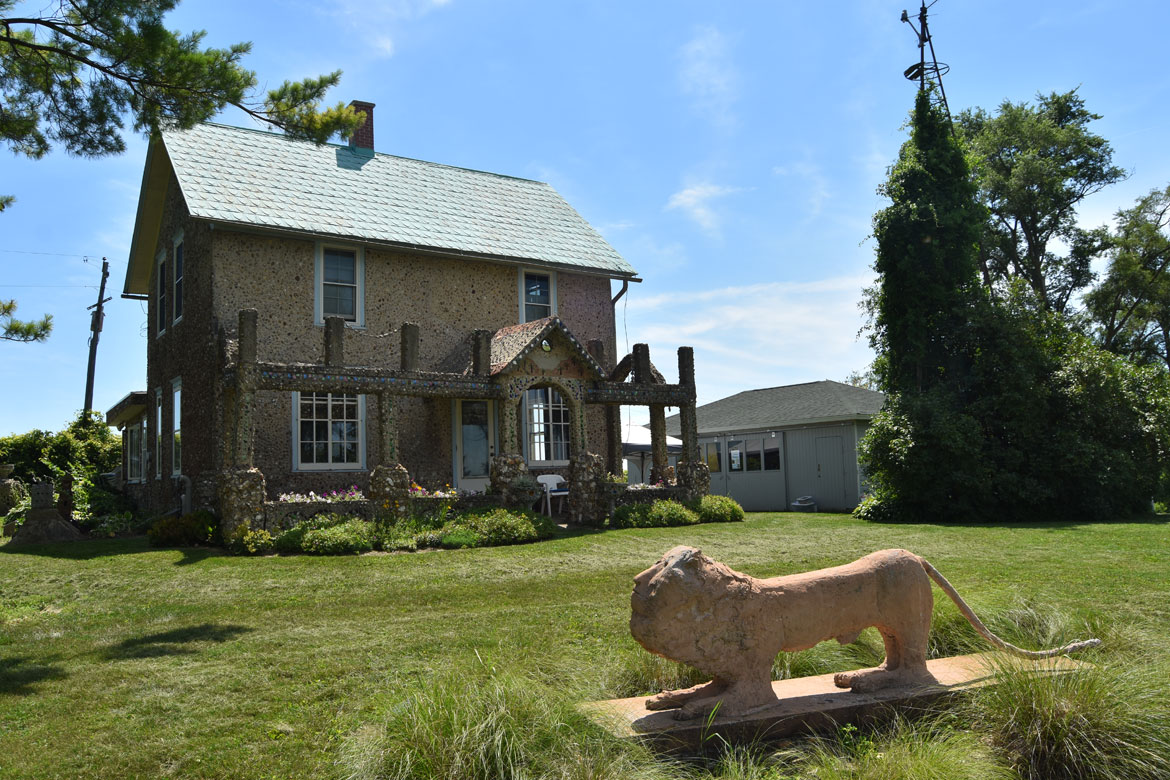
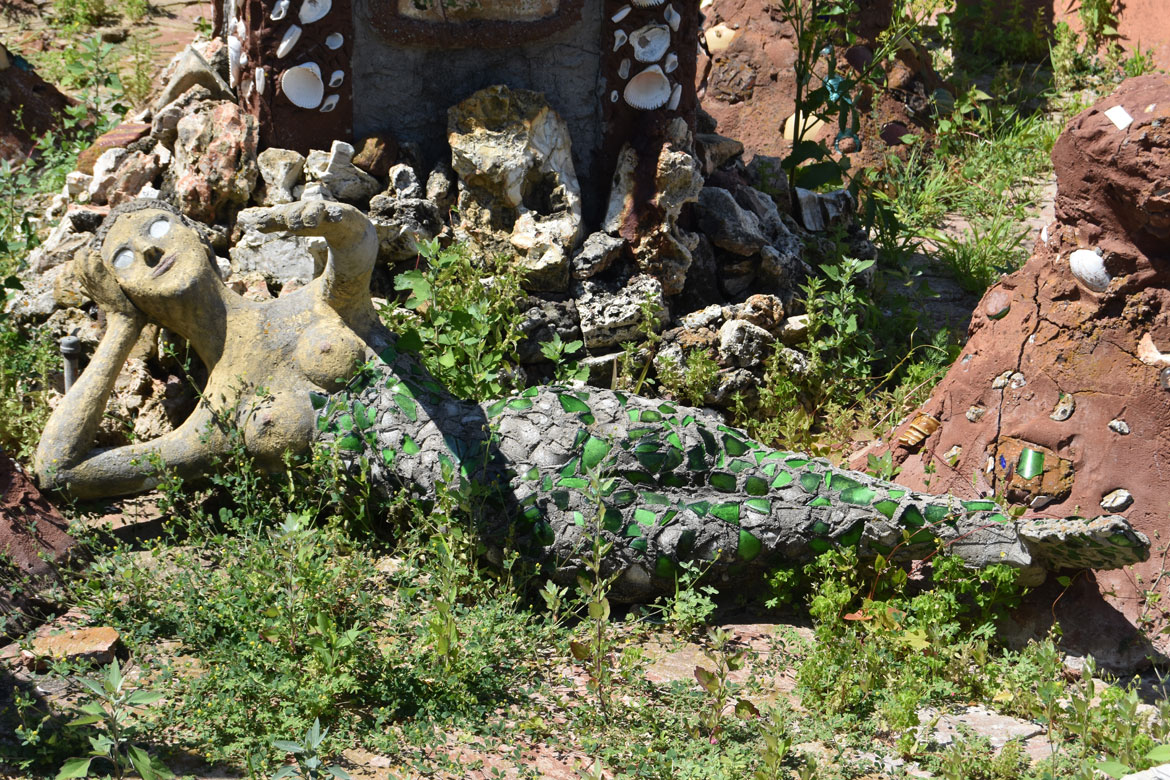
Tom “Dr. Evermor” Every’s “Forevertron” off Highway 12 in Sauk County, Wisconsin, outside Baraboo. Every, who also helped create the House on the Rock, died in 2020 at age 81.
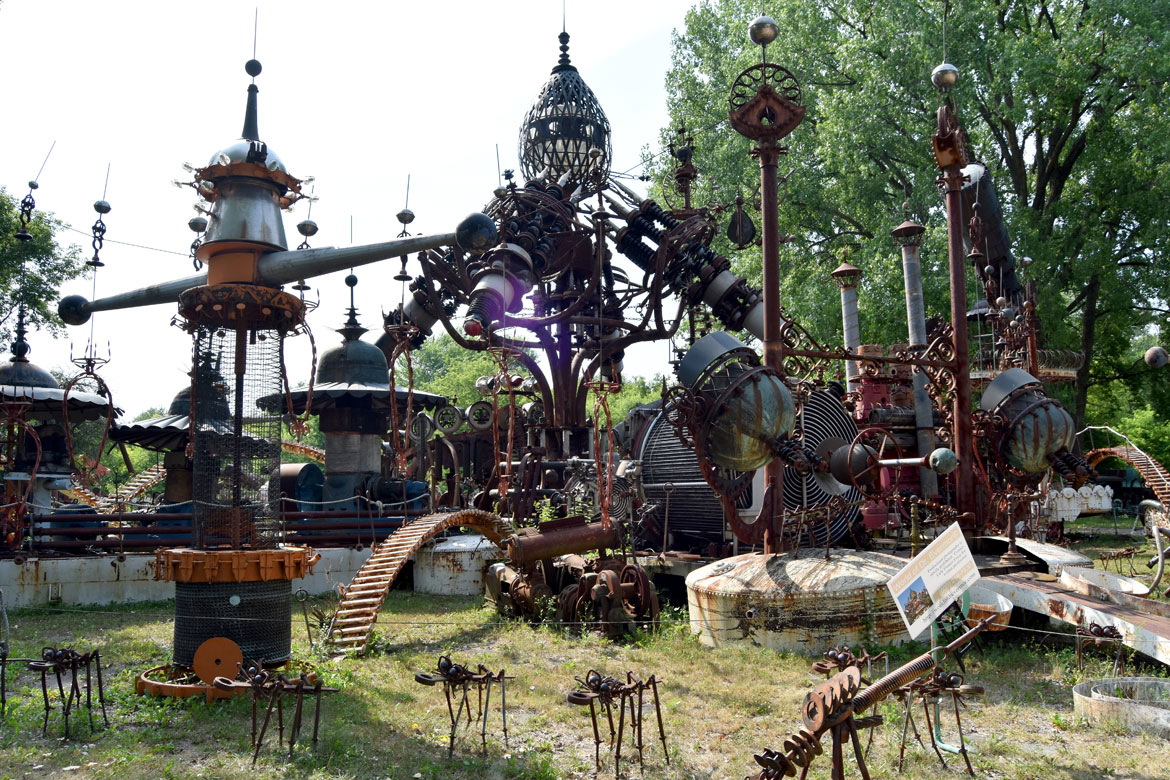
Mary Nohl’s home at Fox Point, Wisconsin. “Some people refer to me as a witch. I like that the best of all,” Nohl said in Andrea Lotscher’s documentary video “Mary Nohl: The Witch of Fox Point” from around 2000. She embraced it by embedding black pebbles in her doorstep to spell out the word “Boo.” But it wasn’t as simple as that. The rumors also stung. Nohl asserted in a 1996 interview that being called a witch was evidence of prejudice against “women who use tools.”
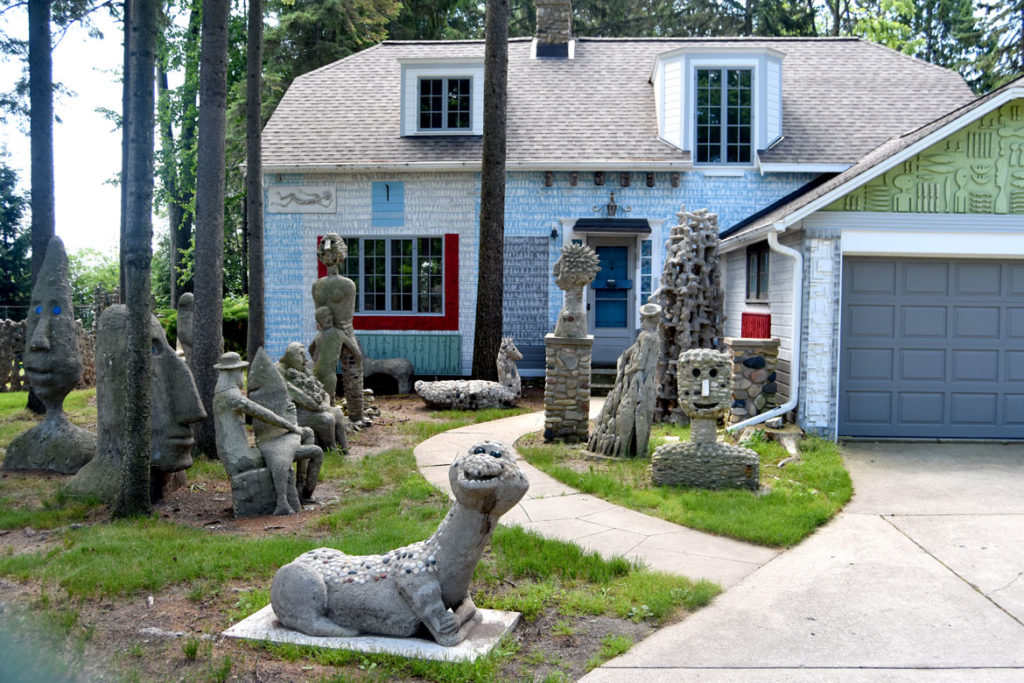
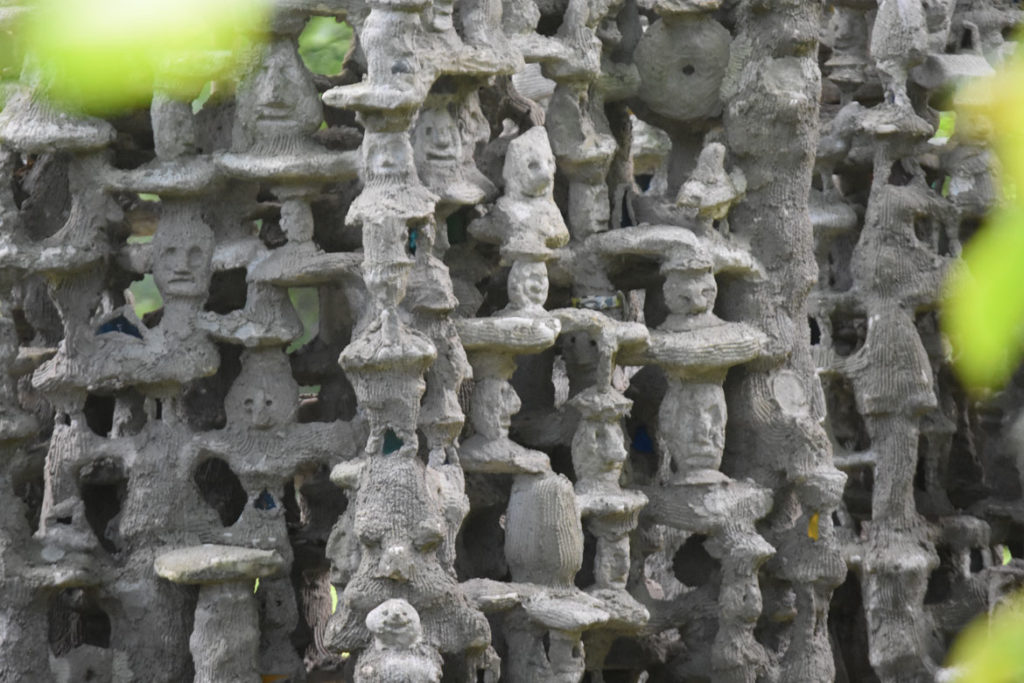
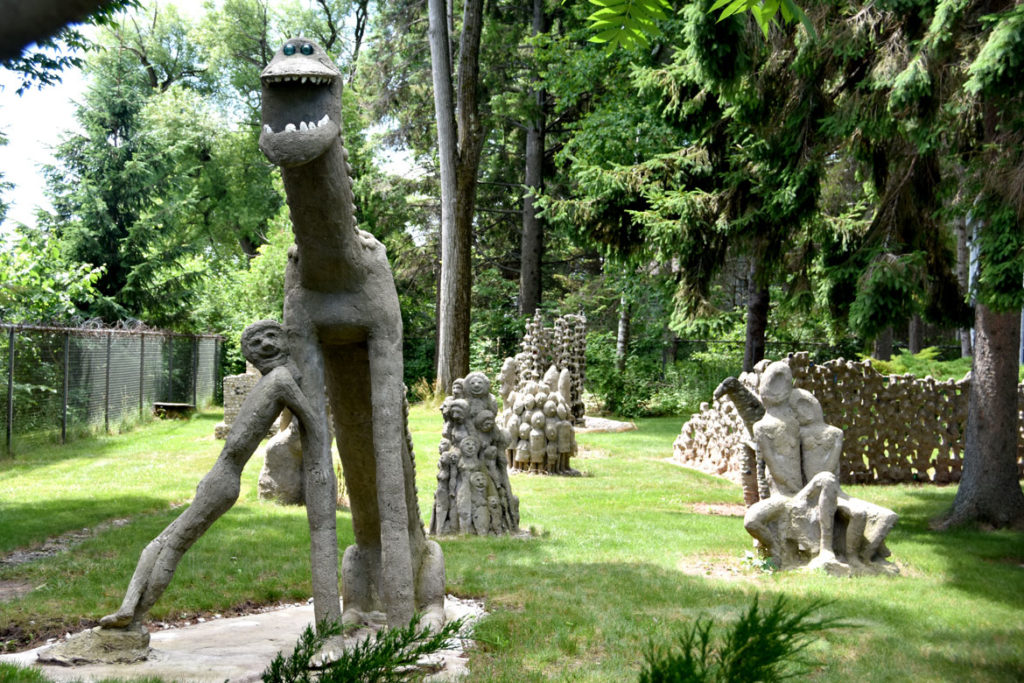
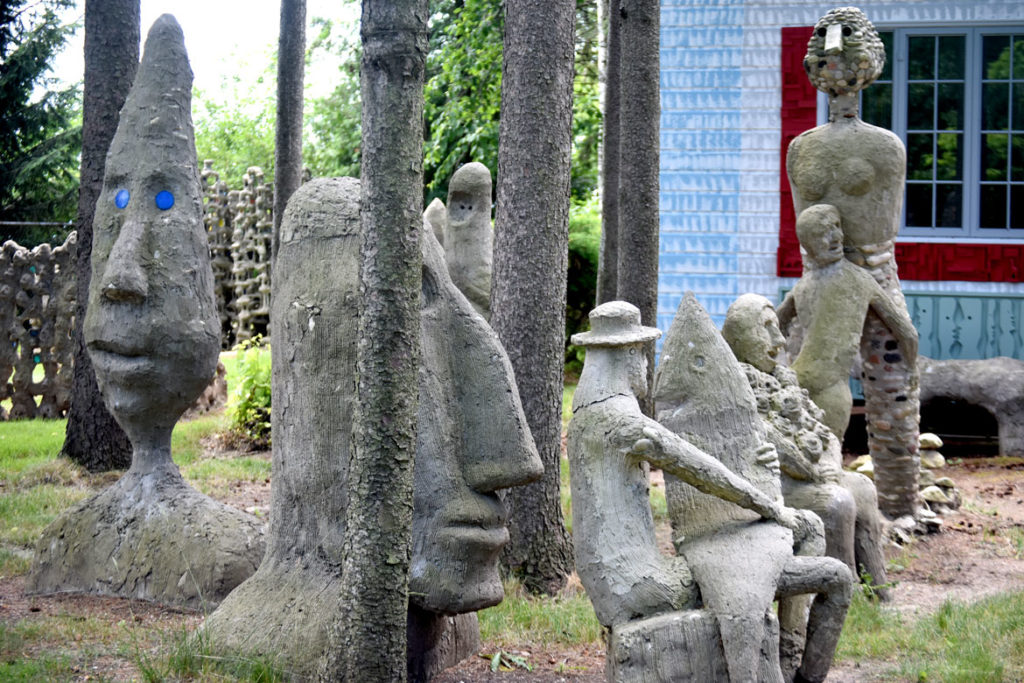
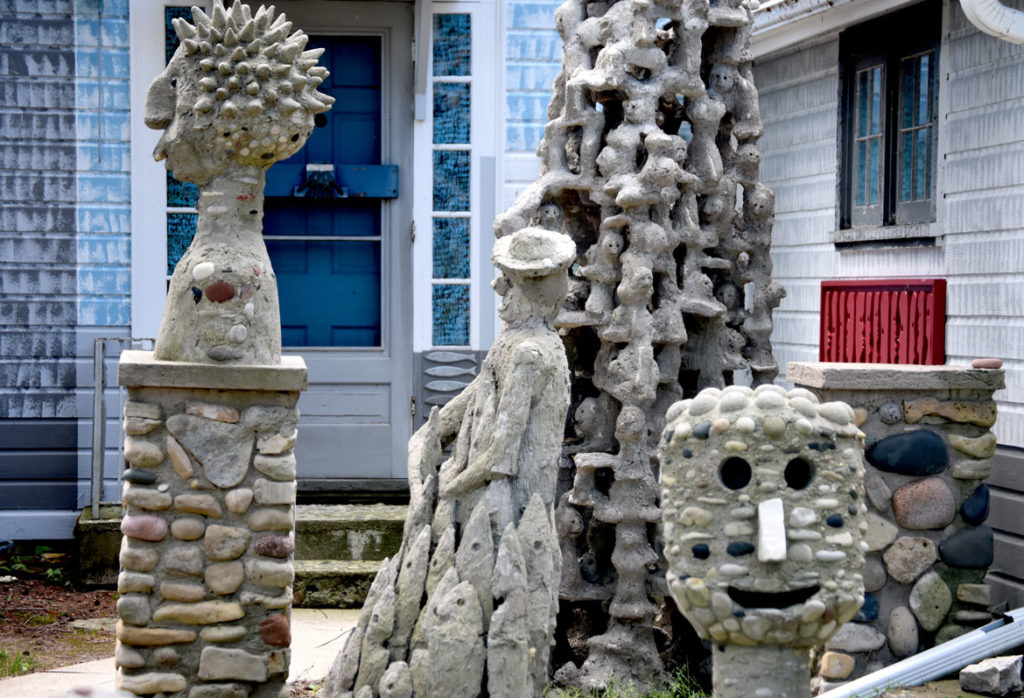
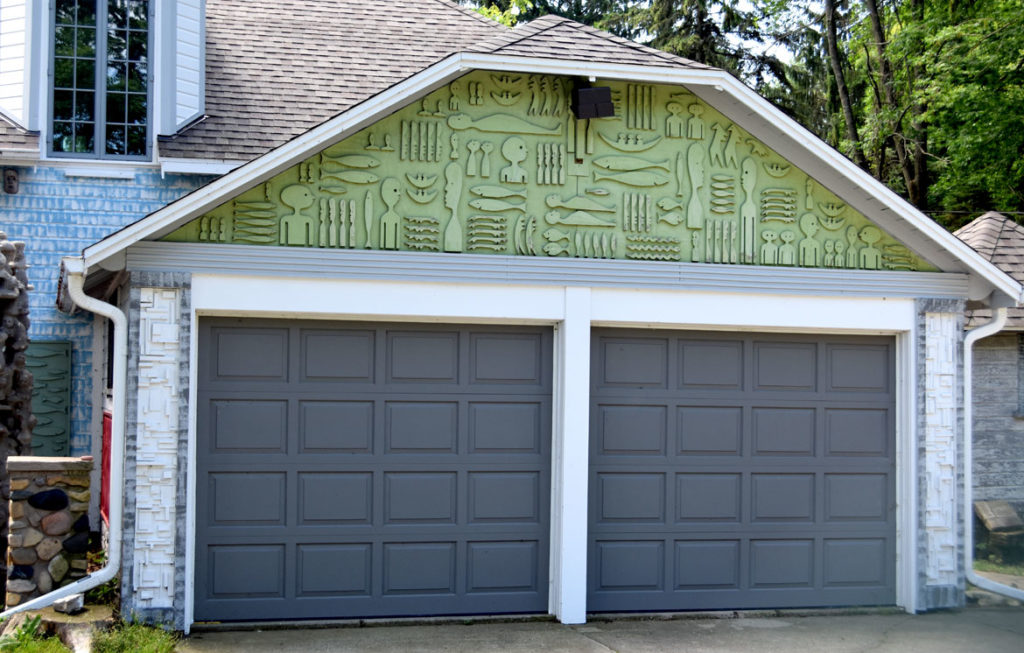
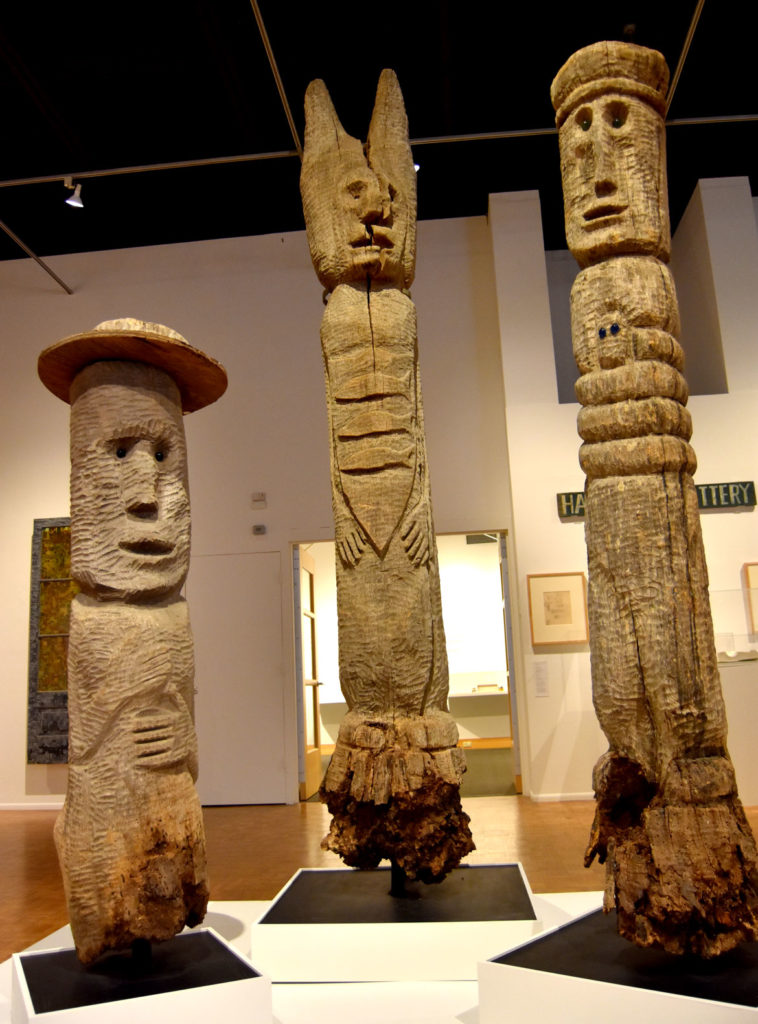
Carl Peterson sculptures at the Kohler Arts Center, Sheboygan, Wisconsin. The Swedish immigrant Carl Peterson filled his garden in St. James, Minnesota, with these sculptures during the first half of the 20th century.
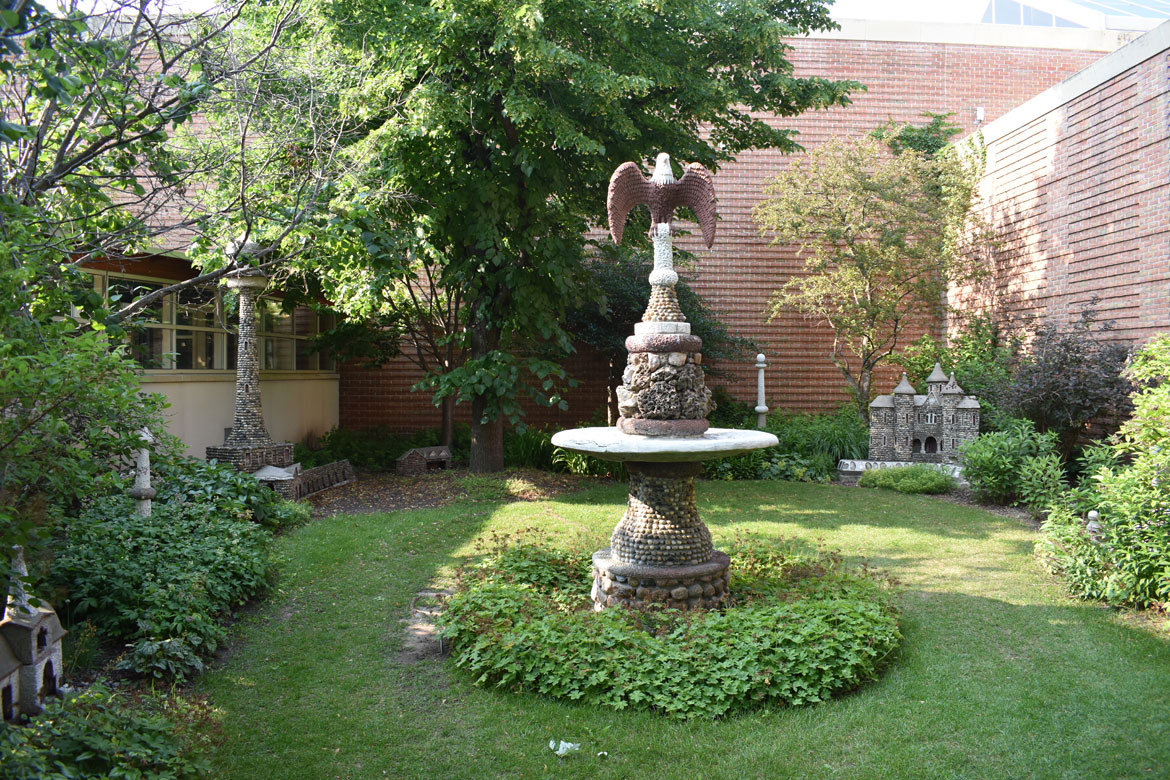
Herman Rusch’s Prairie Moon at Fountain City, Wisconsin.
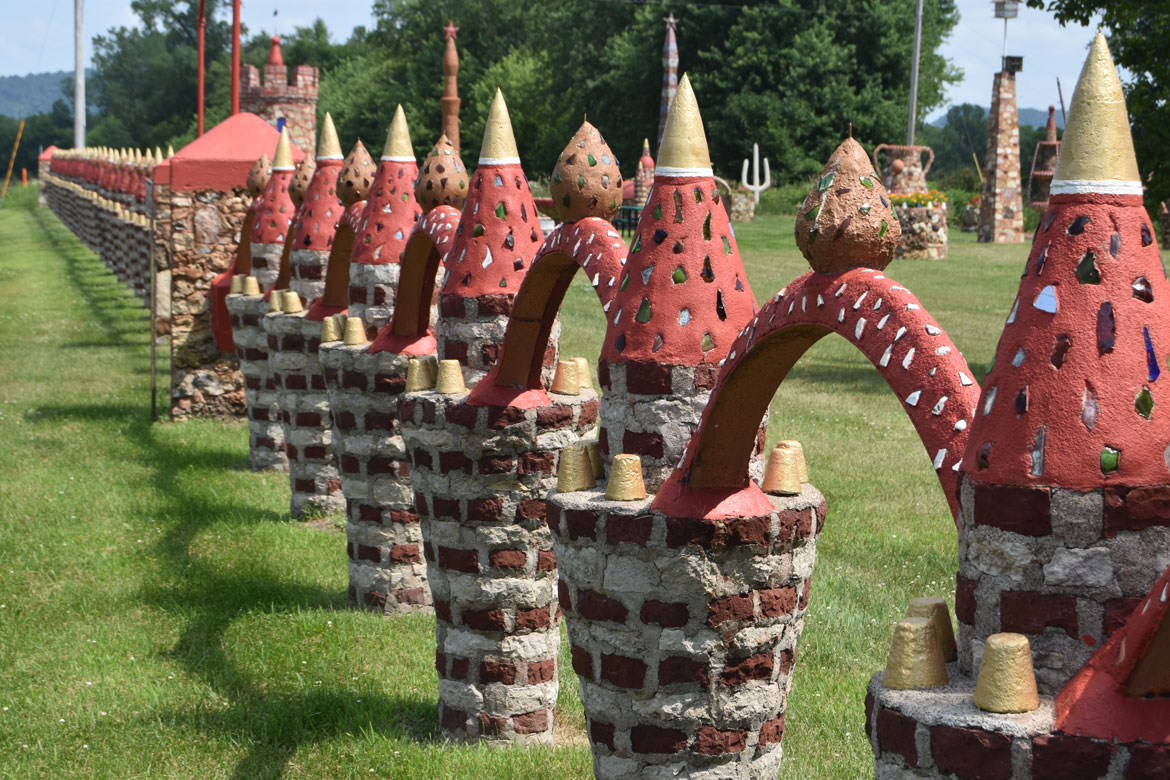
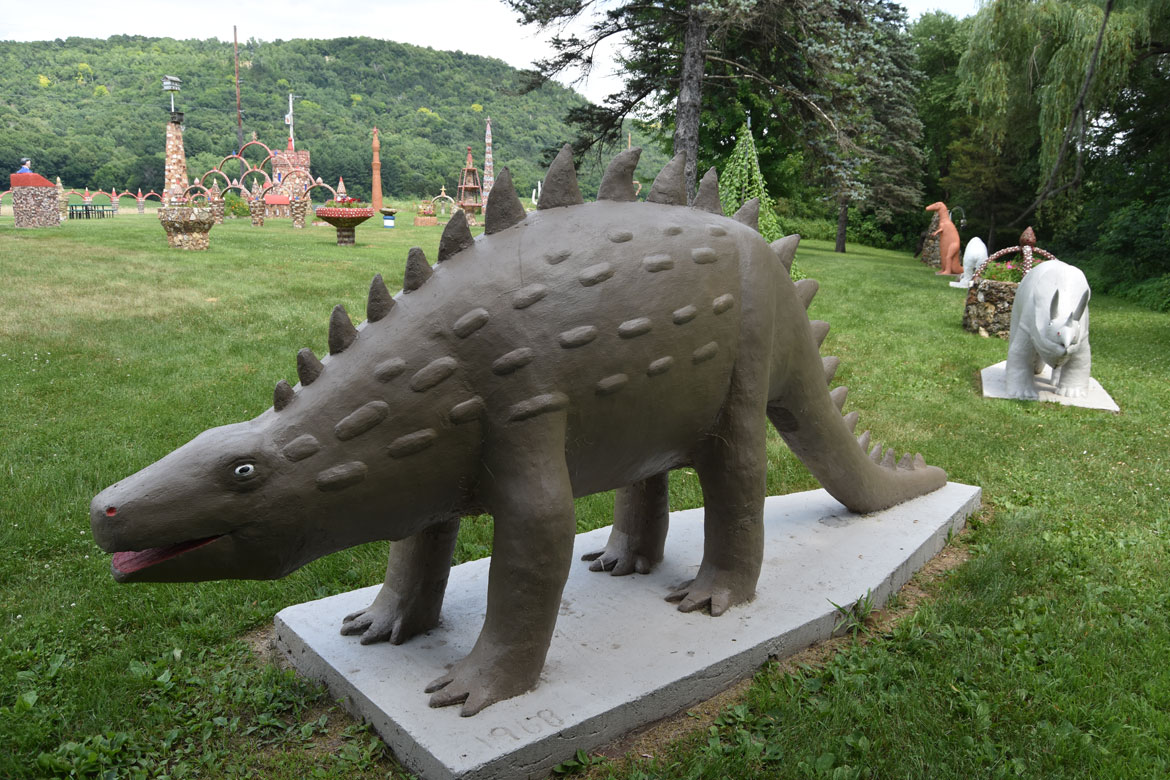
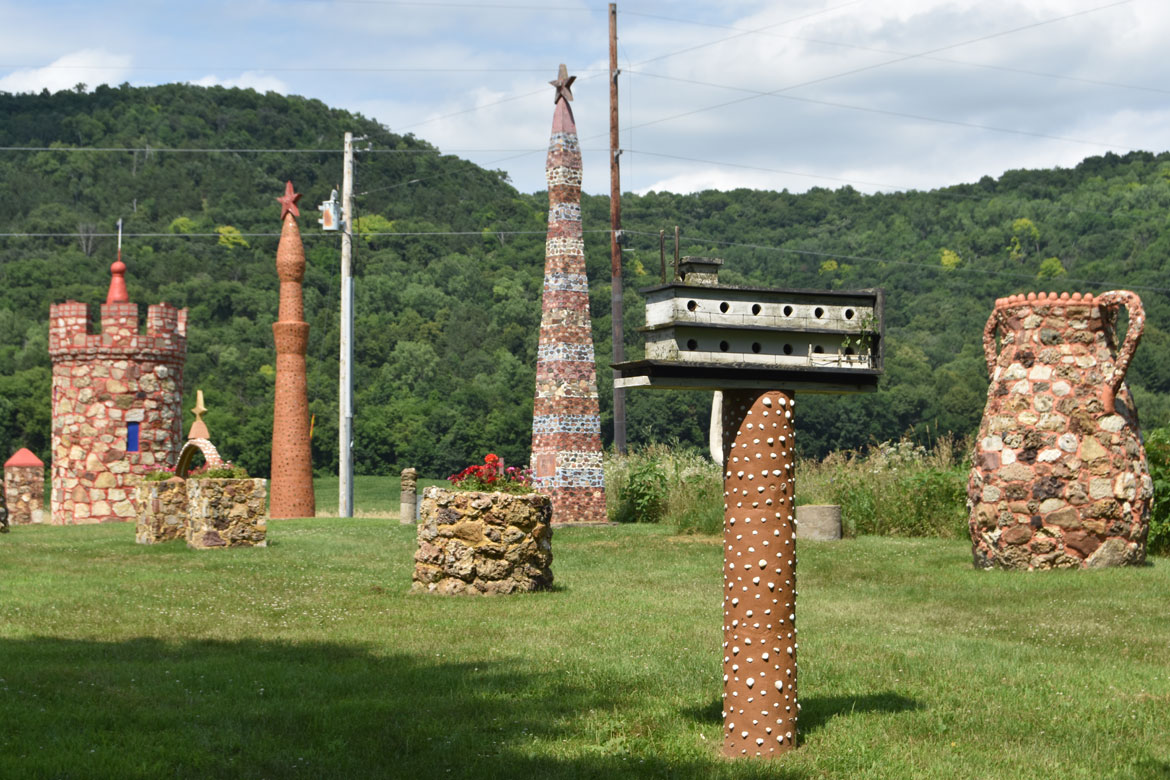
James Tellen’s woodland sculpture garden at Sheboygan, Wisconsin.
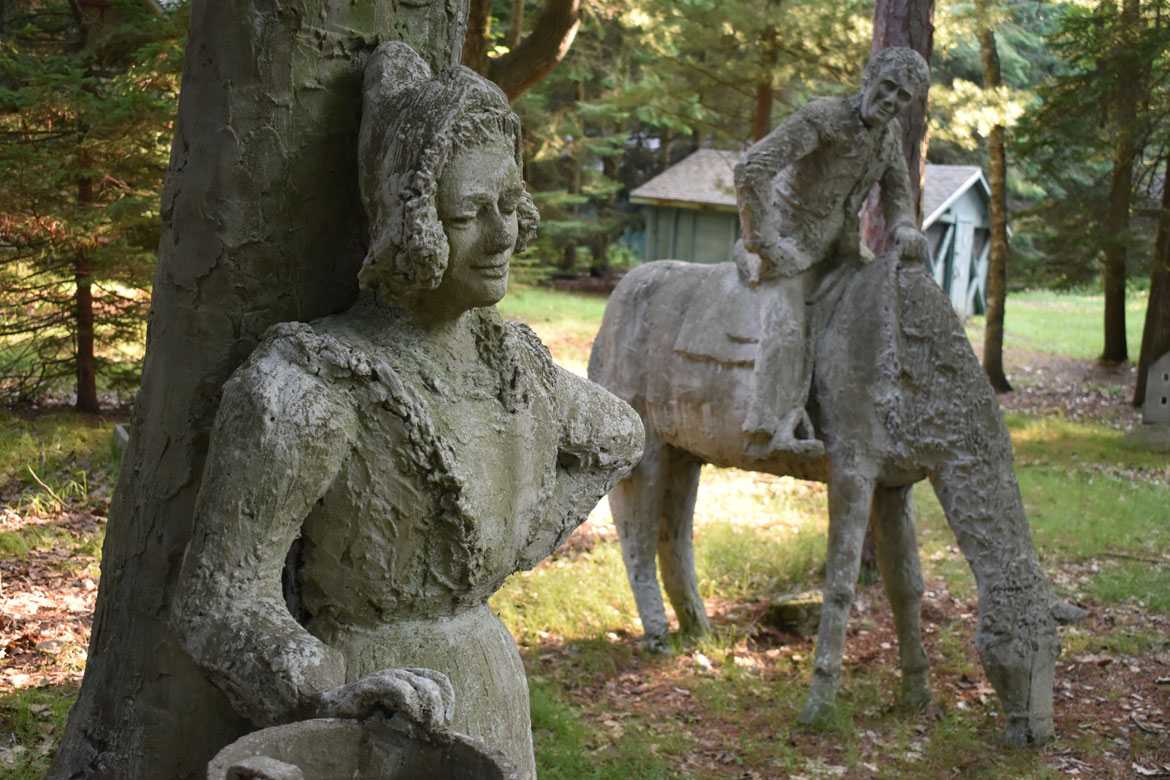
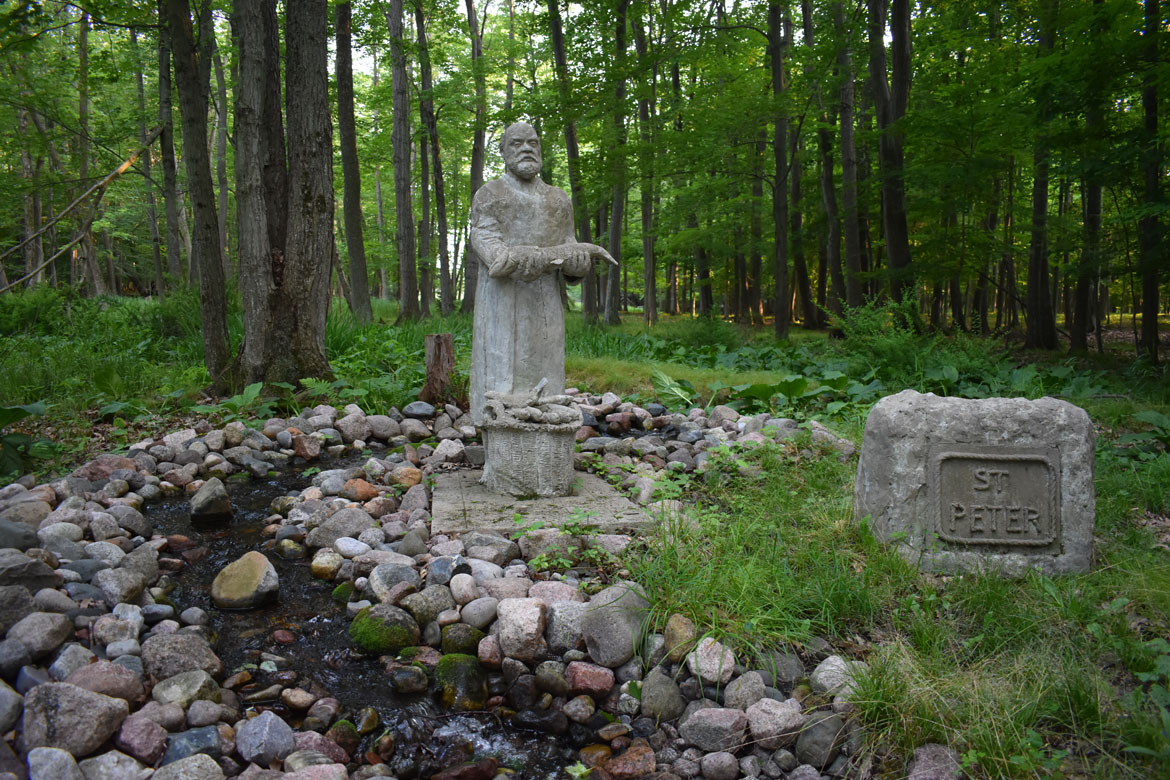
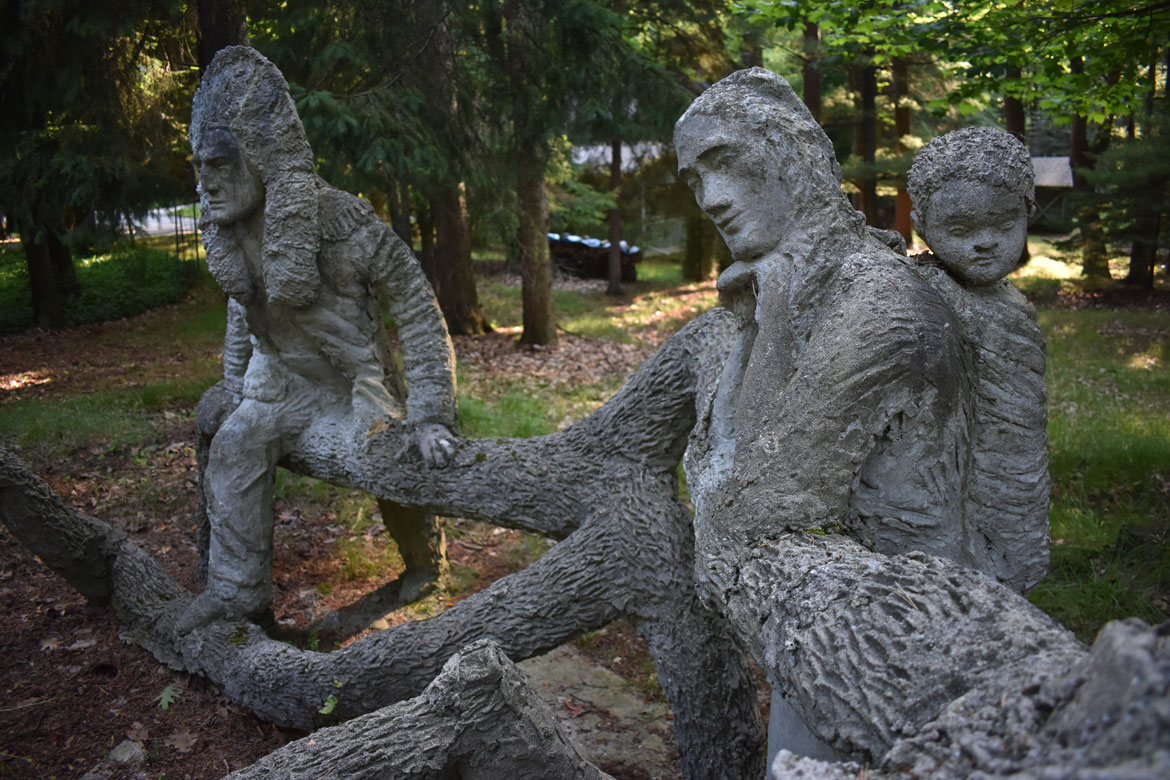
Wegner Grotto by Paul and Matilda Wegner at Sparta, Wisconsin.
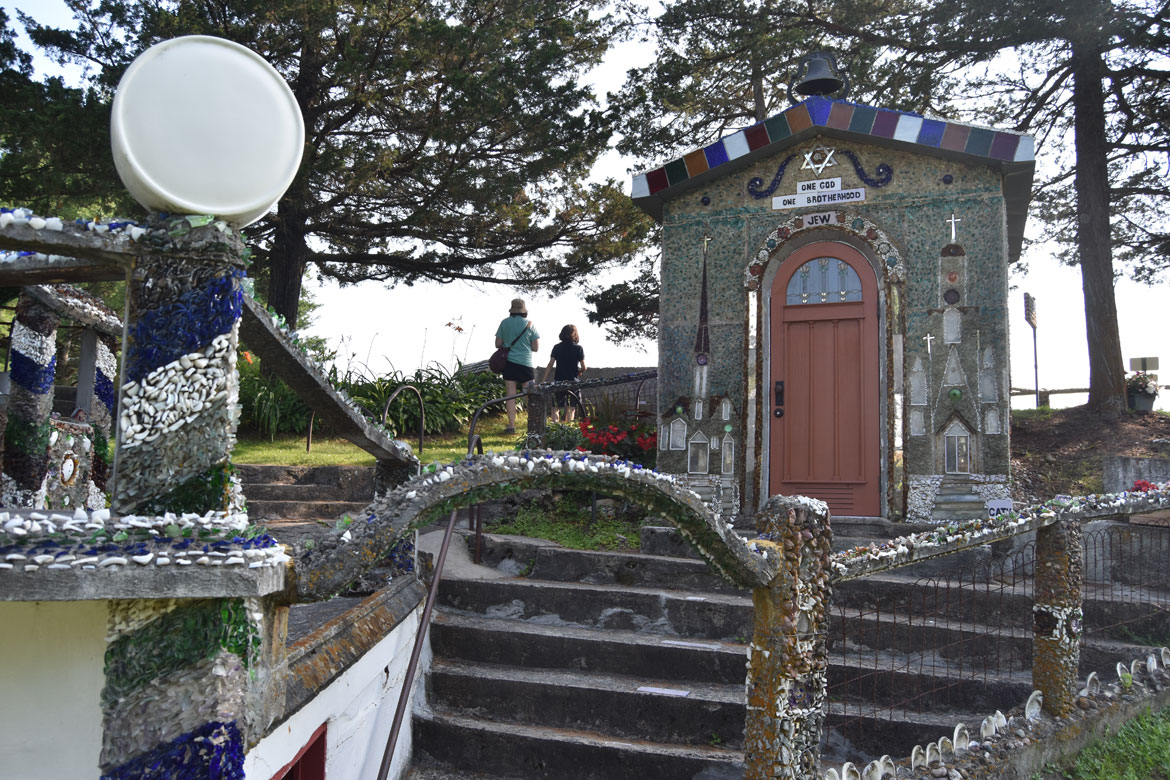
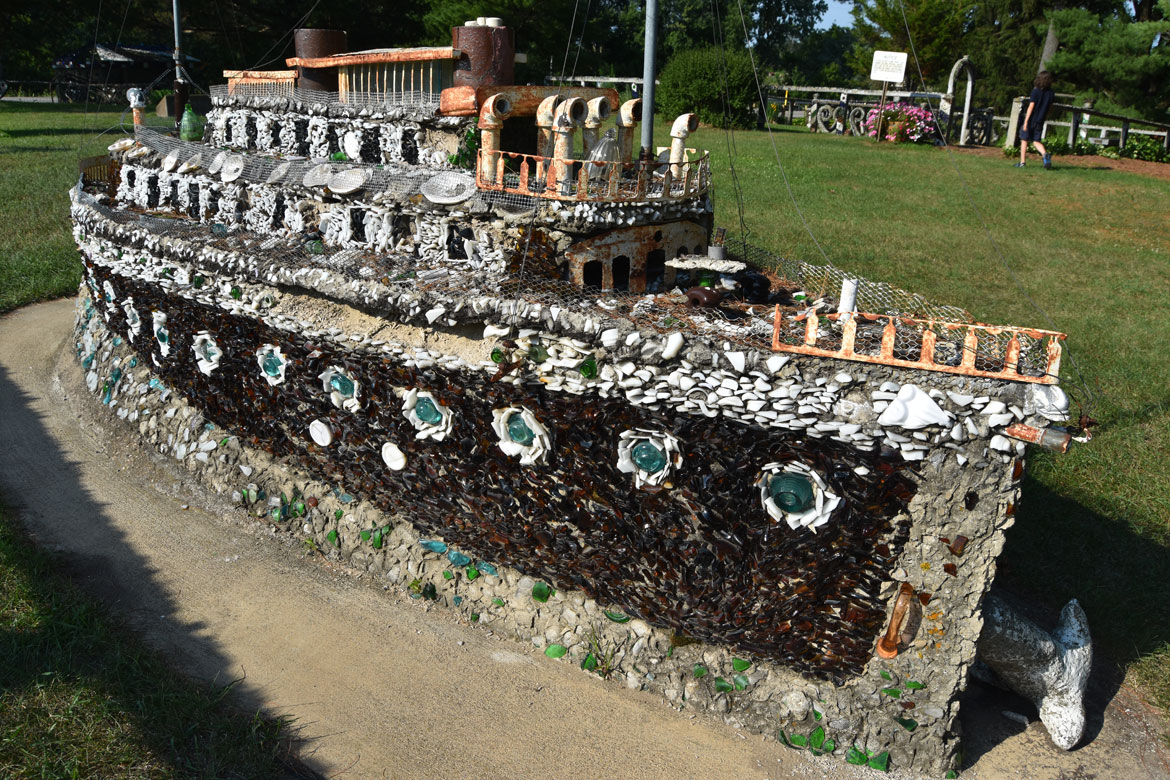
Father Mathias Wernerus’s Dickeyville Grotto at Dickeyville, Wisconsin.
